In My Korea

Basic Korean Phrases: 60 Useful Korean Phrases For Travel 2024
Want to travel to Korea but worried you won’t be able to get around, talk to people, or buy those souvenirs you want? Don’t worry. These 60 basic Korean phrases will help you make friends, grab bargains in the markets, and enjoy the tastiest Korean dishes with ease.
From simple greetings to shopping, eating out, travelling around, and even asking for help, these simple Korean phrases pack a lot of punch and are easy enough to learn before travelling to the Land of the Morning Calm. They’re easy to learn and go a long way.
Korean is a unique language with letters that look unfamiliar, but it’s actually easier to learn than English. A few basic Korean phrases and words go a long way. Now read on to start learning these easy Korean words and phrases and begin your journey to language success.
Table of Contents
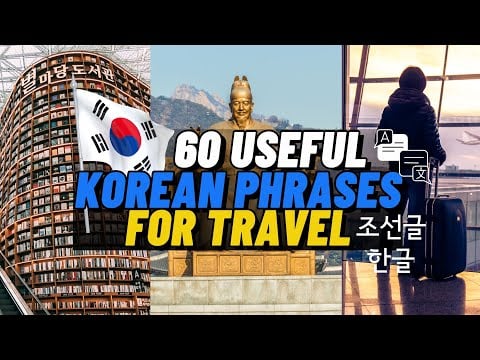
Affiliate Disclaimer : This site contains affiliate links and I may earn commission for purchases made after clicking these links.
Understanding These Basic Korean Phrases
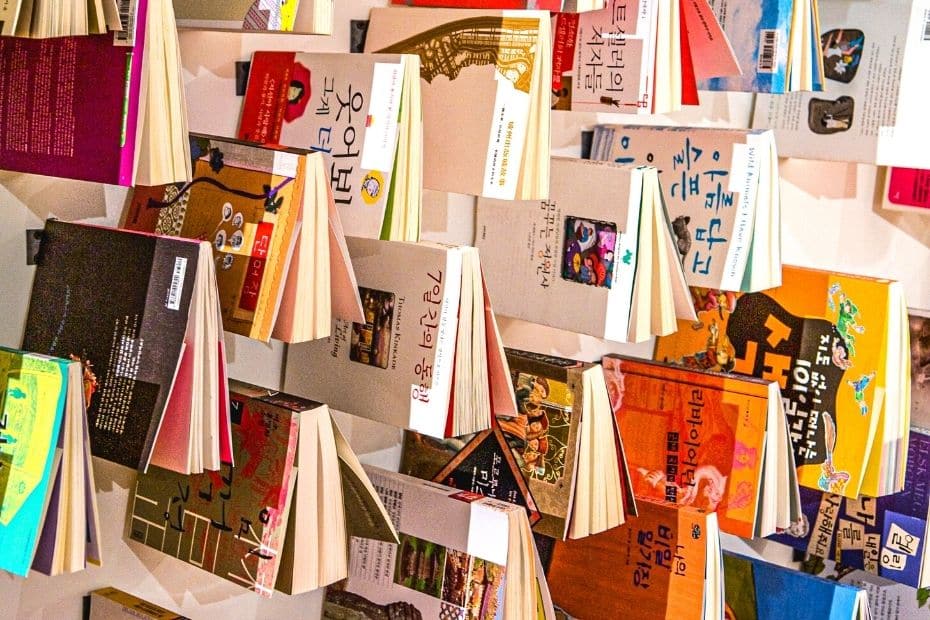
These basic Korean phrases for travellers have been split into 6 sections to cover the various places where you might need some Korean when travelling in Korea. There’s also a bonus section about Korean numbers.
Essential Phrases – basic phrases to talk to people and be polite.
Greetings – how to greet people, ask about others, and start chatting.
Ordering Food & Drink – how to order food, ask questions, and give thanks.
Getting Around – how to use public transportation and understand directions.
Shopping – how to check for prices, ask for discounts, and complete a sale.
Emergencies – how to ask for help in an emergency and to describe problems.
Korean numbers – how to say and understand Korean numbers.
Before covering these basic Korean phrases, I want to point out some key points about the phrases used here, how to use them, and how to speak Korean.
The Korean Writing System
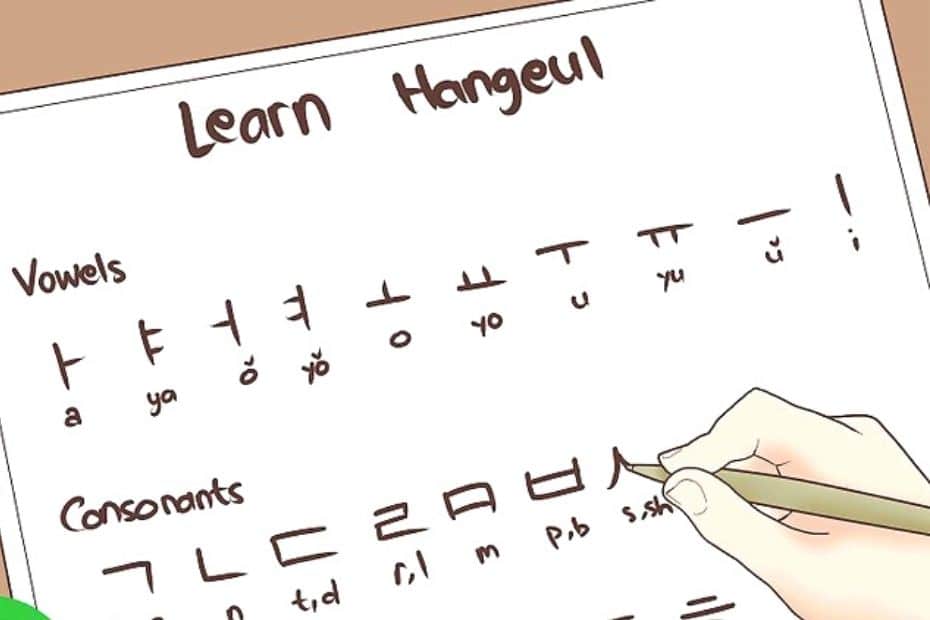
For those who have never studied Korean and are used to a latin script, like English, the Korean writing system ( hangul ) can seem very confusing. It’s actually one of the easiest to learn and you can pick it up with a few days of practice. I really recommend learning hangul , it’ll make your trip to Korea so much easier and let you read signs, menus, displays, and lots more.
Phrases With Blank Spaces
Some sentences have blank spaces so you can add what you want in that phrase. For example, ‘I’ll have a ____’. This is a useful phrase (covered in section 3) where you can add in whatever it is you want to buy, eat, or drink.
How To Pronounce These Basic Korean Phrases

To make it easier to learn these basic Korean phrases, I’ve included a pronunciation guide for each section.
Korean words are made up of groups of syllables, e.g. kim – chi (김-치) Therefore, the pronunciation guide is in syllable groups. If you pronounce the words as you would in English, you’ll be able to speak Korean, even if you don’t understand what the words mean.
To understand how to pronounce these Korean words more naturally, try to remember these pronunciation rules:
‘ eu ‘ is pronounced like ‘oo’ in ‘boot’ but without rounding your lips.
‘ ae ‘ is pronounced like ‘ay’ in ‘pay’.
‘ oo ‘ is pronounced like ‘oo’ in ‘zoo’.
‘ kk ‘, ‘ gg ‘, ‘ tt ‘ and other double consonants are pronounced more strongly than a single consonant.
‘ ah ‘, ‘ eh ‘, ‘ oh ‘, ‘ uh ‘ are pronounced softly (like a in apple, not a in ace)
Planning to visit Korea? These travel essentials will help you plan your trip, get the best deals, and save you time and money before and during your Korean adventure.
Visas & K-ETA: Some travellers to Korea need a Tourist Visa , but most can travel with a Korean Electronic Travel Authorisation (K-ETA). Currently 22 Countries don’t need either one.
How To Stay Connected : Pre-order a Korean Sim Card or a WiFi Router to collect on-arrival at Incheon Airport (desks open 24-hours). Alternatively, download a Korean eSIM for you travels.
Where To Stay : For Seoul, I recommend Myeongdong (convenient), Hongdae (cool culture) or Gangnam (shopping). For Busan, Haeundae (Beach) or Seomyeon (Downtown).
Incheon Airport To Seoul : Take the Airport Express (AREX) to Seoul Station or a Limo Bus across Seoul. Book an Incheon Airport Private Transfer and relax to or from the airport.
Korean Tour Operators : Tour companies that have a big presence in Korea include Klook , Trazy , Viator , and Get Your Guide . These sites offer discounted entry tickets for top attractions.
Seoul City Passes : Visit Seoul’s top attractions for free with a Discover Seoul Pass or Go City Seoul Pass . These passes are great for families and couples visiting Seoul – you can save lots.
How To Get Around : For public transport, grab a T-Money Card . Save money on Korea’s high speed trains with a Korea Rail Pass . To see more of Korea, there are many Rental Car Options .
Travel Money : Use money exchanges near Myeongdong and Hongdae subway stations for the best exchange rates. Order a Wise Card or WOWPASS to pay by card across Korea.
Flights To Korea : I use flight comparison sites such as Expedia and Skyscanner to find the best flights to Korea from any country. Air Asia is a good option for budget flights from Asia.
How To Learn Korean : The language course from 90 Day Korean or Korean Class 101 both have well-structured lessons and lots of useful resources to help you learn Korean.
Who Is This Guide For?

These basic Korean phrases are designed for people who don’t speak Korean. Many phrases are simplified, some particles are dropped where the meaning is obvious, and grammar is usually in the polite form.
When we use English, we can use many phrases for the same thing. For example, ‘Give me a pizza‘, or ‘I’ll have a pizza‘, or just ‘Pizza, please‘. The meaning is the same, but the way we say them differs.
The same applies with Korean. I’ve used basic Korean phrases for the various topics covered here. This is not only to help you learn them more easily, but also so that Koreans can understand you.
If you’re interested in learning how to speak Korean and want an excellent course that will start you on your journey, I highly recommend 90 Day Korean. You can learn more about their Korean language learning courses with the link below.
Now let’s look at the first 10 basic Korean phrases, covering the essentials.
1: Essential Korean Phrases

If you’re only going to remember one set of basic Korean phrases, it should probably be this one. These are the most basic Korean words and phrases and if you can master these, you’ll be one step closer to travelling more easily.
These will help you be polite and show the locals that you’re willing to learn a little bit of language when you visit their country. This can open the door to conversations and more. Plus, it’s always nice to be polite when you travel.
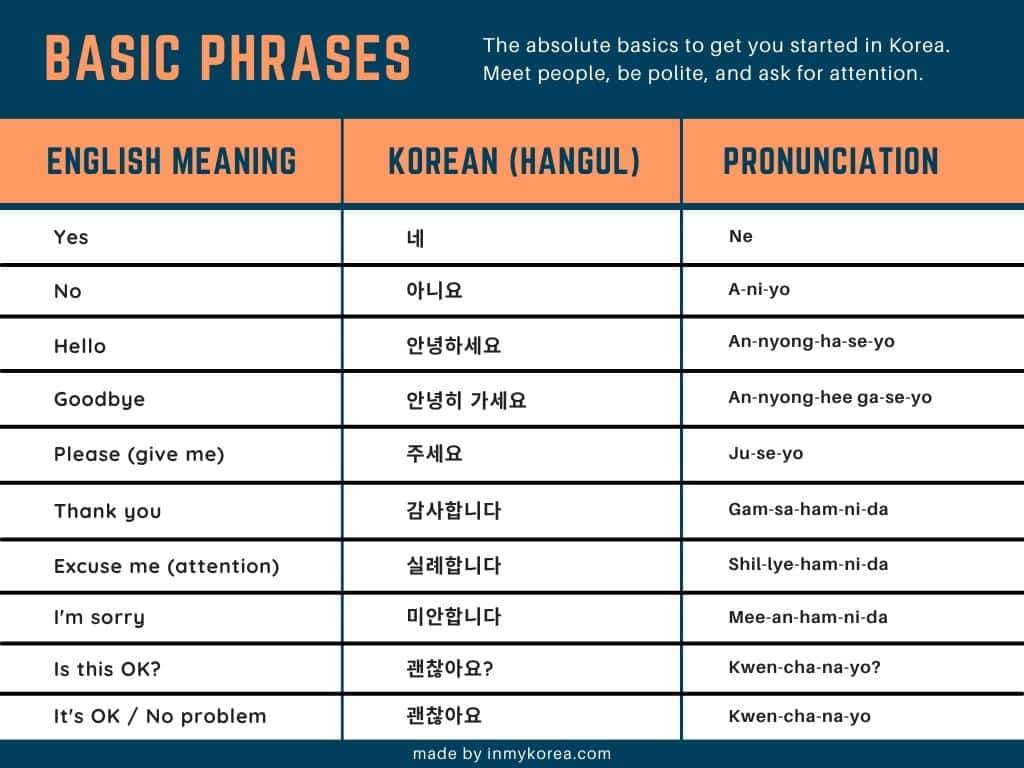
Understanding These Essential Basic Korean Phrases
In this section I’ll explain some of the Korean words from this list that will help expand your vocabulary.
주세요 (ju-se-yo) – Please
This is a very flexible word and can be used in many situations. It directly translates to ‘ please give me ‘. Add any word in front of it (e.g. pizza) and you can ask for something you want to buy, receive, or learn about.
안녕 (an-nyong) – Hello & Goodbye
This is the short (informal) version of both 안녕하세요 (hello) and 안녕히 가세요 (goodbye) and can be used in both situations. 2 for the price of 1!
괜찮아요 (kwen-cha-na-yo) – OK
This is my favourite Korean word, one which I use many times each day. It’s very flexible and you can use it when you want to say you’re OK, refuse something, or tell someone that, yes, you do know how to use chopsticks.
Do you want a receipt? 괜찮아요 (no, thanks).
Can I sit here? 괜찮아요 (yes, you may).
Are you sure you can eat spicy food? 괜찮아요! (sure I can!).
2: Korean Phrases For Greeting People
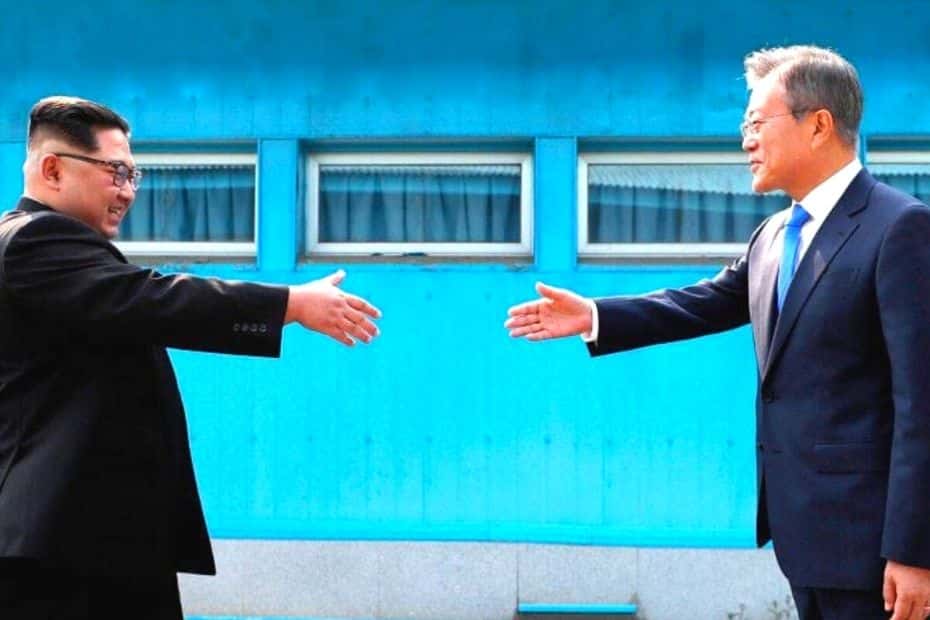
Now that you know how to be polite, why not learn a few words to introduce yourself and start a simple conversation?
These basic Korean phrases for greeting people will help you stand out when meeting people for the first time. After all, a nice greeting can go a long way to breaking down cultural barriers and getting to know more about Korean people when you visit Korea.
If in doubt, you can greet people with a simple ‘hello’ ( an-nyong-ha-se-yo ) from the previous list. I usually use this when I meet a stranger or get in a bus or taxi.
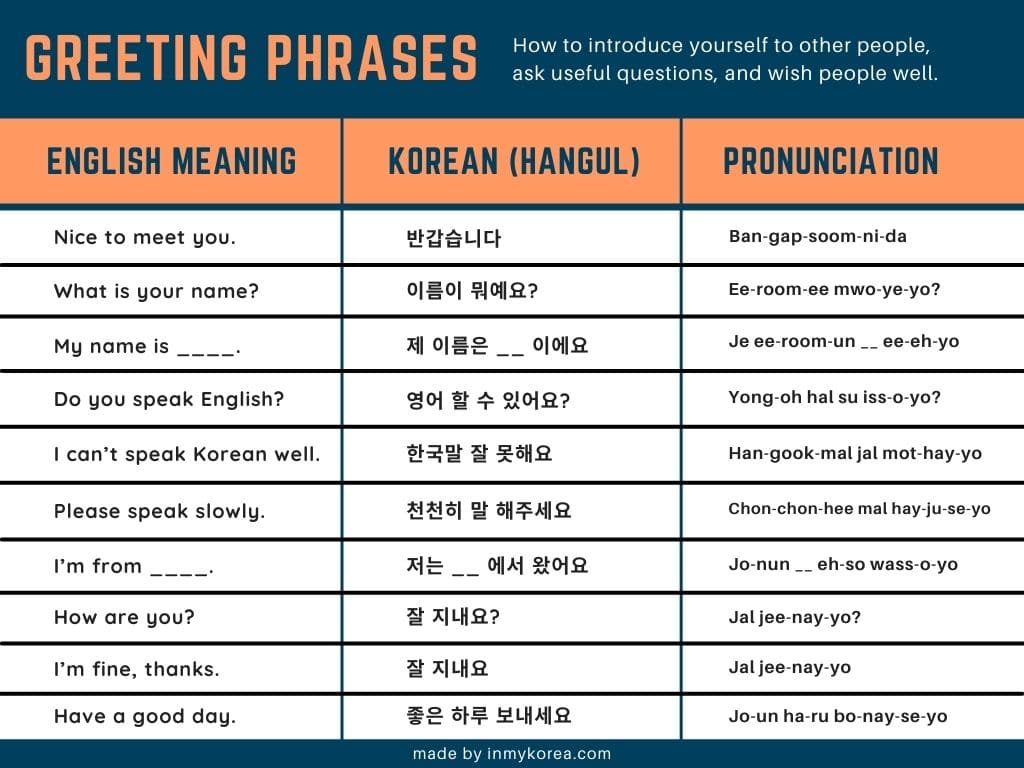
Understanding These Greeting Phrases
영어 (yong-oh) – english language.
This is the word for the English language (Korean is han-gook-oh – 한국어). Even if you can’t remember the complete phrase to ask if someone speaks English, you should be able to convey that you want to speak in English with just ‘ yong-oh ‘.
You might be surprised at how many people can speak English in Korea and once you’ve asked them, they will often open up and start talking more. If you’re lucky, that’ll be in English, too.
뭐예요? (mwo-ye-yo?) – What is this?
This is a really useful basic Korean phrase that can be used to ask what something is. If you want to know the name of something, simply point and say 뭐예요? – the other person should understand that you don’t know what it is.
천천히 (chon-chon-hee) – Slowly
This word is perfect for when you want someone to slow down, such as when someone is talking too fast or your taxi driver is driving too fast.
Another useful basic Korean phrase to remember in these situations is palli-palli (빨리빨리), which means ‘hurry up’. Korea has been described as a palli-palli culture – always busy!
3: Korean Phrases For Dining Out
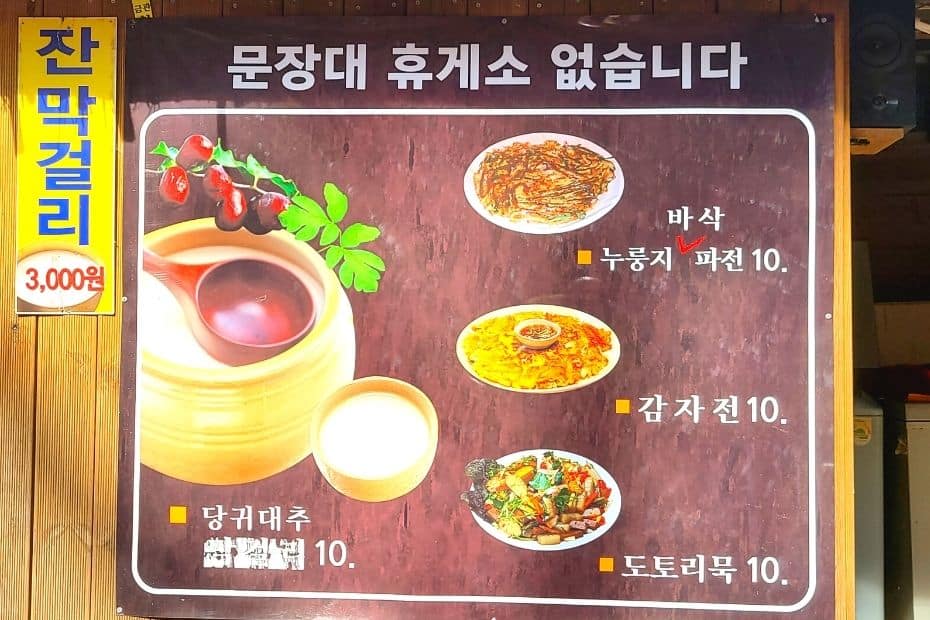
You can’t travel to another country and not try the Delicious Korean Dishes ! Korea has a wide range of culinary treats just waiting for you.
Fortunately, many restaurants have picture menus, like the one above. They often have English translations, too, which can really help.
If in doubt, point to something and say ‘ ju-se-yo ‘ (please). This simple Korean phrase will help you get what you want most of the time.
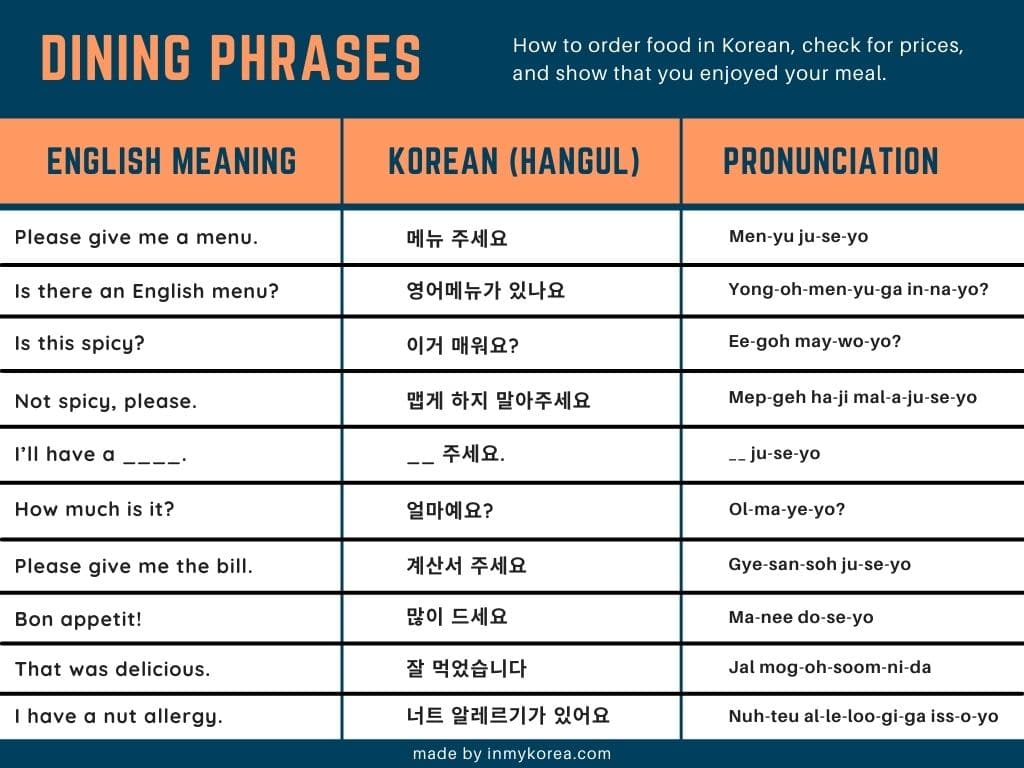
Understanding These Phrases For Dining Out
매워요 (may-wo-yo) – spicy.
This is a Korean word you’ll definitely want to learn if you love spicy food (or can’t stomach it). When a Korean dish is red, it’s more than likely going to be spicy. If you want a spicy dish, you can point at a dish and ask mae-wo-yo? (is this spicy?).
알레르기가 있어요 (al-le-loo-gi-ga iss-o-yo) – I have an allergy
If you need to say you ‘have an allergy to something’, then say the thing you’re allergic to, followed by this phrase. For travellers with special dietary needs, it would be a good idea to find the word of the food you’re allergic to before travelling.
Want More Dining Out Phrases?
For more basic Korean phrases about eating out and ordering food, including more about health and dietary requirements in Korean, check out this article with 60 more Korean phrases for eating out .
4: Korean Phrases For Transportation

Travelling in Korea is a lot easier than you might think. Many signs at airports, train stations, subways, and on buses, are in English. They’re sometimes in Chinese and Japanese, too.
Korea is a very modern country when it comes to transport and there are a lot of different transport options, including high speed trains (KTX), subways, and buses.
These phrases will help you avoid getting lost and help you find your way around. Remember, if you get really stuck, you can always use gestures.
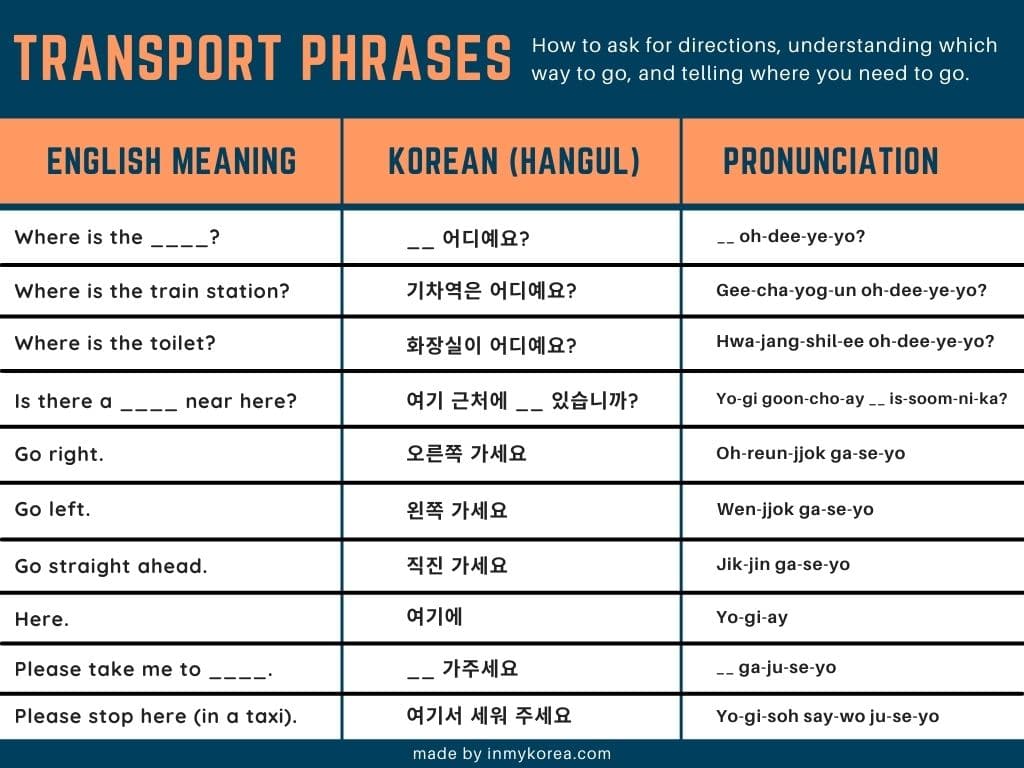
Understanding These Korean Phrases For Transportation
어디예요 (oh-dee-ye-yo) – where is.
This basic Korean phrase is very helpful not only for transportation, but also shopping and when you need to find a toilet in Korea .
Want to go to Gyeongbokgung Palace? Point to a picture of it and ask ‘ oh-dee-ye-yo? ‘. These other Korean phrases will help you understand the directions, too.
가주세요 (ga-ju-se-yo) – Please go (somewhere).
This phrase is used to ask someone to ‘take you somewhere’. As mentioned, ‘ ju-se-yo ‘ means ‘please’. The ‘ ga ’ part of this phrase is from ‘ ga-da ‘, the verb for ‘to go’.
You can use ga-ju-se-yo whenever you want to go somewhere. Usually in a taxi. Jump in, tell the driver ‘ Seoul-yog (Seoul Station) ga-ju-se-yo ‘ and they’ll take you straight there.
Save Money On Transportation
When you travel in Korea, don’t forget to pick up a T-Money Card . This transportation card makes travelling around Korea a real breeze and you can also use it to pay for things in shops and restaurants. Why not practice using these Korean phrases when ordering a taxi from Kakao Taxi in Korea .
5: Korean Phrases For Shopping
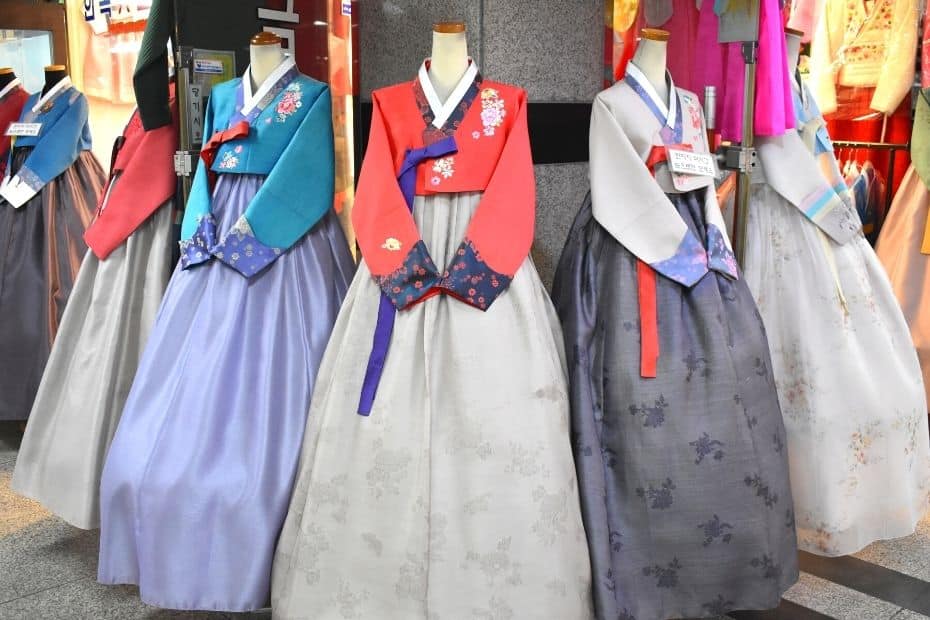
Shopping in Korea will be a lot easier with these basic Korean phrases, whether you’re in a department store or trying to buy some delicious Korean street food.
Learning to give your opinion about how cheap or expensive something is shows the shop owner you know a good price and can get you a big discount.
The traditional markets in Korea are great places to get some bargains on local and international brands. You’ll also find some of the best food available here and a window into traditional Korean culture.

Understanding These Korean Phrases For Shopping
얼마예요 (ol-ma-ye-yo) – how much.
This is a basic Korean phrases you can use for so much – ordering food, shopping, asking for taxi fees, and more. Want to haggle for a new bag in the market? O l-ma-ye-yo ? Want to know the cost of a train to Busan? Ol-ma-ye-yo ?
싸요! (ssa-yo!) & 비싸요! (bi-ssa-yo!) – That’s cheap! & That’s Expensive!
You can use these Korean phrases in the traditional markets when you want to haggle. After asking how much something is (and hearing it’s too much), reply with ‘ bi-ssa-yo !’ and start to walk away. The vendor, no doubt impressed by your Korean skills, will start to haggle, and lower the price (if you’re lucky).
6: Korean Phrases For Emergencies
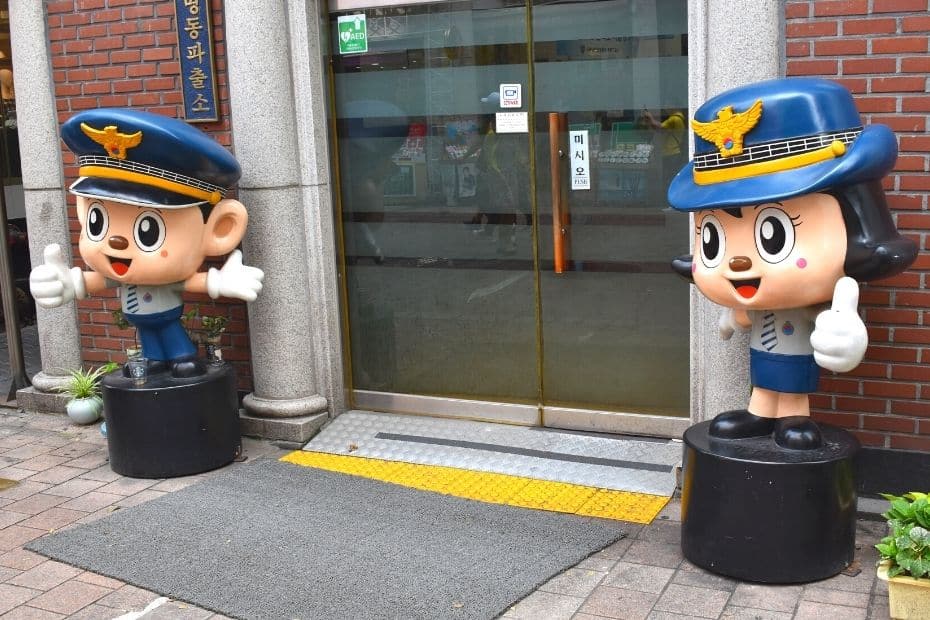
Crime rates in Korea are very low, but you can never be too careful. Hopefully you will never need to use these emergency Korean phrases, but they are here for you just in case.
If you need to get some medicine, then visit one of the many pharmacies located throughout any city. You can’t miss them, they have a big green + sign outside.
There are separate numbers for emergency services in Korea.
Dial 112 for the police
Dial 119 for fire & medical services
Dial 1339 for COVID-19 support
Dial 1330 for tourist support
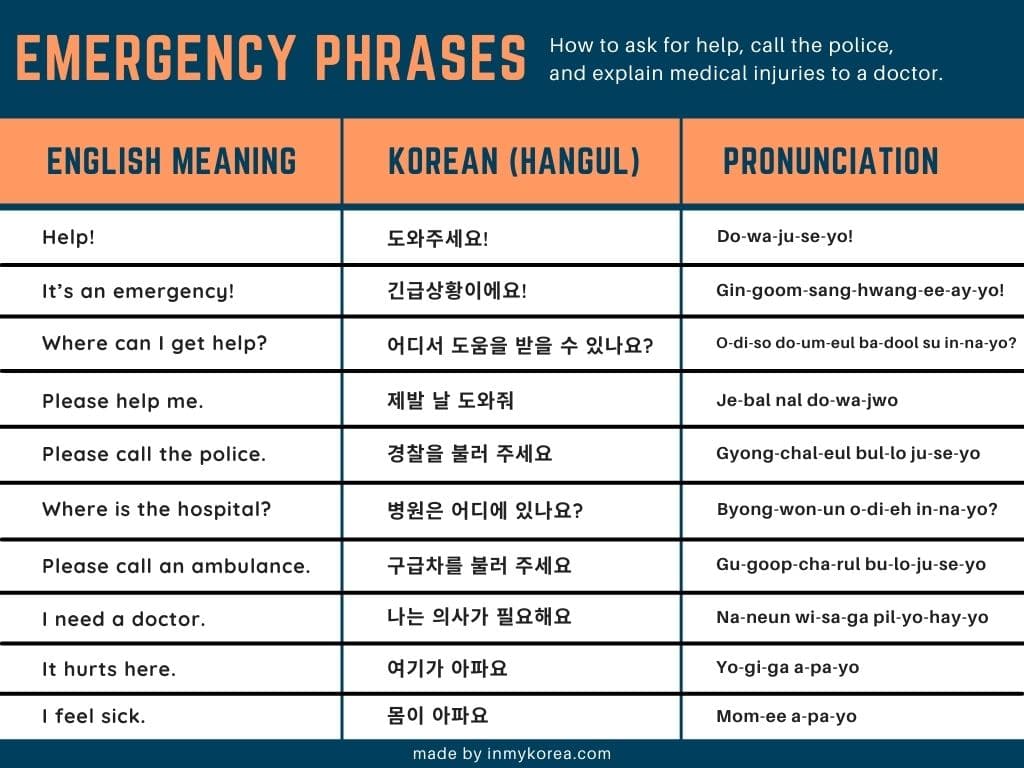
Understanding These Korean Phrases For Emergencies
도와주세요 (do-wa-ju-se-yo) – please help me.
This basic Korean phrase isn’t just for emergencies. If you have heavy luggage and you want to ask for help carrying it down the stairs, you can say ‘ do-wa-ju-se-yo ‘ (in a calm voice). A kind Korean person will surely help out.
의사 (wi-sa) – Doctor
If you need to speak to a doctor, you can use this word to ask for help. Doctors can often speak English, at least for discussing medical problems.
약국 (yak-gook) – Pharmacy
As mention, you can find a pharmacy by looking for a big green cross sign. You’ll also see the word ‘ 약 ‘ on the sign. Look for these if you need medicine.
7: How To Say Korean Numbers
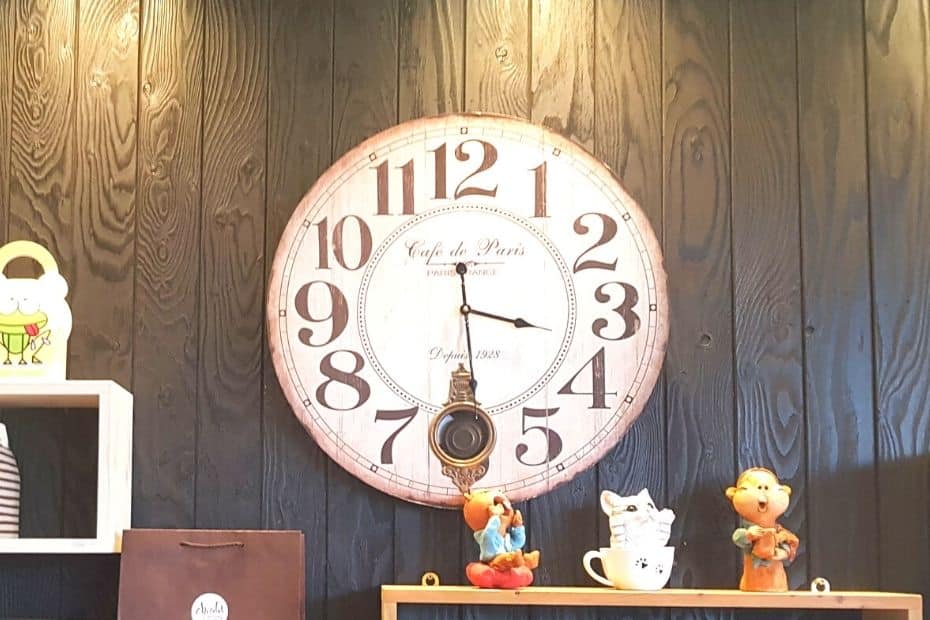
There are two ways to say numbers in Korean, known as the Korean system and the Chinese system. The Korean system only goes up to 99. The Chinese system is generally used more, which is why I’ll tell you about those numbers.
Whichever system you use, Koreans will be able to understand you as they mean the same thing, they might just grumble you’re using the wrong system.
Find out about how the Korean numbering system works in this article.
You can see how to say and read the Korean numbers from 1 to 10,000 in the table below.
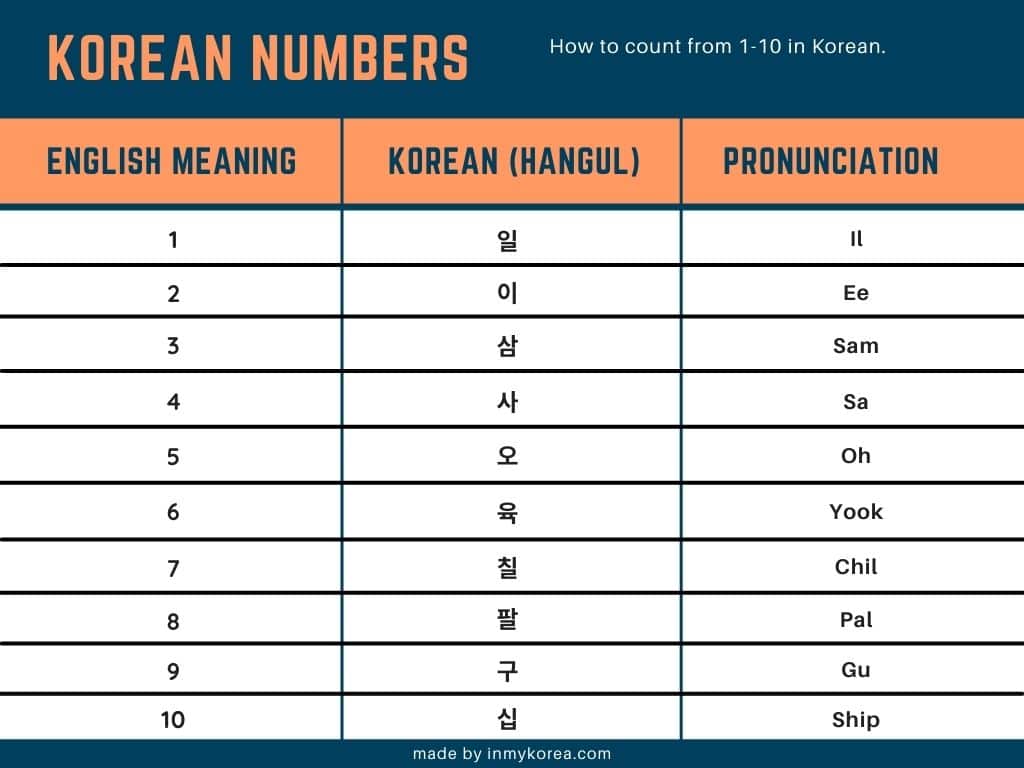
Learning Korean At Home
I hope you’ve found these basic Korean phrases useful and can use them to explore Korea and interact with the locals a bit more easily.
Learning a foreign language can be a massive undertaking, one that you need to devote a lot of time and effort to be successful at. But it can also be very rewarding, make you smarter, and help you travel more easily.
If you’re interested in learning how to speak Korean, then I’d personally recommend the inner circle course with 90 Day Korean – it’s the course I have been using to learn Korean.
Of course, there is more than one way to learn a language. I practice Korean in a variety of ways. Here are some of the best apps and courses for learning Korean.
- Korean Class 101
- Talk To Me In Korean
Papago and Google Translate are translation apps that will translate words into Korean and also show you how to say them. I prefer Papago as it is more accurate and wrote an article about how to use Papago to show you how to get the most out of this essential translation app.
One final Korean word for you to learn – ‘ hwaiting ‘ 화이팅, which is Korean for ‘fighting’ – or ‘you can do it’! Fighting!
Do You Need To Learn Korean?
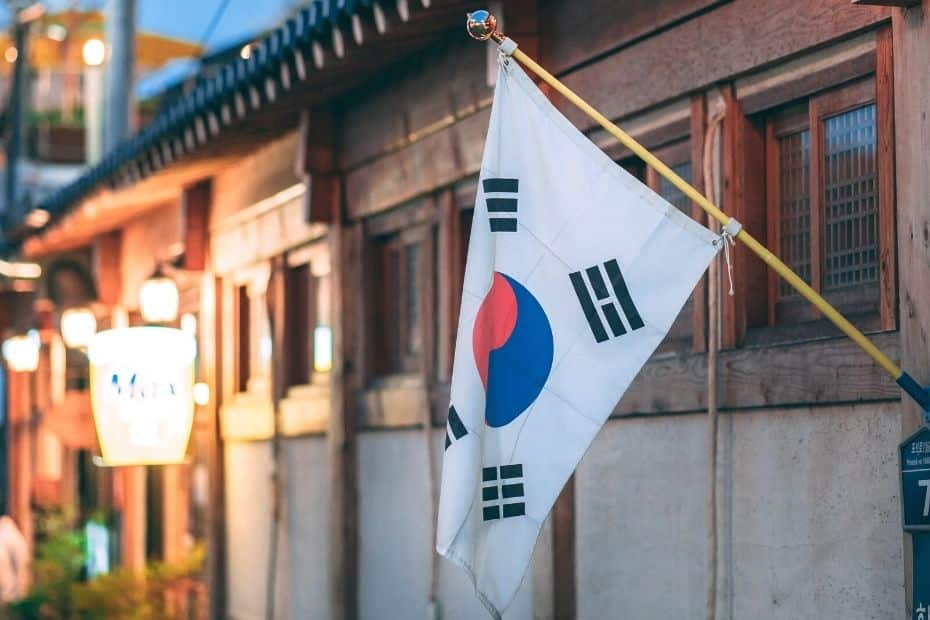
No. You don’t have to learn Korean, but it will definitely help you. Even expats like myself who have lived here for a long time don’t necessarily have to learn Korean to enjoy being in Korea. If you want to know more about whether or not you need Korean to survive living in Korea, check out my article about whether you need to learn Korean to live in Korea .
Learn More About Korea
Understanding a language is a lot more than learning a few basic Korean phrases. You also need to understand some of the cultural and societal reasons that people speak and behave in the way they do.
Here are some of my best articles about Korean culture that will give you interesting insights into Korean society, people, and help you prepare to visit the Land of the Morning Calm.
Are you interested in understanding Korean etiquette ? It’s really helpful to know more about how and why people behave the way they do in Korea. Impress your friends at home or in Korea with these South Korean culture facts . You might be shocked at some of these interesting facts.
If you’re worried about planning a trip to Korea, check out my pre-travel tips for Korea .
Support In My Korea Thanks for reading. If you want to help me to create more great content in the future, why not buy me a coffee? A strong coffee helps me write more and is a simple way to show gratitude for this free content.

Liked This? Pin It For Others
If you enjoyed reading this article, then please share this with your friends on Pinterest.
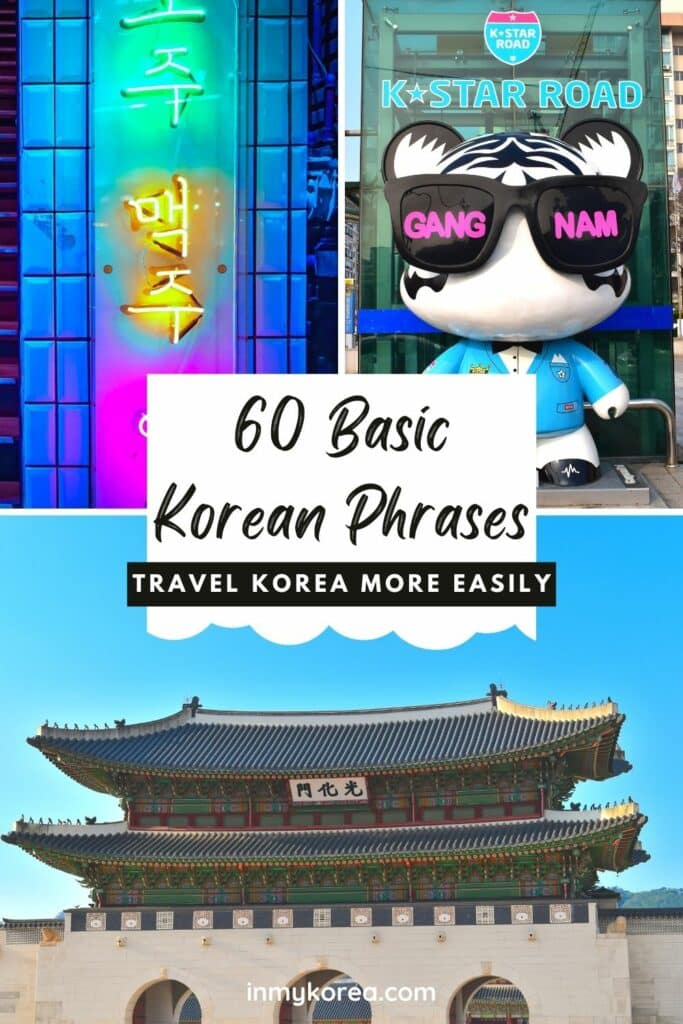
Related Articles
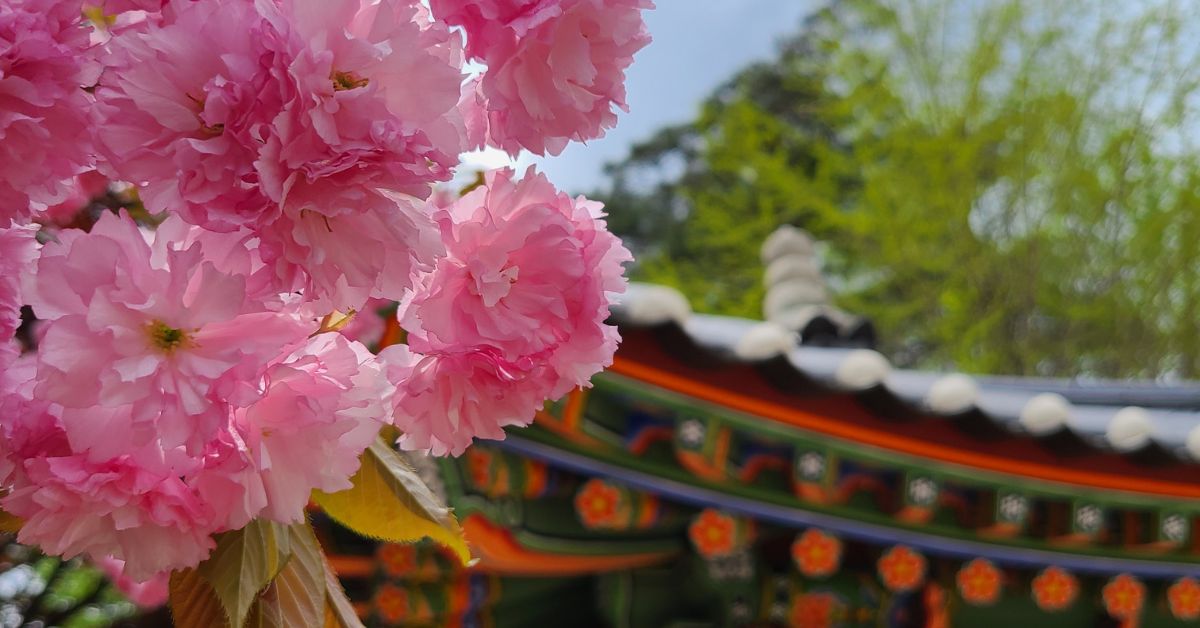
Where To See Cherry Blossoms In Korea 2024: Seoul And Beyond
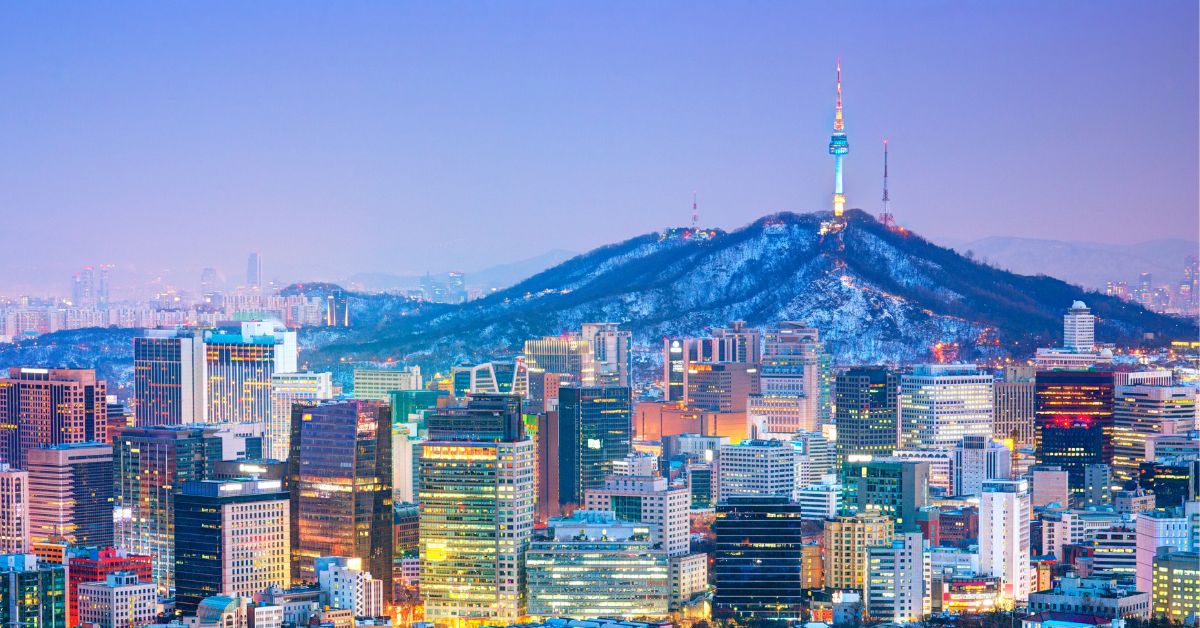
Best Hotels In Myeongdong: Where To Stay & 2024 Travel Guide
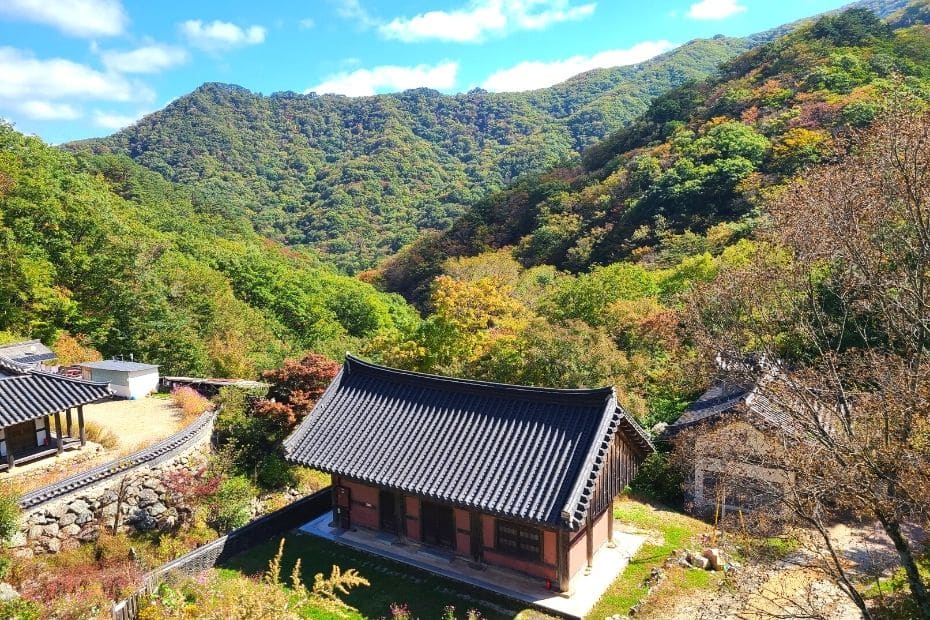
How To Go Hiking In Korea: Top Korean Hiking Tips 2024
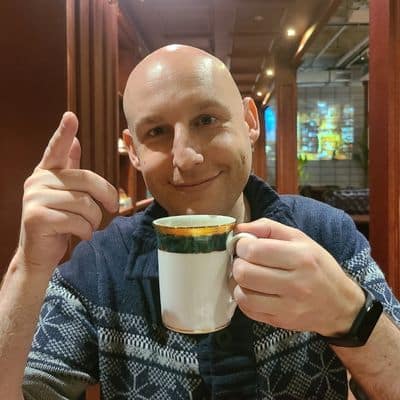
Hi! My name is Joel, I'm the author of In My Korea and writer of this article. I've lived, worked and travelled in Korea since 2015 and want to share my insights, stories and tips to help you have the best experience during your trip to Korea.
I love learning more about Korean culture, hiking the many mountains, and visiting all the coolest places in Korea, both modern and traditional. If you want to know more about my story, check out the ' about me ' section to learn why I love living in Korea.
2 thoughts on “Basic Korean Phrases: 60 Useful Korean Phrases For Travel 2024”
I’m sorry in Korean is 죄송합니다 or 미안합니다. You wrote it as “최성합니다” which is incorrect. 최성 is not a valid word in Korean and it should be corrected to 죄송. A rather easier way to say “I’m sorry” would be 미안합니다 (mee-ahn-hab-nih-dah) for English speakers.
Also, zero is either pronounced “gong” (공) or “young” (영) in Korean, but “young” (영) is more widely used.
Thanks for your interest in studying Korean!
Hi, thanks for that correction 🙂 I’ve updated the info in the article. Appreciate the time to point out my mistake.
Leave a comment Cancel reply
Save my name, email, and website in this browser for the next time I comment.
You are using an outdated browser. Please upgrade your browser or activate Google Chrome Frame to improve your experience.
100+ Korean Travel Phrases
One often-overlooked aspect of preparing for travel is learning a bit of the local language.
While English will get you quite far in South Korea (especially in the bigger cities), nothing can replace learning a little Korean to get around. It can make things easier for you, and the natives will appreciate the effort!
Here’s a list of essential phrases to get you started.
Basic Greetings
Common courtesy, communicating in korean, important places, navigating around, transportation, accommodations, tourist attractions, emergency situations, travel essentials, miscellaneous, and one more thing....
Download: This blog post is available as a convenient and portable PDF that you can take anywhere. Click here to get a copy. (Download)

The bare fundamentals, a simple “Hello” or “Goodbye,” can be much appreciated by any native speaker.
안녕하세요 — Hello
This can be said at any point in the day, and you can reply to this in exactly the same manner.
반갑습니다 — Nice to meet you
If you meet someone, especially someone of importance, you can illustrate your respect with this short phrase.
어떻게 지내세요? — How are you?
잘 지내요 — I am good
A positive response to the above question of “How are you?”
이름이 뭐예요? — What is your name?
This is a polite way to ask, but if you want to be more casual, you can say 이름이 뭐야? instead.
제 이름은 _____ — My name is _____
안녕 / 안녕히 계세요 / 안녕히 가세요 — Goodbye
“Goodbye” comes in different flavors in Korean. 안녕 is informal and should be used for friends and closer acquaintances. 안녕히 계세요 (lit. “Please stay well”) is specifically for when you are leaving the premises, but the other person is staying. Conversely, 안녕히 가세요 (Please leave well) is when you are staying, but the other person is leaving.
좋은 아침 — Good morning
If it’s your first time seeing someone in the morning (up until 11 AM), you can greet them with this since it’s pretty common.
좋은 저녁 — Good afternoon
좋은 저녁 — Good evening
These two phrases aren’t used as much as a general 안녕하세요 (Hello), but you’re more likely to come across them in formal situations, such as a work event.

South Korea holds courtesy in high regard, so you’ll definitely want to learn some ways to express gratitude and respect. Doing so, especially when you’re a foreigner, will help you leave a good impression on those you interact with.
감사합니다 — Thank you
This is a formal, all-around safe way to offer your gratitude . Alternatively, you may say 고맙습니다 .
천만에요 — You’re welcome (formal)
It’s not often that Koreans actually respond to a “Thank you” with a “You’re welcome,” but if you wish to be extra polite, then you can throw in this phrase. Normally, you can respond to thanks with a simple, humble 아닙니다 , which means “It’s nothing.”
실례합니다 (polite) / 잠시만요 — Excuse me
실례합니다 is a very polite phrase used to get someone’s attention, such as for when you approach a stranger for help. 잠시만요 more or less means “Wait a moment” but can be used for situations such as when you need to push past or be a minor physical hindrance to people.
여기요 — Over here
Use this phrase with a raised hand or some kind of physical gesture to get someone to come over to you. This can also be used to flag down a waiter in a restaurant.
죄송합니다 / 미안합니다 — I’m sorry
Used for any situation where you need to excuse your behavior. Both ways of saying sorry are formal and have an almost equal amount of weight (are interchangeable).
[object] + _____ 주세요 — Please give _____
Use this if you’re politely requesting an object from another person. This can be said alone, or follow after you specify what you want.
To learn more about how to be polite in Korean—and listen to how some of the super common situations in this post sound in real life—you can use a learning program like FluentU .
FluentU takes authentic videos—like music videos, movie trailers, news and inspiring talks—and turns them into personalized language learning lessons.
You can try FluentU for free for 2 weeks. Check out the website or download the iOS app or Android app.
P.S. Click here to take advantage of our current sale! (Expires at the end of this month.)

Try FluentU for FREE!
Getting confused is an unavoidable experience when traveling to another country that speaks a different language! By knowing some key vocabulary, though, you can make communication easier.
잘 모르겠네요 — I don’t understand
한국말 잘 못해요 — I don’t speak Korean well
It’s highly likely that you won’t understand every word of Korean you hear, and it’s best to let whoever’s talking to you know that! Many will be kind enough to try and simplify their message for your comprehension.
영어 할 수 있어요? — Do you speak English?
Most Korean natives know some English to be able to help you out in a tough spot, so don’t be afraid to ask!
천천히 말씀해 주세요 — Please speak slowly
다시 한 번 말해주시겠어요? — Can you please say that again?
Korean is a rather quickly-spoken language, especially when the speaker is quite emotional ( Korean dramas , anyone?), so keep these two phrases in mind just in case.
종이에 적어 주세요 — Please write it down
This is essential when you’re asking about the name of a place or getting someone’s phone number.

Wherever you’re going in Korea, some of the most helpful vocabulary to know would be place names:
- 지하철역 — Subway station
- 기차역 — Train station
- 버스 정류장 — Bus station
- 공항 — Airport
- 호스텔 — Hostel
- 식당 — Restaurant
- 관광 안내소 — Tourist information center
- 박물관 — Museum
- 시장 — Market
- 약국 — Pharmacy
- 편의점 — Convenience store
- 쇼핑 센터 — Shopping center
Even if you go off-track at some point or lose your way, don’t worry — getting lost can make for a great adventure in your travels and be a perfect opportunity for you to practice your Korean with locals.
왼쪽 / 오른쪽 / 직진 — left / right / straight
북쪽 / 남쪽 / 동쪽 / 서쪽 — north / south / east / west
These direction words are self-explanatory, and if you’re asking for directions, you’ll most definitely be hearing these words. Make sure to be familiar with them so you can at least pick up general directions.
근처에 _____ 이(가) 있나요? — Is there a _____ nearby?
This will tell any native that you’ll need some navigation help. Follow up with something that will indicate where you’d like to go.
_____이(가) 어디인지 아세요? — Do you know where _____ is?
어떻게 _____ 에 가나요? — How do I get to…?
Ask any of these two phrases for specific directions.
_____이(가) 얼마나 먼가요? — How far is _____?
_____ 까지 얼마나 걸려요? — How long does it take to get to _____ ?
It might feel quite different from English, but you’d put the name of the place at the start. You can use the table in the previous section as a reference!
_____ (으)로 가 주세요 — Please take me to _____
If you need a guiding hand, then this will be the phrase to use. You can quickly find people willing to direct you to where you need to go. This phrase can also be used to inform a taxi driver of your destination. (When the place name ends with a consonant, use “으로,” otherwise use “로.”)
화장실이 어디예요? — Where is the bathroom?
Because in the world of travel, being able to find a bathroom is essential. Note that 어디예요 , by itself, means “where is it.”

South Korea has a convenient transportation system that also makes it easy to travel from city to city. Here are the main forms of transportation:
- 지하철 — subway
- KTX — high-speed train
These phrases will help you get around:
버스 정류장이 어디에 있나요? — Where is the bus station? 기차역이 어디에 있나요? — Where is the train station? 지하철역이 어디에 있나요? — Where is the subway station?
Bus stations are pretty much everywhere, while subway stations are only in major cities like Seoul, Busan and Daegu. Train stations are inter-city and meant for long-distance trips so they’re a bit more spread out.
표를 예매하고 싶어요 — I want to book a ticket
Aside from a simple ticket, you can also get a transportation card ( 교통 카드 ), which covers both train and bus trips.
표는 어디서 살 수 있나요? — Where can I buy tickets?
Bus or train stations usually have ticket machines, but tickets are available online too, which might be more convenient.
버스가 몇 시에 도착하나요 ? — What time does the bus arrive?
버스는 몇 시에 출발하나요? — What time does the bus depart?
다음 버스는 몇 시에 있나요? — What time is the next bus?
You can replace 버스 (bus) in these sentences with 기차 (train) or 지하철 (subway). For real-time bus or train scheduling updates, locals often check apps like Kakao Map and Naver Map .
[place] + 로 가려면 어떤 버스를 타야 하나요? — Which bus should I take to go to [place]?
이 버스는 _____ (으)로 가나요? — Does this bus go to _____ ?
It’s not uncommon to get lost! The bus system in Korea can be confusing at first because it uses numbers to represent routes.
You’d mainly say this when riding a taxi. For extra politeness, you can add 주세요 , which means “please,” at the end.
택시 요금은 얼마예요? — How much is the taxi fare?
Most taxis use the meter to track payment, but to avoid confusion, it’s best to ask the driver before you get in around how much it’ll cost. Remember too that you don’t have to tip taxi drivers in Korea!

Settle into your accommodations more quickly and move on to exploring with the practical phrases below:
체크아웃 / 체크인 시간은 언제인가요? — What time is check-out / check in?
룸 서비스를 이용하고 싶어요 — I would like to use room service
Depending on the hotel, 룸 서비스 usually means food from the in-hotel restaurant, amenities like towels and blanket and sometimes laundry service.
추가 비용이 있나요? — Is there an additional charge?
Sometimes this isn’t obvious, such as when you’re getting drinks from the minibar.
_____을(를) 추가로 받을 수 있을까요? — Can I have more _____ ?
You can usually ask for items like 타올 (towels), 물 (water), 이불 (blankets), 베개 (pillows), 샴푸 (shampoo), 비누 (soap), 칫솔 (toothbrush) and 치약 (toothpaste).
전기 변압기가 필요해요 — I need an electrical adapter
Most hotels have extra adapters on hand since it’s a common request.
방을 변경하고 싶어요 — I would like to change my room
택시를 부르고 싶어요 — I would like to call a taxi
와이파이 비밀번호가 무엇인가요? — What is the wi-fi password?
Having internet access is pretty much invaluable when you’re in a foreign city, so this is worth remembering not just for hotels, but also for when you’re out and about.

Whether you’re going to a heritage site, museum, theme park or traditional village, these phrases will let you make the most out of your visit.
이곳은 언제까지 열려 있나요? — Until what time is this open?
가이드 투어가 있나요? — Is there a guided tour available?
Major museums, palaces and cultural heritage sites often have guided tours in English, such as Gyeongbokgung Palace ( 경복궁 ) and National Museum of Korea ( 국립중앙박물관 ).
사진 찍어 주실 수 있나요? — Can you take a photo of us?
Unless you have a lengthy selfie stick, you’ll likely have to make this request to strangers. If you’re not sure whether you can take photos, you can ask the staff 사진을 찍어도 되나요? to confirm.
입장료는 얼마예요? — How much is the admission fee?
This works for pretty much any tourist attraction and even performances and concerts.
티켓을 구매하고 싶어요 — I would like to purchase a ticket
_____ 장 주세요 — _____ ticket/s, please
When buying tickets, just place the number before 장 주세요 . For example, for one ticket, you’d say 한 장 주세요 , while for two or three tickets, it’d be 두 장 주세요 or 세 장 주세요 respectively.
할인 티켓이 있나요? — Do you have any discounted tickets?
어린이 요금이 어떻게 되나요? — What is the children’s fare?
경로 요금이 어떻게 되나요? — What is the senior’s fare?
If you’re buying tickets as a group or you’re with children or seniors (60 years old and above), you might get a discount.
안내 지도를 얻을 수 있을까요? — Can I get a map?
명소를 추천해 주실 수 있나요? — Can you recommend some attractions?
근처에 추천해 줄 식당이 있나요? — Can you recommend any restaurants nearby?
Asking locals for recommendations can point you to cool spots that you won’t find easily online, and they might give you practical tips too.

South Korea is a food-lover’s paradise . On every street, you’ll find indoor and outdoor food venues, selling everything from traditional Korean meals to trendy snack foods. These phrases will help you when you’re up for some indulgent dining .
_____ 주세요 — Please give me _____
To order your meal, simply state it and tack on 주세요 afterwards. Short and simple!
메뉴 주세요 — Menu, please
More often than not, Korean restaurants won’t have the menu out on the tables. To get one, simply raise your hand and state this phrase.
계산서 주세요 — Bill, please
Waiters in Korean restaurants often will not personally ask if you’ve finished your meal, so once your stomach is satisfied and you’re ready to head out, ask for the bill!
싸 주세요 — Please wrap / It’s to-go
If you want wrapped leftovers, you definitely have to let your servers know as they probably will assume otherwise. Note that you’ll likely only get your meal, not any side dishes, packed up.
제가 알레르기가 있어요 — I have an allergy
If you have an allergy, then you must say so, preferably in Korean so that they know exactly what to exclude.
어떤 음식을 추천하시나요? — What food do you recommend?
Asking for the staff’s recommendations is one of the surest ways to try what’s good in a restaurant.
영어 메뉴가 있나요? — Is there an English menu?
Restaurants that get plenty of travelers are likely to have English menus.
좀 덜 맵게 해 주세요 — Please make this dish less spicy
Korean food can be quite spicy, so you can make this request if you prefer milder flavors. To minimize the spiciness, you can even say 안 맵게 해 주세요 — Please make this dish not spicy.
예약했어요 — I made a reservation for a meal
따로 계산해 주세요 — Please separate the bill.
This is for when you want to split the bill and get separate receipts for less hassle.
물 한 잔 주세요 — Please give me a glass of water
A lot of Korean restaurants have water stations or dispensers so you can get water whenever you want. In case there’s none, though, you can ask the staff directly since it’s usually free.
얼마나 기다려야 하나요? — How long do I have to wait ?
Thankfully, once you’re at the table, 반찬 or side dishes tend to be served pretty quickly, so you can munch on something while waiting for your order.
젓가락 하나 더 주세요 — Please give me an extra pair of chopsticks
숟가락 하나 주세요 — Please give me a spoon
Chopsticks and spoons are the main utensils in restaurants in Korea. Note that 포크 or forks are less common in traditional restaurants!
Since eating out is likely going to be a major part of your itinerary, here are some more survival Korean expressions for ordering food:

With its plethora of food establishments, South Korea also has a huge variety of shopping outlets. You definitely won’t get bored by what’s available for purchase, so you’ll want to know what exactly to say when something catches your eye and makes you reach for your wallet.
_____ 있어요? — Do you have _____?
얼마예요? — How much is it?
It’s highly recommended to know how numbers work in Korean , as there are two distinct systems that are used in different contexts. However, if you’re not overly familiar with them, it’s probable that the cashier will be able to tell you the price in English.
카드 받으세요? — Do you take credit cards?
South Korea has a high credit card usage rate, so you shouldn’t have a problem if you’re strapped for cash and only have your card on hand.
환불해 주세요 — Please give me a refund
Be prepared with a good reason for your request! Even if you’re a foreigner, you’ll still need to explain yourself (and explain well!) to the store employee.
교환해 주세요 — Please give me an exchange
If your shopping purchase is damaged or needs to be switched to fit your needs, then use this phrase to notify the employee. You shouldn’t have a hard time with this request, especially if you have a valid reason.
할인해 주실 수 있나요? — Is there a discount?
You never know when there might be a sale or promo!
이거 더 작은 사이즈로 있나요? — Do you have this in a smaller size?
이거 더 큰 사이즈로 있나요? — Do you have this in a bigger size?
Korea’s size system for clothes can seem very familiar at first because it also uses letters like S, M and L. Sizes can be different from those in other countries, though, so you’ll definitely want to try on the clothes first before buying them! Some stores have free alteration services too.
피팅룸은 어디에 있나요? — Where are the fitting rooms?
이거 살게요 — I’ll buy this
When you’re done at the fitting room and you’re satisfied with the clothes, then you can let the store employee know.

In the event that an urgent situation pops up and you’re in need of direct, quick help, you’ll need some quick phrases to get proper attention.
도와주세요! — Help!
A straightforward call for assistance. This literally means “Give me help,” to which a proper response might be 도와줄게요 , which means “I will give you help.”
긴급 상황이에요 — It’s an emergency
Whatever the nature of your problem, this phrase will get you rapid assistance. Consider who exactly you need to help you, whether it’s the police or the paramedics, for example.
경찰 / 경찰을 부르세요 — Police / Call the police
It’s helpful to know that in South Korea, the phone number to contact the police is 112. But in case you don’t have a phone or are in quick need of legal service, saying the above phrase to a native will most likely get the help you need.
병원 — Hospital
If you say this phrase alone to a native, that could be enough of an alert for them to aid you. If you need quick medical attention and know you need care at a hospital, then use this phrase.
여기가 아파요 — It hurts here
This is useful for any injury you receive that needs to be treated. Along with this phrase, point to where exactly you feel pain.
의사가 필요해요 — I need a doctor
Along with the word for hospital, this is good to know if there’s ever a possibility that you need professional care. It’s possible someone will call an ambulance for you, should the situation be dire, but you should also know that the Korean phone number for the fire brigade and ambulance services is 119.

Your passport is the most important document to have while traveling, so here’s some helpful vocabulary:
여권 — Passport
This can be useful to know how to say in Korean because some places — like hotels and bars — might look for your passport. A related word is 비자 (visa).
여권 잃어버렸는데, 보셨나요? — I lost my passport, have you seen it?
Fingers crossed that this won’t actually happen! If you lose something else, you can replace 여권 (passport) in this sentence. Other valuables are 지갑 (wallet), 핸드폰 (mobile phone), 신용카드 (credit card) or 가방 (bag).
[Your country] 대사관은 어디에 있나요? — Where is the… embassy?
If you lose your passport or get visa-related issues, then you’ll have to head to your country’s embassy in Korea.
환전소는 어디에 있나요? — Where is the currency exchange?
Aside from banks, you can get currency exchange done at the airport, hotel and major shopping centers. Look for signs that say 환전 or 외화 교환 , which both mean currency exchange.

Here are some phrases you may hear anywhere, anytime, and aren’t necessarily attached to any one context.
화이팅! / 파이팅! — Fighting!
Slang used for encouragement, you can passionately exclaim this to boost one’s morale. It’s usually accompanied nu a firm shake of the fist.
괜찮아요 — It’s okay
The equivalent to the English “It’s fine.” You can say this in a multitude of situations, such as expressing the state of your physical health or accepting a certain circumstance.
진짜요? — Really?
Just in case you need some extra affirmation about something. This phrase is also commonly used as an exclamatory statement.
안 돼요 — It doesn’t work/It cannot (be)/No way
This phrase differs slightly in meaning depending on the context. You can use it for a variety of situations, from talking about a dysfunctional washing machine to adamantly denying a particular circumstance.
재미있어요 — It’s fun
Of course, if you’re having fun and want to say so, then by all means you should! This phrase will be relevant quite frequently while you’re out and about adventuring in Korea.
With these phrases as part of your mental luggage, you’ll be more confident and have a more satisfying trip to Korea.
Safe travels, or as you would say in Korean, 여행 잘 하세요, 조심해서 가세요 !
If you enjoyed this post, you're already halfway to having the time of your life learning Korean with FluentU !
FluentU makes it possible to learn with K-pop videos, funny commercials, entertaining web series and more. Just a quick look will give you an idea of the variety of FluentU videos on offer :

FluentU really takes the grunt work out of learning languages, leaving you with nothing but engaging, effective and efficient learning. It's already hand-picked the best videos for you (which are organized by level and topic), so all you have to do is simply choose any video that strikes your fancy to get started.
Each word in the interactive captions comes with a definition, audio, image, example sentences and more.

Access a complete interactive transcript of every video under the Dialogue tab, and easily review words and phrases from the video under Vocab .

You can use FluentU’s unique Quiz Mode to learn the vocabulary and phrases from the video through fun questions.

FluentU keeps track of what you're learning, and tells you exactly when it's time for review, giving you a 100% personalized experience .
Review sessions use video context to help embed the words in your memory.
Start using the FluentU website on your computer or tablet or, better yet, download the FluentU app from the iTunes or Google Play store. Click here to take advantage of our current sale! (Expires at the end of this month.)
Related posts:
Enter your e-mail address to get your free pdf.
We hate SPAM and promise to keep your email address safe

101 Basic Korean Words for Travel in South Korea
Erin E. Honigman
When you visit South Korea, you'll find that English is quite common in big international cities like Seoul or Busan. English academies and immersion schools have been flourishing for decades, so it's safe to say you'll be able to get by without speaking much Korean.
However, if you want to explore more of the Korean peninsula (and trust me, you definitely do), be sure to practice a few basic traveling phrases in Korean. Not only will knowing some Korean phrases help you avoid an awkward situation -like sitting in someone's reserved seat or ordering squid as snack- but it will also impress the locals. Korean people will definitely appreciate your attempt to communicate in their language. If you know some basic traveling phrases, it shows respect for Korean culture.
So, whether you're planning to take a trip to South Korea or even if you're just curious about Korean culture , use our list of 101 basic Korean phrases to improve you Korean speaking and listening skills.
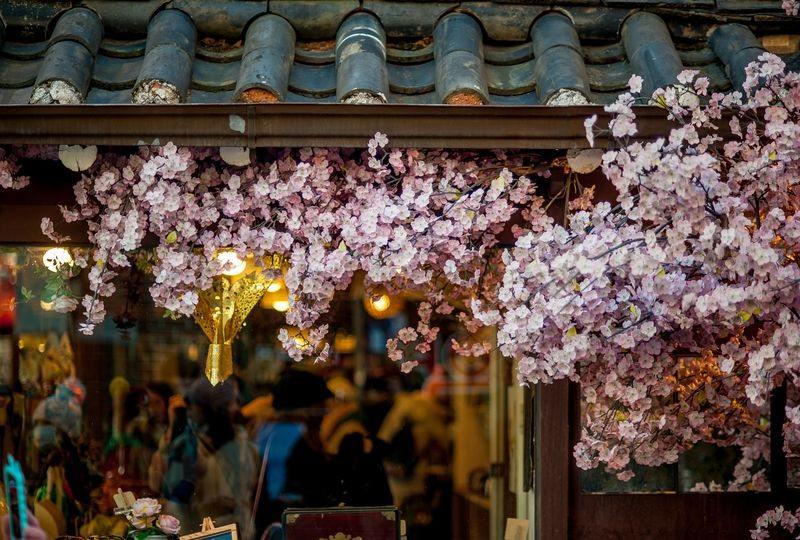
Why Visit South Korea?
Most people don't immediately think of South Korea when planning a trip to Asia. Isntead, they opt for the more popular beaches of Thailand and the rolling rice hills in Vietnam.
But guess what. Korea has both of these things, and more. South Korea is truly a unique country to visit, and it has something to offer for every tourist's preference.
Although small in land area, the country is rich in regional and geographical diversity. Surrounded by the sea on three sides, South Korea has miles of beautiful beaches . Hiking more your thing? Then Korea is the perfect place to go. Over 70% of South Korea is covered in mountains, so you won't miss out on the beautiful nature.
If you're not really a nature person, don't worry. You'll be captivated by Korean culture and history. After all, Korea is home to 11 Unesco World Heritage sites , including temples and fortresses from ancient dynasties. You can also spend hours shopping, or my personal favorite: indulge in delicious Korean delicacies that vary across the country.
Have I enticed you to visit South Korea yet? Even if you can't take a trip overseas soon, learning Korean travel phrases will help expand your Korean vocabulary and prepare you for any future travels.
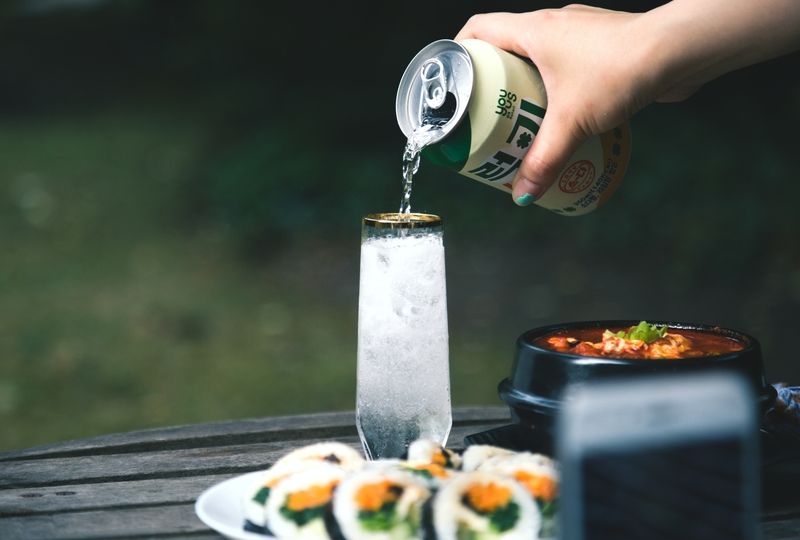
Basic Korean Phrases for South Korea Travel
It's important to note that Koreans use different verb conjugations depending on the person they are speaking to. The different conjugations imply various levels of respect and politeness. For the purpose of traveling in Korea, it's okay to use either the formal or polite form of the verb, and that's what will be included on this list. Koreans won't expect foreingers to understand the sublte nuances of Korean honorifics, so just being polite is the best way to go.
Also, you might notice several phrases are listed more than once. That's because unlike in English, Koreans have different variations of words and phrases for very specific situations.
Now, let's learn some basic Korean phrases for travel!
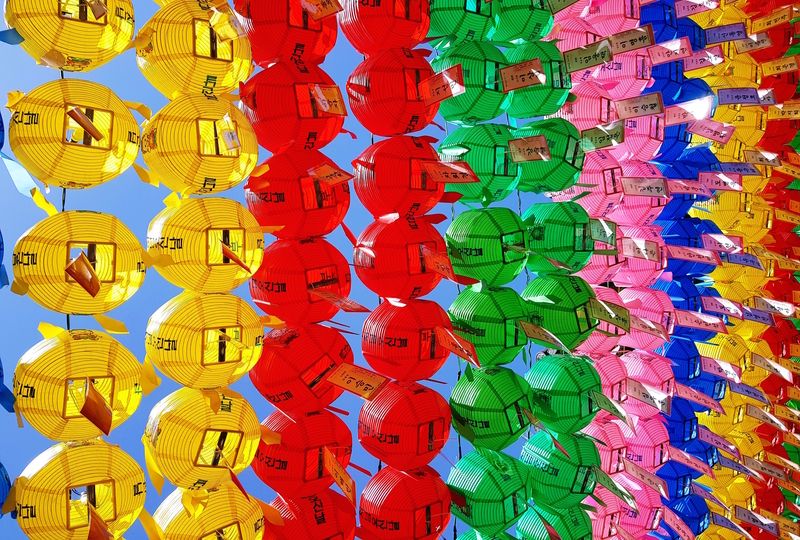
The Most Basic Korean Words You Must Know
- An-nyeong ha-se-yo (안녕하세요) :Hello. This is the most common way to greet someone at anytime of the day. You'll be greeted any time you enter a shop, restaurant, taxi- well anywhere, really. So you should learn how to say hello in response.
- An-nyeong-hi ga-se-yo (안녕히 가세요): Goodbye. This is the goodbye to use if someone else is leaving. "Ga-se-yo" means to go,so you are basically telling someone to go peacefully.
- An-nyeong-hi gye-se-yo (안녕히 계세요): Goodbye. This is the goodbye to use when YOU are leaving. There is a slight difference in the endings of the two goodbyes; however, don't worry too much if you don't remember the difference. You can always just say "an-nyeong."
- Ne (네): Yes
- A-ni-yo (아니요): No
- A-ma-do (아마도): Maybe
- Mol-la-yo (몰라요): I don't know.
- Jam-shi-man-yo (잠시만요): Excuse me./Just a moment. You can use this phrase to get the attention of others, for example if you need someone to move out of your way. You can also use this to mean "wait a minute."
- Jeo-gi-yo (저기요): Excuse me. Use this version of "excuse me" to get attention in a restaurant or business.
- Sil-lye-hab-ni-da (실례합니다): Excuse me. This version of excuse me is used to apologize, like if you accidentally bump into someone.
- Mi-an-hab-ni-da (미안합니다): Sorry.
- Gam-sa-hab-ni-da(감사합니다): Thank you.
- Gwaen-chan-ayo(괜찮아요): It's alright/never mind/it's okay.
- Cheon-man-e-yo(천만에요): You're welcome/don't mention it.
- Shi (씨): Add this at the end of someone's name to be polite. It means Mr./Ms. regardless of gender or marital status.
- Eo-je (어제): Yesterday.
- Oh-neul (오늘): Today.
- Nae-il (내일): Tomorrow.
- Ji-guem (지금): Right now.
- Na-jung-eh (나중에): Later.
- Eol-ma-ye-yo?(얼마예요?): How much is it?
- I-geo ju-se-yo.(이거 주세요.): Give me this, please.
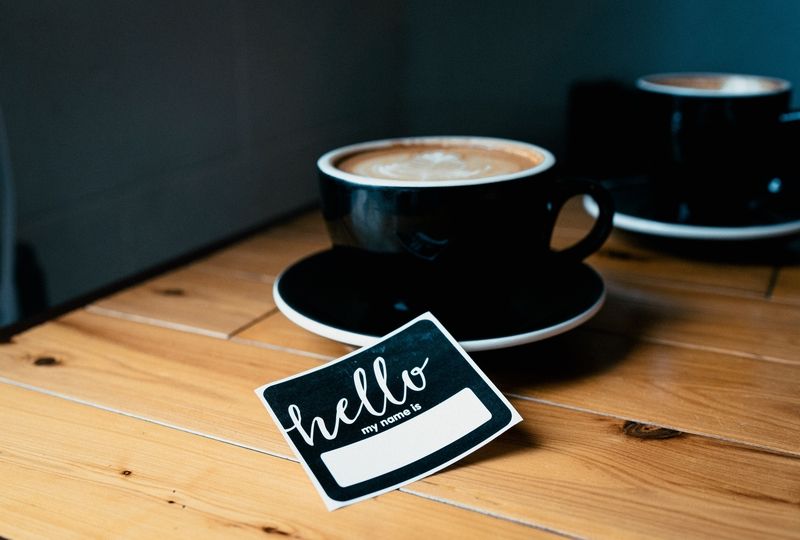
Introducing Yourself
- Ee-reum-ee mo-eh-yo(이름이 뭐에요?): What's your name?
- Je ileum-eun (your name)ibnida.(제 이름은 (your name)입니다.): My name is _________.
- Jeo-neun (country)e-seo wass-eo- yo. (저는 country에서 왔어요): : I'm from ____________. For a list of countries, click here .
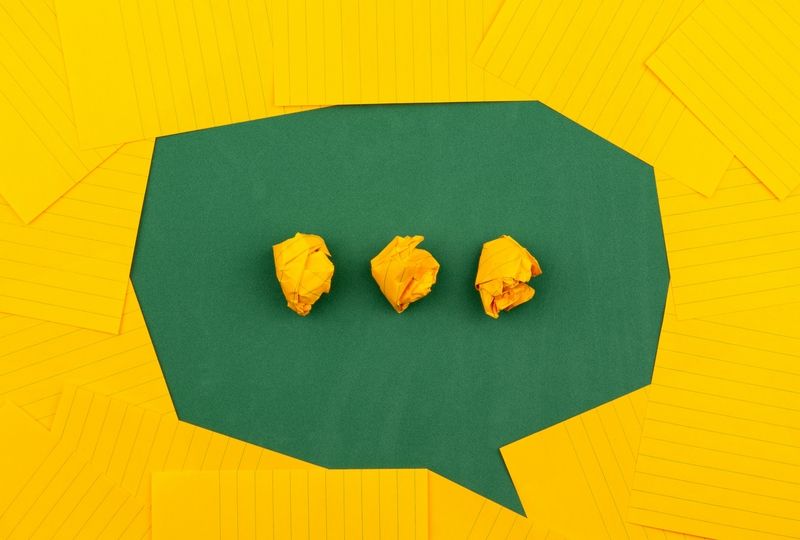
Making Yourself Understood
Of course, if you are not Korean, you might stick out as a foreigner in smaller cities. Still, some locals might mistake you for a expat living in South korea and assume you can communicate well. Use these Korean phrases to make yourself understood.
- Han-guk-mal mot hae-yo.(한국말 못 해요.): I can't speak Korean.
- Han-guk-mal jo-geum mal hal su iss-eoyo. (한국말 조금 말 할 수 있어요.): I can speak a little Korean.
- I-hae mos hae-yo. (이해 못 해요): I don't understand.
- Cheon-cheon-hi mal-hae-jus-eyo. (천천히 말해주세요): Please speak slowly.
- Da-si han beon mal-hae-jus-eyo(다시 한 번 말해주세요.): Please say it again.
- Yeong-eo ha-se-yo? (영어 하세요?): Do you speak English?
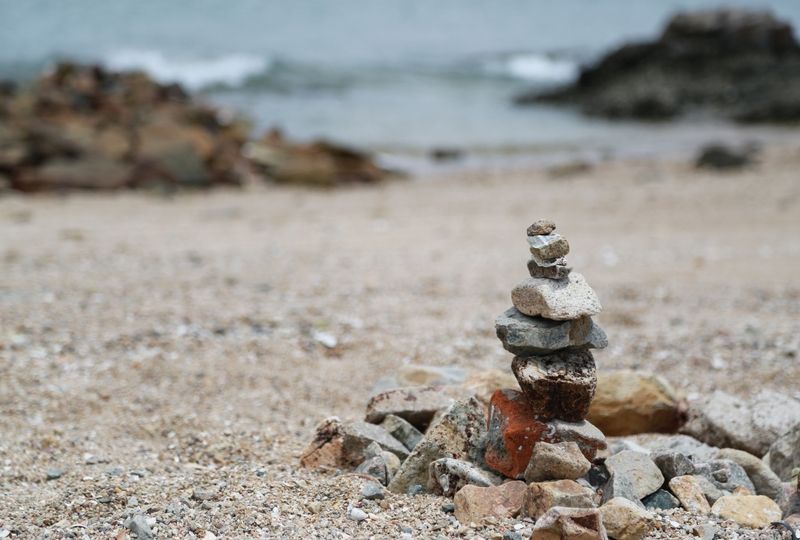
Asking for Help
If you're traveling in a country that doesn't speak your language, there's probably going to be several times that you need to ask for help. Whether it's an emergency situation or you're just looking for a toilet (which, okay is also an emergency sometimes), here are basic Korean phrases to ask for help.
- Do-wa-ju-se-yo (도와주세요) : Help me!
- Gyeong-chal-eul bul-eu-se-yo.(경찰을 부르세요): Call the police.
- Eung-geub sang-hwang-i-e-yo! (응급 상황이에요): It's an emergency.
- Ui-sa-ga pil-yo hae-yo. (의사가 필요 해요): I need a doctor.
- Gu-geub-cha-leul bul-leo ju-se-yo. (구급차를 불러 주세요): Call an ambulance.
- Ah-pa-yo. (아파요): I feel sick.
- Jil-mun-i is-seub-ni-da. (질문이 있습니다): : I have a question.
- Byeong-won (병원): : Hospital
- Gyeong-chal-seo (경찰서): Police station
- Yag-guk (약국): Pharmacy
- Eun-haeng (은행): Bank
- Hwa-jang-sil (화장실): Bathroom
- __eh ga-ya hay-yo ( __ 에 가야 해요): This sentence means, I have to go to the (place). So, you can, say "byeonh-won-eh ga-ya hay-yo," to mean "I have to go to the hospital.
- Eo-di-ye-yo? (어디예요?): Where is it? You can also add the place in front of the question. So, if you ask "Hwa-jang-sil eo-di-ye-yo?," you're asking where the bathroom is.
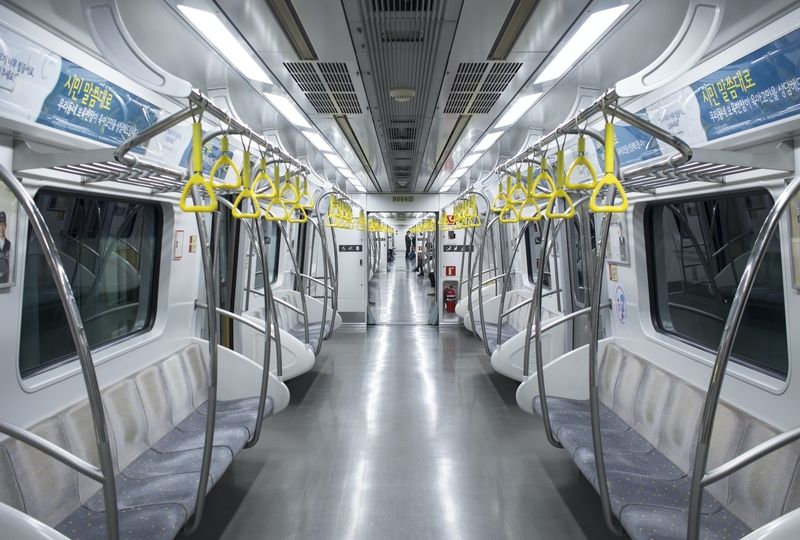
Transportaion
Lucky for travelers, getting around South Korea is cheap and easy. You can use applications on your phone for accurate bus times and maps. South Korea has a renowned public transportation system. It's clean, cheap, and efficient, so you can get from one end of the country to the other in no time at all. Although most travel hubs have some English, you still might need to use these phrases when getting around the country. Use the term "where" (#45) to make questiosn with some of these words.
- Beo-su(버스): Bus
- Beo-seu jeong-lyu-jang (버스 정류장): Bus stop
- I beo-seu (place) ga-na-yo?(이 버스 place name 가나요?): Does this bus go to ___ ?
- Da-eum beo-seu-neun eon-je iss-eo-yo?(다음 버스는 언제 있어요?): When is the next bus?
- Gi-cha(기차): Train. It's important to note here that the high speed train in Korea is called the KTX , so if you say "KTX," you will be understood.
- Ji-hae-chol (지하철): Subway
- Ji-hae-chol yeog (지하철역): Subway station
- Bi-haeng-gi (비행기): Airplane
- Gong-hang (공항): Airport
- Taek-si (택시): Taxi. For an easier way to hail a taxi, you can use this phone app .
- Seoull-yeoge ga-go si-peun-de-yo.(서울역에 가고 싶은데요.): I'd like to go to Seoul Station. Of course, if you're in a taxi, you can interchange any location with the word Seoul.
- Pyo (표): Ticket
- Bal-gwon-gi (발권기): : Ticketing machine
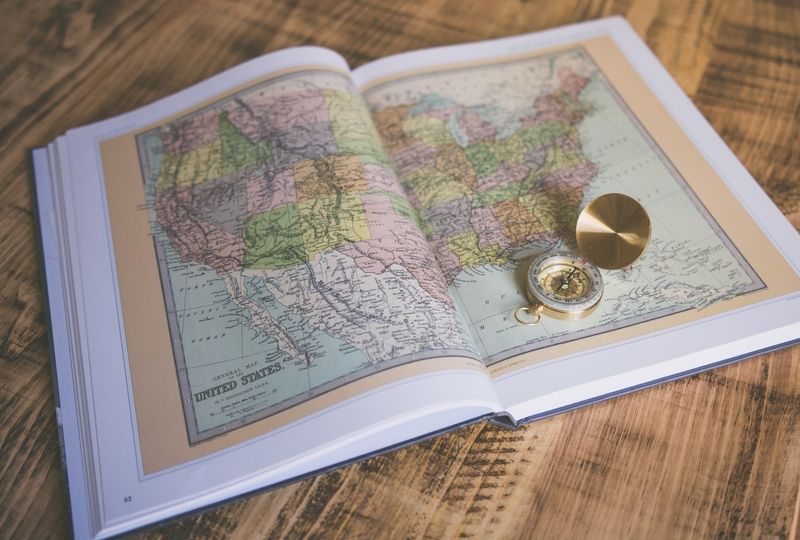
- Dong (동): East
- Seo (서): West
- Nam (남): South
- Buk (북): Buk
- Yeo-gi (여기): Here
- Geo-gi (거기): There
- Jeo-gi (저기): Over there
- O-leun-jjog-eulo ga-se-yo. (오른쪽으로 가세요): Turn right.
- Oen-jjog-eu-lo ga-se-yo. (왼쪽으로 가세요): Turn left.
- Jig-jin-ha-se-yo. (직진하세요.): Go straight.
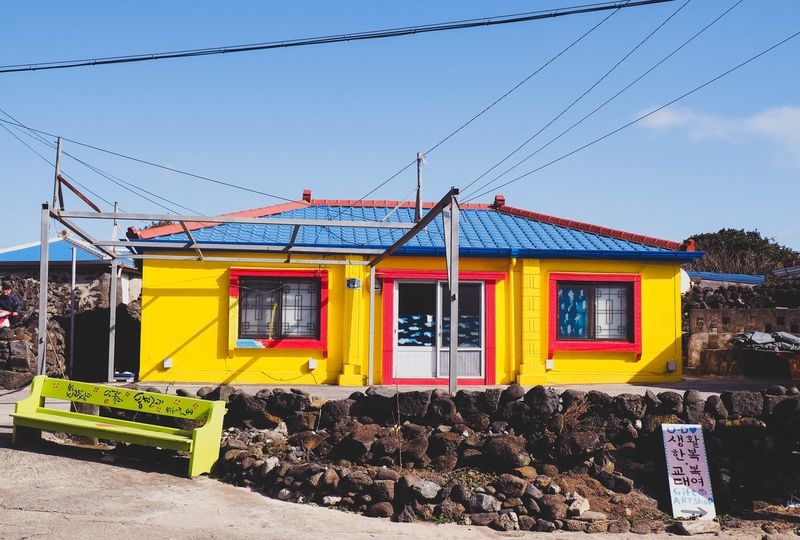
Accomodation
Although you can definitely find five star hotels in Korea, there are a number of more affordalbe - and more unique- options to look at while you travel around the country. 69. Sa-u-na (사우나): Sauna. Did you know that you can sleep on the floor of a sauna? This is the cheapest place to stay, usually under 10,000 Korean won. You'll be given a mat on a warm floor. 70. Ho-seu-tel (호스텔): Hostel. 71. Min-bak (민박): Min-bak. A minbak usually is a simple room with access to a kitchen and a private bathroom. They can range from anything like a motel to a room in the owners' house. 72. Mo-tel (모텔): Motel. Motels in Korea are often themed and geard toward lovers, so if you go with this option, make sure you find one that's nice and clean. 73. Gue-su-tu Ha-oe-seu (게스트 하우스): Guesthouse. 74. Ho-tel (호텔): Hotel. 75. Pen-sion (펜션): Pension. Pensions are like partially furnished houses or apartments that you can rent. They're affordable and usually quite beautiful, as most are in the countryside or in a scenic area. 76. Ri-jor-teu (리조트): Resort. 77. Bin-bang iss-eo-yo?(빈방 있어요?): Do you have any vacancies? 78. I-il mug-gess-eo-yo(이일 묵겠어요): I'm staying for two days. In this case, the first syllable "i" is the number for 2. You can use other numbers if you plan to stay longer. 79. I in-yong chim-dae (이 인용 침대): A bed for two people. 80. Ye-yag-eul ha-go sip-eoyo. (예약을 하고 싶어요): I'd like to make a reservation.
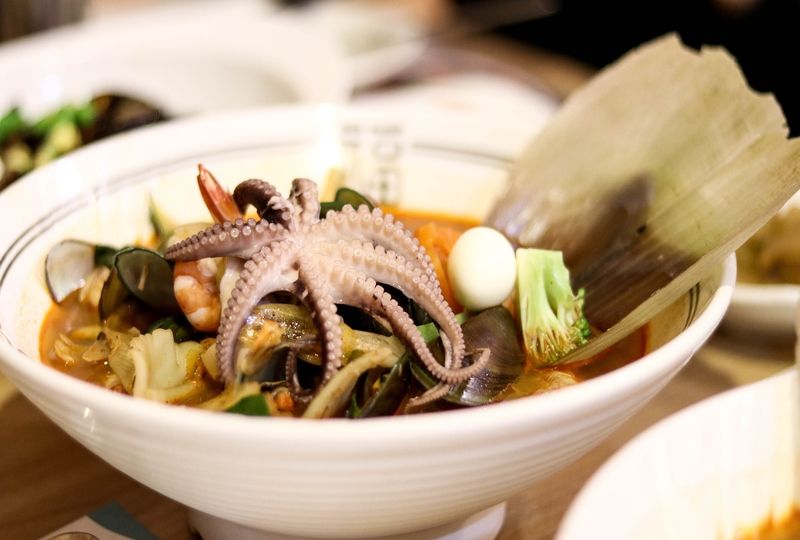
At the Cafe or Restaurant
- Bae-go-pa-yo. (배고파요): I'm hungry.
- Ka-deu bad-euse-yo? (카드 받으세요?): Do you accept cards? A lot of Korean restaurants are still cash only, so it's best to carry some Korean money or check before ordering. If you forget, don't worry. There are ATM's on almost every street
- Ttalo-ttalo gye-san-hal-ge-yo. (따로따로 계산할게요): Please split the bill. Most Koreans share the meal and one person pays the bill. Again, it's best to carry cash so you and your companions can all contribute if necessary.
- Po-jang-hae jus-e-yo. (포장해주세요): Please make it to go.
- Wai-pai iss-eo-yo?(와이파이 있어요?): Do you have wifi?
- Bi-mil beon-ho all-yeo ju-seyo. (비밀 번호 알려 주세요): Please tell me the wifi password.
- Kon-sen-teu is-seo-yo?(콘센트 있어요?): Do you have electrical outlets?
- Chae-sig men-yu iss-eo-yo?(채식 메뉴 있어요?): Do you have a vegetarian menu?
- Da meo-geul su is-seo-yo. (다 먹을 수 있어요): I can eat anything.
- Mwo-ga mas-iss-eo-yo?(뭐가 맛있어요?): What is delicious?
- All-eo-ji iss-eo-yo. (알러지 있어요.): I have an allergy.
- (이거 매워요?): Is it spicy? Now, I suppose spice tolerance is subjective. However, often times Koreans will worry about the level of spice foreigners can handle. They think kimchi is very spicy. In my experience, Korean "spice" is a little sweet, and it's delicious. If you're like me, you won't find it spicy at all, so ask for more pepper.
- Mas-is-seo-yo!(맛있어요!): It's delicious.
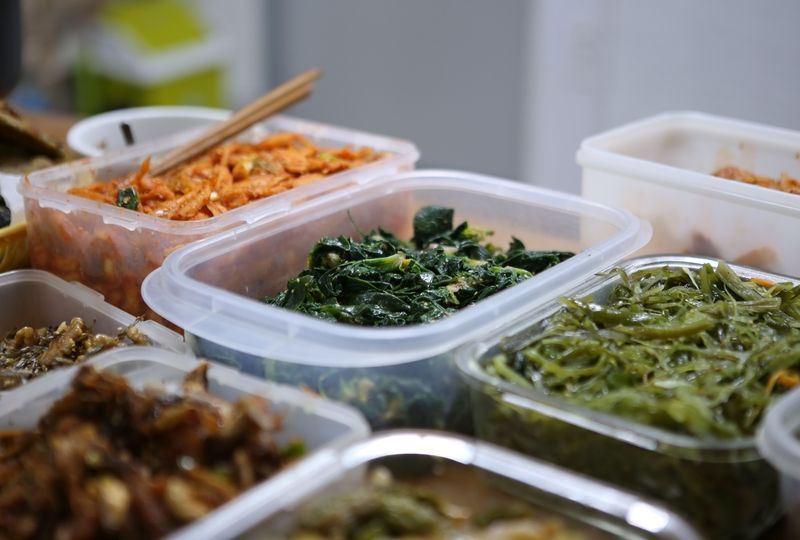
Miscellaneous
- Geon-be! (건배!) : Cheers!
- A-ya! (아야!): Ouch!
- Jo-ah-yo. (좋아요): Good/I like it.
- An jo-ah-yo. (안 좋아요): Bad.
- Sel-ka (셀카): Selfie
- Seo-bis-eau (서비스): Service. This refers to a free item at a restuarant or store.
- Hwa-i-ting! (화이팅!): You can do it! Fighting!
- Meong meong (멍멍): This is the sound of a dog barking in Korean. Cute, right?
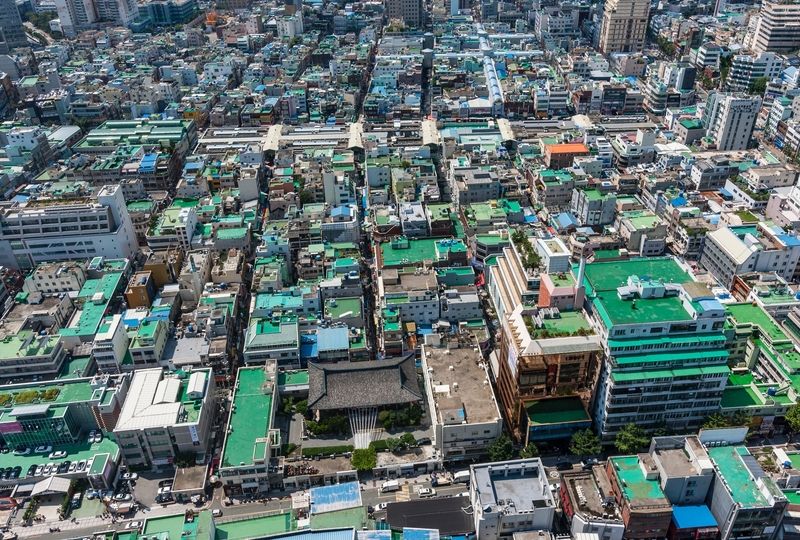
Practice Makes Perfect
While these words look simple on paper, you might want to practice speaking them outloud to make sure your pronunciation is perfect. Lucky for you, Speechling coaches are here to help. Try Speechling's Freestyle Mode! You can input and listen to any Korean traveling phrase, then record your own pronunciation. Speechling's dedicated coaches will give you personalized feedback. Your pronunciation will be like a native speaker's in no time at all!
Speechling is a nonprofit app and website that combines human coaching with technology to improve your foreign language speaking.
Physical Address
304 North Cardinal St. Dorchester Center, MA 02124

Korean Language 101: Basic Phrases For Travelers
- July 9, 2023
Are you planning a trip to Korea? Whether it’s for business or pleasure, learning some basic Korean phrases can greatly enhance your travel experience. While many Koreans speak English, knowing even a few key phrases in the local language can help you navigate transportation, order food, and connect with locals on a deeper level.
In this article, we will provide you with essential Korean phrases that every traveler should know. From greetings and introductions to emergency situations and cultural etiquette, we’ll cover all the bases so that you feel confident communicating in Korean during your travels. So let’s dive in and start learning!
Greetings and Introductions
Before you start exploring Korea, it’s important to learn some basic greetings and introductions like ‘annyeonghaseyo’ for hello and ‘jal jinaeseyo’ for goodbye. These common expressions are essential in establishing a friendly connection with the locals. In Korean culture, showing respect is highly valued, so using the appropriate greeting depending on the time of day is crucial. For instance, saying ‘annyeonghaseyo’ in the morning and ‘annyeonghi gyeseyo’ in the afternoon and evening shows your politeness.
Greetings also involve a bowing gesture that varies depending on who you’re talking to. If you’re meeting someone older or higher in rank than you, bowing deeper than them is respectful. However, if they initiate the bow first, following their lead by reciprocating with a similar depth is appropriate. These cultural nuances may seem overwhelming at first but understanding them can make your communication more effective.
Introducing yourself is also vital when meeting new people. The phrase “jeoneun [name] imnida”means “My name is [name],”which can be used when introducing yourself formally. Koreans usually ask about each other’s age as it determines how they address each other respectfully using honorifics or casual language. So don’t be surprised if someone asks your age during an introduction!
Knowing these basic phrases will help create a positive impression among locals while traveling around Korea. Now that you’ve learned about greetings and introductions let’s move on to directions and transportation without any further delay!
Directions and Transportation
In this discussion, you will learn about asking for directions, taking a taxi or bus, and buying tickets. Asking for directions is an important skill when navigating a new city or country, and we will cover key phrases to help you communicate effectively with locals. Taking a taxi or bus can be convenient ways to get around, but it’s important to know the local customs and procedures. Finally, we will discuss how to buy tickets efficiently and avoid common mistakes that travelers make. With these skills in hand, you can confidently explore your destination with ease.
Asking for Directions
If you’re lost in South Korea, don’t hesitate to approach locals and ask for directions using phrases like ‘어디에 있나요?'(Where is it?) or ‘이 길을 따라가면 되나요?'(Should I follow this road?). Koreans are generally friendly and willing to help, so don’t be shy about asking. However, keep in mind that not all locals may speak English fluently. It would be helpful to have a map or a translation app ready just in case.
Here are some tips to make the process of asking for directions smoother:
- Familiarize yourself with common landmarks near your destination.
- Using public restrooms can also serve as a way to confirm if you’re headed in the right direction.
- Be specific when asking for directions and provide context (e.g., “I’m looking for the nearest subway station”).
- Repeat important information back to the person giving you directions to ensure understanding.
- Thank them after they’ve given you directions and consider offering a small token of appreciation like candy or gum.
When navigating around South Korea, taking a taxi or bus can also be an option.
Taking a Taxi or Bus
To navigate around South Korea efficiently, you may want to consider taking a taxi or bus. When taking a taxi, it’s important to be aware of the local customs and etiquette. For example, it is customary to sit in the back seat and not engage in conversation with the driver unless necessary. Additionally, it’s common practice to pay with cash rather than credit card.
If you prefer public transportation, buses are a great option as they are readily available and affordable. However, it’s important to familiarize yourself with the bus schedules and routes beforehand as they can be quite complex. Be sure to check the destination signs on the front of each bus before boarding and have exact change ready when paying your fare. With these tips in mind, navigating through South Korea should be a breeze.
Transitioning into the subsequent section about buying tickets: Once you’ve decided on your mode of transportation, be it by taxi or bus, the next step would be to purchase tickets for your journey.
Buying Tickets
When you’re ready to travel in South Korea, it’s important to know how to purchase your transportation tickets. Whether you’re taking a train, bus, or subway, buying tickets is easy and convenient. Most ticket offices have English instructions available, so there’s no need to worry about the language barrier. If you have trouble navigating the system, don’t hesitate to ask for help from the staff.
If you’re arriving from another country and need transportation from the airport, look for information desks or kiosks that provide shuttle services or taxis. They will usually provide guidance on how to find accommodations and other tourist attractions as well. Once you’ve arrived at your destination and settled in, don’t forget to explore local cuisine by ordering food at restaurants or street vendors.
Ordering Food
When ordering food in Korea, it’s important to have a basic understanding of food vocabulary. This will help you navigate menus and communicate your preferences to restaurant staff. Additionally, knowing how to order at a restaurant can make the experience much smoother and enjoyable. Finally, if you have any dietary restrictions or allergies, it’s crucial to know how to communicate these effectively in Korean.
Basic Food Vocabulary
Craving for some delicious Korean food? You’ll want to know these basic food vocabulary words before ordering your next meal! Traditional Korean dishes, such as bibimbap and bulgogi, are popular among locals and tourists alike. Bibimbap is a rice dish topped with vegetables, meat, and egg while bulgogi is marinated beef or pork grilled to perfection.
If you’re looking for something quick and easy to eat on the go, popular street foods like tteokbokki (spicy rice cake), kimbap (rice rolls), and fried chicken are great options. Tteokbokki is a must-try for those who love spicy food. It’s made with chewy rice cakes in a spicy sauce that packs a punch. Kimbap is similar to sushi but with ingredients like ham, cheese, or tuna instead of raw fish. Fried chicken may not be traditionally Korean but it has become a popular snack in recent years.
Now that you know some basic food vocabulary words, it’s time to learn how to order at a restaurant.
Ordering at a Restaurant
To successfully order at a restaurant in Korea, it’s important to familiarize yourself with common menu items and phrases. Popular Korean dishes include bibimbap, bulgogi, kimchi jjigae, and samgyeopsal. When ordering, it’s polite to use the honorific form of speech by adding “-yo”at the end of your sentences. For example, instead of saying “I want bibimbap,”say “bibimbap juseyo”which translates to “please give me bibimbap.”Additionally, it’s customary to wait for everyone at your table to receive their food before starting to eat.
Restaurant etiquette is also an important aspect when ordering in Korea. It’s considered rude to call out or snap your fingers at servers. Instead, try raising your hand slightly or making eye contact with them. When paying for your meal, it’s common for one person in the group to pay for everyone else as a sign of respect and generosity. Remembering these small gestures can go a long way in showing appreciation for the culture and cuisine of Korea.
As you move on to learning about dietary restrictions in Korean cuisine, keep in mind that many traditional dishes contain meat or seafood products. However, there are still plenty of options available for vegetarians and those with other dietary needs.
Dietary Restrictions
If you have certain dietary restrictions, it’s important to be aware of the ingredients used in Korean cuisine and communicate your needs clearly when ordering at a restaurant. Vegetarian options are available in some restaurants, but it’s important to double-check with the server if any meat or seafood-based products were used in the preparation of the dish. You can say “Chae-sikjuui”which means ‘vegetarian’ or “Sa-seuji”which means ‘vegan’ to let them know about your preferences.
If you have allergies and intolerances, it is crucial to inform the servers about your condition. Some common allergens such as peanuts, shellfish, soy, and wheat are present in many Korean dishes. Therefore, it is essential to ask for recommendations on what dishes are safe for you to consume. The phrase “Jeonjibulmyeon”means ‘I have an allergy,’ while “Jeonjisaeng-gakhaeju-seyo”means ‘Please be careful because I have an allergy.’ Remember that being clear with your requests will help ensure that you have a safe and enjoyable dining experience in Korea.
When shopping and bargaining in Korea…
Shopping and Bargaining
When shopping in Korea, it is important to know how to ask for prices, negotiate prices, and make purchases. To ask for prices, use the phrase “얼마예요?”(eolmayeyo?) which means “How much does it cost?”When negotiating prices, keep in mind that bargaining is not common practice in Korea and may be seen as impolite. Finally, when making a purchase be sure to say “감사합니다”(gamsahamnida) which means “Thank you.”
Asking for Prices
Want to know how much something costs? Just ask the vendor using simple Korean phrases like ‘이거 얼마예요?'(How much is this?) or ‘얼마에요?'(How much does it cost?). Here are some tips to help you when asking for prices:
- Be polite and respectful while asking for prices.
- Use the correct form of politeness based on your relationship with the seller.
- Pointing at the item you want can help convey your message more clearly.
- Ask if there is any discount available if you plan on buying multiple items.
- Comparing prices from different vendors before making a purchase can help you get a better deal.
Asking for prices is only one part of shopping in Korea. If you’re interested in negotiating deals and getting discounts, stay tuned for our next section where we’ll give you some tips on how to negotiate effectively.
Negotiating Prices
To effectively negotiate prices in Korea, it’s essential to understand the cultural differences and customs surrounding bargaining. Unlike Western cultures where haggling is often seen as confrontational, in Korea, it’s considered a way of building relationships and showing respect for the seller. Therefore, it’s important to approach negotiations with a friendly attitude, keeping in mind that maintaining harmony is crucial.
When negotiating prices in Korea, start by expressing interest in the item or service you want to purchase. Ask questions about its quality and features while showing appreciation for the seller’s workmanship. Then, politely inquire about the price and offer a lower amount while explaining your reasoning. Be open to counteroffers and don’t be afraid to walk away if you can’t reach an agreement. Remember that successful negotiations are based on mutual respect and understanding.
As you become more comfortable with negotiating prices in Korea, making purchases will become easier. Keep these techniques in mind as we move onto the next section about making transactions without any language barriers.
Making Purchases
You can easily make purchases in Korea by understanding the cultural customs and using friendly negotiation techniques. When shopping in Korea, haggling is common practice, especially in markets or small shops. However, it’s important to keep in mind that there are certain local shopping customs to follow.
To successfully negotiate prices in Korea, try these haggling techniques:
- Start with a lower price than what you’re willing to pay.
- This allows for room to negotiate and reach a mutually beneficial price.
- Be friendly and polite.
- Building rapport with the seller can go a long way.
Additionally, it’s customary to remove your shoes when entering some Korean stores. You may also be expected to bow slightly when greeting the shopkeeper or thanking them for their service. By following these local customs, you can show respect and build trust with the seller.
Understanding these cultural nuances will help ensure successful transactions during your travels in Korea. In the next section about ‘numbers and money’, we’ll dive deeper into the specifics of making payments while abroad.
Numbers and Money
In this subtopic, you will learn about counting and basic math, currency exchange, and tipping. These three key points are essential for any traveler who wants to navigate the shopping scene smoothly. You will need to be familiar with numbers and basic math skills for bargaining, as well as knowing how to exchange your currency efficiently. Additionally, tipping is a cultural practice that varies from country to country, so it’s important to know what is expected of you in each place you visit.
Counting and Basic Math
Counting and doing basic math is essential for any traveler in Korea, so make sure to brush up on your skills before heading out! In addition to knowing numbers for currency exchange, it’s important to be able to count items when shopping or ordering food. Here are three mathematical skills you may need during your trip:
- Counting objects: When buying souvenirs or snacks at a market, you’ll want to know how many of an item you’re getting. Practice counting in Korean with small objects like candies or coins.
- Adding prices: Basic math for shopping is necessary when calculating the total cost of your purchases. Memorize common numbers like 10,000 won (about $9 USD) and practice adding them together.
- Telling time: Knowing how to tell time in Korean will help keep you on schedule during your trip. Learn the words for hours and minutes and practice saying different times throughout the day.
Now that you’ve mastered some basic counting and math skills, let’s move onto currency exchange.
Currency Exchange
Let’s delve into currency exchange and make sure to get the most out of our money while traveling in Korea! As a traveler, it is important to find the best exchange rate possible. Before exchanging your money, research the current exchange rates online or at a local bank. Keep in mind that many banks in Korea are closed on weekends, so plan accordingly.
When exchanging currency, be aware of any restrictions on foreign currency. In Korea, there are limits on how much foreign currency can be exchanged without proper documentation. Additionally, some places may not accept certain currencies such as coins or older bills. To avoid any complications, it is best to carry cash in larger denominations and convert them at reputable banks or exchange offices.
Now that we have covered the basics of currency exchange, let’s move on to tipping etiquette in Korea.
Now that you know how to exchange currency in Korea, let’s move on to another important aspect of Korean culture – tipping. In general, tipping is not a common practice in Korea and may even be considered rude or unnecessary in certain situations. However, there are some instances where it is appropriate to leave a tip.
When it comes to etiquette for tipping in Korea, it is important to understand the different types of tipping practices. For example, at restaurants or cafes, service charges are usually included in the bill so leaving an additional tip is not necessary. However, if you receive exceptional service or want to show appreciation for your server, leaving a small amount as a token of thanks is acceptable. On the other hand, when using services such as hair salons or spas, it is common to leave a small tip for your stylist or masseuse.
Moving forward from this topic of tipping etiquette , it’s crucial for travelers to also familiarize themselves with emergency situations while traveling in Korea.
Emergency Situations
In emergency situations, it is important to know how to ask for help in Korean. If you experience a medical emergency, it is crucial to be able to communicate your symptoms and condition accurately. In the unfortunate event of a crime, knowing how to report it properly can aid in resolving the situation quickly and efficiently.
Asking for Help
If you ever find yourself lost or in need of assistance during your travels in Korea, don’t hesitate to ask for help using these basic phrases. If you’re looking for directions, you can say “어디에 있나요?”(Eodie innayo?) which means “Where is it?”or “길을 잃었어요”(Gireul ilheosseoyo) which means “I’m lost.”You can also ask for general help by saying “도와주세요”(Dowajuseyo) which simply means “Please help me.”
Asking for emergency help or seeking medical assistance may require more specific language. In case of an emergency, dial 119 and say “화재입니다”(Hwajeoimnida) if there’s a fire or “도와주세요”(Dowajuseyo) if it’s another type of emergency. To seek medical assistance, say “의사를 부르세요”(Uisareul bureuseyo) which means “Call a doctor.”Remember that asking for help is always better than staying silent and potentially jeopardizing your safety.
In the event of a medical emergency, it’s important to know how to communicate your needs clearly. Let’s take a look at some useful phrases in the next section.
Medical Emergencies
Be prepared to communicate your medical needs clearly in case of an emergency by learning these useful phrases. If you have insurance coverage, make sure you know how to express this in Korean so that medical providers understand what treatments and services are covered. You may need to contact your embassy for further assistance if you require significant medical attention or hospitalization.
When seeking medical help, it’s important to be able to explain your symptoms and any medications you’re taking accurately. Useful phrases include “저는 아프다”(jeoneun apeuda) which means “I am sick,”and “의사를 불러주세요”(uisareul bulleo juseyo) which means “Please call a doctor.”If you need medication, ask for a prescription by saying “처방전이 필요해요”(cheobangjeoni piryohaeyo). Remember that clear communication is crucial in a medical emergency, so take the time now to learn these essential phrases.
Reporting a crime is another important aspect of staying safe during travel.
Reporting a Crime
To ensure your safety while abroad, it is important to know how to report a crime in case of an emergency. The following steps will help you understand the process of reporting a crime and assist you in getting the help that you need.
- Contact local authorities immediately: Dial 112 for police or 119 for ambulance/fire.
- Provide detailed information about the incident: Try to remember as many details as possible about what happened, when it occurred, who was involved, and any other relevant information.
- Contact your embassy or consulate: They can provide assistance with legal matters and communicate with local authorities on your behalf if necessary.
- Follow up with authorities and keep records: Make sure to follow up with local authorities regarding the status of your case. Keep copies of any reports or documentation related to the incident.
It is essential to have emergency contacts readily available at all times during your trip. In addition to knowing how to report a crime, make sure you have contact information for your embassy or consulate in case of other emergencies such as natural disasters or medical emergencies. Being prepared can make all the difference in ensuring a safe and enjoyable trip.
Moving forward into cultural etiquette, understanding cultural differences can enhance your experience while traveling.
Cultural Etiquette
Understanding cultural etiquette in Korea can greatly enhance your travel experience and show respect for the local customs. One of the most important aspects of Korean culture is bowing. Bowing is used to show respect, gratitude, apologies, and greetings. The depth and length of the bow depends on the occasion and the status of the person you are addressing. Generally speaking, a slight nod or a shallow bow is enough for casual interactions while deeper bows are reserved for more formal occasions.
Another essential aspect of Korean culture is politeness levels. Koreans use different levels of honorifics based on age, status, and familiarity with each other. It’s crucial to use appropriate titles when addressing someone older or higher in rank than you are. Also, using polite language shows respect towards others and enhances your chances of receiving good service.
Showing respect in interactions goes beyond verbal communication; it also involves body language and gestures. For example, avoid pointing with your index finger as it’s considered rude; instead, use an open hand gesture to indicate direction or location. Furthermore, removing shoes indoors is customary in Korea as it helps keep floors clean from outside dirt and dust.
Lastly, table manners play a significant role in Korean culture. Before eating at a traditional restaurant or someone’s home, wait until everyone has received their food before starting to eat; this shows consideration towards others’ needs first. Additionally, slurping noodles or soup loudly is acceptable as it indicates enjoyment but burping at the table is not.
Understanding cultural etiquette in Korea can help you navigate social situations confidently while showing respect for local customs. As you explore this fascinating country further into its technology and communication realm where smartphones have become ubiquitous among locals…
Technology and Communication
When traveling to Korea, it is important to be aware of the country’s technological landscape. Wi-Fi and internet access are widely available in most areas, including hotels and cafes. To make phone calls, you may need to purchase a SIM card or use a rental phone service, but international calling apps such as Skype and WhatsApp can also be used over Wi-Fi. For messaging, popular apps include KakaoTalk and Line which allow for free texting, voice messages and video calls.
Wi-Fi and Internet
You can easily connect to Wi-Fi and stay connected to the internet throughout your travels in Korea. Most hotels, cafes, restaurants, and public places have free Wi-Fi available for customers. You can also find free Wi-Fi hotspots at major tourist attractions and subway stations.
If you don’t have access to Wi-Fi, there are many internet cafes in Korea where you can use a computer and pay by the hour. These cafes usually have fast internet speeds, so it’s a good option if you need to download large files or stream videos. Just make sure to bring your passport with you as it’s required for registration at most internet cafes.
Now that you know how to stay connected online during your trip, let’s move on to making phone calls.
Making Phone Calls
If staying in touch with loved ones is a priority for you while traveling in Korea, then making phone calls will be an essential part of your trip. To make local and international calls, there are several options available to you.
- Using public telephones may be the most economical choice, but it can also be the most challenging. You will need to purchase a T-money card or cash card from convenience stores or vending machines before using a payphone. Instructions on how to use these phones are typically in Korean only.
- Renting a mobile phone at the airport or purchasing a prepaid SIM card may be more convenient, especially if you plan on using data services during your stay.
- Calling through hotel phones is another option, but it can often come with extra fees added onto your bill.
- There are also many telephone booths scattered throughout major cities that allow you to make domestic and international calls with ease.
- Finally, consider using popular messaging apps such as Line or KakaoTalk which offer free voice and video calls over Wi-Fi.
When it comes to making international calls from Korea, dialing out can get confusing due to different country codes and area codes. However, most Korean telecommunications companies have English-speaking customer service lines that can assist you with any issues that arise. If calling back home isn’t urgent, we recommend taking advantage of Wi-Fi calling through messaging apps instead of paying high roaming charges. Speaking of messaging apps…
Sending Messages
To stay connected with your loved ones while traveling in Korea, try using messaging apps like Line or KakaoTalk which offer free voice and video calls over Wi-Fi. These apps are widely used in Korea and are available for download on both Android and iOS devices. With these apps, you can also send text messages to your friends and family back home.
When sending messages in Korean, it’s important to be familiar with common abbreviations used in texting. For example, “ㅇㅇ”is often used as a short form of “yes”or “I understand”, while “ㄴㄴ”means “no”. Additionally, Korean emojis are popular among locals and can help convey emotions that may be difficult to express through words alone. By adding a few simple Korean phrases to your vocabulary and utilizing these common texting methods, you can easily communicate with the people you care about while exploring all that Korea has to offer.
Moving on to useful phrases that will come in handy during your travels…
Useful Phrases
When traveling in a foreign country, it is important to be able to express gratitude, apologize, and ask for assistance when needed. You may find yourself in situations where you need help or want to show appreciation for someone’s kindness. Knowing key phrases such as “thank you,””I’m sorry,”and “can you help me?”can go a long way in making your travels smoother and more enjoyable. By mastering these basic expressions, you will be better equipped to navigate unfamiliar situations with confidence and courtesy.
Expressing Gratitude
Gratitude is a fundamental aspect of Korean culture, so it’s essential to learn how to express thanks in Korean. Here are some common phrases that you can use to show your appreciation:
- 감사합니다 (gamsahamnida) – This is the most common way to say thank you in Korean. It’s polite and formal, so you can use it in any situation.
- 고맙습니다 (gomapseumnida) – This phrase is also used to express gratitude, but it’s a bit less formal than 감사합니다. You can use this with friends or people who are younger than you.
- 정말 감사합니다 (jeongmal gamsahamnida) – This phrase means “thank you very much.”Use this when someone has done something very kind for you.
Expressing gratitude is important because it shows that you appreciate what others have done for you. In Korean culture, showing gratitude is also a sign of respect and humility. When someone does something nice for you, take the time to thank them using one of these phrases.
Moving on from expressing gratitude, another important aspect of communication is apologizing.
Apologizing
If you accidentally offend someone, it is important to express your regret and apologize sincerely. In Korean culture, formal apologies are highly valued and can help to resolve conflicts quickly. You can use common phrases like ‘미안해요'(mianhaeyo) or ‘죄송합니다'(joesonghamnida) to convey your remorse.
When apologizing, it is important to use a polite tone and make eye contact with the person you are speaking to. Additionally, you should avoid making excuses or shifting blame onto others. Instead, take responsibility for your actions and offer a sincere apology. By doing so, you can demonstrate respect for Korean customs and show that you are committed to building positive relationships with those around you.
Asking for assistance in a foreign country can be daunting, but don’t be afraid to ask for help if you need it.
Asking for Assistance
Don’t hesitate to reach out for help if you need it while traveling in a foreign country, as locals are often happy to assist you. In South Korea, asking for assistance is not uncommon since the people are friendly and hospitable. If you’re lost or unsure about something, don’t be afraid to approach someone and ask for directions or clarification.
To make the most out of your trip to South Korea, it’s important to know how to ask for assistance in Korean. Here are three phrases that may come in handy:
- “숙소를 찾고 있어요.”(Sugso-reul chaj-go i-sseo-yo.) – This means “I’m looking for accommodations”and can be useful when asking locals for help finding a place to stay.
- “공항을 어떻게 가나요?”(Gong-hang-eul eo-ddeoh-ke ga-na-yo?) – This translates to “How do I get to the airport?”and is helpful when navigating through unfamiliar territory.
- “도와주세요.”(Do-wa-ju-se-yo.) – This is a simple yet effective phrase that means “Please help me.”You can use this whenever you need assistance with anything during your travels in Korea.
In conclusion, mastering basic Korean phrases can greatly enhance one’s travel experience in South Korea. From greetings and introductions to ordering food and navigating transportation, knowing how to communicate effectively can make a big difference in making connections with locals and getting around the country. Additionally, understanding cultural etiquette and emergency situations can be crucial for any traveler.
When it comes to technology and communication, knowing key phrases like “Wi-Fi password”or “Can you help me find my way?”can be extremely helpful when navigating unfamiliar territory. And of course, having a grasp on numbers and money is essential when shopping or bargaining.
Overall, taking the time to learn some basic Korean phrases before embarking on a trip to South Korea can not only make for a smoother journey but also show respect for the local culture. With these tools at your disposal, you’ll be able to confidently navigate through any situation that arises during your travels in this beautiful country.
James Yeong
Once a quaint dweller of the English countryside, James is now a vibrant voice narrating his adventures in the bustling heart of South Korea. Since relocating to Seoul in 2019, James has immersed himself in the dynamic tapestry of Korean culture, from the serene temples tucked away in mountainous terrains to the neon-lit streets of modern cities.
This blog has become a haven for those seeking an outsider's yet intimate perspective on South Korea, often shedding light on hidden gems and local favourites rather than just the typical tourist hotspots. With a keen eye for detail and a writing style dripping with wit and warmth, James has managed to amass a devoted readership from all corners of the globe.
Whether you're planning a trip to the Seoul, the surrounding cities or just vicariously traveling from the comfort of your couch, Jame's tales of exploration and discovery are sure to ignite a passion for the Land of the Morning Calm.
Related Posts

10 Most Handsome KPop Idols 2024
- January 20, 2024

The Most Popular Korean Bikini Models In 2024
- January 7, 2024

Top Korean Plus Sized Models In 2024
- January 3, 2024
Trending now


- LEARN KOREAN FROM ZERO
- INTRODUCTION TO TOPIK
- TOPIK IBT – COMPLETE GUIDE
- REGISTER FOR TOPIK TEST
- TOPIK 2024 SCHEDULE
- CHECK YOUR TOPIK RESULT
- DOWNLOAD PAST PAPERS
- TOPIK MOCK TEST
- TOPIK PREP CLASSES
- KOREAN GRAMMAR COURSE
- TIPS & RESOURCES
- LATEST CONTENT
- TOPIK UPDATES
- KOREAN LEARNING TIPS
- KOREAN GRAMMAR
- KOREAN VOCABULARY
- SCHOLARSHIPS
- STUDY PACKAGE

The Only Guide You Need to Pass TOPIK Test
Best Self-Study Material to Prepare for TOPIK Test

80 Korean Travel words and Phrases to brush up on your language skills
It has always been believed that language is the most influential way to pervade native’s hearts with your respect and care towards their culture. Mother tongue instinctively softens one’s perspectives and makes them believe that the other person is putting efforts to communicate which makes it deeply touching. Therefore, instead of learning every possible sentence in Hangul , taking help of precise and helpful travel words and phrases could act as the initiation of basic understanding of South Korean culture.
It is now possible to get the hang of the basic reading structure of the language in a short span of time. It will in turn be helpful in reading the boards and posters easily. Investing some of your time in solving practice sheets and rehearsing the pronunciation of essential vocabulary might prove to be one of the best ways to travel South Korea for the first time.
There is a lot of information out there about tips and tricks when traveling to Korea, but most of it isn't in the form of travel words and phrases. I'll give you a few short sentences you can use while you are visiting, or just to learn along the way.
Travel Vocabulary In Korean !!
Also see : Reason to improve your Korean vocabulary

Korean phrases that should be tongue friendly~
Also see : Tips to improve your Korean speaking skills
Even though you don't know how to make full sentences in Korean, saying a few words will still come in handy when you travel to Korea someday !!
In contrast to English the levels of formality in korean might appear complex to many; but a continuous practice can prove to be fruitful. Either learn basic Korean by yourself, or join some online courses, or if you prefer meeting some online Korean friends, do so as learning a new language is all about finding new perspectives and landing on some comfortable horizon on your exposure.
If you have suggestions or questions. Feel free to comment below.
Thank you !!
Smriti Ekka graduated in Commerce and Library science, and currently she is working as a content writer at TOPIK Guide website. She is a Korean language and culture enthusiast and has been working across multiple disciplines which broadly addresses narratives of similarities between Korean and Indian culture. Apart from being a content writer at TOPIK Guide she manages Annyeong India website and has had her pieces published in Learn Korean in India website as well. In her other life, she is a singer, rising entrepreneur, life enthusiast and a learner.
Session expired
Please log in again. The login page will open in a new tab. After logging in you can close it and return to this page.
Unconventional language hacking tips from Benny the Irish polyglot; travelling the world to learn languages to fluency and beyond!
Looking for something? Use the search field below.
Home » Articles » 30 Korean Phrases for Beginners and Travelers
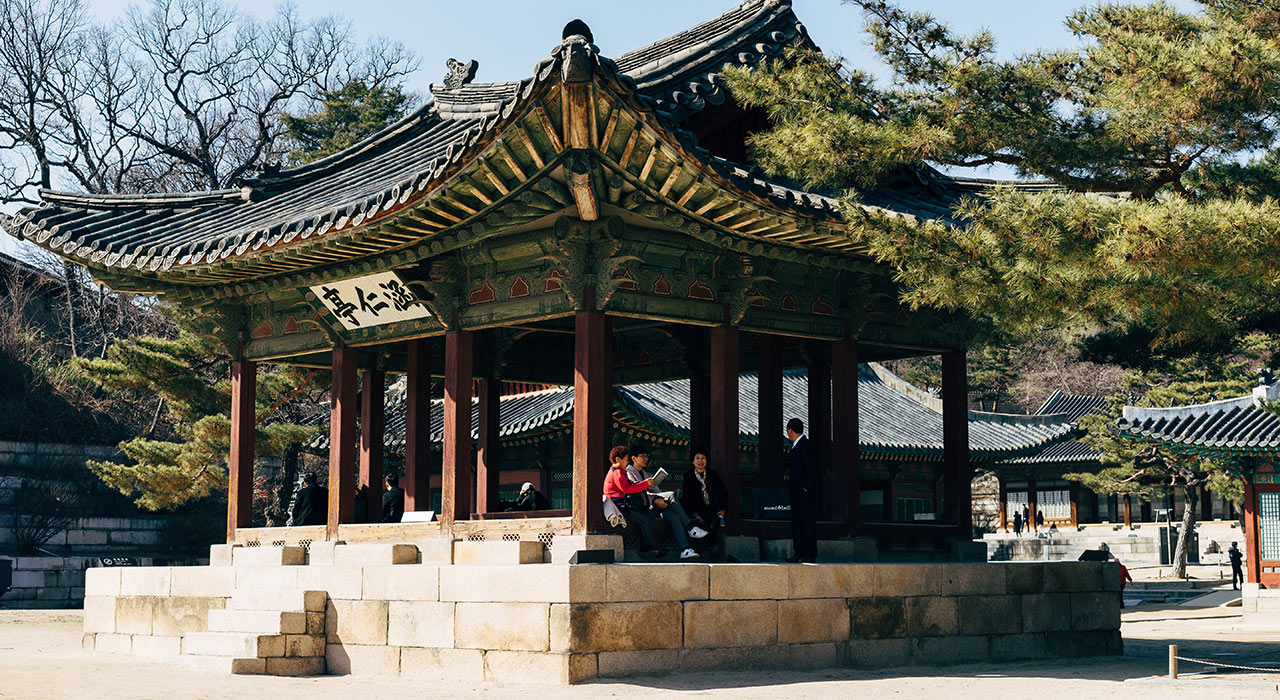
Full disclosure: This post contains affiliate links. ?
written by Caitlin Sacasas
Language: Korean
Reading time: 12 minutes
Published: Sep 18, 2020
Updated: Sep 17, 2021
30 Korean Phrases for Beginners and Travelers
Preparing for a trip to South Korea? The best way to get ready is to learn a few common Korean phrases before you go!
Why should you learn some basic Korean greetings and words? Because it will help you get the most from your travels! It’s amazing what doors open when you learn a few essential travel phrases .
A lot of Koreans aren’t very comfortable with English, and they know that it’s difficult to speak their language. But that means they’ll be more patient and understanding and appreciate your efforts. So you don’t have to be nervous about trying!
Besides that, you’ll have more opportunities to connect with Korean people. You can make new friends and experience South Korea more like a local and less like a tourist.
So here’s what we’re going to cover below:
- Essential Korean greetings and phrases
- Common Korean phrases for getting around
- Informal Korean phrases and slang
I’m confident you can learn these phrases with ease and make the most of your adventures in Korea!
I’ll first list the phrases as a “quick guide”, then I’ll go in-depth on when to use the phrases.
A quick note here: I’ve included the Hangul, the Korean writing system, so you can get used to seeing the language. If you’re only learning Korean for a quick trip, don’t worry about this too much. Focus on speaking. But if you’re learning Korean because you want to become fluent, then you need to learn how to read Hangul! Check out this article for how to read and write Korean Hangul .
Now, let’s learn Korean. 공부하자! ( gongbuhaja , “Let’s study!”)
Korean Phrases – Quick Guide
- “Hi” – 안녕하세요 ( annyeong haseyo )
- “Nice to Meet You” – 반갑습니다 ( bangapseubnida )
- “My Name is…” – 제 이름은… ( je ileum-eun )
- “Yes” – 예 ( ye )
- “No” – 아니 ( ani ).
- “Bye” – 안녕 ( annyeong )
- “Good Morning” – 좋은아침이에요 ( joeun achimieyo )
- “Goodnight” – 안녕히 주무세요 ( annyeonghi jumuseyo )
- “Please” – 주세요 ( juseyo )
- “Thank You” – 감사합니다 ( gamsahabnida )
- “Excuse Me” – 실례합니다 ( sillyehabnida )
- “I’m Sorry” – 미안해요 ( mianhaeyo ) / 죄송해요 ( joesonghaeyo )
- “Okay” – 괜찮아요 ( gwaenchanayo )
- “Left” – 왼쪽 ( oenjjok )
- “Right” – 오른쪽 ( oleunjjok )
- Straight – 직진 ( jigjin )
- “Please go to…” – …(으)로가주세요 ( (eu)lo gajuseyo )
- “Where is…” – …이어디예요 ( i eodiyeyo )
- “I don’t know” – 몰라요 ( mollayo )
“I want to speak in Korean” – 한국어를하고 싶습니다 ( Hangukeo-leul hago sipseubnida )
- “Please speak slowly” – 천천히 말씀해 주세요 ( cheoncheonhi malsseumhae juseyo )
- “The menu, please” – 메뉴주세요 ( menyu juseyo )
- “Bill, please” – 계산서주세요 ( gyesanseo juseyo )
- “I have an allergy to…” – …알레르기가 있습니다. ( alleleugiga issseubnida )
- “How much is it?” – 얼마에요? ( eolmayeyo )
- Do you have…” – …있어요? ( isseoyo )
- “What’s Up?” – 요즘 어때? ( yojeum eottae )
“Awesome” – 대박 ( daebak )
“one with the force” – 포스 있다 ( poseu itda ), essential korean greetings and phrases.
Now for more details on the above phrases. Let’s begin with the essentials. If you learn nothing else from this list, this section here will be most helpful to you during your travels. That’s because these phrases will help you be polite, respectful, and kind. So these are #1 priority!
“Hi” in Korean – 안녕하세요 ( annyeong haseyo )
In Korean, the phrase 안녕하세요 ( annyeong haseyo ) is a polite way to greet anyone.
But — funny story. I learned “hi” in Korean from watching Arrested Development . But on the show, they just say 안녕 ( annyeong ).
That’s become 안녕 is the informal version, and is more casual. There are actually many ways to say “hi” based on formality, and there are more tiered levels of respect than we have in English. (I explain this more in this article about how to say “hello” in Korean if you want to know more.)
But if you’re ever unsure which to use, 안녕하세요 ( annyeong haseyo ) is the way to go.
“How are you?” In Korean – 어떻게 지내세요? ( eotteohge jinaeseyo )
You can also use 안녕하세요? ( annyeong haseyo? ) to ask “How are you” in Korean, to which you would get a yes or no reply. That’s because 안녕하세요 ( annyeong haseyo ) literally means “are you at peace?”
But 어떻게 지내세요? ( eotteohge jinaeseyo ) is a bit deeper. It’s asking if your friend is really okay, how they’re really doing.
“Nice to Meet You” in Korean – 반갑습니다 ( bangapseubnida )
When you meet someone for the first time, it’s polite to use the phrase 반갑습니다 ( bangapseubnida ) to say “nice to meet you.” Note here that the romanized version says bangapseu b nida . But in reality, the “b” is pronounced more like an “m.” Bahn-gahp-suem-knee-dah.
This is the most common way to hear it. But there is a more polite version: 만나서 반갑습니다 ( mannaseo bangapseubnida ) This longer version only makes it more formal.
There’s another similar phrase that you’ll often hear when you meet someone for the first time. This phrase is 잘부탁드립니다 ( jalbutag deurimnida ). It doesn’t translate well into English, but it means something like “please look after me” or “thank you, please take care of it.” It’s used in many ways, but these are the two main uses.
The first usage is meeting someone for the first time and asking them to “please look after you”, as in, please keep in contact and have a good relationship.
The second usage is when you ask a favor of someone, and you ask them to handle it with care. It’s like “Thanks, I’ll leave it to you.”
Either way, if you say 반갑습니다 ( bangapseubnida ) to someone, they’ll likely respond with 저야말로 잘 부탁드립니다 ( jeoyamallo jalbutag deurimnida , lLikewise, nice to meet you.”)
“My Name is…” in Korean – 제 이름은… ( je ileum-eun )
이름 ( ileum ) is the Korean word for “name.” 제 ( je ) is “my” and 은 ( eun ) is the particle marker. So, you’ll add your name, plus the verb 이다 ( ida , “to be”).
So, if I want to introduce myself, I would say: 제 이름은 케이틀린입니다. ( je ileum-eun keiteullin-ibnida ) “My name is Caitlin.”
To make it more casual, you’d change the formal ending of 이다 ( ida ) from 입니다 ( ibnida ) to 이에요 ( ieyo ). That makes it less formal.
To simplify it even more, you could just say “I’m (name)”.
나는케이틀린이에요. ( na neun keiteullin-ieyo ) “I’m Caitlin.”
Yes and No in Korean
Yes and no are super easy to remember in Korean. Yes is 예 ( ye ) and no is 아니 ( ani ).
예 ( ye ) sounds a lot like “yes”. And 아니 ( ani ) reminds me of “anti-”, meaning something is negative or against something.
“Bye” in Korean – 안녕 ( annyeong )
That’s right, “goodbye” in Korean is the same as “hello”! But only in its casual form. Think of this as “bye” or “see ya” versus “goodbye”.
For a polite “goodbye”, there are two forms: 안녕히 계세요 ( annyeonghi gyeseyo ) and 안녕히 가세요 ( annyeonghi gaseyo ).
To be honest, these phrases sound nearly identical to the untrained ear.
But the change from gyeseyo to gaseyo changes the meaning. You use 안녕히 계세요 ( annyeonghi gyeseyo ) when you’re the one leaving . But if you’re staying, and the other person is leaving, you reply with 안녕히 가세요 ( annyeonghi gaseyo ).
“Good Morning” in Korean – 좋은아침이에요 ( joeun achimieyo )
In Korea it’s actually most common to use 안녕 ( annyeong ) for “good morning. (See how handy this one phrase is?) But sometimes you’ll hear 좋은아침이에요 ( joeun achimieyo ) to say “good morning”.
“Goodnight” in Korean – 안녕히 주무세요 ( annyeonghi jumuseyo )
That’s right, it’s annyeong again! This time, 안녕히 ( annyeonghi ) means “peacefully” and jumuseyo is the formal form of the verb “to sleep”, 자다 ( jada ). So it means “sleep peacefully”.
But that’s pretty formal. To say it casually, the phrase is 잘 자요 ( jal jayo ), which means “sleep well.”
“Please” in Korean – 주세요 ( juseyo )
Like many of the phrases here, “please” in Korean has a few different ways to say it, based on the level of formality. But 주세요 ( juseyo ) is the most standard one that you can use in everyday situations. Just add it to the end of your sentence.
“Thank You” in Korean – 감사합니다 ( gamsahabnida )
This is the formal way to say “thank you”. But if you’re thanking a friend, you could say it casually with 고마워요 ( gomawoyo ).
“You’re Welcome” in Korean – 천만에요 ( cheonmaneyo )
천만에요 ( cheonmaneyo ) is used to say “you’re welcome”, but it’s more like saying “don’t mention it.” Likewise, you can say 아니에요 ( anieyo ), which means “no” but it’s more like “no worries.”
“Excuse Me” in Korean – 실례합니다 ( sillyehabnida )
Need to get someone’s attention or ask them if you can squeeze by? Use 실례합니다 ( sillyehabnida ), which means “excuse me”. It’s a formal phrase, so it’s appropriate to use with strangers. (Who you’d usually be saying it to, anyway.)
“I’m Sorry” in Korean – 미안해요 ( mianhaeyo ) / 죄송해요 ( joesonghaeyo )
Both 미안해요 ( mianhaeyo ) and 죄송해요 ( joesonghaeyo ) are polite ways to say “I’m sorry” in Korean. They’re nearly identical in usage and formality, but 죄송해요 ( joesonghaeyo ) is a bit more polite.
Like the other phrases, you can make this more polite by changing haeyo to habnida , the more formal verb ending.
“Okay” in Korean – 괜찮아요 ( gwaenchanayo )
괜찮아요 ( gwaenchanayo ) means “okay” in Korean as in, “it’s okay” or “it’s not bad.” If you raise the intonation at the end of the phrase, it becomes: “Are you okay?”
But if you want to answer “okay” to something, you can use “yes” in Korean (예, ye ).
Common Korean Phrases for Getting Around
This next section, I’ll teach you a few helpful phrases for getting around in Korea. These are handy for asking directions, getting a taxi, or trying to converse with the locals. There are also a few phrases for dining and shopping, too.
Direction Words in Korean
If you’re trying to find your way around, you need to know the basic directions words. Left is 왼쪽 ( oenjjok ). Right is 오른쪽 ( oleunjjok ). And straight is 직진 ( jigjin ).
So for instance, you might hear 왼쪽으로 돌아 ( oenjjok-eulo dola ) which means “Turn left”.
“Please go to…” in Korean – _ (으)로가주세요 ( (eu)lo gajuseyo )
This one is a simple phrase to play with. 가주세요 ( gajuseyo ) is a combo of the verb 가다 ( gada , “to go”) and 주세요 ( juseyo ) which is “please”.
All you have to do is put the place you want to go to at the beginning and add the direction particle 로 ( lo ) or 으로 ( eulo ). If the word that comes before the particle ends in a consonant, use 으로 ( eulo ). But if the word ends with a vowel, you use 로 ( lo ).
“Where is…” in Korean – _ _ 이어디예요 ( i eodiyeyo )
Fill in the blank with what you’re looking for. Here’s an important one:
화장실이어디예요? ( hwajangsil-i eodiyeyo? ) “Where is the bathroom?”
“I don’t know” in Korean – 몰라요 ( mollayo )
If you don’t know the answer to something, you can say 몰라요 ( mollayo ) for “I don’t know.” This is in its standard polite form, but you could always make it more or less polite.
To contrast, “I know” is 알아요 ( arayo ).
If you’re traveling with the intent to learn the language, this one is for you. Speaking from day one is key to learning the language. But sometimes, you may come across people who really try to push you to fall back to your English instead (sometimes out of kindness, sometimes because they want English practice!).
Either way, let them know of your intent with this phrase.
“Please speak slowly” in Korean – 천천히 말씀해 주세요 ( cheoncheonhi malsseumhae juseyo )
Another key phrase that comes in handy often. If someone is speaking too fast for you to understand, ask them to slow it down with this phrase: 천천히 말씀해 주세요 ( cheoncheonhi malsseumhae juseyo )
“Please tell me one more time” is another helpful phrase in these situations. It’s 한 번 더 말씀해 주세요 ( han beon deo malsseumhae juseyo ) in Korean. Just remember for these two longer phrases: You already learned that end word, juseyo . It’s “please”! So these phrases aren’t so bad when you already know a tiny bit.
“The menu, please” in Korean – 메뉴주세요 ( menyu juseyo )
“Menu” is taken from English, so it’s 메뉴 ( menyu ). Makes it easy! And a lot of words are taken from English like that, which helps to understand the language as a beginner.
“Bill, please” in Korean – 계산서주세요 ( gyesanseo juseyo )
To ask for the bill, the word is 계산서 ( gyesanseo ). You can really ask for anything with this format. When you order food, ask for the item and add 주세요 ( juseyo ). Same with asking for a drink, or picking an item in a shop.
“I have an allergy to…” in Korean – _ 알레르기가 있습니다. ( alleleugiga issseubnida )
If you have a food allergy, memorize this one. You’ll need to look up the word for your allergy in Korean. Then add it to the beginning of the sentence, followed by the particle 에 ( e ), which means “for” or “to”.
For example, I’m allergic to gluten and have to be gluten-free. Here’s how I’d say this:
글루텐에 알레르기가 있습니다. ( geulluten-e alleleugiga issseubnida ) “I’m allergic to gluten.”
“How much is it?” in Korean – 얼마에요? ( eolmayeyo )
If you’re out shopping and don’t understand how Korean numbers and prices work yet, ask 얼마에요? ( eolmayeyo ). You can also add on 영어로 말해 줄래? ( yeong-eolo malhae jullae ) which means “Can you tell me in English?”
“Do you have…” in Korean – _ 있어요? ( isseoyo )
If you’re looking for something in particular, you can take any noun and add it before the verb “to have”, which is 있어요 ( isseoyo ).
Informal Korean Phrases and Slang
You may not think of these as everyday Korean phrases for travelers. But these phrases below are quite common to hear. And if you throw out one of these cool phrases, your Korean friends will for sure be impressed with your efforts.
“What’s Up?” in Korean – 요즘 어때? ( yojeum eottae )
With friends, you could say 요즘 어때? (yojeum eottae?) which is a very casual way to say “What’s up.” There’s also this phrase: 밥 먹었어? (bab meogeoss-eo?). It means “Did you eat?” It’s always good to check in with a friend and see if they need food!
“Fighting!” in Korean – 화이팅! ( hwaiting! )
This phrase is used as an exclamation of encouragement to keep doing your best. It’s often used as encouragement between students before an exam, between teammates before a game, or between friends whenever someone has to tackle something tough. It basically means “good luck” or “keep going!”
“It’s the honey jam” – 꿀잼 ( kkuljaem )
This phrase literally translates as “honey jam” but it really means something is funny or interesting. It’s the honey jam. The bread and butter. The good stuff.
This phrase is used all the time for a lot of different things. It can be “amazing”, “awesome”, or “wow”. Use it as an exclamation to anything exciting or shocking.
When I learned this was a thing, it quickly became my favorite Korean slang phrase!
Yes, this phrase literally means “to have the Force” or “to be one with the Force,” and it comes from Star Wars!
It’s used to describe people who have a strong aura or sense of self.
Enjoy Your Korean Adventures!
We covered a lot of essential Korean phrases to start off your travels! Now start practicing and preparing for that first conversation in Korean. You’ll be ready for your trip in no time. 화이팅! ( hwaiting! )
Caitlin Sacasas
Content Writer, Fluent in 3 Months
Caitlin is a copywriter, content strategist, and language learner. Besides languages, her passions are fitness, books, and Star Wars. Connect with her: Twitter | LinkedIn
Speaks: English, Japanese, Korean, Spanish
Have a 15-minute conversation in your new language after 90 days

Hi! I'm Petra!
- South Korea
Polyglot Petra
Slow travel for language and culture... Connect with the world like never before
Language · April 11, 2024 · Posted by: Petra
Essential Korean Phrases for Travel: Local Version!
Sharing is caring!
안녕하세요 (An-nyeong-ha-se-yo), friend! Ever found yourself in a foreign land, awestruck by its beauty but feeling just a bit lost in translation? As your language maniac who’s ventured through the bustling streets of Seoul and the tranquil countryside of Korea, I can tell you that knowing even a few Korean phrases can take you a long way with the locals. So, let’s get you speaking some Korean, shall we?

Korean Phrases for Travel
It’s true that as travelers, you get by with a lot more things than the locals. But when it comes to phrases in the local language, wrong pronunciations won’t always fly. So let’s get a few points out of the way first.
Thankfully, the Romanization of the Korean script is regulated by the Korean government, so no matter where you find Romanized Korean, they’ll all be spelled in the exact same way. No confusion there!
Some Unique Korean Vowels
EO – When you see the vowel “eo” in any word, it’s pronounced “aw.” Like saw, paw, law, etc. Linguistically speaking, it’s the halfway sound between “O” and “A.” So don’t go pronouncing it “aeyo” because no Korean will understand you!
A – This is the Spanish A, nothing more, nothing less. Think “can’t” in British English.
E – Again, Spanish E, or the French É, nothing more, nothing less.
AE – This is the open A, like “can” or “and” in American English
EU – Well, this doesn’t exist in English at all, doesn’t it… Let’s say it sounds like “mhm” but instead of in your throat, it’s pronounced with your mouth open. Check out this video to learn how it’s pronounced.
You will also see a lot of clustered consonants with Y and W. For example, “nyeong” or “kwi.” When you come across them in the upcoming phrases, they’re pronounced exactly the way they’re written, clustered.
Everything else is pretty straightforward!
Basic Greetings
Whether you’re navigating through Myeongdong’s vibrant markets or greeting your hotel concierge, knowing basic Korean greetings is a game-changer.
It doesn’t matter how bad you think you sound, even saying hello to them in their language and you’ll see their faces light up. It is the best feeling for both parties! Below are some hyper-basic phrases you can use in your everyday life (in Korea, of course).
인녕하세요! (An-nyeong-ha-se-yo): Hello!
죄송합니다 (Chwe-song-ham-ni-da): I’m sorry.
죄송한데요… (Chwe-song-han-de-yo): Excuse me… (This can be followed by any questions you want to ask.)
죄송해요 (Chwe-song-hae-yo): If your “Excuse me” isn’t followed by anything else… For example, if you’re just trying to get off the subway and need someone to move out of your way, say this. Technically, this word is a less serious version of “I’m sorry.”
네 (Ne): Yes (Very important!)
아니오 (A-ni-o): No. This version is more for telling someone “No, that’s not it” or “That’s not correct.”
괜찮아요 (Gwaen-cha-na-yo): It’s okay. It’s alright. Also used to mean “No, thank you.”
감사합니다 (Gam-sa-ham-ni-da): Thank you.
안녕히 계세요 (An-nyeong-hee-gye-se-yo): Goodbye (If you’re the one leaving, so this can be used with the staff at any establishment you visit; restaurants, shops, banks.)
안녕히 가세요 (An-nyeong-hee-ga-se-yo): Goodbye (If you’re staying where you are and they’re leaving.)

Speech Levels
The Korean language is like a beautifully wrapped gift, complex yet fascinating. It comes with different speech levels – formal, polite casual, and casual. As a traveler, the polite casual level is your best friend. In some circumstances, the formal version of a phrase is used more often (Like thank you and sorry, for example). But you can rest easy knowing I will give you the most natural-sounding (and easiest to say) version of everything.
Here, I will give you tips on how to recognize each level.
Formal Speech: Always ends with “ni-da.” You’ll hear this a lot through public announcements like on a flight, in department stores, at train stations, etc. The locals also use this speech in workplace settings.
Polite Casual Speech: Always ends with “yo.” This is the most commonly used speech among the locals, as long as they’re not besties or of the same age. You’ll hear it everywhere; a random stranger talking to the restaurant owner, mall staff talking to their customers, etc.
Casual Speech: If it sounds short, and you don’t hear a “ni-da” or “yo,” it’s casual speech or “Ban-mal (반말)” which translates to “Half-speech.” This is only used between close friends and family members, or used by an adult talking to a clearly younger person.
Now, you’re ready to dive off the deep end! Or are you? *wink* Let’s do it!
At the Hotel
After a long flight, communicating at the hotel might seem daunting. But don’t worry! Even the simplest ways to say certain phrases can be your savior.

I remember my friend and I checking into our hotel on Jeju Island in the rain, with a typhoon warning in effect; just one hello and our front desk staff gave us the warmest smile, we were like “Yeah, even if a typhoon does hit, we’ll be okay here.” It’s the little things, you guys!
체크인 부탁해주세요 (Che-keu-in | Pu-tak-hae-ju-se-yo): I’d like to check in, please. Don’t panic, you can shorten it if you’d like. 체크인 주세요 (Che-keu-in-ju-se-yo): That’s more like “Check-in, please.” Not super complete but they’ll understand you!
방이 있어요? (Bang-i-is-seo-yo?): Is there a room available?
Here’s a bonus for you foodies if you’re not up for searching on the first day.
좋은 식당은 어디 가면 돼요? (Cho-eun-shik-tang-eun | eo-di-ga-myeon-dwae-yo?): Where can I go for good food?
Korean Phrases for General Use
Here, you’ll find a few phrases that are important, but my poor brain didn’t know how or where to categorize them. Although I call them generic, I wouldn’t recommend skipping this section.
도와주세요 (Do-wa-ju-se-yo): Please help me. Use this in any situation you need help in, ranging from having a subway-related question to getting your purse stolen. I hope you never run into case #2, but if you do, don’t just say the sentence, scream it.
이 근처에 화장실이 있어요? (I-geun-cheo-e | hwa-jang-shil-i-is-seo-yo?): Are there restrooms nearby?
화장실이 어디 있어요? (Hwa-jang-shil-i | eo-di-is-seo-yo?): Where is the restroom?
But speaking of restrooms… when in doubt, go down the closest subway station. There are always clean restrooms down there before passing the turnstiles.
이 근처에 ATM이 있어요? (I-geun-cheo-e | ATM-i-is-seo-yo?): Is there an ATM around here?
Phrases for Using Public Transport
Seoul’s public transport is easily the best I’ve seen so far. It’s well spread out, signs are clearly labeled, and stations are super clean. But depending on your level of familiarity with the subway systems of the world, it can be a little tricky. If you ever get confused, I hope these phrases below will help!
가장 가까운 지하철역이 어디 있어요? (Gajang-ka-ga-un | ji-ha-cheol-yeok-i | eo-di-is-seo-yo?): Where is the closest subway station? Or if you need to shorten it… 가장 가까운 역이 어디 있어요? (Gajang-ka-ga-un | yeok-i | eo-di-is-seo-yo?): Where is the closest station? We’ll just cross our fingers that the lucky Korean person knows exactly what type of station we’re talking about. They likely will, though!
이 역은 어떻게 가면 돼요? (I-yeok-eun | eo-teo-ke-ga-myeon-dwae-yo?): How do I get to this station? Don’t forget to point out which station you’re referring to!
Assuming you’ve struck up a conversation on how to get somewhere with a Korean stranger… If you now want to confirm whether you’re on the right side of the platform for the direction you’re going in, see below.
이 쪽은 맞아요? (I-jok-eun | ma-ja-yo?): Is this the correct side?
And the following phrases are for taxis if you ever need to use them.
여기로 가주세요 (Yeo-gi-ro-ga-ju-se-yo): Go here, please. Have the address ready and hand it to your driver!
여긴 괜찮아요 (Yeo-gin-gwaen-cha-na-yo): You can drop me off here. ( Direct translation: Here is fine.)
거기서 멈춰주세요 (Geo-gi-seo | meom-chweo-ju-se-yo): Drop me off there, please (Don’t forget to point!)

Phrases for Eating and Drinking
Food is the heart of Korean culture. Everything is just delicious. And from street food to fine dining, being able to just point at a thing and say “This one, please” is a classic tourist move and an absolute lifesaver. So is being able to say “I can’t eat shellfish.” A literal lifesaver, that last one. Here we go, foodies. Basics first.
영업 아직 하세요? (Yeong-eob | a-jik-ha-se-yo?): Are you still open?
몇시에 끝나요? (Myeot-shi-e | Geun-na-yo?): What time do you close?
몇시에 열어요? (Myeot-shi-e | yeo-reo-yo?): What time do you open?
이거 주세요 (I-geo-ju-se-yo): This one, please
저는 — 못 먹어요 (Cheo-neun [insert food] mot-meo-geo-yo): I can’t eat —
- 해산물 (Hae-san-mul): Seafood
- 조개 (Jo-gae): Shellfish
- 견과류 (Gyeon-gwa-ryu): Tree nuts
- 양파 (Yang-pa): Onions
- 마늘 (Ma-neul): Garlic
- 매운거 (Mae-un-geo): Literal “spicy stuff.”
Notice that I’m not teaching you how to say “I don’t eat” but “I CAN’T eat.” So the intensity is implied. If for any reason you’d rather specify it’s an allergy, see the option below.
- 저는 — 알러지가 있어요 (Cheo-neun [insert food] al-leo-ji-ga-is-seo-yo): I’m allergic to —
많이 매워요? (Ma-ni-mae-weo-yo?): Is it very spicy?
덜 맵게 해주세요 (Deol-maep-ge | hae-ju-se-yo): Please make it less spicy. It’s important to get the “Deol” right with the L sound at the end, which means “less.” Because guess what… “Deo” without the L means “More.”
물 좀 더 주세요 (Mul-jom | deo-ju-se-yo): More water, please.
맛있어요 (Ma-shi-seo-yo): It’s delicious
이거 포장해주세요 (I-geo | po-jang-hae-ju-se-yo): Pack this to go, please.

My all-time favorite night-dining experience? A cup of Ramyeon (instant noodles) and a bottle of soju by the Han River, watching the Banpo Bridge Water Show . Seriously, forget restaurants for one night. If you truly want to feel immersed in the local culture, Ramyeon by the Han River is the way to go.
Overcoming Language Barriers
Even with basic phrases, there will be moments of confusion. That’s where you start to think “Man… How do I ask if they speak English…” or “I should have learned how to say speak more slowly, please…”
Or even if you’ve nailed the phrases on your end, or in fact, you’ve nailed it so well, the locals just throw more full-speed Korean phrases right back at you and then you’re speechless.
This section is where I will attempt to limit these instances for you. Here we go. Last one!
천천히 말해주세요 (Cheon-cheon-hee | mal-hae-ju-se-yo): Please speak more slowly.
영어 할 수 있으세요? (Yeong-eo | hal-su-is-seu-se-yo?): Can you speak English?
Phrases You Might Hear from the Locals
뭘 도와드릴까요? (Mweol | do-wa-deu-ril-ga-yo?): How can I help?
뭘 드릴까요? (Mweol | deu-ril-ga-yo?): What would you like? (What can I get for you?)
드시고 가세요? (Deu-shi-go-ga-se-yo?): For here or to go? (Are you eating and then leaving?)
- If you’re dining in, say yes. Remember 네 (ne) from the beginning of this post?
- If you’re taking it to go, say 포장이요 (po-jang-i-yo) .
영수증 드릴까요? (Yeong-su-jeung-deu-ril-ga-yo?): Would you like your receipt?
- If you want the receipt, say 네 (ne).
- If not, say “It’s okay.” 괜찮아요 (Gwaen-cha-na-yo) .
If this entire article has failed you (God, I hope not… I tried my best!), remember to NEVER use Google Translate! The Google software still struggles to understand the nuances of Asian languages, unfortunately. Download “ Papago ” and you’ll be okay anywhere!
As you embark on your Korean adventure, remember, each phrase you learn is more than just words; it’s a key to unlocking genuine connections and unforgettable experiences. This also means that at the end of the day, what matters more than getting these phrases right, or whether or not the Korean people understand you, is the humanity you all share.
If you care about their culture, they will feel it. At that point, it won’t even matter if you understand each other, they will help you. Kindness and common humanity win, my friends. Enjoy your trip!
Do You Enjoy Language Posts?
If you’re a language fan who enjoys getting sneak peeks into other cultures, you might also enjoy this post with 25 Essential Thai Phrases for Travel .
Or dig deeper into this language with How to Respectfully Address Others in Korean .
Getting to Know Seoul
If you’re here because you’ve decided to visit Seoul, here are some articles to get you started on planning!
- Where to Stay in Seoul
- 15 Things to Do in Seoul
- Seoul 5-day Itinerary
If you love joining tours to learn more about other aspects of the city, I highly recommend visiting this blog post below. It’s a list of the best tours and experiences I’ve personally curated for you. Whether you’re a foodie, K-Drama fan, K-Pop fan, or a culture fanatic like me, there’s something for you!
- Unique Experiences and Tours in Seoul
More ways I can help you 👇🏻
The main reason I started sharing about my travels was to help people travel and appreciate their destination culture as deeply as I do. I believe that the more we understand other people, the better we empathize and open our minds to those who are different. Wouldn’t that be the kind of world we’d want to live in?
To help streamline this mission, I offer 3 travel-planning services: Trip Consultation Calls , Curated Recommendations , and Customized Itineraries .
If you’d like extra help (or a faster and easier planning process) with your Korea trip, visit my Thatch profile and book these services!
Common Questions
Exploring Seoul is an adventure, and while you’ll find English speakers in tourist areas, knowing a few Korean phrases will enrich your experience and connect you with locals, especially when you wander out to more rural spots or when you go into more traditional restaurants.
Greetings are always the most common in any language. Even if you feel defeated about all the phrases in this article, just knowing 안녕하세요 (hello) and 감사합니다 (thank you) will get you far!
Absolutely! Street food is a must-try. Phrases like ‘I-geo eol-ma-ye-yo?’ (How much is this?) or ‘I-geo ju-se-yo’ (This one, please) will make sure you’ve gained a few pounds upon returning home . (Heheee)
Understanding local customs adds depth to your interactions. Knowing when to bow or how to address elders can turn simple phrases into meaningful exchanges. But as long as you stick to the sentences I listed, you’ll be within the safely polite zone. As for bowing, think of it like a handshake or a wave, do it when you greet someone, and do it again when you’re leaving.
The most common one you’ll hear everywhere in local conversations is 대박 (dae-bak), which means “Awesome!” but is also used for any overwhelming or surprising situation! 멘붕 (Men-bung) is another one. It means “Mind-blown.”

Share with your friends!
More seoul ideas….

Top 15 Unique Experiences and Tours in Seoul

Places to Visit in South Korea: Through My Best Photos

Dos and Don’ts in Korea: Etiquettes Guide for Visitors

KTX Tickets: The Step-by-Step Guide to Buying Online

Day Trips from Seoul: Venturing Out to Epic Sights

Where to Stay in Seoul: Your Ultimate Guide to the Neighborhoods

Navigating the Korean Language: Respectfully Addressing Others

Adventurously Local: 5 Eccentric Restaurants in Seoul
You’ll also love.

Leave a Reply Cancel reply
Your email address will not be published. Required fields are marked *
Save my name, email, and website in this browser for the next time I comment.

I hope you enjoyed your time reading and learning about travel, languages, and cultures. Thanks so much for stopping by!
Work With Me
- Privacy Policy
- Terms and Conditions
Copyright © 2024 Polyglot Petra · Theme by 17th Avenue

Essential Korean Language for Travel that You Must Know

Are you planning to travel to Korea? Korean travel phrases in language-learning are absolutely essential for just this reason!
Learning basic South Korean travel phrases will definitely help you in nearly any situation, including urgent ones. The Korean travel phrases and Korean travel words you’ll learn in this article will make your travels more fun and help you connect with locals, so that you can get the most out of your upcoming trip to South Korea!
Table of Contents
- Essential Korean Travel Phrases: Basic Expressions
- Essential Korean Phrases: Transportation
- Essential Korean Phrases: Shopping
- Essential Korean Phrases: At Restaurants
- Essential Korean Phrases: Asking for and Giving Directions
- Essential Korean Phrases: Emergencies
- Essential Korean Phrases: Flattery Phrases
- Essential Korean Phrases: Useful Phrases to Go Through Language Problems
- Essential Korean Phrases: Buying Tickets at a Museum
- Essential Korean Phrases: Taking Pictures
- How KoreanClass101.com Can Help You with Korean

1. Essential Korean Travel Phrases: Basic Expressions

You’ll be able to converse with local native Koreans by simply remembering these basic phrases. Koreans will appreciate the fact that you made the effort to speak to them in their local language, and it will certainly add more fun to your South Korea trip.
1- 안녕하세요 ( annyeonghaseyo ) – “hello” (polite form)
This is one of the most basic and commonly used Korean phrases for travelling, so be sure to keep it in your arsenal!
Example 1: You enter a restaurant and a waitress greets you.
- Waitress: 안녕하세요. Waitress: Annyeonghaseyo . Waitress: “Hello.”
- You: 안녕하세요. You: Annyeonghaseyo . You: “Hello.”
Example 2: You take a taxi and want to greet the taxi driver.
- Taxi driver: 네, 안녕하세요. 어디로 가시나요? Taxi driver: Ne, annyeonghaseyo. Eodiro gasinayo? Taxi driver: “Yes, hello. Where would you like to go?”
2 – 반갑습니다 ( bangapseumnida ) – “nice to meet you” (polite form)
Example 1: Jason went to your friend’s house and met their roommate, who is older than him, for the first time.
- Roommate: 어? 친구 데려왔어? 누구야? Roommate: Eo? Chingu deryeowasseo? Nuguya? Roommate: “Oh, you brought your friend home? Who is he?”
- Jason: 안녕하세요, 반갑습니다. Jason: Annyeonghaseyo, bangapseumnida. Jason: “Hello, nice to meet you.”
Example 2: Michael went to a language exchange event in Hongdae and wants to introduce himself to others.
- Michael: 안녕하세요, 저는 마이클이라고 합니다. 반갑습니다. Michael: Annyeonghaseyo, jeoneun maikeurirago hamnida. Bangapseumnida. Michael: “Hello, my name is Michael. Nice to meet you.”
3 – 감사합니다 ( gamsahamnida ) – “thank you” (polite form)
Example 1: You’re walking in the busy streets in the Gangnam area, and see a lady drop her wallet. You pick it up and give it to her.
- You: 여기, 지갑 떨어뜨리셨어요. You: Yeogi, jigap tteoreotteurisyeosseoyo. You: “Here, you dropped your wallet.”
- Lady: 어머, 감사합니다. Lady: Eomeo, gamsahamnida. Lady: “Oh, thank you so much.”
Example 2: You order a cup of coffee at The Coffee Bean & Tea Leaf and a clerk gives you the change after you’ve paid.
- Clerk: 500원 거스름돈 드리겠습니다. Clerk: Obaegwon geoseureumdon deurigetseumnida. Clerk: “Here is [your] change, 500 won.”
- You: 감사합니다. You: Gamsahamnida. You: “Thank you.”
4 – 실례합니다 ( sillyehamnida ) – “excuse me” (polite form)
This is one of the most useful Korean travel phrases you can learn, so keep it in mind.
Example 1: You’re on a crowded subway and need to get closer to the exit.
- You: 실례합니다. 지나가겠습니다. You: Sillyehamnida. Jinagagetseumnida. You: “Excuse me. Passing through.”
Example 2: You accidentally stepped on a stranger’s foot inside the busy subway.
- You: 실례합니다. You: Sillyehamnida. You: “Excuse me.”
5- 네; 아니요; 괜찮아요. ( ne; aniyo; gwaenchanayo. ) – “yes; no; no, thank you.”
While you learn Korean travel phrases, never underestimate the importance of even the smallest words. They can have the most impact!
- You: 이쪽으로 가면 화장실인가요? You: Ijjogeuro gamyeon hwajangsiringayo? You: “Is this way to the toilet?”
- Clerk: 아니요, 그쪽은 창고예요. Clerk: Aniyo, geujjogeun changgoyeyo. Clerk: “No, that’s the storage section.”
- You: 아, 그럼 저쪽으로 가면 되나요? You: A, geureom jeojjogeuro gamyeon doenayo? You: “Ah, so should I go that way?”
- Clerk: 네, 맞아요. Clerk: Ne, majayo. Clerk: “Yes, correct.”
Example 2: You had a great time hanging out with your friend. But it’s getting late—time to go home.
- Friend: 많이 어두워졌네, 집에 데려다 줄까? Friend: Mani eoduwojyeonne, jibe deryeoda julkka? Friend: “It became really dark. Did you want me to take you to your home?”
- You: 아니, 괜찮아. 혼자갈 수 있어. You: Ani, gwaenchana. Honjagal su isseo. You: “No, I’m fine. I can go home by myself.”
We have more free lessons like “ Top 10 Conversational Phrases ,” so do check out this page when you have time.
2. Essential Korean Phrases: Transportation

Traveling by public transportation is the most efficient way to get around South Korea. The fares for the subway and public buses are very cheap, and the routes are easy to understand. There are also announcements offered in various languages, so the chance of getting lost is slim.
However, you need to remember that most of the staff at the ticket booths don’t speak English. Let’s learn the most important and useful phrases for buying tickets and conversing with any staff that you encounter.
1- ~으로 가는 티켓 주세요. ( ~euro ganeun tiket juseyo. )
~으로 가는 티켓 주세요. ( ~euro ganeun tiket juseyo. ) means “Please give me a ticket to ~.” Use this phrase to buy any tickets to go out of the city area.
Example 1: You’re at Dong-Daegu train station ( 동대구역; dongdaeguyeok ) to buy a train ticket to Busan .
- You: 부산으로 가는 티켓 주세요. You: Busaneuro ganeun tiket juseyo You: “I would like to buy a ticket to go to Busan.”
- Staff: 출발시간은 언제가 괜찮으십니까? Staff: Chulbalsiganeun eonjega gwaenchaneusimnikka? Staff: “When would you like to depart?”
- You: 오후 1시쯤 출발하는 기차 있을까요? You: Ohu 1sijjeum chulbalhaneun gicha isseulkkayo? You: “Are there any trains that depart at 13:00 (one o’clock PM)?”
Example 2: You’re at the Seoul Express Bus Terminal to buy a bus ticket to Pohang ( 포항; pohang ).
- You: 안녕하세요, 오후 1시 포항으로 가는 티켓 주세요. You: Annyeonghaseyo, ohu 1si pohangeuro ganeun tiket juseyo. You: “Hello, I would like to buy a ticket to go to Pohang at 13:00 (one o’clock PM).”
- Staff: 네, 몇장 드리면 될까요? Staff: Ne, myeotjang deurimyeon doelkkayo? Staff: “Okay, how many tickets do you need?”
- You: 한장이요. You: Hanjangiyo. You: “Just one.”
2- ~으로 가는 전철/버스 인가요? ( ~euro ganeun jeoncheol/beoseu ingayo? )
This phrase means “Does this subway/bus go to ~?”
It’s likely that you’ll take a bus or subway to get around in South Korea. This travel phrase will come in handy when you want to ask a question to locals. When you travel by boat or ferry, simply replace the noun with “boat” ( 배; bae ).
Example 1: You’re at the Incheon airport and need to go to the Jamsil area. A bus stops in front of you, and you want to ask whether this bus goes to Jamsil.
- You: 잠실로 가는 버스인가요? You: Jamsillo ganeun beoseuingayo? You: “Does this bus go to Jamsil?”
- Staff: 네, 갑니다. Staff: Ne, gamnida. Staff: “Yes, it does.”
Example 2: You’re at Gukje market in Busan and you need to catch the subway to go to Gimhae International airport .
- You: 실례합니다. 이 전철은 부산 공항으로 가는 전철인가요? You: Sillyehamnida. i jeoncheoreun busan gonghangeuro ganeun jeoncheoringayo? You: “Excuse me. Does this subway go to the Busan airport?”
- Stranger: 아니요, 부산 공항으로 가는 전철은 저쪽이예요. Stranger: Aniyo, busan gonghangeuro ganeun jeoncheoreun jeojjogiyeyo. Stranger: “No, the subway bound for the Busan airport is over there.”
3- ~으로 가주세요. ( ~euro gajuseyo. )
This phrase means “Please take me to ~.”
This travel phrase is the most effective and simple phrase to tell your taxi driver. Simply add the destination that you want to reach, such as “ Insadong ” (인사동; insadong ) or “ Dongdaemun ” (동대문; dongdaemun ) etc., followed by 으로 가주세요. ( ~euro gajuseyo. ). That’s it. You don’t need to say anything else!
However, if you want to go somewhere less touristy, and it requires you to explain where exactly you want to go, give the taxi driver the address. Every taxi has a navigation system installed. Also, taxi companies provide free interpreter services in South Korea.
To know whether the taxi you got in offers this service, take a look on the right-hand side of the door. Usually, there’s a large rectangular sign that explains about this service in English, Japanese, and Chinese. So if you’re struggling to explain where you want to go, simply say “free interpreter” to the taxi driver.
Example 1: You’re at “ Gangnam station ” (강남역; gangnamyeok ) right now and want to move to “ Itaewon ” (이태원; itaewon ) to have dinner with your friends.
- You: 안녕하세요, 이태원역으로 가주세요. You: Annyeonghaseyo, itaewonyeogeuro gajuseyo. You: “Hello, please take me to Itaewon station.”
- Taxi driver: 네, 알겠습니다. Taxi driver: Ne, algetseumnida. Taxi driver: “Sure.”
Example 2: You want to visit your friend’s house in Busan, and you have his address.
- You: 안녕하세요, 이곳으로 가고 싶은데요.. (주소를 보여줌) You: Annyeonghaseyo, igoseuro gago sipeundeyo.. (jusoreul boyeojum) You: “Hello, I would like to go to this place…” (show him the address)
- Taxi driver: 잠시만요. (네비게이션으로 주소 확인함) Taxi driver: Jamsimanyo. (nebigeisyeoneuro juso hwaginham) Taxi driver: “Please hold on…” (checks the location via navigation system)
3. Essential Korean Phrases: Shopping

1 – 이거/저것 얼마예요? ( igeo/jeogeot eolmayeyo? )
This phrase means “How much is this/that?”
Use this travel phrase when you want to ask the seller how much the items cost while shopping in South Korea. To get the seller’s attention, you can say 저기요 ( jeogiyo ) which means “excuse me.” If the seller is male, you can call him by 아저씨 ( ajeossi ) meaning “mature man,” and if the seller is female, you can call her by 아줌마 ( ajumma ) meaning “matured female” or 이모 ( imo ) meaning “aunt.”
Also, remember that 이것 ( igeot ) means “this” and 저것 ( jeogeot ) means “that.” If you want each of them to be plural, say 이것들 ( igeotdeul ) meaning “these” and 저것들 ( jeogeotdeul ) meaning “those.”
Example 1: You’re shopping at a famous market called “ Gwangjang market ” (광장시장; Gwangjangsijang ), in Seoul. You found a set of Korean traditional clothing called “ Hanbok ” (한복; hanbok ) which you want to buy, and you’re curious to know how much it costs.
- You: 아저씨, 이거 얼마에요? You: Ajeossi, igeo eolmaeyo? You: “Excuse me sir, how much is this?”
- Seller: 7만원이에요. Seller: Chilmanwonieyo. Seller: “It’s 70,000 won.”
Example 2: You found a pink sweater that you like while shopping at 서문시장 ( seomun sijang ) in Daegu . You want to ask how much the sweater costs.
- You: 저기요, 저건 얼마예요? You: jeogiyo, jeogeon eolmayeyo? You: “Excuse me, how much is that?”
- Seller: 2만9천원이예요. Seller: Imangucheonwoniyeyo. Seller: “It’s 29,000 won.”
- You: (저거) 한개 주세요. You: (jeogeo) Hangae juseyo. You: “Please give me one (of that).”
2 – 이거 #개 주세요. ( igeo #gae juseyo. )
This phrase means “Please give me [number] [of the product].”
Example 1: You’re at the supermarket and the clerk wants to ask how many plastic bags you want.
- Seller: 비닐봉지 몇개 드릴까요? Seller: Binilbongji myeotgae deurilkkayo? Seller: “How many plastic bags would you like to have?”
- You: 2개 주세요. You: Dugae juseyo. You: “Two please.”
Example 2: You found a beautiful “Korean traditional pocket” called 전통 주머니 ( jeontong jumeoni ) and want to buy six of them.
- You: 이거 6개 주세요. You: Igeo yeoseotgae juseyo. You: “Please give me six (of the Korean traditional pockets).”
- Seller: 네. Seller: Ne. Seller: “Ok.”
On our website, KoreanClass101 , you can find many lessons on counting numbers in Korean. Feel free to check out our website whenever you want.
3- 조금만 깎아 주시면 안될까요? ( Jogeumman kkakka jusimyeon andoelkkayo? )
This phrase means “Can you please reduce the price?”
The prices in Korea are usually fixed, but you can definitely negotiate the price at a market. To ask for a discount, use this phrase!
If you want to buy items for a cheaper price in Korea, try to pay by cash. If you pay with a credit card, you’ll be charged extra (approximately ten percent more).
Example 1: You’re at 남대문시장 ( Namdaemun sijang ) meaning “Namdaemun market” in Seoul and found a nice jacket. You ask for the price and think that it costs too much. You want to negotiate the price.
- You: 너무 이쁘긴한데… 비싸네요. 조금만 깎아 주시면 안될까요? You: Neomu ippeuginhande… bissaneyo. Jogeumman kkakka jusimyeon andoelkkayo? You: “It’s really pretty…but it’s expensive. Can you please reduce the price a bit?”
- Seller: 그럼 3,000원만 깎아 줄게요. Seller: Geureom samcheonwonman kkakka julgeyo. Seller: “I will give you a discount of 3,000 won then.”
Example 2: You’re at 고속터미널 역 지하상가 ( gosokteomineol yeok jihasangga ) an underground shopping mall in the Express Bus Terminal station in Seoul, and want to buy a pair of jeans. The sign says that it costs 10,000 won if you pay by cash. But you only have a credit card.
- You: 이거 카드로 계산할게요. You: Igeo kadeuro gyesanhalgeyo. You: “I will pay by credit card.”
- Seller: 카드로 계산하면 11,000원이에요. 현금으로 내는게 더 저렴해요. Seller: kadeuro gyesanhamyeon mancheonwonieyo. hyeongeumeuro naeneun ge deo jeoryeomhaeyo. Seller: “If you pay by card, it will be 11,000 won. It will be cheaper by cash.”
- You: 아 그래요? 이곳에 가장 가까운 ATM기계는 어디에 있나요? You: Igose gajang gakkaun ATMgigyeneun eodie innayo? You: “Oh really? Where is the nearest ATM from here?”
4- S/M/L 사이즈 있나요? ( S/M/L saijeu innayo? )
This phrase means “Do you have S/M/L size for this?”
When you ask for a different size, if a seller says it’s 프리사이즈 ( peurisaijeu ), this means that it’s “free-size.” Do be careful when you buy free-size clothing, as it may be too big or small when you try it on. Also, for many shops at a market or an underground shopping area, you can’t refund the items after purchase.
Example 1: You’re at an underground shopping mall in Gangnam station. You find a sweater and there’s no size written on the tag.
- You: 이건 사이즈가 어떻게 돼요? You: Igeon saijeuga eotteoke dwaeyo? You: “What size is this?”
- Seller: 그거 프리사이즈에요. Seller: Geugeo peurisaijeueyo. Seller: “It’s a free-size sweater.”
Example 2: You want to ask if the dress you chose comes in different sizes.
- You: 이 드레스 M 사이즈도 있나요? You: I deureseu em saijeudo innayo? You: “Do you have an M size?”
- Seller: 네, 잠시만요. Seller: Ne, jamsimanyo. Seller: “Yes, hold on a sec.”
5- 뭐가 제일 인기 많아요? ( mwoga jeil ingi manayo? )
This phrase means “What are the most popular ones?”
Sometimes it can be overwhelming when you need to choose something out of so many goods. If you’re not sure which one to choose, it’s always safe to ask a seller which item is popular these days.
Example 1: You bought a number of items at a shop and a seller wants to give you some freebies.
- You: 너무 이쁜것들이 많아서 못 고르겠어요. 어떤 것이 제일 인기가 많아요? You: Neomu ippeungeotdeuri manaseo mot goreugesseoyo. eotteon geosi jeil ingiga manayo? You: “There are so many things that I can’t choose. What is the most popular one from here?”
- Seller: 요즘은 이 아이템이 한국에서 인기가 많아요. Seller: Yojeumeun i aitemi hangugeseo ingiga manayo. Seller: “These days, this item is quite popular in Korea.”
Example 2: You want to buy a dress that’s trending in Korea.
- You: 어느 드레스가 제일 인기 많아요? You: Eoneu deureseuga jeil ingi manayo? You: “Which dress is the most popular dress in Korea?”
- Seller: 이거요. Seller: Igeoyo. Seller: “This one.”
Do you want more phrases for shopping? Check out “ 15 Shopping Phrases. Exchanges, Refunds and Complaints !” on KoreanClass101.com.
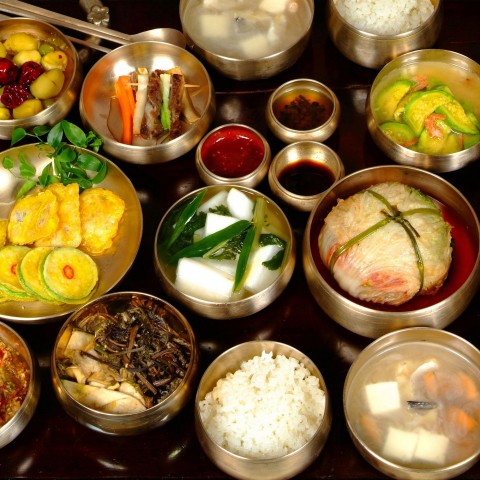
4. Essential Korean Phrases: At Restaurants
1- ~주세요 ( ~juseyo ).
This phrase means “Please give me ~,” and it can be used not only to order dishes, but also to buy things like tickets or clothing.
Example 1: You enter a restaurant and want to ask for a menu.
- You: 저기요, 메뉴주세요. You: Jeogiyo, menyujuseyo. You: “Excuse me, please give me a menu.”
- Waitress: 네, 여기있습니다. Waitress: Ne, yeogiitseumnida. Waitress: “Sure, here you go.”
Example 2: You want to order a bottle of beer and soju to try to make 소맥 ( somaek ) which is a whiskey and beer cocktail.
- You: 저기요, 맥주 한병이랑 소주 한병 주세요. You: Jeogiyo, maekju hanbyeongirang soju hanbyeong juseyo. You: “Excuse me, can I please have a bottle of beer and soju?”
- Waitress:네, 여기있습니다. Waitress: Ne, yeogiitseumnida. Waitress: “Sure, here you go.”
2- 많이 매운가요? ( Mani maeungayo? )
This phrase means “Is this spicy?”
Many Korean dishes are spicy for foreigners because we use 고추장 ( Gochujang ) meaning “red chili paste” or 고춧가루 ( gochutgaru ) meaning “chili powder” in most dishes. When ordering spicy dishes in Korea, you can request to make it less spicy, so you can still enjoy Korean dishes!
Example 1: You’re at one of the famous ddeokbokki restaurants named 죠스떡볶이 ( jyoseutteokbokki ). It’s your first time trying some ddeokbokki .
- You: 떡볶이 주세요. You: Tteokbokki juseyo. You: “I will have ddeokbokki please.”
- Waitress: 매운 거 잘 못 드시면 많이 매우실 텐데요. Waitress: Maeun geo jal mot deusimyeon mani maeusil tendeyo. Waitress: “If you struggle a lot to eat spicy foods, you may not be able to eat this dish.”
- You: 아, 많이 매운가요? 그럼 덜 맵게 해주시겠어요? You: A, mani maeungayo? geureom deol maepge haejusigesseoyo? You: “Ah, is it really that spicy? Is it possible to make it less spicy?”
Example 2: You want to ask whether the dish you want to order is spicy or not.
- You: 이거 많이 매운가요? You: Igeo mani maeungayo? You: “Is this spicy?”
- Waiter: 아니요, 맵지 않습니다. Waiter: Aniyo, maepji anseumnida. Waiter: “No, it’s not spicy.”
3- 저는 채식주의자예요. ( Jeoneun chaesikjuuijayeyo )
This important phrase means “I am a vegetarian.”
“Vegetarian” is 채식주의자 ( chaesikjuuija ) and “vegan” is 비건 ( bigeon ) in Korean. Although the number of vegetarian restaurants is increasing, this concept (especially veganism) is fairly new to South Korea. Therefore, do research in advance if you’re after specific vegetarian/vegan restaurants in Korea.
Otherwise, vegetarian dishes are easy to find, so don’t worry too much. Classic dishes include 야채 김밥 (vegetable gimbap ) and 잡채 ( japchae ).
Example 1: You’re at a gimbap restaurant and want to order a vegetarian gimbap .
- You: 저는 채식주의자예요. 어떤 김밥을 먹으면 될까요? You: Jeoneun chaesikjuuijayeyo. eotteon gimbabeul meogeumyeon doelkkayo? You: “I am vegetarian. Is there any gimbap for me to eat?”
- Staff: 채식주의자세요? 그럼 야채 김밥 드셔야겠네요. Staff: Chaesikjuuijaseyo? geureom yachae gimbap deusyeoyagenneyo. Staff: “Are you vegetarian? Then you should order the vegetable gimbap.”
Example 2: You went to a restaurant with your friend, who doesn’t know that you’re vegetarian. He wants to order 삼겹살 ( samgyeopsal ) or “pork belly.”
- Friend: 우리 삼겹살 시켜먹을까? Friend: Uri samgyeopsal sikyeomeogeulkka? Friend: “Shall we order some pork belly?”
- You: 미안, 나 채식주의자야. 그래서 고기 못 먹어 You: Mian, na chaesikjuuijaya. Geuraeseo gogi monmeogeo You: “Sorry, I’m vegetarian, so I can’t eat meat.”
- Friend: 아 진짜? 몰랐네. 미안, 그럼 다른거 시켜먹자. Friend: A jinjja? mollanne. Mian, geureom dareungeo sikyeomeokja. Friend: “Oh really? I did not know. Sorry, let’s order something else.”
4- ~ 알러지있어요 ( alleojiisseoyo ) – “I am allergic to ~.”
This phrase means “I am allergic to ~,” and may be the most important restaurant phrase you learn today!
Are you allergic to peanuts? “Peanut” is called 땅콩 ( ttangkong ) in Korean. “Wheat” is called 밀 ( mil ).
To say that you’re allergic to something, just say the name of the food that you’re allergic to, followed by 알러지있어요 ( alleojiisseoyo ).
Example 1: You’re allergic to peanuts and you want to ask if the snack you want to buy contains some nuts.
- You: 제가 땅콩 알레르기가 있는데요, 이 과자 땅콩이 들어가 있나요? You: Jega ttangkong allereugiga inneundeyo, I gwaja ttangkongi deureoga innayo? You: “I am allergic to peanuts, I am wondering if this snack contains some peanuts?”
- Staff: 확인해볼께요. 네, 들어가 있네요. Staff: Hwaginhaebolkkeyo. Ne, deureoga inneyo. Staff: “Let me have a check. Yes, it does.”
Example 2: You’re currently staying with a Korean homestay family. The homestay father gave you chocolates and you want to say that you’re allergic to them.
- You: 전 초콜릿에 알레르기가 있어서 먹을 때마다 기침을 해요. You: Jeon chokollise allereugiga isseoseo meogeul ttaemada gichimeul haeyo. You: “I am allergic to chocolates, so every time I eat I sneeze.”
- Father: 그런데도 먹어? Father: Geureondedo meogeo? Father: “And you still eat chocolates?”
- You: 네, 너무 맛이 있어서요. You: Ne, neomu masi isseoseoyo. You: “Yes, because it‘s too delicious. “
5- 와이파이 비밀번호는 뭐예요? ( Waipai bimilbeonhoneun mwoyeyo? )
This phrase translates to “What is the password for Wifi?”
You’ll be startled at the speed of Internet services in South Korea. Moreover, free wifi services are available nearly everywhere—on the subway, KTX, at restaurants and cafes, etc. Most restaurants and cafes provide free wifi for customers, so ask for the password to access the free wifi.
Example 1: You stopped by 엔제리너스커피 (Angel-in-Us Coffee) to take a break from a long walk, and you want to use free wifi.
- You: 와이파이 비밀번호는 뭐예요? You: Waipai bimilbeonhoneun mwoyeyo? You: “What is the password for wifi?”
- Waiter: 1234567890입니다. Waiter: I-ri-sam-sa-o-yuk-chil-pal-gu-yeong-imnida. Waiter: “It’s 1234567890.”
Do you want to learn more practical phrases to use at Korean restaurants? Check out “ Vocabulary and Phrases for the Restaurant ” on our website.
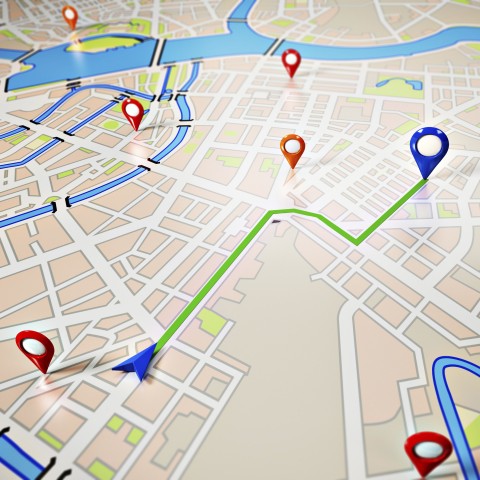
5. Essential Korean Phrases: Asking for and Giving Directions

1- ___은 어떻게 가나요? ( ___eun eotteoke ganayo? )
This phrase translates as “How do I go to ~?” in English.
This is the phrase to use when you’re asking for detailed directions. Use this phrase to ask how to get somewhere, when there are many steps involved.
Example 1: You’re asking your homestay father how to get to Busan from Daegu.
- You: 부산에서 대구까지 어떻게 가나요? You: Busaneseo daegukkaji eotteoke ganayo? You: “How do I get to Busan from Daegu?”
- Father: 부산역에서 KTX 열차 티켓을 하고나서… Father: Busanyeogeseo KTX yeolcha tikeseul hagonaseo… Father: “You need to buy a KTX ticket from a station called Busan station and ….”
2- ~은 어디에 있어요? ( ~eun eodie isseoyo? )
This phrase means “Where is ~?”
Example 1: You’re at a shop and want to use the bathroom.
- You: 화장실은 어디에 있어요? You: Hwajangsireun eodie isseoyo? You: “Where is the bathroom?”
- Staff: 가게 밖으로 나가면 바로 오른쪽에 있어요. Staff: Gage bakkeuro nagamyeon baro oreunjjoge isseoyo. Staff: “Go out of the shop; the toilet is on the right-hand side.”
Example 2: You feel tired after visiting many places and want to go back to the hotel to rest, but you’re not sure where the closest station is.
- You: 여기서 가장 가까운 지하철역은 어디에 있어요? You: Yeogiseo gajang gakkaun jihacheollyeogeun eodie isseoyo? You: “Where is the closest subway station from here?”
- Stranger: 횡단보도 건너면 홍대역이 보일거예요. Stranger: Hoengdanbodo geonneomyeon hongdaeyeogi boilgeoyeyo. Stranger: “Just cross the road and you’ll be able to see the station called Hongdae.”
3- Vocabulary for Directions
Here’s some useful vocabulary:
Reference: Position/Direction
There are several example sentences using these vocabulary words in our vocabulary list about positions and directions. Do check out the page for more learning material.
4- 여기는 어디인가요? ( yeogineun eodiingayo? )
This phrase means “Where am I?”
When you’re not sure where you are, or you want to know the name of the place you’re at, use this phrase to ask. 어디 means “where” in Korean. If you want to double-check your location with someone, replace 어디 with the name of the place.
For example, if you want to know whether the place you’re in is 가로수길 ( garosu-gil ), you should ask 여기는 가로수길인가요? ( yeogineun garosugiringayo? ) which translates to “Am I in Garosu gil?”
- You: 길을 잃었어요. 여기는 어디인가요? You: Gireul ileosseoyo. Yeogineun eodiingayo? You: “I am lost. Where am I?”
- Stranger: 음… 어디로 가시는데요? 가는길 알려드릴께요. Stranger: Eum… eodiro gasineundeyo? Ganeungil allyeodeurilkkeyo. Stranger: “Hmm…where are you heading to? I may be able to tell you the way.”
Example 2: You’re with a tour guide and you want to say how beautiful this place is.
- You: 정말 아름다운 곳이네요. 여기는 어디인가요? You: Jeongmal areumdaun gosineyo. Yeogineun eodiingayo? You: “This place is really beautiful. Where is this place?”
- Guide: 광화문 이라고 하는 곳입니다. 아름답지요? Guide: Gwanghwamunirago haneun gosimnida. Areumdapjiyo? Guide: “It’s called Gwanghwamun. Isn’t it beautiful?”
5- 여기서 ~까지는 많이 먼가요/가까운가요? ( yeogiseo ~kkajineun mani meongayo/gakkaungayo? )
This phrase means “From here to ~, is it far/close?”
Use this phrase when you want to ask how far or close something is from your current location.멀다 ( meolda ) is “far” and 가깝다 ( gakkapda ) is “close” in Korean. To make each word into a question, they become 먼가요? ( meongayo ) meaning “Is it far?” and 가까운가요? ( gakkaungayo? ) meaning “Is it close by?” respectively.
Example 1: You’re at Daegu Station and want to go to Palgongsan, a tourist favorite in Daegu.
- You: 팔공산 은 여기서 많이 먼가요? You: Palgongsaneun yeogiseo mani meongayo? You: “Is Palgongsan far from here?”
Example 2: You’ve just landed in Jeju International Airport . Your friend comes to pick you up and you’re waiting for a bus to go to your friend’s house.
- You: (너의) 집은 여기서 많이 멀어? You: (neoui) Jibeun yeogiseo mani meoreo? You: “Is your house far from here?”
- Friend: 음, 버스타고 한 20분 정도 가야해. 그렇게 멀진 않아. Friend: Eum, beoseutago han isipbun jeongdo gayahae. Geureoke meoljin ana. Friend: “Hmm, it takes about 20 minutes by bus. It’s not too far.”
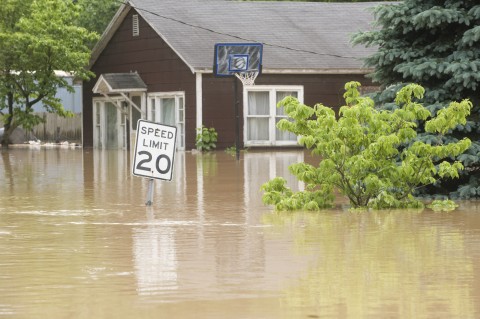
6. Essential Korean Phrases: Emergencies
1- 도와주세요. ( dowajuseyo. ).
This phrase translates to “Please help me.”
When you’re in need of help, use this phrase to get people’s attention. Be careful when you use this phrase though, because the meaning changes depending on your intonation. You can also request help more formally by stating, 실례하지만 도와주시겠어요? ( sillyehajiman dowajusigesseoyo? ) which means “I am sorry to bother you, but could you please help?”
Example 1: You were hiking at a mountain called 북한산 ( bukansan ) in Seoul and you injured yourself. You see a number of hikers not far from where you are.
- You: 도와주세요! , 도와주세요! You: Dowajuseyo! Dowajuseyo! You: “Please help! Please help!”
Example 2: You need to call an ambulance, and you go to a help desk for help.
- You: 응급상황이예요, 도와주세요! You: Eunggeupsanghwangiyeyo, dowajuseyo! You: “It’s an emergency! Please help!”
2- 경찰 불러주세요. ( gyeongchal bulleojuseyo. )
This phrase means “Please call the police.”
Use this phrase when you’re in danger. Alternatively, you can call the police by dialing 112. If you want to call an ambulance, which is called 응급차 ( eunggeupcha ) or 일일구 ( irilgu ), simply say the word followed by 불러주세요 ( bulleojuseyo ) meaning “Please call.”
Example 1: You want to ask for help from a person at the service desk.
- Help desk: 무엇을 도와드릴까요? Help desk: Mueoseul dowadeurilkkayo? Help desk: “How may I help you?”
- You: 누가 지갑을 훔쳐갔어요, 경찰 불러주세요. You: Nuga jigabeul humchyeogasseoyo, gyeongchal bulleojuseyo. You: “My wallet is stolen and I would like to call the police.”
- Help desk: 네, 지금 바로 하겠습니다. Help desk: Ne, jigeum baro hagetseumnida. Help desk: “Okay, will do it now.”
Example 2: A stranger approaches you and tries to steal your bag.
- You: 도와주세요! 누가 경찰 불러 주세요! You: Dowajuseyo! Nuga gyeongchal bulleo juseyo! You: “Please help! Call the police for me!”
3- ~를 다쳤어요. ( ~reul dachyeosseoyo. )
This phrase means “I injured my ~.”
When you visit a hospital, you need to be able to tell the doctor which part of your body is injured. Unless you go to an international hospital that offers a free interpreter service, you’ll need to speak basic Korean at a local hospital.
If you want to say that you’re just in pain, just say ~가 아파요. ( ~ga apayo ) which means “I feel pain in my~.”
Here’s a vocabulary list of body parts for you to memorize:
Reference: Body Parts, KoreanClass101 Vocabulary list
The vocabulary words above are just a small portion of the entire vocabulary list from KoreanClass101. If you want to check out the entire list, visit our Body Parts vocabulary list on our website. We also have many free lessons on describing body parts in Korean, so check our website for more.
Example 1: You’re at a local hospital and need to explain which part of your body is injured.
- Doctor: 무슨일로 오셨나요? Doctor: Museunillo osyeonnayo? Doctor: “What made you come here today?”
- You: 산책하다가 발목을 다쳤어요. You: Sanchaekadaga balmogeul dachyeosseoyo. You: “I injured my ankle while walking.”
- Doctor: 한번 살펴 보겠습니다. Doctor: Hanbeon salpyeo bogetseumnida. Doctor: “Let me have a look at your ankle.”
Example 2: You weren’t cautious enough when crossing the pedestrian road. Unfortunately, you were run over by a car and your bone is broken.
- You: 걸을 수가 없어요. 뼈를 다친것 같아요. You: Georeul suga eopseoyo. Ppyeoreul dachingeot gatayo. You: “I can’t walk. I think my bone is broken.”
- Driver: (calling an ambulance) 여보세요, 차사고가 났는데요, 사람이 크게 다친것 같습니다. Driver: Yeoboseyo, chasagoga nanneundeyo, sarami keuge dachingeot gatseumnida. Driver: “Hello, there was a car accident and I think that the person is badly injured.”
4- 지갑/여권을 잃어버렸어요. ( jigap/yeogwoneul ileobeoryeosseoyo. )
This phrase means “I lost my wallet/passport.”
Your wallet and passport are the most valuable items while traveling around the world, and you certainly don’t want to ruin your entire trip over missing items. Use this phrase when you want to say that you’ve lost your belongings.
Here’s a list of items that people may lose while traveling:
Example 1: You’re about to head to the airport, and realize that your passport is missing.
- You: 어머, 여권을 잃어버린것 같아. You: Eomeo, yeogwoneul ileobeoringeot gata. You: “Oh no, I think I lost my passport.”
- Friend: 어디서 잃어버렸는데? Friend: Eodiseo ileobeoryeonneunde? Friend: “Where did you lose it?”
- Friend: 어머, 지갑이 어디갔지? Friend: Eomeo, jigabi eodigatji? Friend: “Oh no, where is my wallet?”
- You: 지갑을 잃어버렸어? You: Jigabeul ileobeoryeosseo? You: “Did you lose your wallet?”
- Friend: 휴, 찾았다! Friend: Hyu, chajatda! Friend: “Phew, I found it!”
5- Emergency Numbers to Remember
These are numbers that come in handy when you’re in trouble:
- 112 – Police
- 119 – Ambulance
- 111 – National Security
- 113 – Reporting spies
- 182 – Missing persons
Here, you can learn more vocabulary and phrases: “ Words and Phrases to Help You in an Emergency .”

7. Essential Korean Phrases: Flattery Phrases
1- 한국 음식을 좋아해요. ( hanguk eumsigeul joahaeyo. ).
This phrase means “I like Korean food.”
Koreans tend to worry when they see foreigners eating spicy food—you’ll hear 너무 맵지 않나요? ( neomu maepji annayo? ) which is them asking you “Is it not too spicy for you?” or 조금 매운데, 괜찮아요? ( jogeum maeunde, gwaenchanayo? ) meaning “It’s a bit spicy, is this okay?” when you order a spicy dish.
Don’t worry too much when you hear this, because they’re actually complimenting you for trying Korean dishes and they really do hope that you enjoy the food.
To say a specific dish, just replace 한국 음식 ( hanguk eumsik ) meaning “Korean food” with the name of your favorite dish. For example, if you like 삼계탕 ( samgyetang ) or “ginseng chicken soup,” you can say 삼계탕(을) 좋아해요 ( samgyetang(eul) joahaeyo ). Let’s have a look at more examples below:
- Friend: 어떤 음식 좋아해? Friend: Eotteon eumsik joahae? Friend: “What kind of cuisine do you like?”
- You: 매운걸 좋아해서 한국 음식을 많이 좋아해. You: Maeungeol joahaeseo hanguk eumsigeul mani joahae. You: “I like spicy food, so I like Korean food very much.”
- Friend: 잘됐다! 집근처에 맛집있는데, 같이 갈래? Friend: Jaldwaetda! jipgeuncheoe matjibinneunde, gachi gallae? Friend: “That’s great! There’s a good restaurant around here, do you want to go together?”
- Elder person: 매운 음식 좋아해요? Elder person: Maeun eumsik joahaeyo? Elder person: “Do you like spicy food?”
- You: 네, 좋아해요. You: Ne, joahaeyo. You: “Yes, I do.”
2- 한국문화에 관심이 많아요. ( Hangungmunhwae gwansimi manayo. )
Use this phrase to say “I am interested in Korean culture.”
Has anyone ever asked you what made you become interested in Korea? ~에 관심이 많아요. ( ~e gwansimi manayo. ) is a phrase to say that you “are interested in ~.” You can replace the first noun with something else, such as 한국 역사 ( hanguk yeoksa ) meaning “Korean history,” 케이팝 ( keipap ) meaning “K-pop,” 한국 드라마 ( hanguk deurama ) meaning “Korean drama,” and so forth.
Here are some examples:
Example 1: Jamie is a new exchange student, and Sumi and Soyeon are talking.
- 수미: 제이미가 왜 한국에 왔을까? Sumi: Jeimiga wae hanguge wasseulkka? Sumi: “I wonder what brought Jamie to South Korea.”
- 소연: 한국문화에 관심이 많아서 여기로 왔데. Soyeon: Hangungmunhwae gwansimi manaseo yeogiro watde. Soyeon: “He is here because he is interested in Korean culture.”
Example 2: Your friend asks why you’re interested in Korean culture. You want to say that you became interested in it after watching Korean dramas.
- You: 한국 드라마를 좋아해서 한국문화에 관심이 많아요. You: Hanguk deuramareul joahaeseo hangungmunhwae gwansimi manayo. You: “I became interested in Korean culture because of Korean dramas.”
3- 한국 사람은 친절해요. ( Hanguk sarameun chinjeolhaeyo. )
Use this phrase to say “Korean people are friendly.”
Koreans are friendly to tourists, so they will be happy to help you out when you’re in need of help. To say that Koreans are friendly, you can say 한국 사람은 친절해요 ( Hanguk sarameun chinjeolhaeyo. ).
Example 1: A friend asked how your trip to Korea was. You want to compliment Korean people.
- Friend: 한국 여행 어땠어? Friend: Hanguk yeohaeng eottaesseo? Friend: “How was your trip to Korea?”
- You: 응, 재미있었어. 한국 사람은 정말 친절한것 같아. You: Eung, jaemiisseosseo. Hanguk sarameun jeongmal chinjeolhangeot gata. You: “Yeah, it was fun. Koreans are really friendly.”
- You: 드라마를 보면 한국 사람들은 친절한것 같아. You: Deuramareul bomyeon hanguk saramdeureun chinjeolhangeot gata. You: “Based on Korean drama, I think that Koreans are friendly.”
4- 친구가 되고 싶어요. 페이스북/인스타그램 있어요? ( chinguga doego sipeoyo. peiseubuk/inseutageuraem isseoyo? )
Use this phrase to say “I want to be your friend. Do you have a Facebook/Instagram?”
You’ll encounter many locals while traveling in South Korea. If you meet someone that you want to keep in touch with long-term, say this phrase.
Example 1: You meet a local while traveling in Jeju and you want to keep in touch with her.
- You: 친구가 되고 싶어요. 혹시 페이스북이나 인스타그램 있어요? You: Chinguga doego sipeoyo. hoksi peiseubugina inseutageuraem isseoyo? You: “I want to be your friend. Do you have a Facebook or Instagram by any chance?”
- Friend: 페이스북은 없고, 인스타그램은 있어요. Friend: Peiseubugeun eopgo, inseutageuraemeun isseoyo. Friend: “I don’t have a Facebook account, but I use Instagram.”
8. Essential Korean Phrases: Useful Phrases to Go Through Language Problems

1- 영어 할 수 있어요? ( Yeongeo hal su isseoyo? )
Use this phrase to ask someone “Can you speak English?”
Example 1: A staff member is explaining something to you in Korean and you want to ask if they speak English.
- You: 혹시 영어 할 수 있어요? You: Hoksi yeongeo hal su isseoyo? You: “Do you speak English by any chance?”
- Staff: 죄송해요, 할수 없어요. Staff: Joesonghaeyo, halsu eopseoyo. Staff: “Sorry, no.”
2 – 적어주실래요? ( jeogeojusillaeyo? )
This useful phrase means “Can you write it down?”
Example 1: Your homestay mother suggests that you visit a museum called 전쟁기념관 ( jeonjaengginyeomgwan ) which is “The War Memorial of Korea,” in English. You want to search for this place on the Internet.
- You: 전쟁기념관을 종이에 적어주실래요? You: Jeonjaengginyeomgwaneul jongie jeogeojusillaeyo? You: “Can you please write “The War Memorial of Korea” on the paper?”
Example 2: A stranger is explaining the directions to go to 63 빌딩 ( yuksam building ) or the “63building, but it seems quite complicated.
- You: 죄송하지만, 종이에 적어주실래요? You: Joesonghajiman, jongie jeogeojusillaeyo? You: “I am sorry, but could you please write the directions down?”
3- 죄송해요, 한국말 잘못해요. ( Joesonghaeyo, hangungmal jalmothaeyo. )
Use this phrase to let someone know “I am sorry, I am not good at Korean.”
Example 1: An elderly person approaches you with a smile and asks many questions in Korean. You want to say that you can’t speak Korean.
- You: 죄송해요, 저는 한국말을 못해요. You: Joesonghaeyo, jeoneun hangungmareul mothaeyo. You: “I am sorry, I can’t speak Korean.”
Example 2: A stranger approaches you and asks some questions in Korean. You want to understand what he’s saying.
- You: 죄송해요, 한국말(을) 잘못해요. 조금 더 천천히 말해줄래요? You: Joesonghaeyo, hangungmal(eul) jalmothaeyo. Jogeum deo cheoncheonhi malhaejullaeyo? You: “Sorry, I am not good at Korean. Can you please speak slowly?”
4- 조금 더 천천히 말해주시겠어요? ( jogeum deo cheoncheonhi malhaejusigesseoyo? )
This phrase, hinted at earlier, means “Can you please speak slowly?”
You may want to practice speaking in Korean as much as possible. However, sometimes you may struggle to understand the language, especially when someone speaks to you too quickly. Use this phrase to kindly ask a speaker to speak more slowly for you.
Example 1: You’re on the phone to have food delivered. The staff member speaks too fast and you want him to slow down for you.
- You: 죄송하지만, 조금 더 천천히 말해주시겠어요? You: Joesonghajiman, jogeum deo cheoncheonhi malhaejusigesseoyo? You: “I am sorry, but could you please slow down for me?”
- Staff: 아, 죄송합니다. Staff: A, joesonghamnida. Staff: “Ah, I apologize.”
Example 2: Your friend is upset about something and struggles to speak clearly.
5- 이것은 어떻게 읽나요? ( Igeoseun eotteoke ingnayo? )
Use this phrase to ask someone “How do you read this?”
If you want to ask how to pronounce a word or sentence, say 이것은 어떻게 발음하나요? ( Igeoseun eotteoke bareumhanayo? ) or “How do I pronounce this?”
- You: 이건 어떻게 읽어? You: Igeon eotteoke ilgeo? You: “How do I read this?”
- Friend: 간장게장 이라고 해. Friend: Ganjanggejangirago hae. Friend: “It is soy sauce raw crab.”

9. Essential Korean Phrases: Buying Tickets at a Museum
1 – 성인 1장 주세요. ( seongin hanjang juseyo. ).
Use this phrase to say “One ticket (adult) please.”
There are many museums and exhibitions worth visiting in Korea. Most places, unless you go to a museum in a very rural area, offer pamphlets and free guides in many different languages, so you won’t have much trouble navigating.
However, since you’re a Korean learner, let’s learn some useful travel phrases!
Take a look at the column for the price at the Daerim museum . This is the typical column that you’ll see at any museum or exhibition that you go to in Korea. “Adult” in Korean is 성인 ( seongin ). “Children” is 어린이 ( eorini ) and “student” is 학생 ( haksaeng ).
Let’s take a look at two examples:
Example 1: You arrive at 김치박물관 ( gimchibangmulgwan ) or “Museum Kimchikan.” You want to buy a ticket.
- You: 안녕하세요, 성인 1장 주세요. You: Annyeonghaseyo, seongin hanjang juseyo. You: “Hello, one ticket (adult) please.”
Example 2: You arrive at 전쟁기념관 ( jeonjaengginyeomgwan ) or “War Memorial of Korea.” You’re with your younger sister who is only fifteen years old.
- You: 안녕하세요, 성인 1장이랑 어린이 1 장주세요. You: Annyeonghaseyo, seongin hanjangirang eorini hanjangjuseyo. You: “Hello, one adult and one child please.”
2- 팜플렛 주세요. ( pampeullet juseyo )
Asking for pamphlets is easy too. You just need to use this phrase, which means “Please give me a pamphlet.” You’ll be able to get a pamphlet in many different languages at the counter.
- Clerk: 몇장드릴까요. Clerk: Myeotjangdeurilkkayo. Clerk: “How many (tickets) would you like?”
- You: 성인 1장 주세요. You: Seongin hanjang juseyo. You: “One adult, please.”
- Clerk: 5,000원입니다. 팜플렛 필요하세요? Clerk: Ocheonwonimnida. Pampeullet pillyohaseyo? Clerk: “It’s 5,000 won. Do you need a pamphlet?”
- You: 네, 영어 팜플렛 주세요. You: Ne, yeongeo pampeullet juseyo. You: “Yes, an English pamphlet please.”
3- 무료 가이드있나요? ( muryo gaideuinnayo? )
Use this phrase to ask “Is there a free tour?”
Many museums offer free guides in English, Korean, Japanese, and Chinese. Some places only offer them once per day, or even once per month, so do check their schedule on their website in advance if you want to participate.
- You: 이곳에 무료 가이드 있나요? You: Igose muryo gaideu innayo? You: “Is there a free tour?”
- Clerk: 네, 오늘 오후 5시에 영어로 진행되는 무료 가이드 있습니다. Clerk: Ne, oneul ohu daseotsie yeongeoro jinhaengdoeneun muryo gaideu itseumnida. Clerk: “Yes, there is one in English at 17:00 (5 PM).”
4- 오늘 특별한 행사 하나요? ( Oneul teukbyeolhan haengsa hanayo? )
Want to know if a museum has any special events? Use this phrase to ask a clerk. It translates to “Is there a special event?”
Example 1: You hear loud music coming out of the museum.
- You: 오늘 특별한 행사 하나요? You: Oneul teukbyeolhan haengsa hanayo? You: “Is there a special event?”
- Clerk: 네, 방금 시작했어요. Clerk: Ne, banggeum sijakaesseoyo. Clerk: “Yes, it has just started.”
5- 오디오 가이드 있나요? ( odio gaideu innayo? )
Use this phrase to ask “Is there an audio guide?”
- You: 영어 오디오 가이드 있나요? You: Yeongeo odio gaideu innayo? You: “Is there an audio guide?”
- Clerk: 네, 있습니다. 몇개 드릴까요? Clerk: Ne, itseumnida. myeotgae deurilkkayo? Clerk: “Yes, there is. How many would you like?”
- You: 한 개 주세요. You: Han gae juseyo. You: “Just one, please.”

10. Essential Korean Phrases: Taking Pictures
1- 이곳은 사진 찍어도 괜찮은 장소인가요 ( igoseun sajin jjigeodo gwaenchaneun jangsoingayo ).
Use this phrase to ask “Is it okay to take a picture in this place?”
You can take pictures most places, but it’s always safe to ask if you’re not sure.
Example 1: You’re at the museum and want to ask if you can take pictures.
- You: 이곳은 사진 찍어도 괜찮은 장소인가요? You: Igoseun sajin jjigeodo gwaenchaneun jangsoingayo? You: “Is it okay to take pictures here?”
- Staff: 네, 플래시 없이 해주십시오. Staff: Ne, peullaesi eopsi haejusipsio. Staff: “Yes, but without flash please.”
2- 사진 같이 찍어요. ( sajin gachi jjigeoyo. )
This phrase translates to “Let’s take a picture together.”
Use this phrase when you want to take a picture with someone. Alternatively, you can ask for permission by asking 사진 같이 찍어도 괜찮아요? ( Sajin gachi jjigeodo gwaenchanayo? ) meaning “Is it okay to take a picture with you?”
- You: 사진 같이 찍어요. You: Sajin gachi jjigeoyo. You: “Let’s take a picture together.”
- Friend: 좋아요. Friend: Joayo. Friend: “OK.”
3- 사진 찍어주시겠어요? ( Sajin jjigeojusigesseoyo? )
This phrase means “Can you please take a picture of us?”
Example 1: You’re traveling alone in 전주한옥마을 ( jeonjuhanongmaeul ) or “Jeonju Hanbok Village” and you want to ask someone to take a picture of you with a traditional Korean house in the background.
- You: 죄송하지만, 사진 찍어주시겠어요? You: Joesonghajiman, sajin jjigeojusigesseoyo? You: “I am sorry to interrupt, but could you please take a picture of me?”
- Stranger: 그럼요. Stranger: Geureomyo. Stranger: “Sure.”
Example 2: You’re at 롯데월드 ( rotdewoldeu ) or “Lotte World” and want to ask someone to take a picture of you and your girlfriend.
- You: 안녕하세요, 저희 사진 1장만 찍어주시겠어요? You: Annyeonghaseyo, jeohui sajin 1jangman jjigeojusigesseoyo? You: “Hello, could you please take a picture of us?”
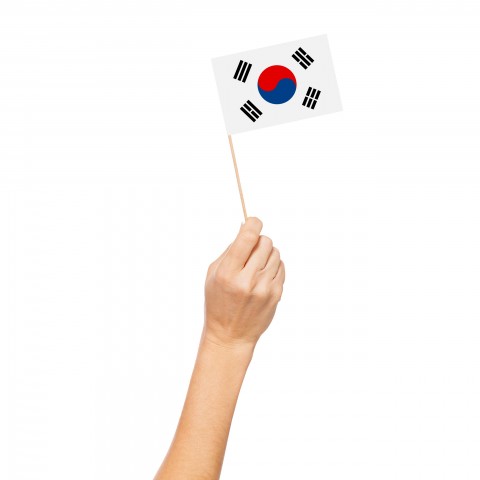
11. How KoreanClass101.com Can Help You with Korean
If you have any questions regarding the travel phrases mentioned above (or other questions about Korean culture), we’ll be more than happy to answer them for you at the KoreanClass101.com forum . On our site, especially the forum, you can find tons of cultural insights and useful tips to help you study Korean. Feel free to check out the forum when you have time.
Also, KoreanClass101.com offers many free Korean lessons; you can access these lessons by simply creating a free lifetime account.
Learning Korean travel phrases, along with essential cultural information, is no easy task. But the more that you use Korean travel phrases, the easier it will get. Trust us!
We hope that you found this blog useful, and that you enjoy your trip to Korea! These basic Korean travel phrases for tourists will help you get around South Korea like it’s nothing. 🙂
Or sign up using Facebook
Got an account? Sign in here

18 Useful Korean Greetings You Should Learn

How to Say I Love You in Korean – Romantic Word List

How To Say ‘Thank you’ in Korean

Let’s Learn about Korean National Anthem (History, Lyrics)

30+ Useful Korean Classroom Phrases and Words

60+Korean Restaurant Phrases: Korean Phrases for Ordering Food
Blood type personality in korea: what it says about you.
- Austin's Orphanage
- Forum Spotlight
- Explore Korea
- Scheduled Maintenance
- Guest Bloggers
- Hyunwoo's Mindmap
- KClass Videos
- How Koreans Do It
- Humor in Korean
- Korean Holiday
- Korean Music
- Korean Language
- Korean Translation
- Advanced Korean
- Korean Alphabet
- Korean Grammar
- Korean Lessons
- Korean Online
- Korean Phrases
- Korean Podcasts
- Korean Words
- Tips & Techniques
- Listener Videos
- Media Coverage
- Feature Spotlight
- Steve's House
- Success Stories
- Team KoreanClass101
- Travels in Korea
- Word of the Day
- Words with Many Faces
- Visas, Immigration
Copyright © 2024 Innovative Language Learning. All rights reserved. KoreanClass101.com Privacy Policy | Terms of Use . This site is protected by reCAPTCHA and the Google Privacy Policy and Terms of Service apply.
30 Easy Conversational Korean Phrases For Your Next Travel
- , April 19, 2023
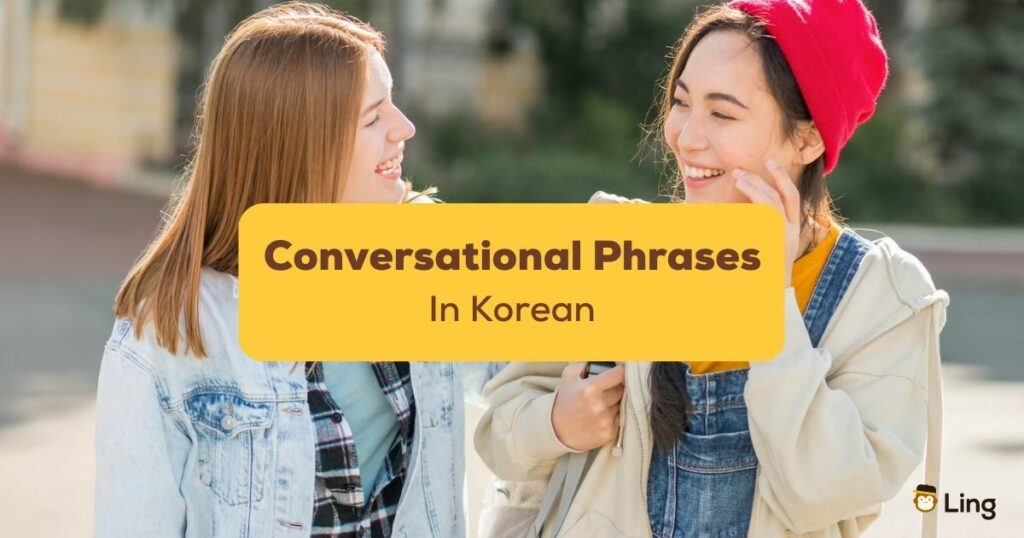
Hello, fellow language enthusiasts and globe-trotters! Are you planning a trip to the beautiful and culturally rich country of South Korea? We have a guide on conversational Korean phrases to help you feel more confident and connected during your visit.
Learning Korean phrases can work wonders for your travel experience. Not only does it make communication with locals easier, but it also helps you to immerse yourself in Korean culture and form new friendships. As they say, a little effort goes a long way!
In this blog post, we’ve carefully curated 20+ easy conversational Korean phrases that will come in handy during your travels. We’ll cover essential greetings, common questions, and useful expressions for various situations you might encounter. Plus, we’ll throw in some helpful tips on Korean pronunciation to make language learning even more enjoyable.
Let’s get started!
Conversational Korean Greetings
Ready to speak Korean and charm the locals on your next trip to the Land of the Morning Calm? Let’s start with some essential conversational Korean greetings. These basic Korean phrases will help you make an excellent first impression and get off on the right foot.
Hello – 안녕하세요 (Annyeonghaseyo)
You might have heard this Korean word while watching a Korean drama. You can’t go wrong with this classic! Use it like a Swiss Army knife of greetings, suitable for any time of the day. But remember, 안녕하세요 isn’t just “hello;” it’s also a polite way to indirectly say “How are you?” So, you’re killing two birds with one stone! (Disclaimer: No actual birds were harmed in making this phrase.)
Nice To Meet You – 만나서 반갑습니다 (Mannaseo Bangapseumnida)
Meeting new friends on your travels? Show off your Korean prowess with this gem. It’s a bit of a mouthful, so practice saying “mannaseo bangapseumnida” in the mirror a few times to avoid tripping over your tongue in front of your new buddies.
Pro tip: Bow slightly while saying this phrase to score extra politeness points.
Goodbye (To The Person Staying) – 안녕히 계세요 (Annyeonghi Gyeseyo)
This is the perfect phrase to say when leaving a place or a gathering, but others stay behind. You know what they say, ‘Parting is such sweet sorrow.’ So why not leave an elegant impression with your flawless Korean?
Goodbye (To The Person Leaving) – 안녕히 가세요 (Annyeonghi Gaseyo)
On the flip side, if you’re the one staying behind, bid your new friends farewell with “annyeonghi gaseyo.” It’s like a warm hug in the form of words. (Note: Actual hugs may or may not be culturally appropriate, so stick to the linguistic version.)

Conversational Korean Phrases For Asking for Directions
Navigating through a new country can be a thrilling adventure. But let’s face it. Getting lost is an inevitable part of the experience. But don’t worry. We’ve got you covered with these essential Korean words and phrases to help you find your way.
Can You Help Me? – 도움을 주시겠어요? (Doumeul Jusigesseoyo?)
Start any direction-seeking interaction with this very polite and humble phrase. Koreans appreciate good manners; this golden key will unlock their willingness to help you find your way.
There are, in fact, other ways you can use to say, “Can you help me,” depending on the occasion and the person you are talking to. For example:
- 도와 주실 수 있나요?(dowa ju sil su it nayo?) – Polite
- 저 좀 도와주세요(Jeo jom do wa ju se yo) – Polite
- 도와 줄 수 있니 (Casual)
Where Is It? – 어디에요? (Eodieyo?)
The million-dollar question when you’re feeling disoriented. Pair this with your best “I’m-so-lost-please-help-me” face, and locals will line up to assist you. It’s a versatile phrase that works wonders for finding anything from the nearest subway station to that elusive hole-in-the-wall eatery you’ve heard so much about.
How Do I Get There? – 어떻게 가야 합니까? (Eotteoke Gaya Hamnikka?)
Your destination is in mind, and now it’s time to plot your course. This phrase will prompt locals to share their navigational wisdom, often providing you with shortcuts and insider tips to make your journey smoother.
Where Does This Road Lead? – 이 길은 어디로 가요? (I Gil-Eun Eodilo Gayo?)
Consider this your conversational GPS. Because who needs Google Maps when you’ve got the power of the Korean language at your fingertips? This phrase is perfect for exploring on foot and wanting to get a sense of where a particular road might lead you. Will it take you to a bustling market or perhaps a serene park? Only one way to find out!
Go Straight – 직진하세요 (Jigjinhaseyo)
Compass? Check. Map? Check. Korean phrase for “go straight”? Check! With this handy directional phrase, you’ll feel like you’ve got a personal Korean GPS guiding you through the bustling streets of Busan or the tranquil countryside of Gangwon-do .
Turn Left – 좌회전 (Jwahoejeon)
No more confused looks when trying to navigate the Korean roadways. This phrase will ensure you veer left confidently, embracing the twists and turns of exploring new places.
Turn Right – 우회전 (Uhoejeon)
With this phrase under your belt, you’ll confidently turn right when the moment calls for it. Just remember, when it comes to Korean phrases, “우” (u) is always right!
Where Is The Subway Station? – 지하철 역은 어디 있어요? (Jihacheol Yeogeun Eodi Isseoyo?)
Subways can be your best friend when traversing Korea’s urban centers. This phrase will help you locate the nearest 지하철 역 (jihacheol yeok), ensuring you never miss a beat (or a train) on your Korean adventure.
Where Is The Bus Stop? – 버스 정류장은 어디 있어요? (Beoseu Jeongryujangeun Eodi Isseoyo?)
If you prefer the scenic route, use this phrase to find the nearest 버스 정류장 (beoseu jeongryujang). As you ride through the picturesque landscapes, you can thank the kind Koreans who helped you find your way.
How Many Minutes Does It Take? – 몇 분 걸려요? (Myeot Bun Geollyeoyo?)
Time is precious when you’re exploring Korea, so use this phrase to estimate how long it’ll take to reach your destination. It’s the perfect way to ensure you see all the sights without wasting a single moment.
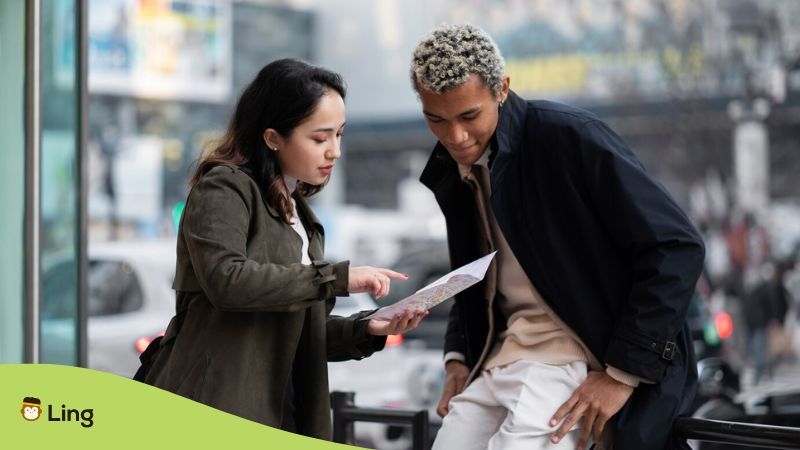
Conversational Korean Phrases For Ordering Food
Ready to tantalize your taste buds with some tasty Korean cuisine ? With this crash course on conversational Korean phrases for ordering food, you’ll be savoring every bite like a true Korean restaurant connoisseur. So, roll up your sleeves, grab your phrasebook, and let’s dig into these delicious linguistic morsels!

Please Give Me The Menu – 메뉴판을 주세요 (Menyupaneul Juseyo)
Kick off your culinary adventure with this essential phrase. It’ll summon the menu to your table, granting you access to a world of mouthwatering Korean dishes.
Please Give Me This – 이거 주세요 (Igeo Juseyo)
Once you’ve spotted that irresistible dish, use this phrase to let your server know what you’re craving. Simply point to the menu item and watch as your gastronomic dreams come true.
What Food Do You Recommend? – 추천하는 음식이 뭐예요? (Chucheonhaneun Eumsigi Mwoyeyo?)
If you need more time, this phrase will enlist the help of your server in choosing the perfect dish. After all, who better to guide you through the realm of Korean cuisine than a seasoned local?
I Can’t Eat Spicy Food – 매운 음식을 잘 못 먹어요 (Maeun Eumsig-Eul Jal Mos Meog-Eoyo)
Korean cuisine is known for its fiery flavors. So use this phrase if you prefer to keep things mild. Your taste buds will thank you for it!
What Korean Food Should I Try? – 한국음식 중에서 어떤 것을 먹어봐야 할까요? (Hangugeumsik Jungeoseo Eoddeon Geoseul Meogeobwaya Halkkayo?)
This phrase is perfect for adventurous foodies eager to sample the best of Korea’s culinary offerings. Let your server be your gastronomic guru and guide you toward a truly unforgettable meal.
Please Give Me The Bill – 계산서 주세요 (Gyesanseo Juseyo)
All good feasts must come to an end, and this phrase will signal that it’s time to settle the tab. Pro tip: In Korea, it’s customary to pay at the counter rather than at your table.
It Was Delicious – 맛있게 먹었습니다 (Mas-Issge Meog-Eossseubnida)
Want to make your server’s day? Use this phrase to express your appreciation for the delectable meal you’ve just enjoyed. After all, compliments are the best way to show gratitude in the culinary world.
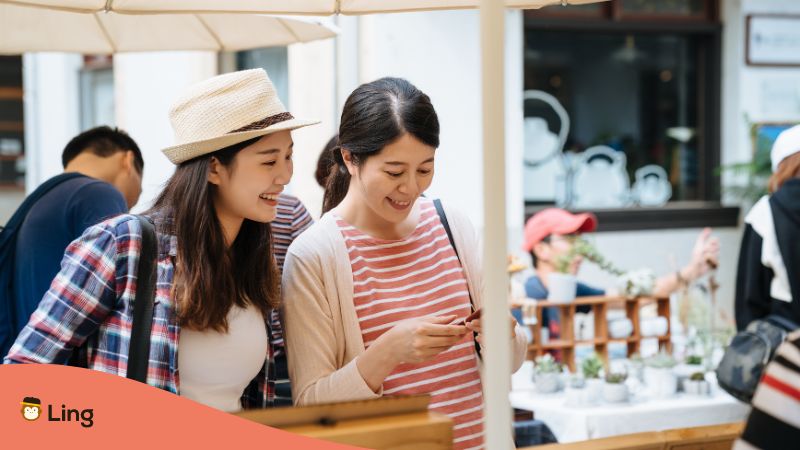
Conversational Korean Phrases For Making Small Talk
Ready to mingle with locals and make new friends during your Korean adventure? Let’s dive into these common Korean phrases that’ll turn you into a small talk aficionado. So, put on your friendliest smile, and let’s dive into the art of Korean chitchat!
What’s Your Name? – 이름이 뭐예요? (Ileum-I Mwoyeyo?)
You can’t make friends without knowing their names, right? Use this phrase to learn more about your new Korean acquaintances, and watch as your social circle expands.
My Name Is [Your Name] – 저는 [Your Name]이에요 (Jeoneun [Your Name]Ieyo.)
Don’t forget to introduce yourself! This simple phrase will help you establish rapport with your new Korean companions and pave the way for deeper conversations.
Where Are You From? – 어디서 오셨어요? (Eodiseo Osyeoss-Eoyo?)
Curiosity is the key to small talk, and this phrase is perfect for uncovering the origins of your new friends. Plus, it’s a great opportunity to learn more about Korea’s diverse regions.
Do You Speak English? – 영어 할 줄 아세요? (Yeong-Eo Hal Jul Aseyo?)
This question is essential to your survival in Korea. Most Korean speakers know a little bit of English. But you’ll encounter many who don’t speak it at all. So, it’s polite to ask this question before starting a conversation.
The Weather Is Nice – 날씨가 좋네요 (Nalssiga Jonneyo)
Ah, the weather – the universal small talk fallback. Use this phrase to bond over the beauty of Korea’s four distinct seasons or to lament the sudden onset of a torrential downpour.
What Did You Do Today? – 오늘 뭐하셨어요? (Oneul Mwohasyeosseoyo?)
Dig a little deeper with this phrase, which invites your conversation partner to share details about their day. Who knows, you might just discover a shared interest or a fascinating local activity to try!
What’s Your Favorite Food? – 좋아하는 음식이 뭐예요? (Joahaneun Eumsigi Mwoyeyo?)
Food is the ultimate conversation starter, and this phrase will have you and your new Korean friends bonding over your shared love of kimchi, bulgogi, and everything in between.
Is This Your First Time Here? – 여기 처음이에요? (Yeogi Cheoeumieyo?)
Whether you’re exploring a new neighborhood or attending a local event, this phrase will help you gauge the familiarity of your conversation partner with the area, opening the door for further exploration and discussion.
See You Again Next Time! – 다음에 또 봐요! (Da-Eume Tto Bwayo!)
As your conversation winds down, use this basic Korean phrase to express your desire to stay in touch. After all, friendships are built on the promise of future encounters!
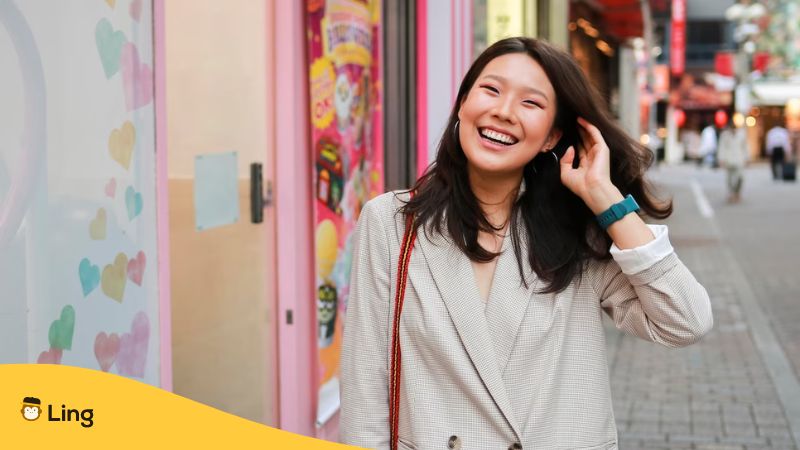
Ready, Set, Go!
Mastering these easy conversational Korean phrases will undoubtedly take your travel experience to new heights. Plus, it will help you connect with locals on a deeper level. With these essential Korean words in your linguistic arsenal, you’ll be well on your way to embracing and enjoying Korea’s rich culture and warmth.
Remember to speak slowly and practice your Korean language skills at every opportunity. You’ll be surprised at how easily you can learn the language and make friends with locals. Just remember to use these phrases in context, and always be polite. Then, you’ll be well on your way to speaking Korean like a pro!
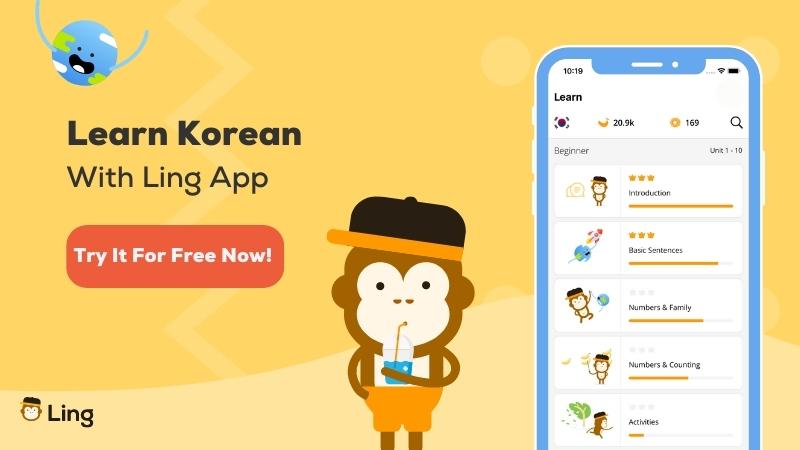
Learn Korean With Ling
Discover a new world of language learning with the Ling app – your ultimate passport to effortlessly mastering languages! Whether traveling to exotic destinations, connecting with international friends, or simply expanding your mind, Ling is here to make language learning fun, fast, and incredibly effective.
The Ling app’s user-friendly interface and engaging lessons are designed to keep you motivated and excited about your progress. Say goodbye to tedious grammar drills and hello to interactive lessons and quizzes that will have you speaking like a native in no time. Unlock the full potential of your linguistic abilities and join Ling today – because with the Ling app, the world is your oyster!
Download on the App Store or Play Store today!
Leave a Reply Cancel reply
You must be logged in to post a comment.
Discover more

People also read

5+ Basic Greetings in Romanian To Kickstart Conversations

Colors In Romanian: The #1 Easy Guide
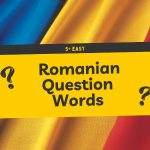
5+Easy Romanian Question Words And Examples

10+ Easy Ways To Say Happy Birthday In Romanian
10+ funny romanian phrases and their meaning.
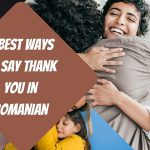
Thank You In Romanian: 4 Best Ways You Should Learn
Southeast asia, east europe.
© 2024 Simya Solutions Ltd.

47 Useful Korean Words & Phrases to Learn for Travelers
The Hallyu culture or Korean wave has taken the world by storm. From K-pop and K-drama to K-beauty and K-travel, it would be an advantage if you understand (or master!) some basic Korean words and phrases .
On both our Korea trips ( winter and spring ), we regret not arming ourselves with some useful Korean words and phrases. If not for our bilingual friends who helped us translate some English and Filipino to Korean words and phrases, it would have been a lot more challenging for us to explore and interact with the locals.
Now, we are trying to learn the Korean language, starting off with these useful Korean words and phrases for travel.
Basic Korean words and phrases for introductions and greetings

1. “Annyeonghaseyo” (안녕하세요) = “Hello” / “Hi”
Annyeonghaseyo (안녕하세요) is the standard way of saying “Hi” or “Hello” in Korean. According to our friend who now lives in Korea, it’s more respectful to say “Annyeonghaseyo” completely instead of “Annyeong” only, especially if you don’t know the person yet.
2. “Mannaseo bangapseumnida!” (만나서 반갑습니다!) / “Mannaseo bangawoyo!” (만나서 반가워요!) = “Nice to meet you!”
The standard way of saying “Nice to meet you!” in Korean is Mannaseo bangawoyo! (만나서 반가워요!), which is safe to say to everyone. However, it’s not as polite as the formal version Mannaseo bangapseumnida! (만나서 반갑습니다!), which you can use when speaking to someone with a higher social rank or to a large group.
3. “Eotteoke jinaesseoyo?” (어떻게 지냈어요?) = “How are you?”
This is a formal way of asking how your friend is doing. A more casual way would be, “Jal jinaesseo?” (잘 지냈어?). Do note that these Korean phrases are only used among friends, and not acquaintances or strangers.
4. “Aniyo. Gwaenchanayo.” (아니요 괜찮아요.) = “No. It’s okay.”
You use this Korean phrase when politely declining something, like when you are asked if you need a receipt, you can reply, “Aniyo. Gwaenchanayo.” (No. It’s okay.)
5. “Ireumi mwoyeyo?” (이름이 뭐예요?) = “What’s your name?”
There are many ways to ask “What’s your name?” in Korean, but this one’s the everyday version, which is generally acceptable by most Koreans.
6. “Je ireumeun <name>ibnida / iyeyo.” (제 이름은 <name>입니다 / 이예요.) = “My name is <name>.”
This is your reply to the person asking for your name. See samples below:
- Je ireumeun Benyeyo. (제 이름은 벤예요.) = “My name is Ben.”
- Benieyo. (벤예요) = “Ben.”
- Naneun Benida. (나는 벤이다.) = “I’m Ben.”
7. “Eodieseo wasseoyo?” (어디에서 왔어요?) = “Where are you from?”
This is the standard way of asking where the person is from.
8. “Jeoneun <place> eseo wasseoyo.” (저는 <place> 에서 왔어요.) = “I’m from <place>.”
This is your reply when asked where you are from. For example, Jeoneun Pillipineseo wasseoyo. (저는 필리핀에서 왔어요.) means “I’m from the Philippines.”
9. “<Language> hal su isseuseyo?” (<language> 할 수 있으세요?) = “Do you speak <language>?”
To ask if the person speaks a certain language, use this Korean phrase. For instance, you can say “Yeongeo hal su isseuseyo?” (영어 할 수 있으세요?) if you want to ask, “Do you speak English?”.
10. “Jogeum” (조금) = “A little bit”
Use this Korean word if you want to answer “a little” or “a little bit”.
11. “Ihaega andwaeyo.” (이해가 안돼요.) = “I do not understand.”
If you don’t understand, just use this Korean phrase.
12. “Moleugessseubnida.” (모르겠습니다.) = “I don’t know.”
And if you don’t know, you can reply with this Korean phrase.
13. “Ne” (네) / “Ye” (예) = “Yes”
There are different ways to say yes in Korean, but the standard one is Ne (네), and the more polite version is Ye (예).
14. “Aniyo” (아니요) = “No”
This is the standard and most basic way of saying no in Korean.
15. “Amado” (아마도) = “Maybe”
This is the Korean word translation for maybe.
Useful Korean words and phrases for social etiquette
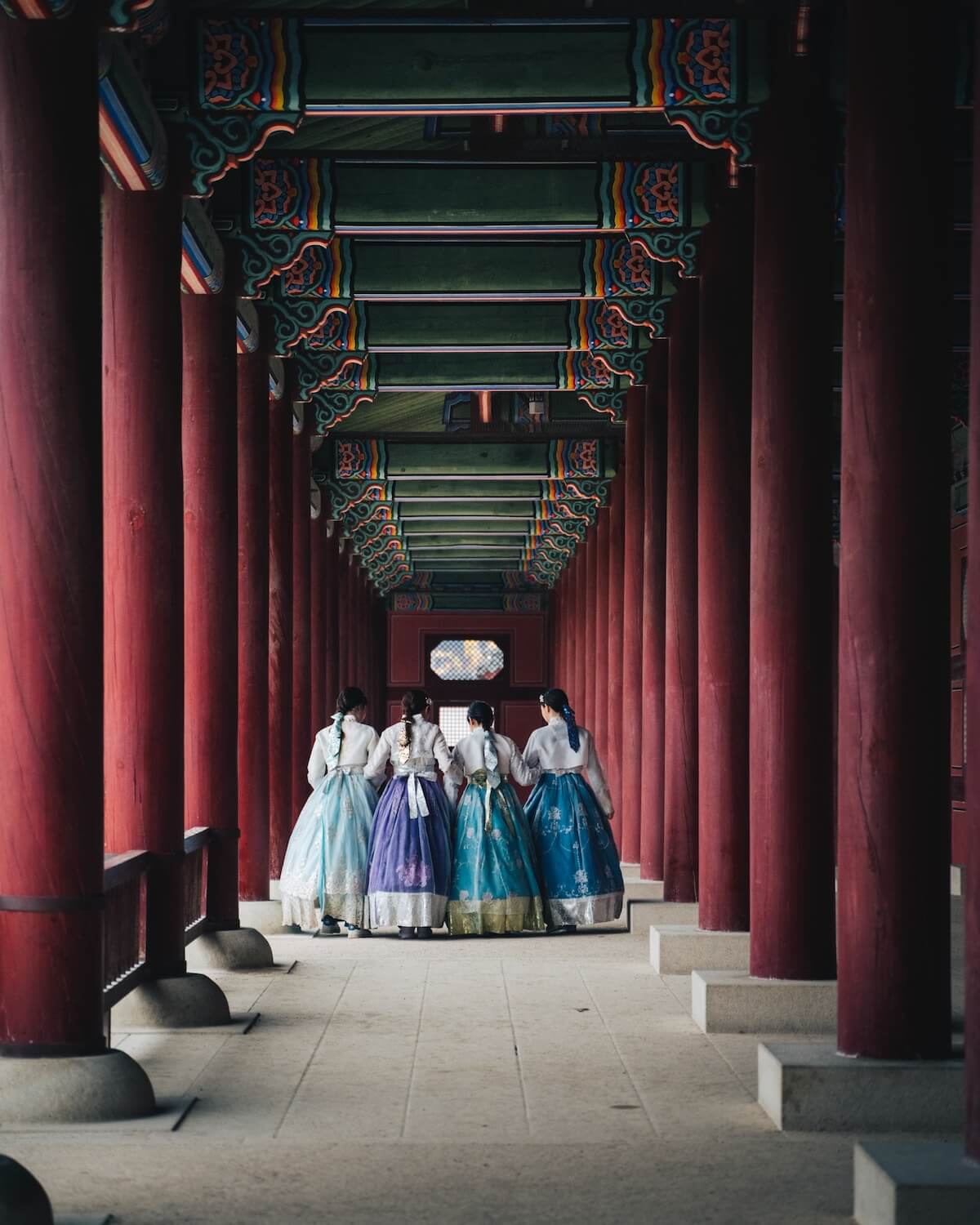
16. “Kamsahamnida“ (감사합니다) / “Gomapseumnida” (고맙습니다) = “Thank you”
Kamsahamnida (감사합니다) is the Korean word for thank you. There are multiple ways to express gratitude or say thank you in Korean. See the different usage and levels of politeness below:
- Kamsahamnida (감사합니다) – Formal and most common way
- Gomapseumnida (고맙습니다) – Polite way and still widely used
- Gomawoyo (고마워요) – Less formal and used between friends
- Gomawo (고마워) – Informal version and used between close friends of the same age or younger than you
17. “Aniyeyo” (아니예요) = “Not a big deal.”
It can be nuanced as “You’re welcome” in Korean language.
18. “Annyeonghi gaseyo” (안녕히 가세요) / “Annyeonghi gyeseyo” (안녕히 계세요) = “Goodbye”
Use Annyeonghi gaseyo (안녕히 가세요) when saying goodbye to the person leaving. But if you are the one leaving, you should say Annyeonghi gyeseyo (안녕히 계세요) instead.
19. “Juseyo” (주세요) = “Please”
Use this Korean word when you ask for a favor or say please.
20. “Jwesonghamnida” (죄송합니다) = “Sorry”
Say this Korean word if you want to apologize.
Helpful Korean phrases for travel and exploration
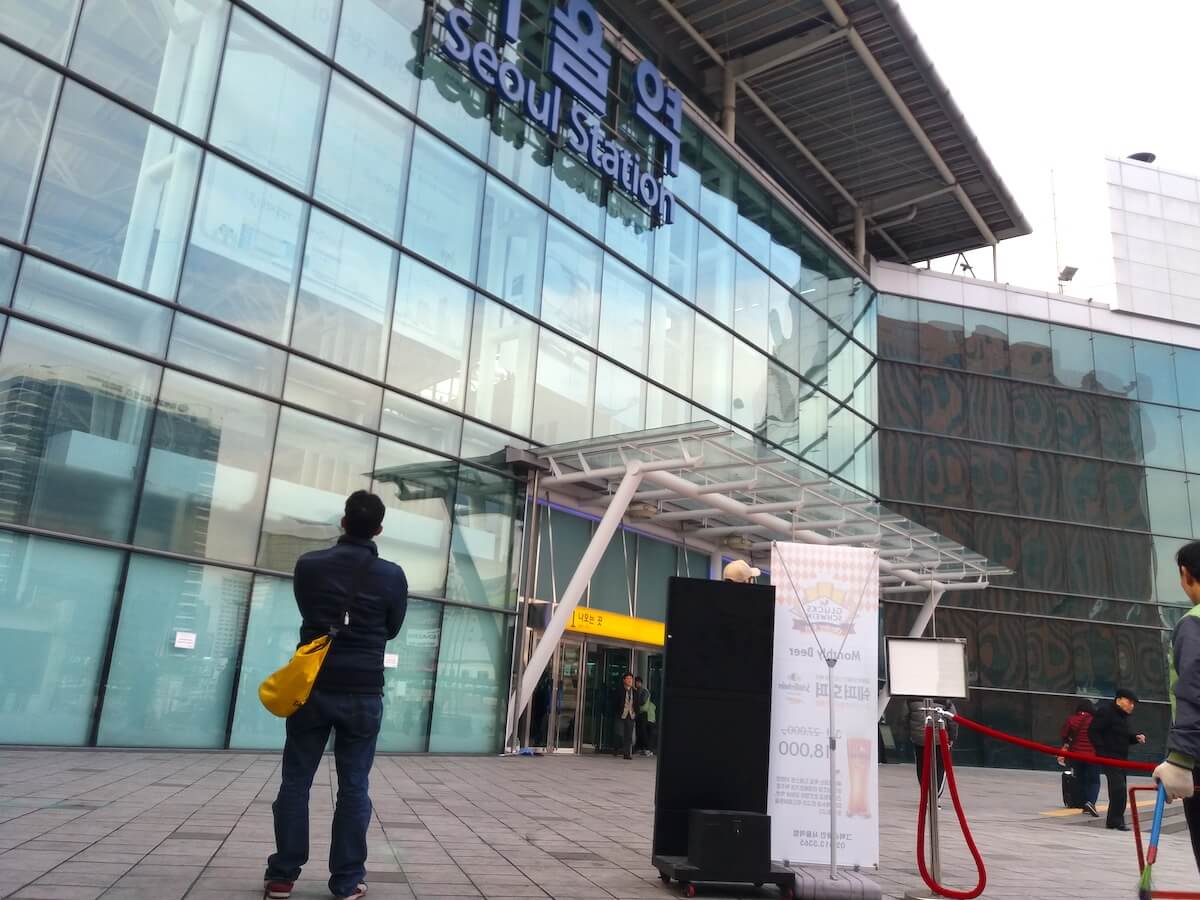
21. “Eodie isseoyo?” (어디에 있어요?) = “Where is it?”
Use this Korean word if you’re asking for the location of a place. For instance, if you’re asking, “Where’s the toilet?”, you can say, “Hwajangsil eodie isseoyo?” (화장실 어디에 있어요?).
22. “Eodi gaseyo?” (어디 가세요?) = “Where are you going?”
As mentioned previously, Eodi (어디) means where. Just add gaseyo (가세요) to form the question “Where are you going?”.
23. “Jeoneun jibe galgeoyeyo.” (저는 집에 갈거예요.) = “I’m going home.”
This is what you say when you’re going home.
24. “Eotteoke gayo?” (어떻게 가요?) = “How to get there?”
Eotteoke (어떻게) means “how” in Korean. Use the Korean phrase above if you’re asking for directions on how to get there.
25. “Yogeumeun eolmayeyo?” (요금은 얼마예요?) = “How much is the fare?”
Use this Korean phrase if you’re asking how much to pay for the fare.
26. “Baro orgeyo.” (바로 올게요.) = “I’ll be right back.”
This is what you say when you have to leave temporarily but will be right back.
27. “Gileul ilheosseoyo!” (길을 잃었어요!) = “I’m lost!”
Utter this when you’re lost, especially when navigating a new location or place.
28. “Dowajuseyo!” (도와주세요!) = “Help me!”
Say this Korean word when you need help.
29. “WiFi isseoyo?” (와이피이 있어요?) = “Do you have WiFi?”
Say this Korean phrase to ask if the establishment has WiFi.
30. “Bimilbeonho al su isseulkkayo?” (비밀번호 알 수 있을까요?) = “May I know the password?”
If they do have WiFi, you can then proceed to ask for the password.
Tip: Avoid the hassle of asking for free WiFi by getting your own Korea SIM card or pocket WiFi before your trip.
Practical Korean words and phrases for shopping

31. “Eolmayeyo?” (얼마예요?) = “How much?”
You can use this standard Korean word to ask for the price of something.
32. “Igeon mwoyeyo?” (이건 뭐예요?) = “What is this?”
You can use this Korean phrase if you’re curious about the item you want to buy.
33. “Jeoge mwoyeyo?” (저게 뭐예요?) = “What is that?”
Change Igeon (이건) with Jeoge (저게) to make it “that”.
34. “Harini isseoyo?” (할인이 있어요?) = “Is there a discount?”
This is what you say when asking if there is still a discount.
35. “Igeo juseyo.” ( 이거 주세요. ) = “Please give me this.”
Use this Korean phrase if you have already decided on what to buy and would like to get the item.
36. “Yeongsujeung juseyo.” ( 영수증 주세요 .) = “Please give me a receipt.”
After purchasing an item, you can always request for a receipt, especially if you are planning to claim for a tourist refund.
Handy Korean words and phrases for eating
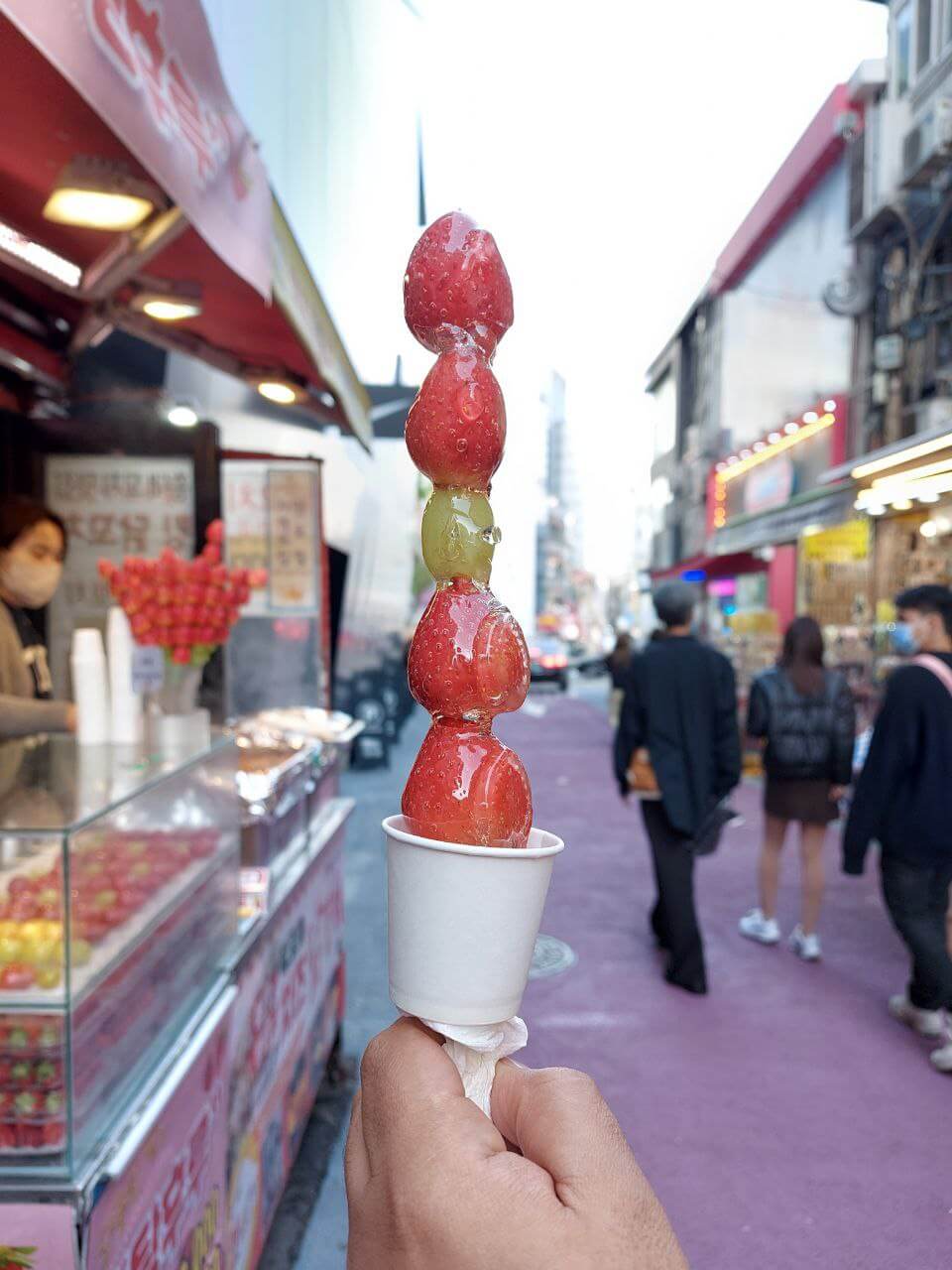
37. “Meokja!” (먹자!) = “Let’s eat!”
This is the Korean word or expression for “Let’s eat!”.
38. “Masissge deuseyo!” (맛있게 드세요!) = “Enjoy your meal!”
This is the Korean translation for bon appetite!
39. “Bap meogeoseoyo?” (밥 먹었어요?) = “Have you eaten?”
Use this Korean phrase to ask if the person has eaten already. It can also be nuanced as saying “hi” or “hello” to someone.
40. “Aniyo. Ajig iyo.” (아니요. 아직이요.) = “No. Not yet.”
This is your reply if you haven’t eaten yet.
41. “Baegopayo.” (배고파요.) = “I’m hungry.”
Although there are different ways of expressing you are hungry, this is the standard way of saying it in Korean.
42. “Baebulleoyo.” (배불러요.) = “I’m full.”
And when you are already full, just say this Korean word.
43. “Jal meogeotseumnida.” (잘 먹었습니다.) = I ate well.
This is what you say after eating and you enjoyed the meal.
44. “Masisseoyo!” (맛있어요!) = “Delicious!”
This is a common way of saying “delicious” in Korean. Just add Wanjeon (완전) as in Wanjeon masisseoyo! (완전 맛있어요!), if you want to say, “It’s very delicious!”.
45. “Dalkomhada! (달콤하다!) = “It’s sweet!”
This is how you describe a food that tastes sweet.
46. “Menyu jom juseyo.” (메뉴 좀 주세요.) = “Please give me the menu.”
This is what you say when you can’t find the menu on the wall and you’d want to ask for it from the waiter or attendant.
47. “Gyesanhalkkeyo.” (계산할게요.) = “I’ll pay for the bill.”
This is what you say when you already want to pay the bill.
These are just some of the useful Korean words and phrases to learn for a start. We’ll keep updating this list once we learn more words and phrases that’ll be useful for travelers to South Korea .
Do you have more Korean words and phrases to add? Do let us know on our social media channels: Facebook , Instagram , Twitter , and YouTube .
*Special thanks to Kevin, our polyglot friend who now lives in Korea, for reviewing our Korean language translation.
8 phrases you'll rely on in Korea
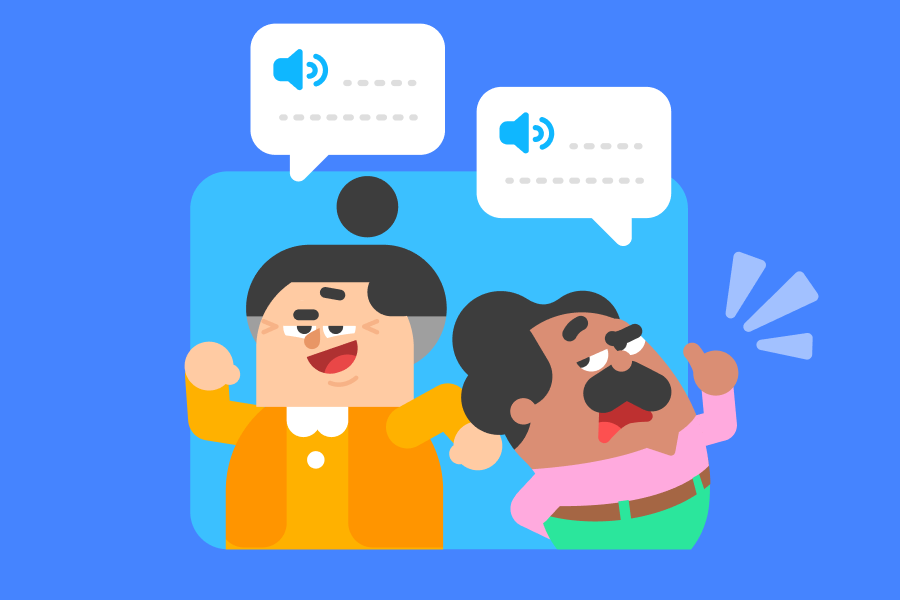
So, you’ve booked your trip to South Korea and are excited for all the entertainment, food, nature, and city sights that await you.
Before you flex your passport and head off on an epic vacation, here are eight phrases to help you once you land!
감사합니다 Romanization: gam-sa-ham-ni-da Translation: Thank you If you’re traveling to another country, thank people like your mother is watching. Respect is frequently shown through language in Korean, so it’s best to stick with this formal version while traveling.
죄송합니다 Romanization: joe-song-ham-ni-da Translation: I am sorry Knowing how to say I’m sorry can help you out of a jam when traveling. You’ll want to use the formal version of this expression as well, and even add a small bow for extra politeness. (You can incorporate this body movement into saying hello and thank you , too.)
당기세요 / 미세요 Romanization: dang-gi-se-yo / mi-se-yo Translation: Push and pull Yes, you could figure out whether a door wants to be pushed or pulled by simply trying it. But do not underestimate the confidence that comes with knowing this in advance.
주세요 Romanization: Ju-se-yo Translation: Please give (or please may I have ) When ordering, say this phrase after the name of the item. Or if vocabulary escapes you, show a photo on your phone or point, and add 주세요. This utilitarian phrase is extremely helpful in both stores and cafes.
매워요? Romanization: Mae-wo-yo? Translation: Is it spicy? Korea is home to buldak (fire chicken), tteok-bok-ki (rice cakes in chili sauce), and jjambbong (spicy seafood noodle soup), among other heat-bearing dishes. If that list of delicacies made your taste buds nervous, or spice just simply isn’t your bag, keep this phrase in your back pocket so you can ask before you bite.
잘 먹겠습니다 Romanization: Jal-meok-get-seum-ni-da Translation: Bon appétit The direct translation is “I will eat well.” (It’s Korea—you absolutely will.) But the more intangible meaning is along the lines of “Thank you for using your time and energy to cook for me, I will appreciate it with gratitude.” Generally, the phrase is used while dining with a group as a reminder of that gratitude, however you can also say it to the person who cooked your meal or if someone buys you a meal.
어떤 케이팝 그룹을 가장 좋아해요? Romanization: Eotteon keipap geurub-eul gajang joahaeyo? Translation: Which KPOP group do you like the most? Maybe Korea’s prolific entertainment industry inspired you to visit. Or maybe you’re just in the position of having to make small talk—but with no clue how to do it. Either way, asking about KPOP is usually a good way to start. The industry contributed an estimated 5 billion to Korea’s economy, so it’s an easy topic for many. Maybe you’ll even get some unexpected music recommendations! Being a fan of KPOP can even help you with your language lessons.
대박 Romanization: Dae-bak Translation: Awesome, cool, amazing, jackpot A slang way to express joy and excitement! This word also has elements of unexpected surprise. So, save it for moments when your amazement and joy bubbles over, and you simply can’t believe your good luck.
Pack a few Korean phrases for your trip!
It can feel intimidating to use your new Korean skills—but it doesn’t have to be! Start slowly incorporating a few phrases into your interactions, and enjoy creating new connections along the way.
Related Posts All Posts
Practice hack: how to review previous lessons on duolingo, 5 meanings of "se" every spanish learner should know.

- Accomodation
- Attractions
- Food & Drink
- K-Entertainment Tours
- Korean Culture
- Shopping Destinations
- Transportation
- Travel Essentials
- Travel Tips
- Travel News in Korea
- Gyeonggi-do
- North Gyeongsang (Gyeongsangbuk-do)
- North Jeolla (Jeollabuk-do)
- South Chungcheong (Chungcheongnam-do)
- South Gyeongsang (Gyeongsangnam-do)
- South Jeolla (Jeollanam-do)

Top Korean Conversational Phrases You Need to Know

5,823 total views, 4 views today

Are you planning to visit South Korea? If yes, then it is prudent to know some common Korean conversational phrases and words.
Conversation between two persons when neither knows the other’s language can only be through body language, which sometimes may lead to unpleasant situations. Understanding a bit of the Korean language will undoubtedly help you in your travels and please the locals!
The phrases we have included here are for everyday situations any tourist will come across in South Korea. It will certainly make your shopping experience more enjoyable and fun!
The phrases in English have different meanings depending on the context of use, while their equivalent in Korean is more context-specific. There are different phrases for varying levels of formality or situation.
You can use words and phrases exactly as you would use their English equivalents and practice speaking them quickly. Learning these phrases will make sure your time in Korea is smooth sailing!
We first listed the Korean conversational phrases in English, followed by the Korean pronunciation in roman characters, for learning the pronunciation and expression in Korean characters ( Hangeul ).
Table of Contents
Common Korean Words & Phrases
Some common phrases for simple conversations like “Yes/No,” “Good,” and “I don’t know.”
“Thank You,” and “Sorry” phrases are probably the most important and will often be used during your Korean travels.
Korean Words & Phrases for Greeting
”Hello” is the most common phrase anyone in Korea will use. There are dozens of variations of it to account for different levels of respect and situations. Some greetings phrases are given below.
Read more to learn more about Korean greeting phrases .
Korean Phrases Useful While Shopping in South Korea
Traveling to South Korea without shopping is unimaginable! For shopping, you are definitely going to need some of these phrases. Make sure you learn these before you head out for the next shopping spree. You will certainly add a lot of fun to your shopping experience!
Restaurant and Coffee Shop Korean Phrases
A Korean meal is unique, with drinks, appetizers, multiple side dishes , main dishes, and desserts. But be careful; Koreans love spicy food. Coffee is also popular in Korea and in Seoul, you can’t walk more than a few minutes in any direction without running into a cafe or coffee shop. Here are some useful Korean conversational phrases for when you are enjoying food and drinks in restaurants and café.
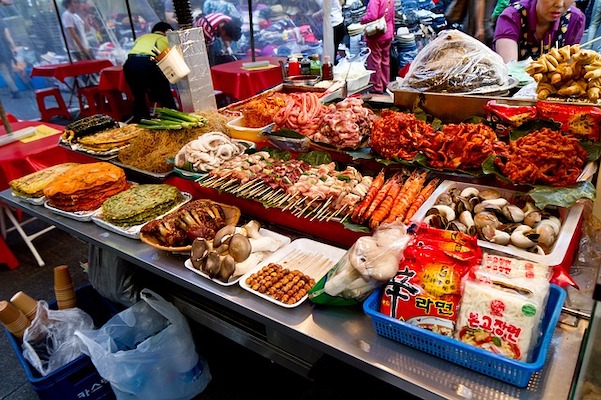
Phrases for Moving Around in the Beautiful Country
In Korea, especially in Seoul, you can go all day without having to speak or read a word of Korean. Signs in English are everywhere, more than a few Koreans speak English too. Still, these expressions will help you to communicate with locals as you explore South Korea, asking directions and going places. By knowing these, you will make sure you get to your destination smoothly and likely have a more interesting experience.
Moving around by Taxi is also common as fares are low, easy to find and drivers are usually friendly. Learning a few taxi-related Korean conversational phrases will make your trip smoother.
The city bus system in Korea is one of the best systems in the world with fast, clean, and on-time buses and modern bus stops with digital displays and mobile apps. Some Korean conversational phrases below will help in using city buses.
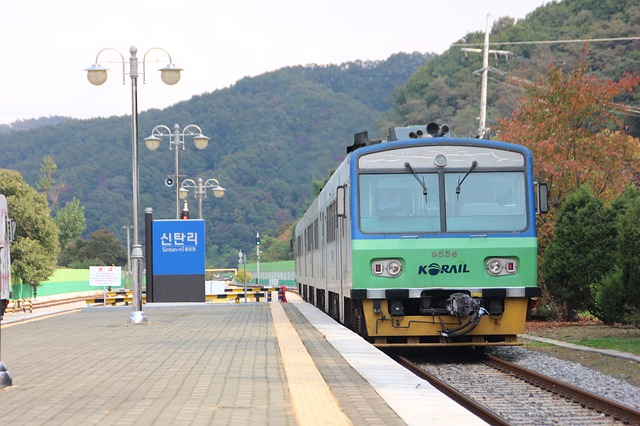
Some Other Useful Korean Conversational Phrases
Finally, the following phrases may be useful at times.
You can also learn the Korean language using mobile apps .
KoreaTravelPost Editor
Hello there! I'm the Features Editor for KoreaTravelPost.
Related Posts
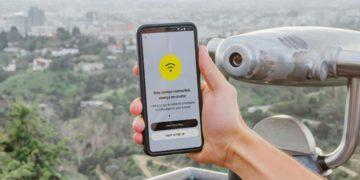
The Best South Korea eSIM for Tourists – Klook
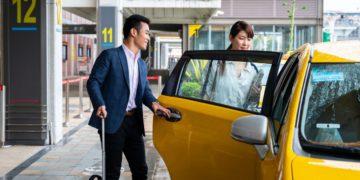
A Quick Guide to Seoul Airport Transfers
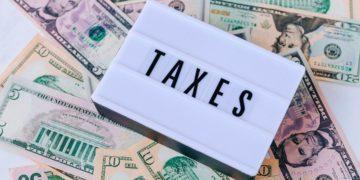
Everything You Need to Know about Hotel Tax Refund in Korea
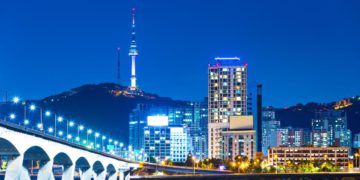
Explore Korea Like a Boss with InterparkTriple TRIPLE Korea
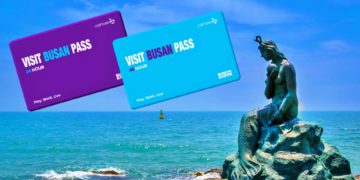
Temporary Suspension of VISIT BUSAN PASS Sales – Important Information for Travelers

Seoul Trip PASS App: Your Ultimate Travel Companion for Hassle-Free ID, Seamless Payments, and Instant Tax Refunds!

Planning A Day Trip to Pocheon from Seoul

TESSAN Germany France Travel Power Adapter

Lonely Planet Korea 12

Korean Snack Box Variety Pack

OSULLOC Lovely Tea Gift Box Set
More from our network.

- Medical Tourism
FREE NEWSLETTER
Copyright © 2024 About Us| Terms of Use |Privacy Policy| Cookie Policy| Contact : [email protected]
Login to your account below
Fill the forms bellow to register
Retrieve your password
Please enter your username or email address to reset your password.
Top 10 Korean Phrases to Know when Traveling to Korea
- January 22, 2024
Overview Hide
Top 10 korean phrases to know, hello – ahn yeong haseyo, thank you – kam sa ham nida, how much is it – ol ma yeh yo, sorry – chway seong ham nida , yes/no – neh/ ahn ni ye yo, please give me ___ – ___ joo seh yo , do you have ___ – ___ iss seo yo.
- Where is ___? – ___ Oh Di Yeh Yo?
I can’t speak Korean – Han Guk Mal Jal Mo Thae Yo
Excuse me – jeo gi yo, 10 key korean phrases.
Korean phrases are very easy to learn. The Korean language is surprisingly easy to learn, but for those looking for a quick guide to Korean phrases to know , SEOULSPACE has just the infographic for you. These ten phrases are pretty much all you need to know if you are traveling to Korea for a short period of time . It will only take about 1-2 hours to fully memorize these Korean phrases . Getting around Korea for tourists can be difficult without knowing the basic Korean phrases. So take some time to memorize these phrases and practice speaking them as quickly as possible. The faster you speak it, the more natural you will sound.
The list is based on the phrases you will use the most. If you are traveling to Korea, these are the Korean phrases to know that will help you in everyday situations. So start with #1 and work your way down. Koreans will give you extra service if you are a foreigner once they find out you have taken some time to learn the Korean language.
For a more detailed list, you can check out this article here .
Used when meeting, greeting, arriving, seeing someone, entering a store, etc. You will be staying this constantly as you meet people.
Used the same way as the English would for the phrase “thank you.” Like Ahn Yeong Haseyo, try to say this as often as possible to show respect.
Make sure you point to something and ask, “How much is it?”. Then the store owner will either respond in Korean or English or show you the price using a calculator.
This can be used when accidentally bumping into someone or making a mistake.
This will be the same context as in English.
Remember to replace the ___ with what you want to ask for at a store, street food stand, or restaurant. For example, “Please give me water ” would be Mul Joo Seh Yo.
Remember to replace ___ with what you want to ask is available. For example, “Do you have kimchi ?” is Kimchi Iss Seo Yeo?
Where is ___? – ___ Oh Di Yeh Yo?
Remember to replace the ___ with the place you are looking for. For example, “Where is the bathroom ?” is Hwa-jang-shil Oh Di Yeh Yo?
If someone starts talking to you in Korean, saying this will let them know you’re not good at speaking Korean.
This Korean phrase is used when you want to get someone’s attention or when you want to call a waiter at a restaurant.
These ten key Korean phrases will allow you to get through a week in Korea without issues. You will be fine if you know the bare minimum for simple conversations with people. These are the top 10 basic Korean phrases to ensure your time in Korea is as easy as possible!
There are many ways to say Korean phrases, such as “excuse me” and “thank you.” Also, there are specific phrases that you’ll use for certain situations. It’s important to know when to use these basic Korean phrases, especially in South Korea. These different situations make learning the Korean language fun and interesting.
You can use Google Translate or Naver translate to hear the word in Hangul to hear the correct pronunciation. To learn more about the phrases in detail, click on the English equivalent of the phrase.
Related Topics
SeoulSpace covers Korean Culture, Lifestyle, Kpop, and Korean Entertainment. Bringing you a complete overall view of the Korean Wave.

Places to Visit in Dosan Park, the Hottest Street in Seoul – Top 10

Bukchon Hanok Village – Historic Korean Housing
You may also like.

10 Tips for the Boryeong Mud Festival – Best Festival in Korea
- April 1, 2024

5 Amazing Cultural Experiences in South Korea to Try When Visiting Korea

The 10 Best Pensions in Korea to Visit
- March 15, 2024

Top 10 Coolest Places to Visit in Seoul – Updated
- March 7, 2024

10 Things to do in Dongdaemun for locals and tourists

The 10 Best Museums in Seoul to Visit this Year

Best Beaches in Korea to Visit this Summer
My name is meme cheda and I want to be your new member of kpop
Leave a Reply Cancel reply
You must be logged in to post a comment.
Input your search keywords and press Enter.
Unlock more content
September 12, 2024
Celebrating Chuseok: A Guide to Korean Thanksgiving
Why korean olympians are the most lethal, a guide to korea’s elegant and enigmatic moon…, the top k-news from around the world, the 5 best korean sunscreens right now.
Join Our Newsletter

- DOLJANCHI: Korean First Birthday
- HWANGAP 60TH BIRTHDAY
- LEARN THE KOREAN LANGUAGE
- KOREAN ZODIAC
- Korean Weddings
- TRAVEL GUIDE
- RESTAURANTS
- FOOD STORIES
- K-DRAMA & MOVIE
- South Korea Travel Guide
Where to Go, What to See & How to Stay on Budget
Now is the perfect time to visit South Korea. Known for its beauty, cleanliness, safety, and sophistication, this destination beckons for repeated visits. As Korean culture captivates globally, the nation enjoys a cultural revival, ideal for those eager to explore its vibrant offerings .
South Korea seamlessly blends ancient traditions with the most modern advancements and offers futuristic technology, dynamic markets, and a thriving pop culture scene. Its strict safety measures and no-tipping culture make dining and transport exceptionally pleasant and affordable.
As an added bonus, the favorable exchange rate between the Korean won and the US dollar makes this an opportune moment for Western travelers.
Our streamlined South Korea Travel Guide provides essential itinerary ideas, travel tips, and the best day trips to enhance your experience. Dive into the heart of Korean culture and start planning your unforgettable journey. Let’s go!
Here are some of our most popular articles that will help you make the most of your trip to South Korea.
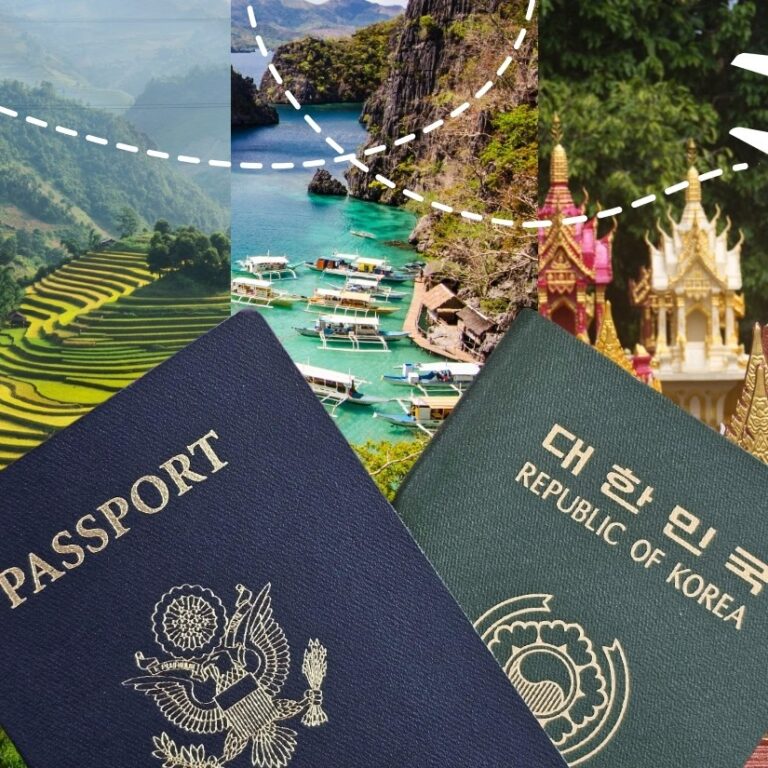
A Travel Guide to Exploring Asia From South Korea

An Insider’s Guide: 30 Essential Travel Tips for South Korea

A Local’s Guide to Gyeongju
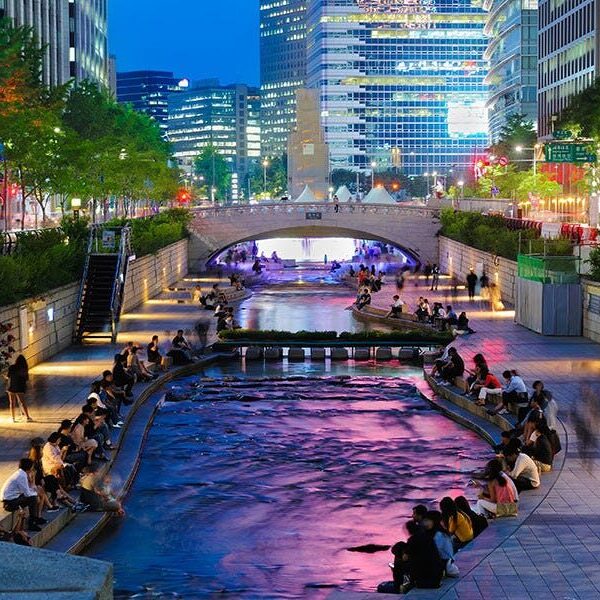
19 Did-You-Knows About Korea
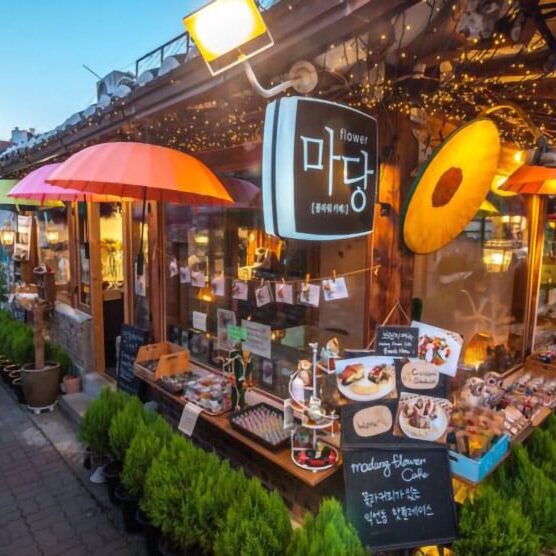
19 Best Things to Do in Seoul – An Insider’s Guide
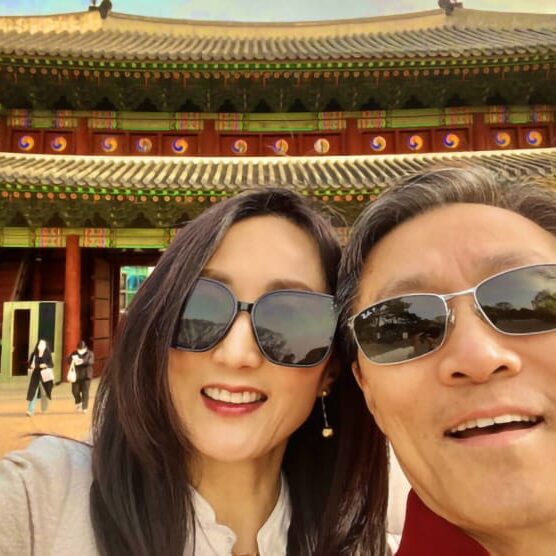
23 Reasons Seoul Will Be Your New Favorite City
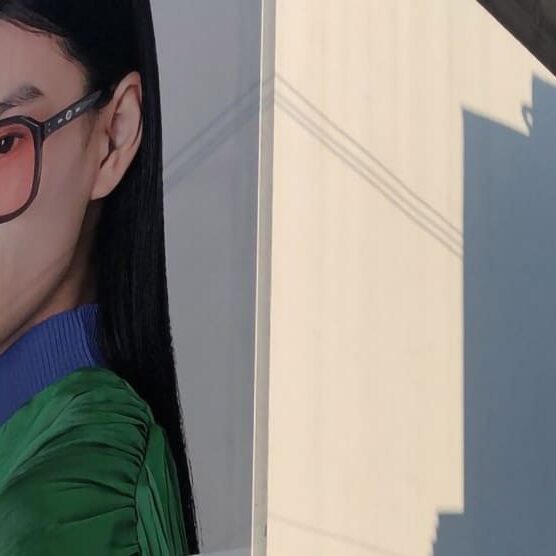
Off the Beaten Path: 5 Cool Things to do in Seoul
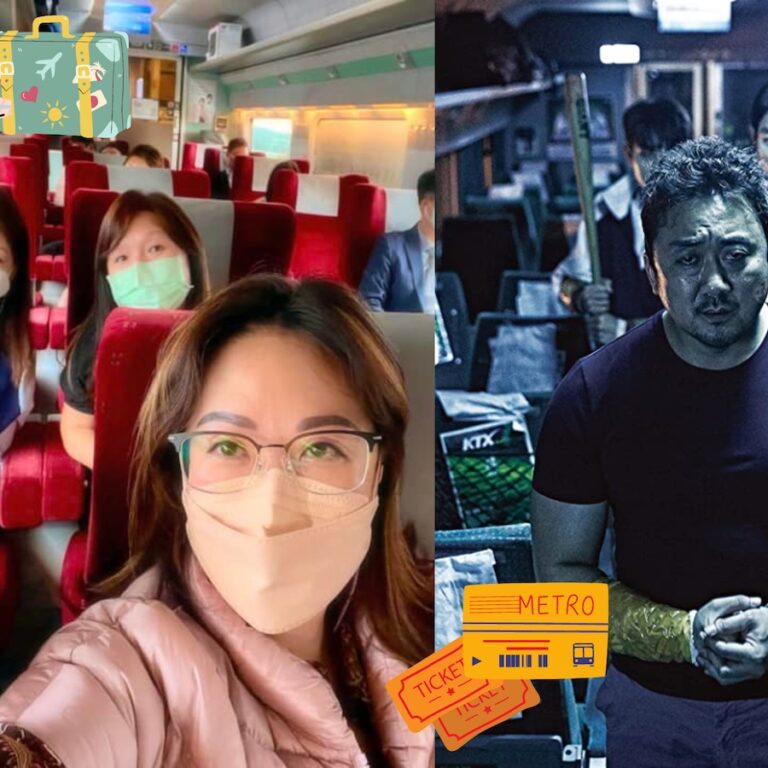
7-Day Trip to Korea Including a Train to Busan
Latest travel updates.
- Vaccination is NOT a requirement for entry into Korea.
- There is no requirement on the passport’s remainder validity for entry. You may travel to Korea as long as your passport remains valid throughout your stay in Korea.
- From April 1st, 2023, travelers from the USA, Canada, and 21 other countries no longer need to apply for the K-ETA to travel to Korea. This will run at least until 31st December, 2024 and is designed to make it easier to travel to Korea.
Planning Your Trip To Korea
Check the Korean Embassy for any possible travel restrictions.
- If you’re not sure where to stay, check out our guide to the best hotels in Seoul . You can find our recommendations for the best luxury, mid-range, and budget hotels in Seoul, as well as long-term apartments that you’ll love.
- For the best flight deals to South Korea, we recommend Skyscanner and Expedia .
- For the best hotel prices in Seoul, we recommend Klook 0r Agoda – they cover most hotels in Korea and offer the best prices without hidden fees.
- Before you travel to Korea, it’s a good idea to think about your SIM options. SIM stands for Subscriber Identity Module and unless you have the proper SIM service, you will not be able to use your phone. You can order an eSim card, regular sim card or portable WiFi router to collect at the airport so you’re connected as soon as you arrive. You can also check with your phone provider to see if you can turn on a dual SIM function on your phone.
- You can change a small bit of money before you travel, but you can also use the airport ATM to get some Korean won.
- There are sizeable differences in exchange rates depending on where you go, so you will need to do some comparing before you exchange large sums of money. You can exchange USD to KRW easily at banks or money exchange shops in all major tourist areas. Myeongdong and Namdaemun offer many options, and the Coex Center also has a money exchange facility. If you find a place that is out of line with other options, try negotiating the exchange rate with the vendor. Sometimes they will accommodate.
- You can withdraw cash from bank ATMs but be aware of bank fees. Alternatively, use a pre-paid travel card like the one offered by Wise , which allows ATM withdrawals and payments and works well in Korea.
- Don’t forget to bring a travel adapter for your electronics and leave plenty of extra space in your suitcase for the many Korean souvenirs and goodies you’ll buy on your tri
Do US Citizens Need A Tourist Visa?
No, travelers from the USA don’t need a tourist visa to enter South Korea. You can visit for up to 90 days visa-free.
Current COVID-19 Rules In Korea
Most COVID-19 rules in Korea have been dropped and now there are only 2 main rules to be aware of. First, face masks are mandatory when visiting medical facilities (hospitals). There is no longer a 7-day mandatory quarantine for people in South Korea. If you’re infected with COVID, the Korean government recommends a 5 day self-quarantine, but it’s not currently enforced.
Korean Tourism Support Hotline
If you have any concerns or problems when traveling in Korea, you can call 1330 . This is a dedicated tourism support hotline where trained specialists provide tourist assistance and is available in Korean, English, Japanese, Chinese, Russian, Vietnamese, Thai, and Malay.
US Government Travel Advisory For Korea
The U.S. Department of State currently has a level 1 travel advisory (Exercise Normal Precautions) for the Republic of Korea (ROK). Find out more about current travel advisories for South Korea on the Department of State website.

6 Best Destinations In Korea
South Korea is truly a country of contrasts. From the bustling, modern city of Seoul , with cutting-edge designer buildings, VR labs, and AI robots, to peaceful UNESCO World Heritage cities like Jeonju and Gyeongju , there are many unique places to explore.
There’s nothing worse than coming back from vacation and hearing about incredible places you missed that you wished you’d seen, such as a beautiful Buddhist temple by the beach (Haedong Yonggungsa Temple) or a leafy island getaway where deer and rabbits roam freely (Nami Island).
Here are 6 of the best destinations in Korea that you absolutely must visit, as well as some of the sights you’ll want to check out while you’re there. We’ll be bringing you lots more detailed destination guides in the future, so be sure to visit again soon.
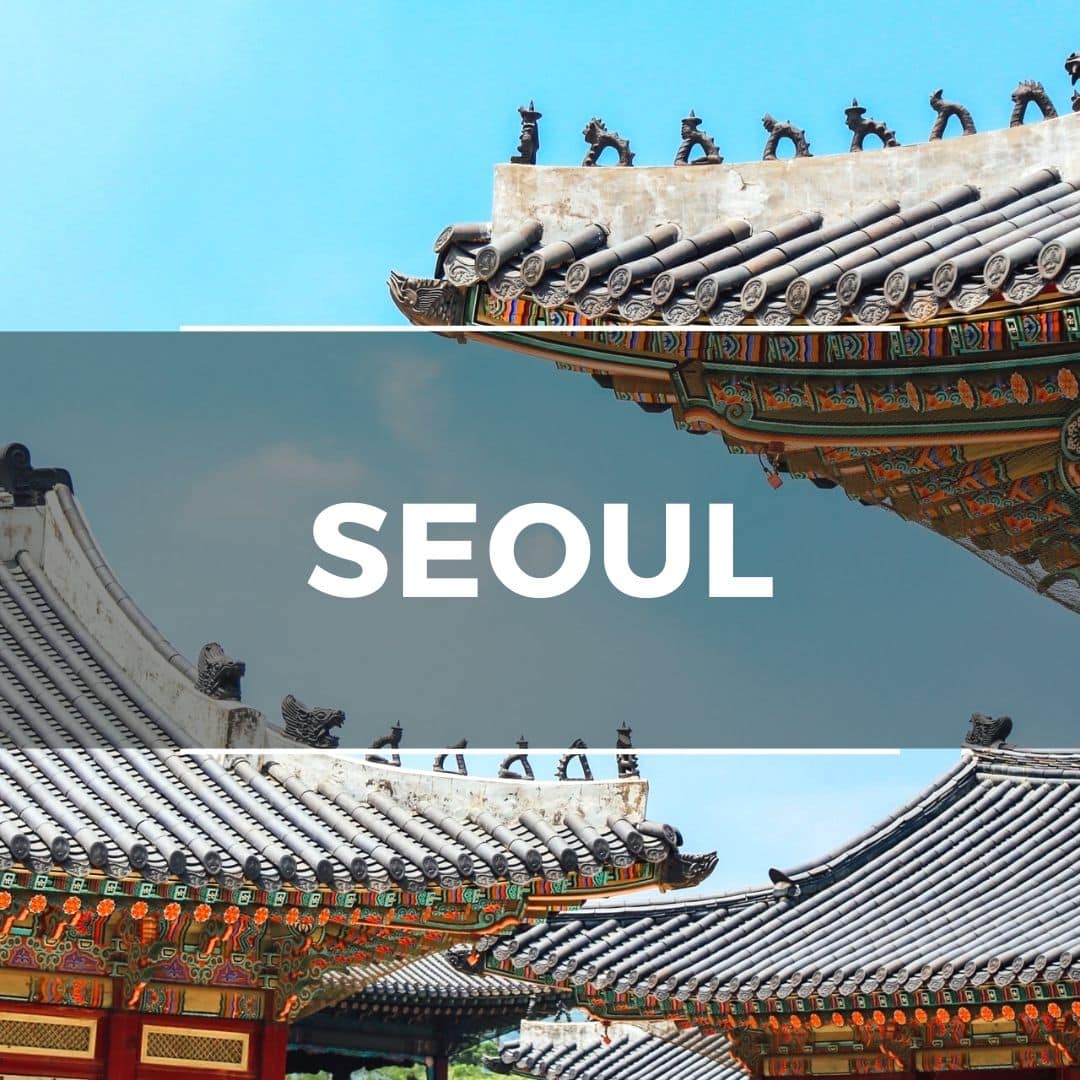
Korea’s Busy Capital
Seoul is Korea’s largest city, capital, and first, stop for most travelers to Korea. There are many beautiful places in Seoul , including landmarks, relics from ancient kingdoms, towering skyscrapers, Buddhist temples, Michelin-starred restaurants, and some of the best street food you’ll find in the world. If you see only one city in Korea, you should definitely visit Seoul.
You’ll never be bored in Seoul. Whether you’re traveling as a family, as a couple, or by yourself, there’s so much to do. Be sure to plan lots of time to check out Korea’s capital.
This Full Day Tour of Seoul will show you some of the hottest spots in the city, while this Customized Private Tour of Seoul will allow you to choose where to go.
Here are 10 of the best Seoul attractions:
- Gyeongbokgung Palace
- Bukchon Hanok Village
- Starfield COEX Mall
- Bukhansan National Park
- Myeongdong Street Markets
- Lotte World Tower
- Secret Garden (Changdeokgung Palace)
- Dongdaemun Design Plaza
- N Seoul Tower
- Yeouido Hangang Park

Korea’s Second City
Busan, Korea’s second city, is a thriving port city far away from Seoul both physically and culturally. This popular summer destination features some of Korea’s most popular beaches and bars. Explore Busan and you’ll find sprawling markets, fresh seafood, film festivals, the world’s largest shopping mall, coastal temples, and lots more.
Busan is a city with some very photogenic sights. See the sunrise on the beach, hike around leafy coastal streets on the side of cliffs, and marvel at the wide range of (living!) seafood in the markets.
This Full Day Tour of Busan will show you the best beaches, markets, and local sights, while this Customized Private Tour of Busan will allow you to choose where to go.
Here are 10 of the best Busan attractions:
- Haeundae Beach
- Gwangbokdong Food Street
- Haedong Yonggungsa Temple
- Huinnyeoul Culture Village
- Gamcheon Culture Village
- Oryukdo Sky Walk
- Lotte World Busan
- Jagalchi Fish Market
- BIFF Square & Centum City Mall
- Taejongdae Resort Park
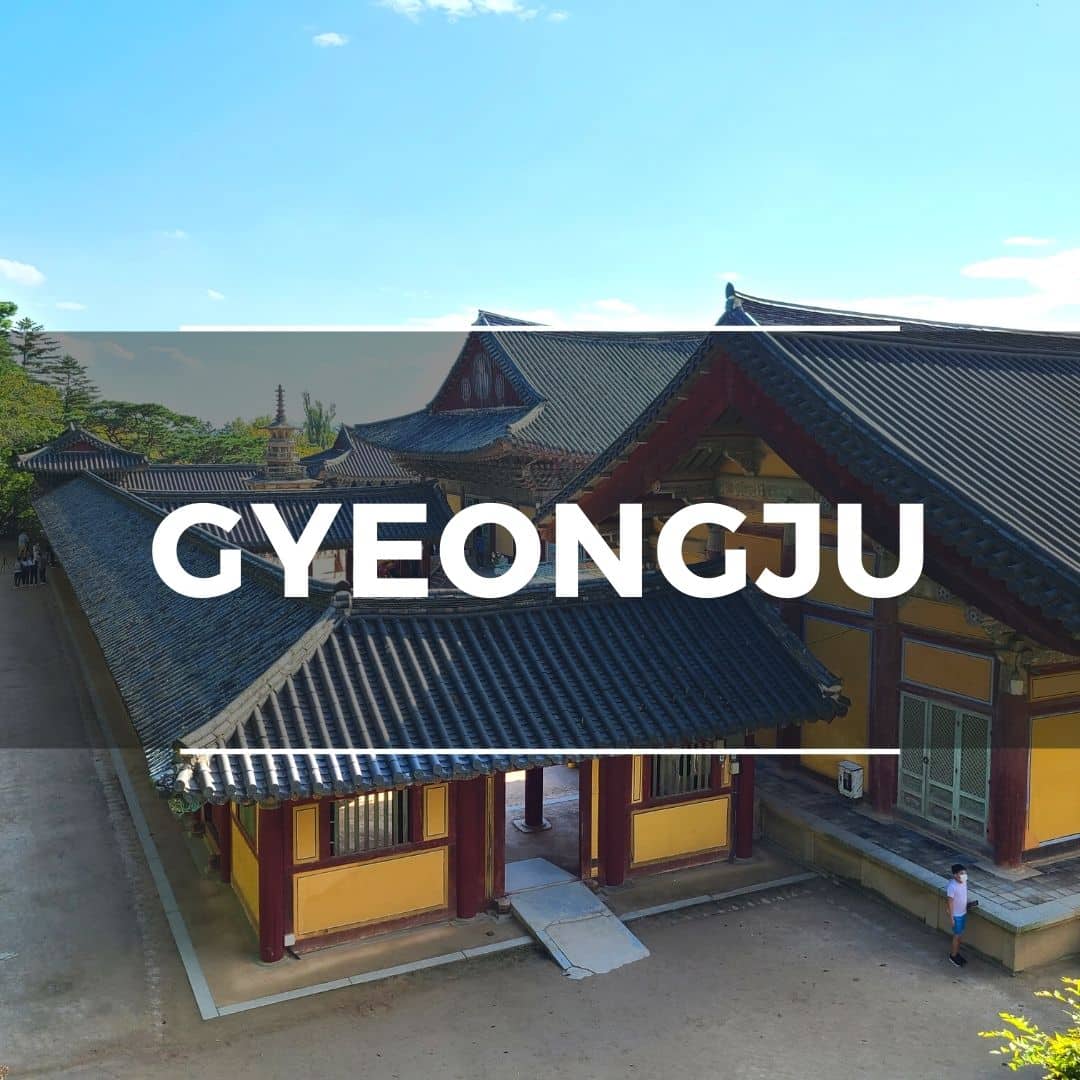
UNESCO City
Gyeongju is the former capital of the Silla Kingdom, part of the Three Kingdoms part of Korean history. These days, Gyeongju is an open air museum housing Korea’s finest history and monument. This UNESCO World Heritage City is a must-see for those who want to learn more about Korea’s deep cultural past.
Gyeongju is packed with temples, palaces, historical sights, and monuments. But it’s not just the history that draws the crowds, the city is an area of natural beauty, lined with cherry blossoms and shadowed by misty mountains.
This Full Day Tour of Gyeongju from Busan will take you around Korea’s open-air museum city, showing the top UNESCO sites along the way, while this Customized Private Tour of Gyeongju will allow you to choose where to go.
Here are 10 of the best Gyeongju attractions:
- Gyeongju Historic Area
- Bomun Lake Tourist Complex
- Bulguksa Temple & Seokguram Shrine
- Donggung Palace & Wolji Pond
- Yangdong Folk Village
- Cheomseongdae Astronomical Observatory
- Gyeongju National Museum
- Gyochon Traditional Hanok Village
- Woljeonggyo Bridge
- Gyeongju National Park

Natural Wonder
Jeju Island is Korea’s semi-tropical island that’s a popular vacation destination for locals and tourists alike. This area of outstanding natural beauty offers up rugged coastal walks, sandy beaches, green hills, and a volcano to hike up for those who enjoy a challenge. Culture and cafe lovers will also find Jeju Island a charm.
From snorkelling under the sea, to hiking above the clouds, sampling Jeju’s black pork BBQ, and drinking local green tea, there’s so many exciting activities, sights, tastes, and experiences waiting for you on Jeju Island.
This Full Day Tour of Jeju Island will show you some of the most incredible UNESCO World Heritage sites on Jeju’s East Coast, while this Customized Private Tour of Jeju Island will allow you to choose where to go.
Here are 10 of the best Jeju Island attractions:
- Seongsan Ilchulbong Sunrise Peak
- Jusangjeolli Hexagonal Lava Cliff
- Hallasan Mountain (Volcano)
- Hamdeok Beach
- Jeju Folk Village
- Hyeopjae & Geumneung Beach Areas
- Cheonjeyeon & Jeongbang Waterfalls
- Udo Traditional Island
- Yakcheonnsa Coastal Buddhist Temple
- O’Sulloc Green Tea Fields
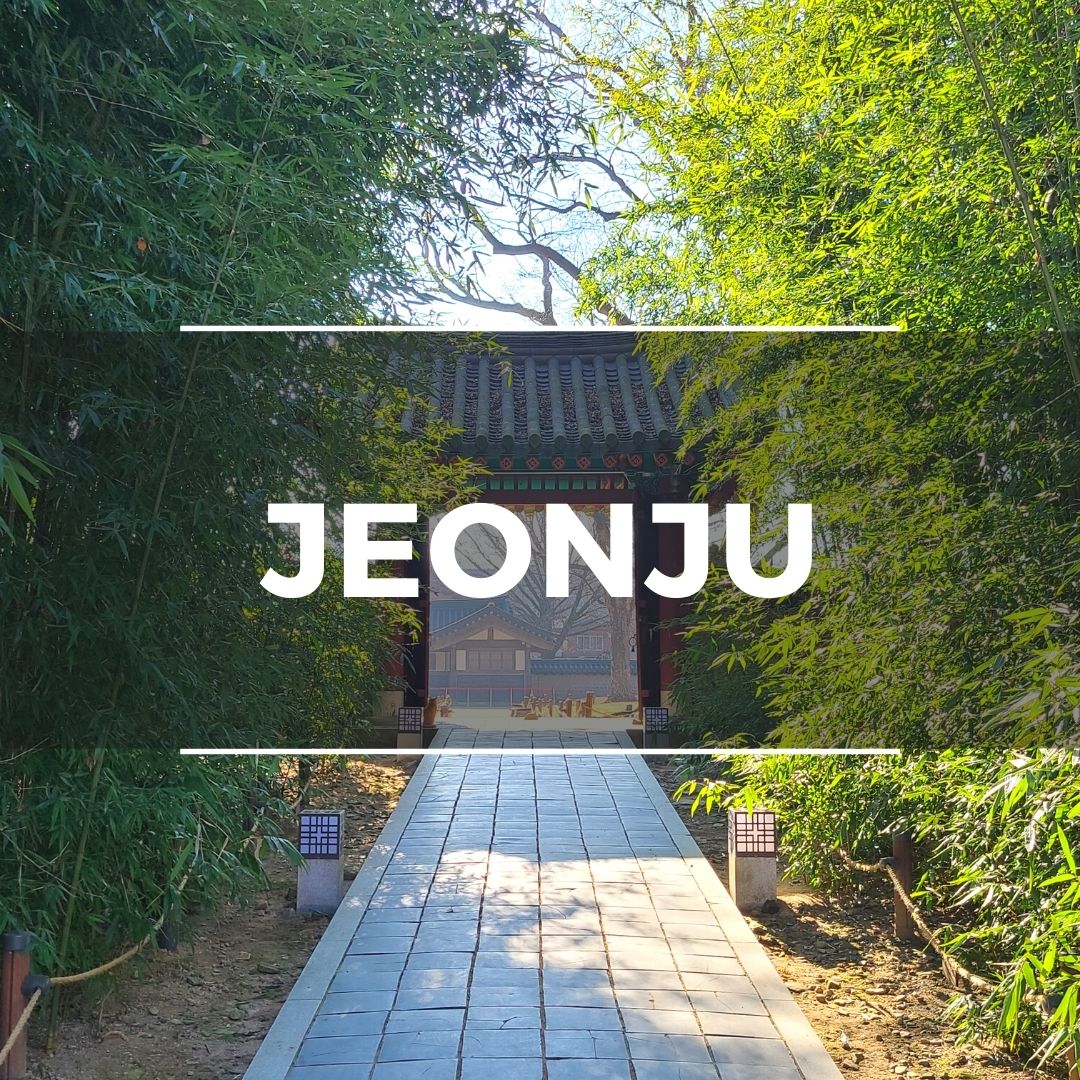
Traditional Korea
Jeonju is famous for its historical and cultural sights, including the sprawling Jeonju Hanok Village, packed with more than 700 traditional hanok houses. Jeonju’s many impressive sights are close to each other and perfect for a day trip from Seoul or Busan. You can even stay overnight in one of the traditional houses.
Jeonju is a tourist hotspot so there are plenty of things to keep travelers entertained and places to experience traditional Korean food and drinks. Be sure to check out the Jeonju bibimbap, one of Korea’s national dishes. Rent hanbok (traditional clothes), take lots of pictures, and see the sights.
This Full Day Tour of Jeonju will show you around the beautiful hanok houses and traditional Korean restaurants, while this 2-Day Tour of Jeonju includes an overnight stay in a hanok and lots of delicious Korean meals.
Here are 10 of the best Jeonju attractions:
- Jeonju Hanok Village
- Gyeonggijeon Shrine & Portrait Museum
- Jeongdon Catholic Church
- Jeonju Hyanggyo Confucian School
- Nambu Traditional Market
- Jaman Mural Village
- Omokdae Viewpoint
- Deokjin Park
- Hanbyeokdang Pavilion
- Taiji-ro & Hyangoyo-gil Shopping Streets
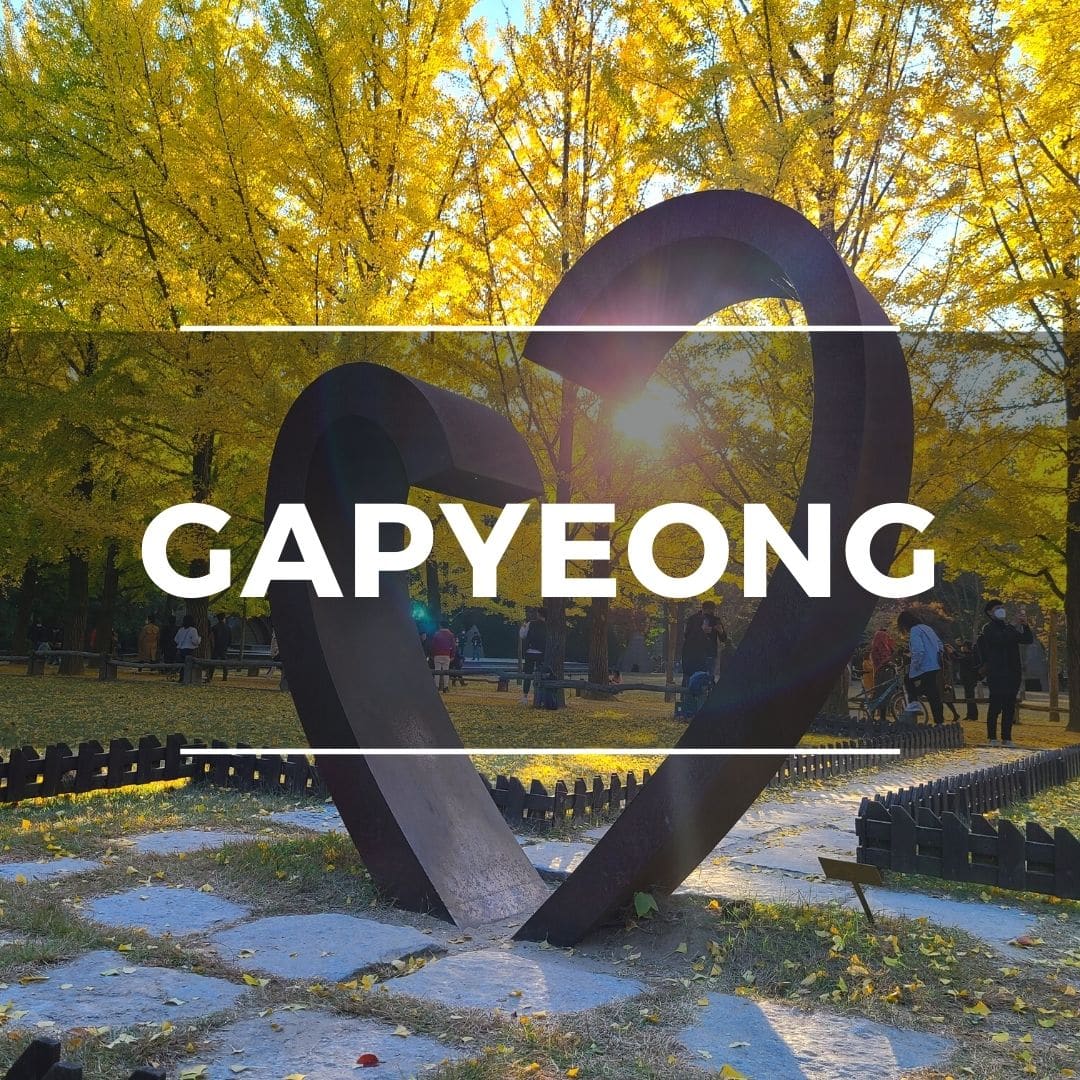
Rural Attractions
Gapyeong County is an area just outside of Seoul that’s home to several interesting attractions celebrating Korean and foreign culture. The lush green hills and blue rivers of Gapyeong make it a great place to immerse in Korean nature.
You’ll find some of the hottest day trip locations here. Explore Gapyeong County on a day trip from Seoul. You can see romantic tree-lined streets and cafes on Nami Island, explore one of Korea’s most beautiful gardens, take a trip to Petite France, and enjoy cycling through the hills on an abandoned railway track.
This Full Day Tour of Gapyeong will show you around Nami Island, Garden of Morning Calm, and the Rail Bike Park.
Here are 10 of the best Gapyeong attractions:
- Nami Island
- Garden of Morning Calm
- Petite France
- Ganchon Rail Bike Park
- Edelweiss Swiss Village
- Cheongpyeong Lake
- Jarasum Island
- Kalbongsan Recreational Forest
- Gapyeong Sledding Hills
- Nami Island Zip Line

There are loads of locations to visit in Korea that make for a perfect day trip from Seoul. Hop on a coach, train, or tour bus in the morning and explore one or more of these unique destinations.
Here are 10 of the best day trips from Seoul to discover on your next journey to Korea:
- DMZ (North Korean Border)
- Suwon Hwaseong Fortress
- Everland Theme Park
- Jeonju Historic City
- Seoraksan National Park
- Korean Folk Village
- Alpaca World
- Gwangmyeong Cave
Most travelers to Korea arrive at Incheon Airport and then travel into Seoul (it’s only 40 minutes away) to begin their journey. Seoul is certainly an incredible place to start traveling, but it definitely shouldn’t be your only destination. Korea has a lot to offer, including a lot of seasonal activities and events that you should take into consideration.
Spring and fall are the best seasons to visit Korea and during these times the traditional cities like Gyeongju and Jeonju look amazing. They’re covered with cherry blossoms or fall foliage and this creates some postcard-like scenes. Gapyeong area is packed full of natural sights to enjoy, so definitely check out these areas.
If you’re visiting during summer, head towards the coastal areas, including the north-east coastal towns of Gangneung & Sokcho, or the south-east coastal areas of Busan and the nearby islands, such as Geoje, Tongyeong, and Yeosu. You’ll find lots of winter activities to enjoy in these areas.
Winter is cold and dry and, ironically, a great time to visit Jeju Island . This semi-tropical island is warmer than the mainland, but still gets snow on the mighty Hallasan Mountain. You can sit on a sunny beach one day and then hike knee-deep in snow the next. Jeju is also famous for its citrus, with thousands of tangerine trees dropping their juicy fruits in early winter.

Where To Stay In Seoul
South Korea is truly a country of contrasts. From the bustling, modern city of Seoul , with cutting-edge designer buildings, VR labs, and AI robots, to peaceful UNESCO World Heritage cities like Jeonju and Gyeongju , there are many unique places to explore. If you’ve decided on Seoul, here are some of the best hotels that are well located and highly reviewed.
Choosing the best destinations to visit in Korea can be a challenge, especially if you don’t know what there is to see. You might not have heard of some of these destinations, which is not surprising. Korea is a country of undiscovered wonders that are waiting to be found.
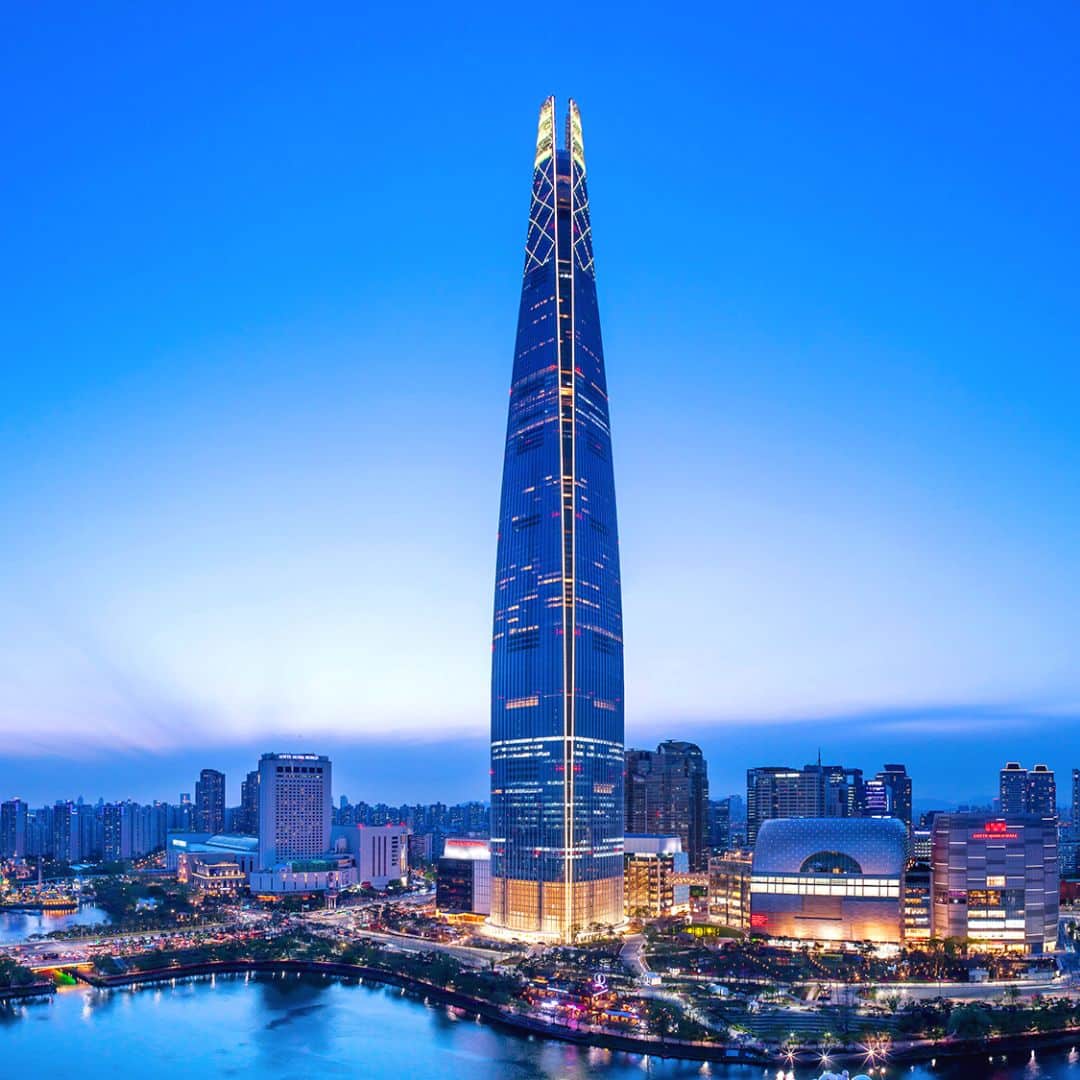
If you want the best Seoul has to offer, these luxury hotels are for you. Located in Seoul’s glitziest neighborhoods, these hotels are within walking distance of Michelin-starred restaurants, chic boutiques, galleries, museums, and the finest shopping experiences available.
Expect nothing but the best in terms of service and style at these luxury hotels. Silky soft sheets, immaculate rooms with the finest fixtures and fittings, and true 5-star service from the hotel staff. These hotels have sports, dining, and entertainment facilities to make you comfortable during your stay.
Airport transfers are available with these hotels, making your journey into and out of Seoul a breeze. Located in popular upmarket districts in Seoul, these neighborhoods have lots of local charm for you to discover, as well as allow easy access to other parts of the city with excellent transport options nearby.
Not only are these beautiful, comfortable hotels inside, but they are also located in some of the most iconic buildings or districts and provide amazing views over some of Seoul’s most interesting districts. The view from the first hotel is worth the cost alone.
Recommended Luxury Hotels In Seoul
Here are 3 of the best luxury hotels in Seoul that we recommend for an unforgettable stay in Korea’s capital:
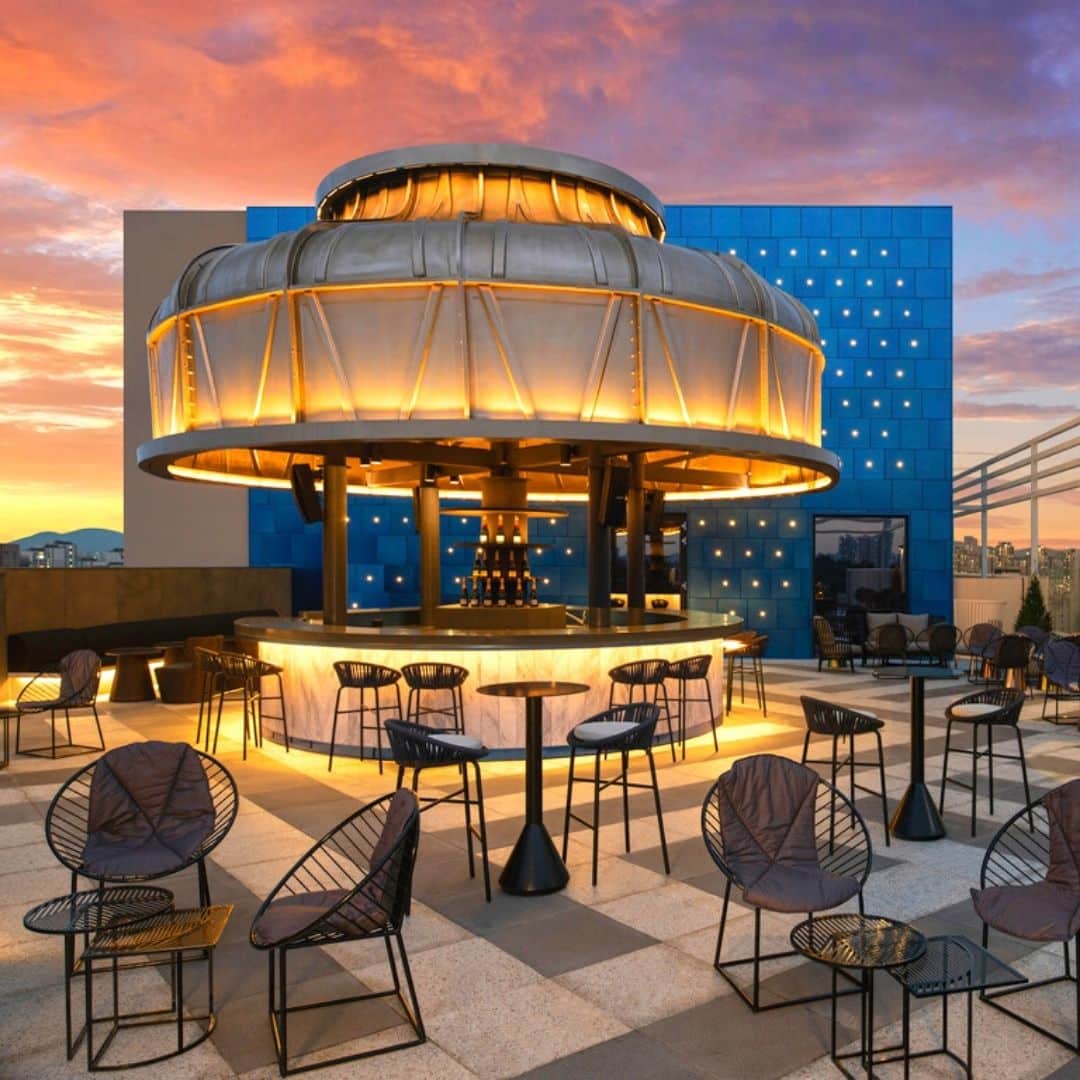
Families. couples and other travelers that want to experience the best of Seoul without breaking the bank can sleep easy with these mid-range hotel recommendations in some of Seoul’s trendy, vibrant districts, including Hongdae, Gangnam, and Myeongdong.
Encounter stylish accommodation in Seoul’s Hongdae districts, which is full of street culture and artistic scenes from the district’s eponymous Hongik University – one of Korea’s leading art centers.
Fashion lovers and shoppers will find lots to love in downtown Gangnam, with its wide streets and glassy storefronts bracketing narrow side streets and hidden delicacies.
Myeongdong is famous for its budget and mid-range accommodation options, including several hotels by the famous Lotte chain – one of Korea’s best mid-range brands.
Whichever mid-range hotel you choose in Seoul, you can be sure you’ll have fantastic city views, convenient subway access, and lots of unique cultural sights, sounds, and tastes to experience.
Recommended Mid-Range Hotels In Seoul
Here are 3 of the best mid-range hotels in Seoul that we recommend for an comfortable stay in Korea’s capital:

Seoul has a wealth of budget accommodation options that will help make your money go further. These hotels are all around $100 or less but offer the comfort and convenience that you’d expect to find in a mid-range hotel. One even has a beautiful rooftop pool.
Although these hotels are cheaper, don’t lower your expectations. You’ll always find great service in Korea. Save on sleeping to spend more on shopping, souvenirs, sights, and all the other fun things there are to do in Seoul.
These budget hotels in Seoul are also in great locations for shopping, enjoying local culture, and seeing the real side of Seoul and Korea. Hongdae offers bargain hunters the chance to get boutique fashion at market prices, Gangnam has plenty of cafes and cheap eats tucked away off the main avenues, and Myeongdong is a budget traveler’s paradise full of $1 street food and bargain souvenirs.
You won’t be disappointed with a night at any of these hotels. If you want to make your budget go further so you can spend more on some of the incredible day trips Seoul has to offer, definitely book a night at one of these hotels.
Recommended Budget Hotels In Seoul
Here are 3 of the best budget hotels in Seoul that we recommend for an affordable stay in Korea’s capital:
Korea Travel Tips
Korea is a unique country with a written language that looks nothing like English, fascinating etiquette rules , and an always busy lifestyle. Travelers may be lost trying to do even the simplest things.
These travel tips include the best options for staying connected, how to use public transportation easily and cheaply, great discount cards that will save you money as you travel, where to exchange money, and how to learn some basic Korean phrases for when you travel.
These essential Korea travel tips have been crafted by experienced travelers who love to save time and money. Only the best quality services and products are recommended here.
Here are our Korea travel essentials that’ll help you get around more easily, save you money, and let you get the most out of your trip.
Plan ahead now and you’ll have fewer troubles on your travels, giving you more time to enjoy your time in Korea.
If you’re traveling to Korea, you’re almost certainly going to want to get access to the internet to help you navigate, translate Korean, or even book tickets to attractions. Korea has one of the world’s best mobile internet and the prices are very reasonable. 5G mobile internet services are available across the country and Korea was one of the first to get the super-fast service. You won’t have problems connecting with a sim card or WiFi router when you travel.
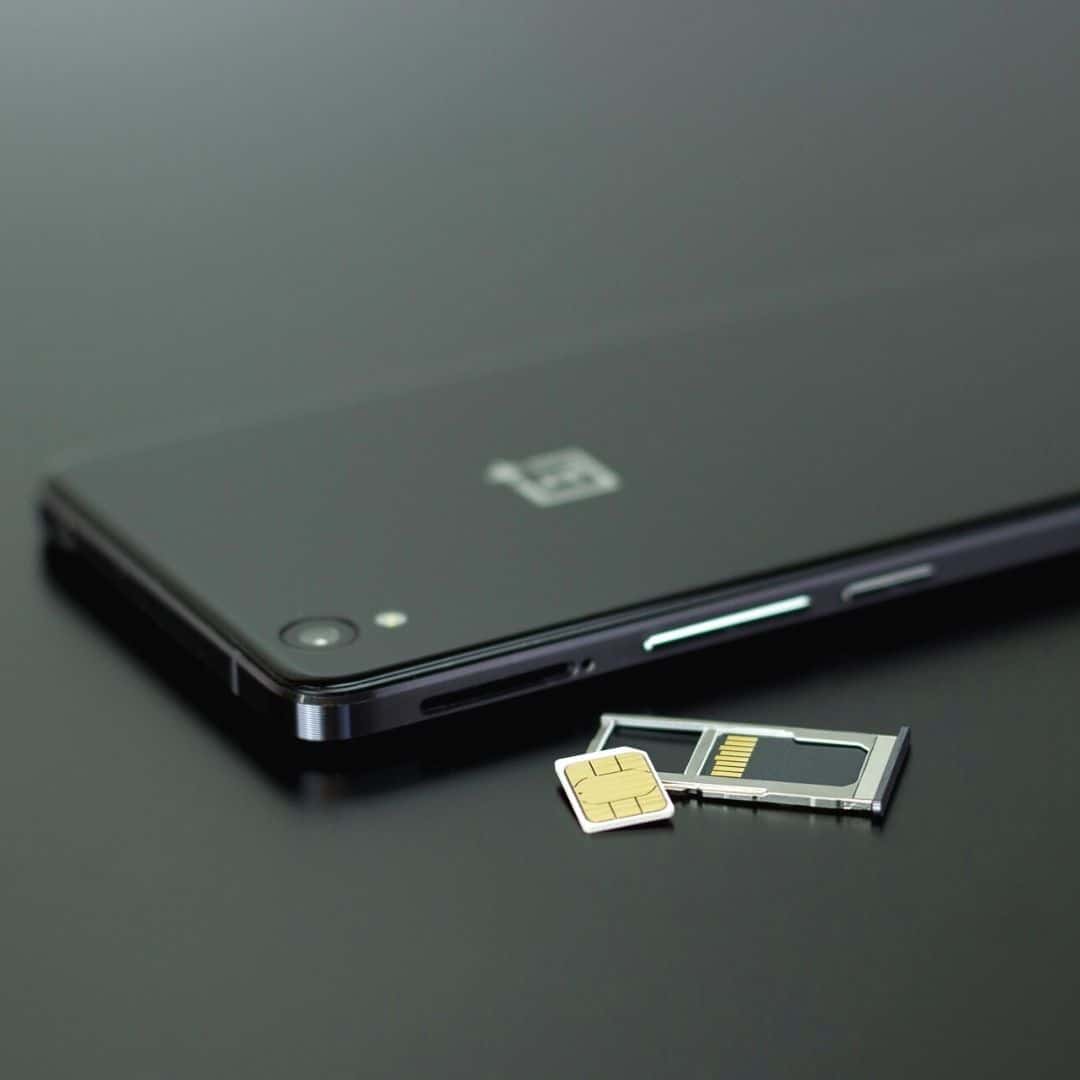
Sim Cards & Data Plans
A Korean sim card is a great way to get access to all your usual cellphone services when you travel to Korea. Sim cards come with data-only packages, or data and phone services combined.
Buying a Korean sim card will give you access to a Korean phone number, which is useful when using Korean apps. If you want to order food online in Korea, you need to have a Korean phone number to complete the order.
Korean Sim Card Costs
Prices start at W5,900 ($5) for a 1-day sim. You can also get 10-day sim cards (W34,700/$28) and 30-day sim cards (64,400/$52). These all come with unlimited data, domestic calls, and texts.
You can purchase a Korean Sim Card From Klook and collect it at the airport. This is a very convenient option as you can use it immediately to help navigate and check in back home.
Portable WiFi Routers
A Korean portable WiFi router will give you access to mobile internet throughout Korea by connecting to WiFi hotspots run by the major phone companies in Korea and comes with great coverage.
The major benefits of a portable WiFi router include a lower cost than a Korean sim card and also the ability to connect up to 3 devices to 1 router. That means that families and groups will be able to share the service.
Korean Portable WiFi Router Costs
The cost of a Korean portable pocket WiFi router is W3,200 ($2.60) per day. You can rent the WiFi router for as many days as you require and pay in advance and pay any excess days when you return it.
You can also purchase a Korean Portable WiFi Router From Klook and collect it at the airport. You can book online before you travel so that it’s guaranteed to be waiting for you.
Should I Get A Sim Card Or WiFi Router In Korea?
Both a sim card and WiFi router are great options for travelers to Korea and will almost guarantee a great reception for mobile internet. The choice between whether you should get a sim card or WiFi router in Korea really comes down to the costs involved and if you need a Korean phone number.
WiFi routers are cheaper and allow you to connect 3 devices, so they’re perfect for families. However, a sim card gives you a Korean phone number, which means you can call people and also register for Korean apps which require a phone number.
Check out our detailed article about the Best Sim Card & Portable WiFi options for traveling to Korea.
Traveling to any country involves potential scams, bad exchange rates, mistakes, and confusion when it comes to dealing with foreign currency. Fortunately, travelers to Korea have a wide range of options for travel money both before and while they travel.
Korea is a safe, modern country and one that has pushed hard for the mass adoption of cards. Almost every location that deals with money is required to accept card payments. This is great news for travelers to Korea as you can use a card to pay for meals out, entrance tickets, trains, and lots more.
Cash is still needed for some things, such as topping up transportation cards like the T-Money Card (more on that soon) and for paying for small things like street food. Please note, as Korea doesn’t have a tipping culture, you don’t need cash for leaving a tip. In fact, if you try to leave a cash tip, it’ll be returned to you in most places.
Read on to find the best tips to avoid getting ripped off when exchanging money and how to pay the lowest fees when you use a card to pay in Korea. Be a smart traveler and save more money for shopping and souvenirs.
Korean Money Exchange Options
Once you arrive in Korea, there are several options for exchanging money. First, you can exchange money at a money changer in tourist areas such as Myeongdong. These money changers used to have the best rates in Seoul.
However, a better option these days is to use the currency exchange machines from WOW Exchange. These machines are located all over Seoul’s most popular tourist spots, stations, and hotels. They allow you to exchange foreign cash directly to Korean won, with better rates than at the airport. You can also use these machines to claim a tax refund for your shopping before heading to the airport. Both options require a passport.
Should I Change Money At The Airport?
Exchanging money at the airport is easy and convenient as you can instantly get cash to use for shopping, transportation, and general use. However, the exchange rate at the airport is usually much worse than you’ll find in other places in Korea, as mentioned previously. If you need cash as soon as you land, withdraw a small amount ($50) and then exchange the rest in Seoul.
Travel Money Cards For Korea
While cash is useful and familiar when traveling, a much better option is to use a travel money card (also known as a currency card). Travel money cards, such as the Wise Travel Money Card, allow you to pay for travel expenses without the need to carry cash or convert money.
A travel money card offers the convenience of using a credit card without high fees that a regular bank could charge. It also allows you to withdraw cash from an ATM without a fee (up to a limit), so you can avoid carrying any cash on the flight or using a money exchange. The exchange rate is the mid-market rate, meaning it’s better than you’ll find even at the money exchanges listed before.
Can I Use My Bank Card In Korea?
Credit cards are widely accepted in Korea. Visa and Mastercard users shouldn’t face a problem, but other cards aren’t as widely accepted. Debit cards and cash withdrawals might not work depending on the bank. Your bank may charge a fee when using it overseas, or give a bad exchange rate. Check with your bank before traveling.
The best option for travel money in Korea is to have a mixture of cash and cards, with a backup credit card just in case. Taking some USD with you is always a good option as you can find plenty of places to exchange it to Korean won and probably at a better rate than you’ll get in the US. If you want to withdraw money in Korea, look for the global ATMs in tourist areas.
Taking a travel money card will be safer, cheaper, and more convenient than relying on your own bank or credit card, too. These cards offer competitive rates and are widely accepted around the world so you can use them to visit other countries, too. If you use a travel money card and it gets lost or stolen, you can freeze the card instantly with the app and not have to worry about losing the balance on the card.
When you visit Korea, you’ll notice that most people pay for goods with a card or payment app, even for small purchases like a bottle of water. Unfortunately, the payment apps that are common in the US, such as Apple Pay or Google Pay, aren’t available in Korea. Korean apps, such as Kakao Pay, require a Korean bank account, and therefore aren’t an option for travelers.
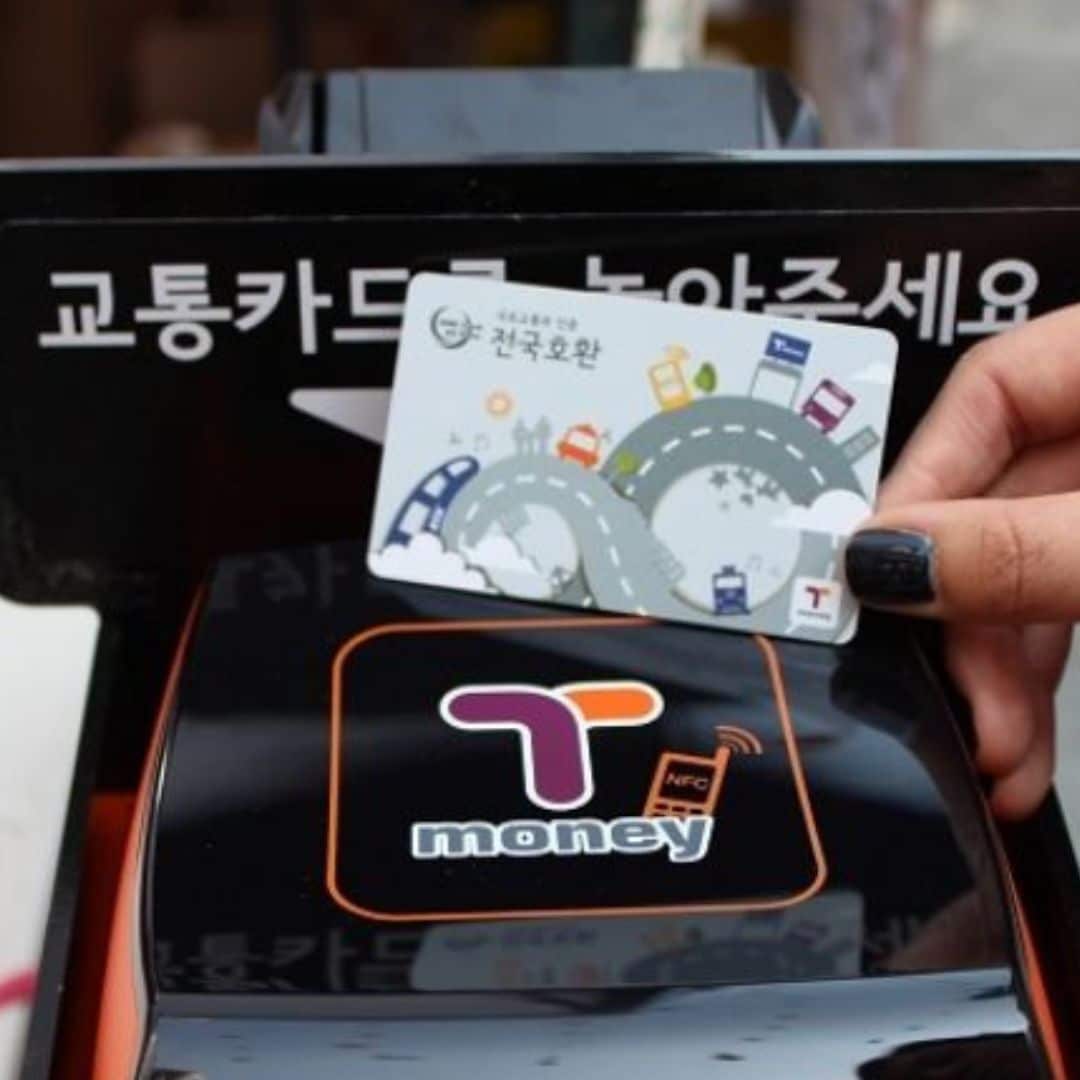
T-Money For Public Transport
The T-Money Card is an essential purchase for every traveler to Korea. The T-Money Card is a transportation card that allows contactless travel on Korea’s buses and subways. Simply buy a T-Money Card, top-up the card, then use it to travel.
Not only is this transportation card really convenient, it also saves you money. You’ll receive a discount on every bus or subway journey when you pay with the T-Money Card. These discounted fares are available in all cities across Korea, not just Seoul.
This isn’t the only use of the T-Money Card. You can also use to buy a coffee from Starbucks, get lunch in McDonald’s, shop for Korean cosmetics, and even to watch a baseball game. It’s a very useful card that can be used anywhere you see the T-Money Card.
You can get the T-Money Card in Korea from subway stations and at certain transport centers, including Seoul Station and Incheon Airport. The card costs 2,500 KRW. You can buy the card with a credit card, but to top-up the card, you need to use cash. If you buy a Discover Seoul Pass, this card includes the T-Money functions.
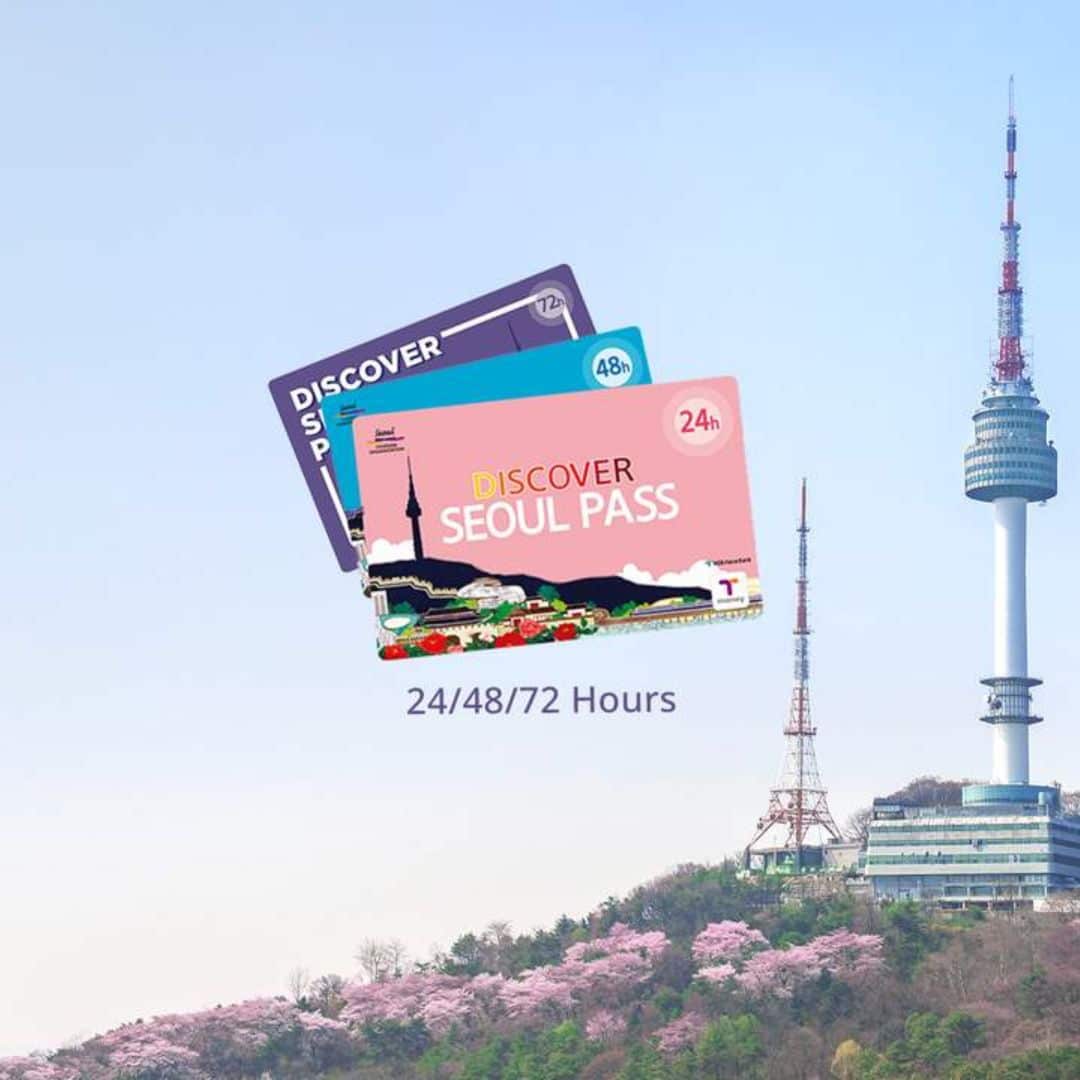
Save With The Discover Seoul Pass
Travelers to Seoul have a lot of options for incredible attractions to enjoy and experience. However, tourists, especially families, can find that the cost of these attractions quickly add up, especially when you are visiting many locations in a short time.
A great way to save money when you travel in Seoul is to buy a Discover Seoul Pass – a special card that offers you big savings on some of Seoul’s top attractions, as well as other benefits.
If you plan to visit Seoul’s Royal Palaces, N Seoul Tower, Lotte World Adventure Theme Park, the COEX Aquarium, Alive Museum, Seoul Zoo, or other premium attractions, you can gain free entry when you purchase a Discover Seoul Pass.
Not only that, you can also get a free river cruise, free hanbok rental, free ride on the Airport Express from Incheon Airport to Seoul, free City Tour Bus Ride, free T-Money Card and lots more.
The Discover Seoul Pass is valid for 24 | 48 | 72 hours and is valid from the moment you first use it until that many hours later.

Things To See & Do In Korea
If you want to build your own itinerary for South Korea, then this section of the South Korea Travel Guide will provide the building blocks you need to craft the perfect trip.
South Korea is a country packed with famous landmarks and sights, unique culture – modern & historical, family-fun activities, outdoor adventures, cozy cafe districts, and natural wonders. There’s more to do in Korea than you could imagine and it’s impossible to explore it all in one trip. Try to plan your itinerary by cities and locations. For example, plan your day in Seoul stay by district.
Here are some of the best things to see and do in South Korea, broken down into different themes so you can find things that interest you the most. The location of each of these attractions is included, too, so you can create a city by city itinerary, seeing the best South Korea has to offer.
These attractions are available all year round so whenever you go to Korea, you can enjoy them. There are plenty of things to see and do in Korea that only happen during certain seasons. Check out the Season Guide in this South Korea Travel Guide for more information about Korean festivals and seasonal events.
Here are 10 of the best Korean landmarks:
- Lotte World Tower (Seoul)
- Bukchon Hanok Village (Seoul)
- Nami Island (Gapyeong)
- Banwol ‘Purple Island’ (West Coast)
- N Seoul Tower (Seoul)
- Dongdaemun Design Plaza (Seoul)
- Seoraksan National Park (Gangwon Province)
- Hwaseong Fortress (Suwon)
- Cheonggyecheon Stream (Seoul)
- Gamcheon Cultural Village (Busan)
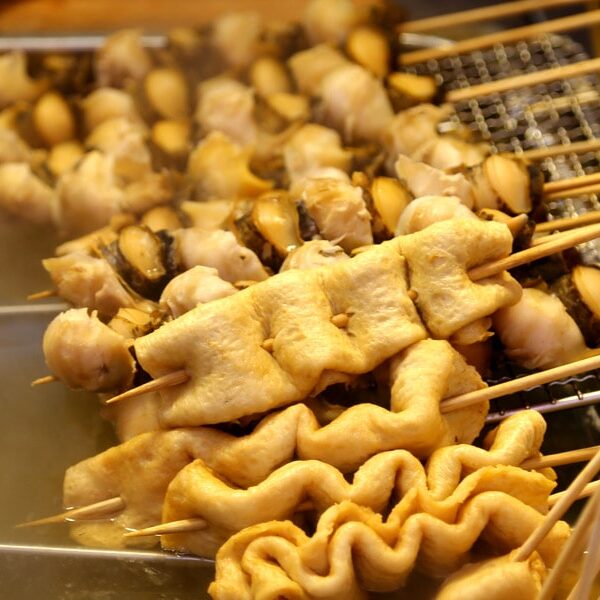
Why travel to a diverse country such as Korea and not embrace the local culture? Here are 10 of the best unique Korean experiences you can only enjoy fully in Korea. Be brave, try something new and create lasting memories of your Korean adventure.
Here are 10 of the best uniquely Korean experiences:
- Wear Traditional Korean Hanbok (Royal Palaces)
- Sing In A Korean Noraebang (Everywhere)
- Sleep In A Korean Hanok House (Hanok Villages)
- Visit The Kimchi Museum (Seoul)
- Eat Street Food (Traditional Markets)
- Experience A Korean Temple Stay (National Parks)
- Drink Makgeolli – Korean Rice Wine (Everywhere)
- Visit The World’s Most Dangerous Border – The DMZ
- Relax In A Korean Sauna (Everywhere)
- Visit A Korean Green Tea Field (Boseong, Jeju)

Here are 10 of the best Korean historic sights:
- Gyeongbokgung Palace (Seoul)
- The Secret Garden (Seoul)
- Bulguksa Temple (Gyeongju)
- Jeonju Hanok Village (Jeonju)
- Seoul Fortress Walls (Seoul)
- Haedong Yonggungsa Temple (Busan)
- Andong Hahoe Folk Village (Andong)
- Gyeongju Historic Area (Gyeongju)
- Baekje Historic Area (Gongju, Buyeo)
- Jangsaengpo Whale Museum (Ulsan)

Here are 10 of the best modern K-Culture spots:
- K-Pop Headquarters (Seoul)
- HYBE Insight (Seoul)
- COEX Artium (Seoul)
- K-Style Hub (Seoul)
- Hongdae Shopping Street (Seoul)
- Hallyu K-Star Road (Seoul)
- Asia Culture Center (Gwangju)
- Busan International Film Festival Square (Busan)
- MBC World Theme Park (Seoul)
As you’ll see, there’s just so much to see and do in Korea. You could spend a whole week in Seoul and not run out of exciting activities to do and sights to explore. Our advice is to try to avoid planning to do too many things in one day and adding in plenty of free time.
There’ll be many random things that catch your eye, such as a curious side street, or your nose, like the delicious smells from a food stall. Make sure you’ve got flexibility in your schedule to investigate these surprises and to take a rest if you need to – walking and traveling for days on end can get tiring.
Korea comes alive at night and markets and city streets are often best explored after the sun goes down. Drab concrete buildings come alive with neon signs, lanterns, and electric lights and are quite a sight to be seen. Visit popular tourist attractions such as the royal palaces and hanok villages during the morning as they’ll be less crowded.
If you plan to visit the Secret Garden in Changdeokgung Palace (you really should!), tickets are available on the day and sell out fast. Getting to these places early can guarantee you get tickets, see the sights unobstructed, and have time in the evening to soak up the night life and culture.

Here are the 10 best family-friendly activities in Korea:
- Nami Island & Garden of Morning Calm (Gapyeong)
- Seoul Grand Park & Zoo (Seoul)
- Lotte World Adventure (Seoul, Busan)
- Alive Museum & Dynamic Maze (Seoul)
- Seoul Children’s Grand Park (Seoul)
- Seoul Children’s Museum (Seoul)
- Everland & Caribbean Bay Theme Parks (Near Seoul)
- Sea Life Busan Aquarium
- Jeju Dinosaur Island (Jeju)
- Alpaca World (Gangwon Province)
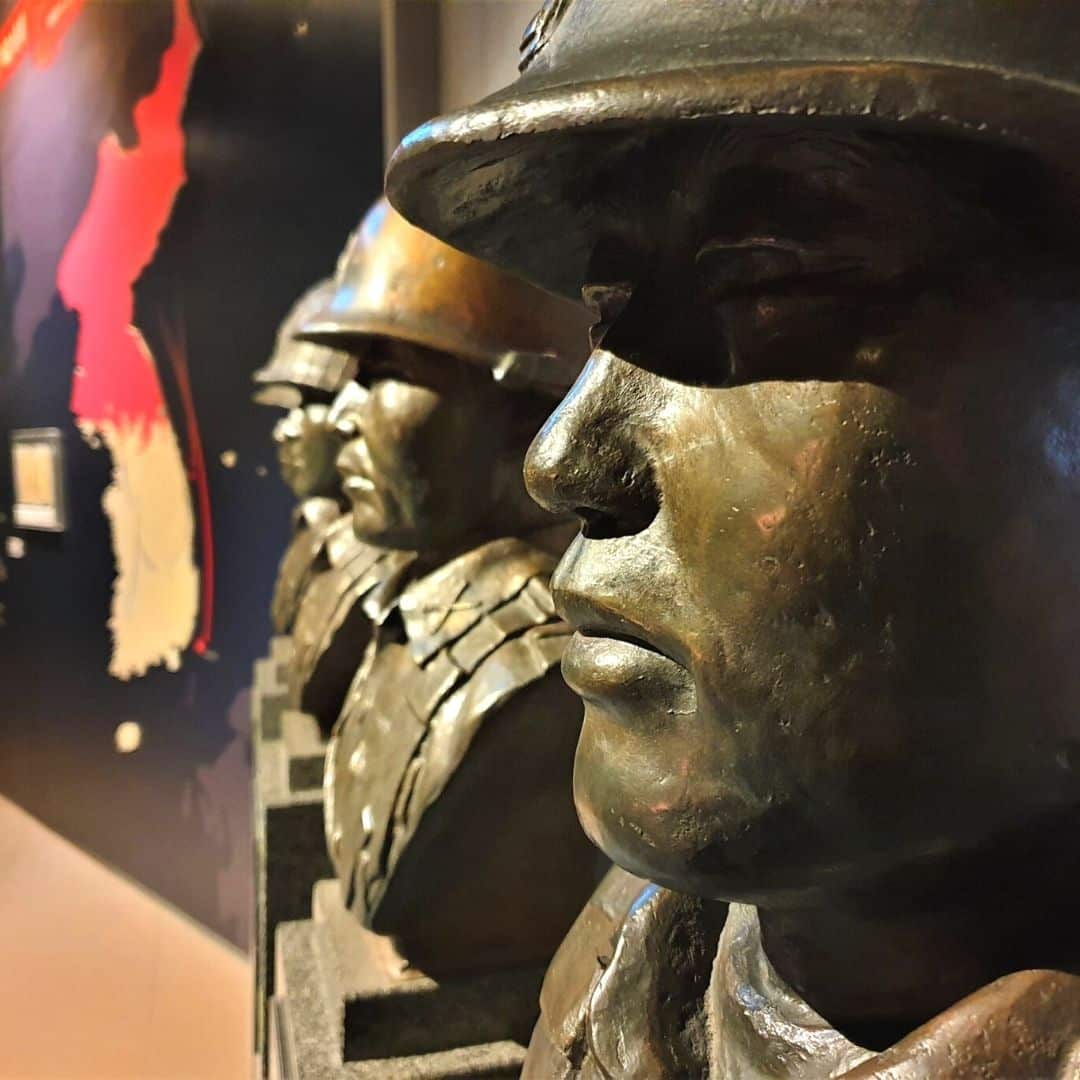
Here are the 10 best museums & galleries in Korea:
- National Museum of Korea (Seoul)
- Seoul Museum of Art (Seoul)
- Gyeongju National Museum (Gyeongju)
- War Memorial of Korea (Seoul)
- National Folk Museum of Korea (Seoul)
- National Maritime Museum (Busan)
- Seodaemun Prison History Museum (Seoul)
- Seoul Museum of History (Seoul)
- Museum Kimchikan (Seoul)
- Daegu Art Museum (Daegu)

Here are the 10 best cafe areas in Korea:
- Ikseondong Hanok Village (Seoul)
- Gyeongui Line Hongdae (Seoul)
- Samcheondong Cafe Street (Seoul)
- Jeonpo Cafe Street (Busan)
- Hwangnidan-Gil (Gyeongju)
- Gangneung Coffee Street (Gangneung)
- Sinsa-Dong / Garosugil Road (Seoul)
- Jukjeon Cafe Street (Seoul)
- Hwaseong Haenggung Area (Suwon)
- Kim Kwang Seok Gil Street (Daegu)

Here are 10 of the best Korean markets and shopping areas:
- Gwangjang Market (Seoul)
- Myeongdong Market Area (Seoul)
- Jagalchi Fish Market (Busan)
- Centum City Mall (Busan)
- IFC Mall (Seoul)
- Starfield COEX Mall (Seoul)
- Nambu Market (Jeonju)
- Seomyeong Underground Shopping Center (Busan)
- Seogwipo Maeil Olle Market (Jeju)

Here are 10 of the best natural sights in Korea:
- Hallasan Mountain (Jeju)
- Jirisan National Park (Jeollanam Provice)
- Seoraksan National Park (Gyeonggi Province)
- Seongsan Ilchulbong Sunrise Peak (Jeju)
- Damyang Juknokwon Bamboo Forest (Damyang)
- Boseong Green Tea Plantation (Boseong)
- Haeundae Beach (Busan)
- Udo Island (Jeju)
- Hwaamdonggul Cave (Gangwon Province)

Travel Itinerary For Korea
When planning a travel itinerary for South Korea, it’s best to think about what kind of experience you want when you travel to South Korea and build your itinerary from that. What kind of traveler are you and what do you want to take away from your Korea trip? Are you planning a trip for yourself, for your family, or as a romantic escape?
Do you want to learn about traditional Korean culture and history? Are you visiting to immerse yourself in modern Korean culture and maybe meet your idols? Are you planning to get out into Korea’s mountains to hike and join a Buddhist Temple Stay? Or are you going to eat, drink, shop, and make the most of Korea’s discounted goods? Or all of the above?
This section of this South Korea Travel Guide will offer some of the best one-week and two-week itineraries for South Korea. These itineraries are rough guides, created to help you begin planning your trip. Feel free to pick and choose the parts from them that you like to create your own travel itinerary for South Korea. We’ll be adding more great itineraries soon, be sure to check back for the latest ideas.
Classic 1 Week Itinerary For Korea: Seoul, Busan, Gyeongju
This is one of the most popular of the 1-week itineraries for South Korea and will take you to the most famous and interesting places that are top of most travelers’ South Korea bucket lists. Starting in Seoul, Korea’s capital, you’ll explore the best sights in this city before taking a day trip out to the lovely Gapyeong County to get a breath of fresh Korean countryside air.
From day 4, zip across the whole of Korea on the high-speed KTX train and explore Korea’s second city, Busan. See coastal temples, fish markets, wide beaches, and more in Busan before taking a day trip to Korea’s historic UNESCO World Heritage City, Gyeongju. On the last day, it’s time to return to Seoul to pack your bags full of the best souvenirs and snacks and say farewell in the highest part of the city.

Afternoon : Dressed in your hanbok, enjoy more traditional Seoul with a walk around the narrow streets of the Bukchon Hanok Village. Visit traditional Korean teahouses, galleries, markets, and more.
Evening : Check out the stalls and shops of artsy Insadong, contemplate Jeogyesa Temple, and take an evening stroll along the Cheonggyecheon Stream before dining in Myeongdong or the Jonggak Avenue of Youth. This Full Day Tour of Seoul will show you some of the hottest spots in the city, while this Customized Private Tour of Seoul will allow you to choose where to go.
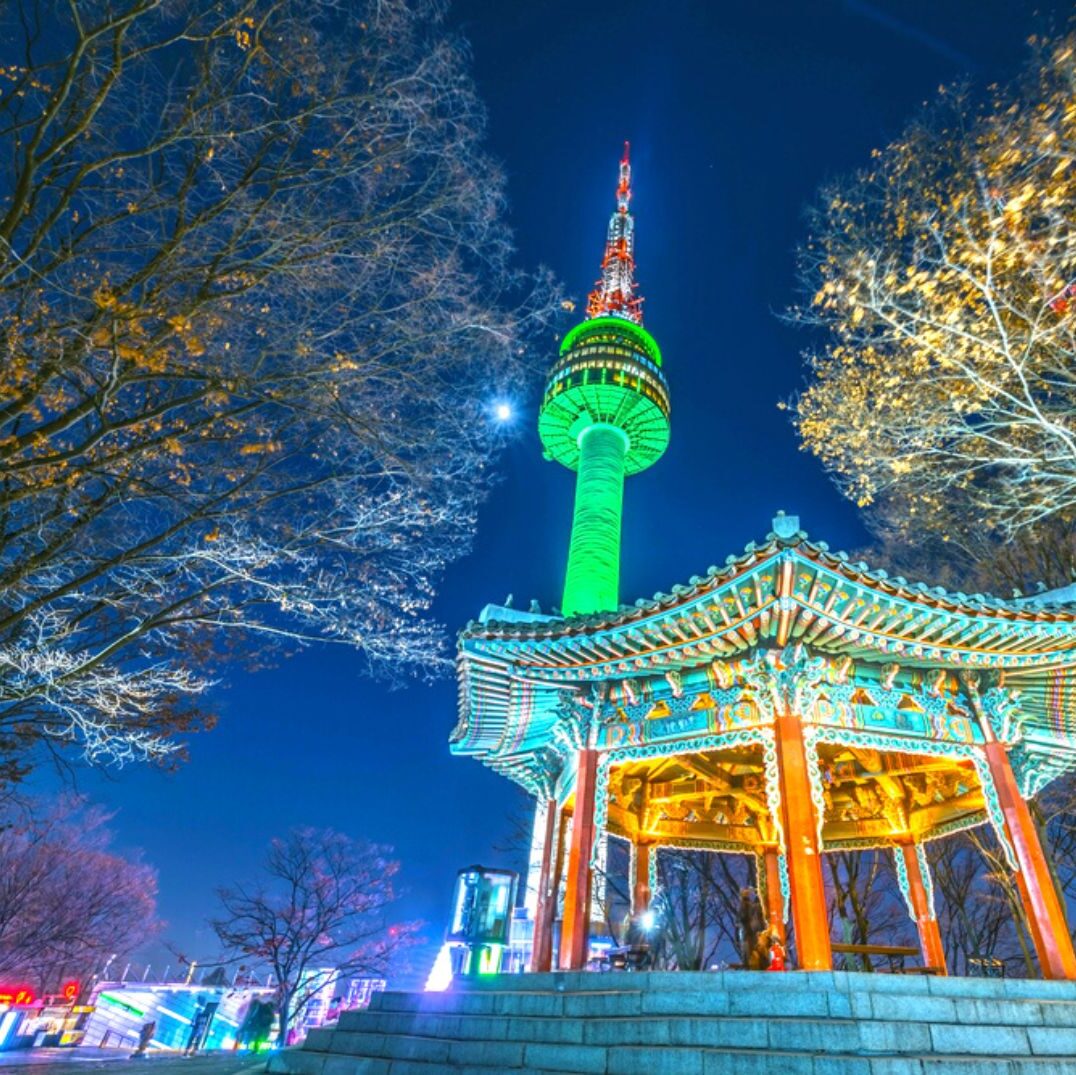
Afternoon : Head back to central Seoul and witness the bustling sights and delicious smells of Seoul’s traditional Gwangjang and Dongdaemun Markets. Try delectable Korean street foods here.
Evening : Take the Namsam Cable Car to the top of Namsan Mountain and watch the sunset from N Seoul Tower. See some of Seoul’s fortress walls before heading back down to go late-night shopping at Myeongdong Market.

Afternoon : Zip line or sail over to Nami Island for impressive nature, bike rides, leafy walks, and cozy cafes. See popular scenes from K-dramas and even some wild animals, like deer and rabbits.
Evening : Pedal your way along an abandoned railway at the Gangchon Rail Bike Park before heading back to Seoul for fine dining in Gangnam’s Apgujeong Rodeo district.
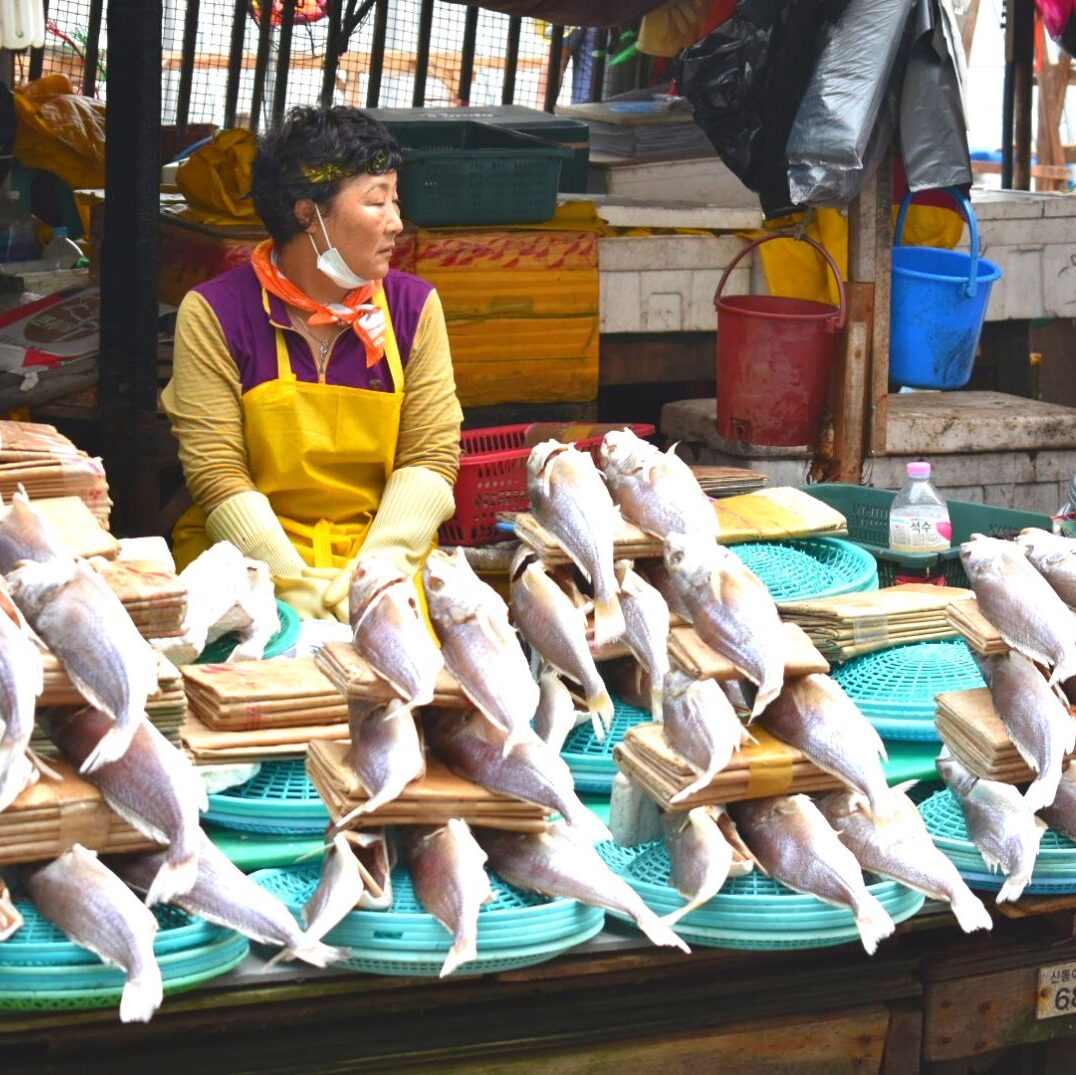
Afternoon : Head to the Nampo-dong near Busan Station and visit Jagalchi Market for a fresh seafood lunch. Then explore cosy Bosu-dong Book Alley or take a taxi to the Huinnyeoul Culture Village.
Evening : Take the subway up to Haeundae Beach for Busan’s best night-scenes. Grab dinner overlooking the beach, or at one of the market stalls. If you’re feeling brave, visit BUSAN X the SKY to see breathtaking views over the coast and city.

Afternoon : Head to the Gyeongju Gyochon Traditional Village for a traditional meal and to see the stunning Woljeonggyo Bridge. Gyeongju National Museum is nearby, too.
Evening : See the tranquil night views of Wolji Pond where palace buildings reflect perfectly in still waters. Stop at Hwangnidan-gil area for dinner and drinks before returning to Busan.
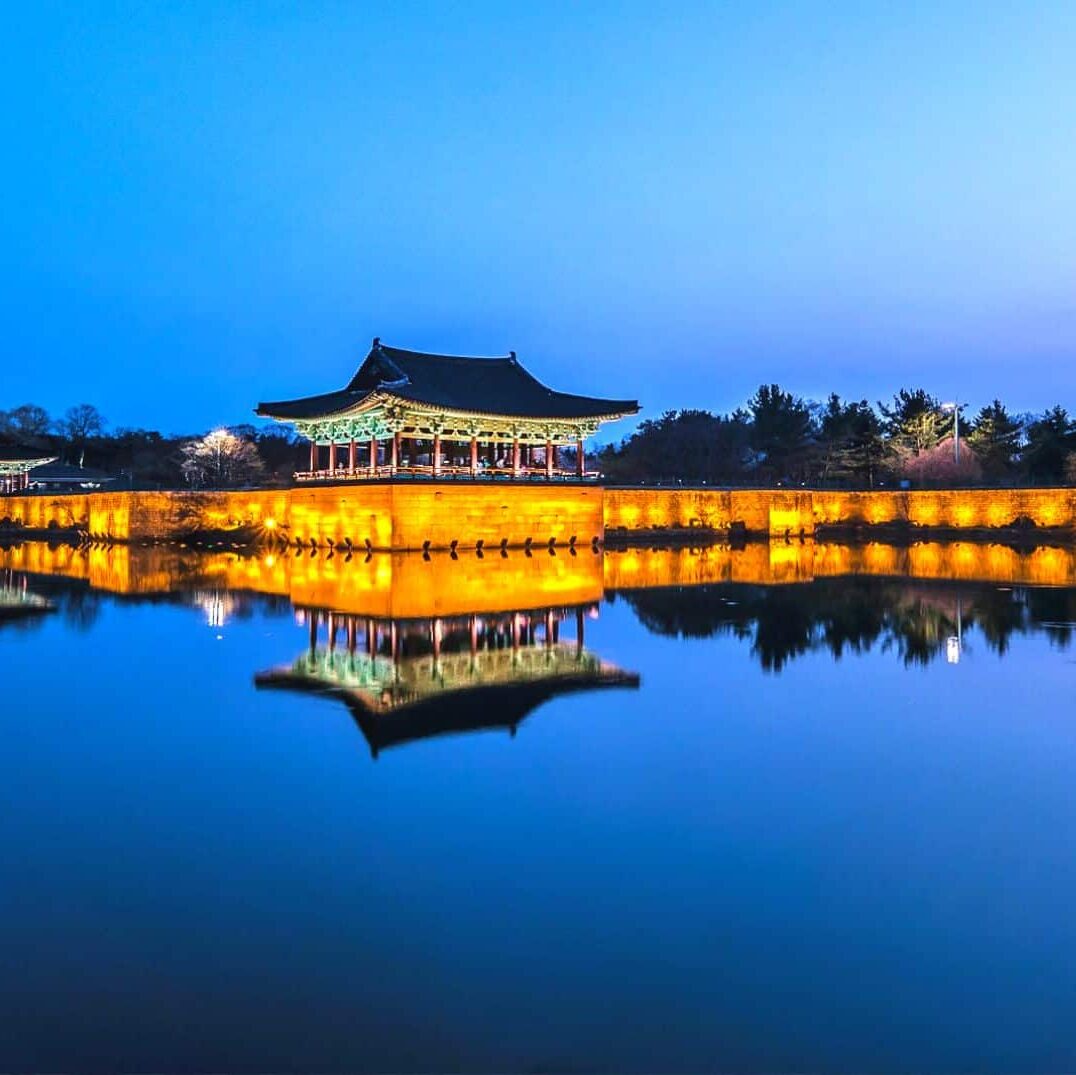
Afternoon : Explore the artistic shopping streets of Hongdae for last minute souvenirs and gifts for yourself. Take a break in one of the unique animal or artsy cafes.
Evening : Either take a night cruise along the Han River from Yeouido Hangang Park or dine in style at the Lotte World Tower in Jamsil, the world’s 6th tallest building. Both offer great night views of Seoul and unforgettable memories to take home.

Korean Seasons Guide
The best time to visit South Korea is during the warm spring or fall seasons. The weather is mild and clear, there’s a range of festivals and seasonal activities to enjoy, and you can travel to Korea comfortably.
The best months to visit are April, May, September, and October. These months are all during the Korean school semester, so there won’t be as many local travelers around during the weekdays. However, expect the weekends to be busy as people leave the cities to travel within Korea.
Large public holidays, including Chuseok (mid-autumn festival) in September / October) and Buddha’s Birthday (May), provides travelers with the opportunity to experience Korean culture and celebrations. These holidays change each year based on the lunar calendar.
Korean Weather & Climate
South Korea is a country that experiences four very distinct seasons, with temperatures ranging from 100 Fahrenheit in the summer to below 0 Fahrenheit in the winter . Each of South Korea’s seasons brings opportunities to see unique natural views and enjoy the different climates in Korea.
Spring has some of the gentlest weather, with light rain and a quick jump in temperature to the 60s and 70s by late March. Summer begins with the rainy season in late June and becomes extremely humid and hot throughout July and August before cooling again in September.
Fall has the best weather in Korea, with many warm, sunny days. Cold winter weather appears very quickly in mid-November and the first snow usually appears by late November. Winter is dry and sunny with the lowest chance of rainfall but is also very cold. Snow isn’t constant, but can fall for several weeks on and off during winter.
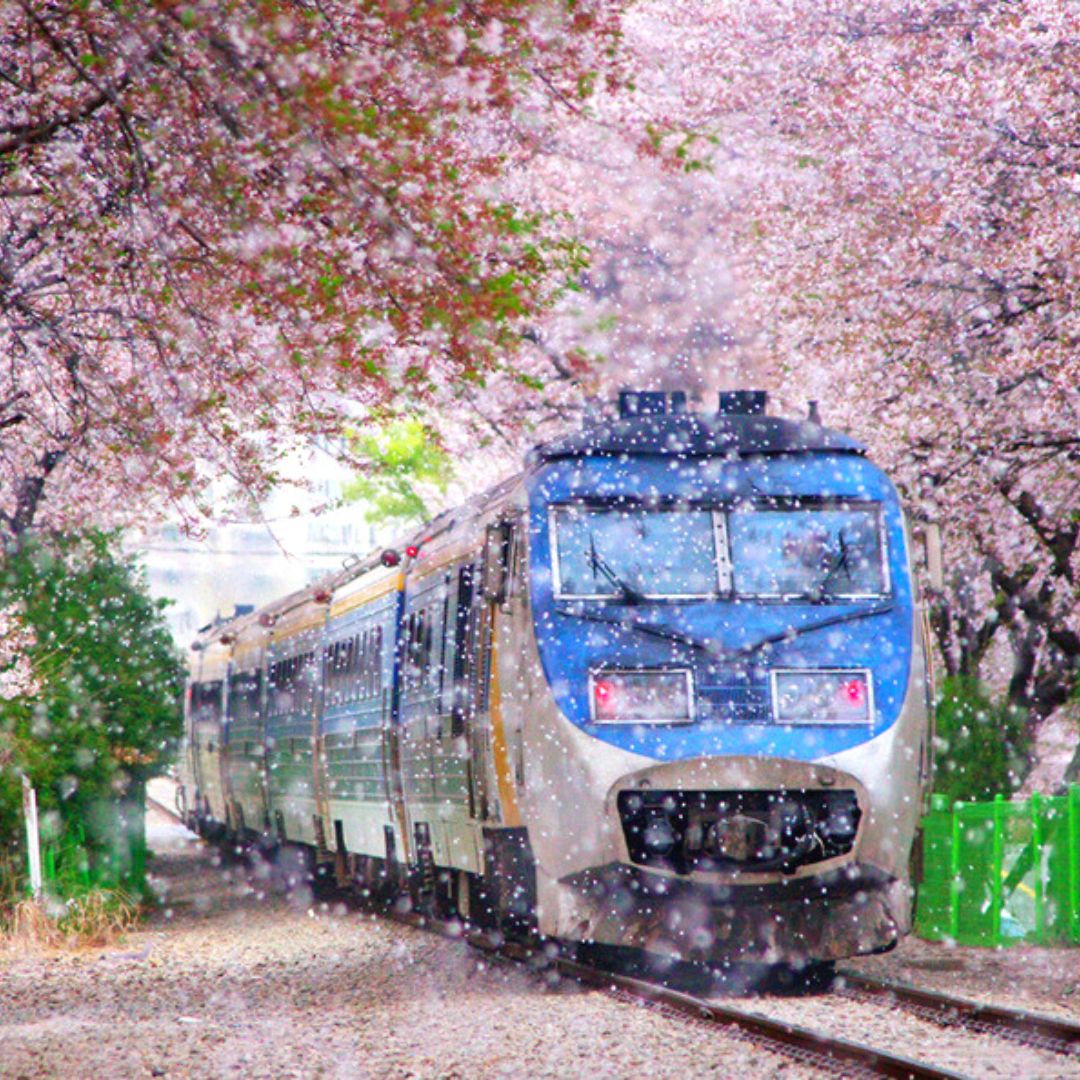
Visiting in spring offers the chance to see beautiful cherry blossoms stretch across the country, as well as many other spring flowers that brighten up Korea after a cold winter.
Spring starts in late March with the awakening of the cherry blossoms and ends in early June with the start of the rainy season. South Korea is a country with a close connection to nature, which can be witnessed in the many spring festivals and celebrations that happen throughout the year.
Some of the best spring festivals include the Jinhae Cherry Blossom Festival, Damyang Bamboo Forest Festival, Yeon Deung Hoe Lotus Lantern Festival, Jindo Sea Parting Festival, and Boseong Green Tea Plantation Festival.

The weather in summer is perfect for getting outside and relaxing on one of Korea’s many beaches. Some of the best activities include spending a weekend camping or glamping by the beach, hiking in shaded valleys in the national parks, and water sports such as surfing, kayaking, and scuba diving.
Unfortunately, the heat may put off some travelers, and high humidity makes it uncomfortable to move around too much. Fortunately, Korea is a modern country with lots of air-conditioning and ways to deal with the hot weather, including delicious summer dishes.
Cool down with a bowl of Korean bingsu (shaved ice dessert) or a cool latte in one of the many cozy Korean cafes in popular beach destinations.

Travelers to Korea in the fall are treated to spectacular fall foliage creeping far and wide. You can see it falling on palace grounds, sprawled on mountains in national parks, and along city streets.
The start of the fall foliage season in Korea coincides with the end of the hot and humid summer, with clear skies and cool weather, making it the perfect time to travel in Korea. Like spring, the fall season in Korea is one of the festivals and celebrations.
The Chuseok holidays in late September / early October are the biggest public holidays of the year, with cultural events held in popular tourist destinations. There’s also a range of cultural festivals, such as the Andong Mask Festival, Baekje Culture Festival, Jinju Namdang Yudeung Lantern Festival, Jeonju Bibimbap Festival, and the Seoul Kimchi Festival.

Winter, like summer, has more extreme weather than spring and fall, with temperatures often in the 20s and 30s and below. This season, however, is also one of the best for travelers who want to see clear, blue skies and experience good weather.
Winter is the driest season and it very rarely rains. If you don’t mind the cold weather, it’s perfect for traveling around South Korea. One of the biggest draws during winter is the chance to see snowy Korean landscapes, from snow-bedecked royal palaces to frosty peaks atop Korea’s many mountains.
Winter sports are popular in Korea, with ski and snowboard resorts aplenty. Winter also offers the chance for family fun with winter attractions including sledding, winter illuminations, and Christmas parades.

Cost To Travel To Korea
The cost to travel in South Korea largely depends on your personal style of travel. You can travel on a low budget in Korea, for under $50 per day, or you could also travel for 10 times that amount if you wished to.
Food costs range from a few dollars for a bowl of jajang (black soybean) noodles to hundreds for premium hanwoo (Korean beef) steak. The same applies to accommodation, with budget hostels costing $10 per night and premium 5 stars hotels costing hundreds.
Most travelers to Korea will already know what they want to prioritize their spending on. Some travel to Korea to eat, others to shop, and many more to experience the unique culture and history that Korea has to offer.
The costs in this section of our South Korea Travel Guide are based on the latest costs in Korea from this year. Examples of different costs have been covered to give you an idea of what to expect when you try to budget.
Please note, these prices are based on traveling in Seoul during non-peak times. Prices may be higher in peak times, which include cherry blossom season (Apr) and fall foliage season (Oct). Popular tourist cities, such as Gyeongju and Jeonju, may also have higher prices on weekends.
How Much Does It Cost To Travel In South Korea?
Travelers may find they want to spend more on hotels and less on eating out, or vice-versa, so don’t feel like you have to only follow the costs for one section. This is only a guideline to help you plan based on your own personal preferences.
To make it easier to figure out your expected costs to travel in Korea, this South Korea Travel Guide has broken down the costs into 3 different categories. These categories loosely fit 3 different types of travelers, as described below:
- Accommodation: $200+ per night, per room (double)
Korea has a wide range of luxurious hotel options, including rooms in the Lotte World Tower, historic hanok houses, and glamping for those who want to escape to the countryside.
- Food & Drink: $100+ per day, per person
It’s easy to spend a lot on food and drink in Korea as there are so many delectable restaurants. Fresh seafood, Korean steak, or the finest foreign foods are all available.
- Transportation: $20+ per day, per person
Taxis and transportation are relatively cheap in Korea. A taxi journey across Seoul can cost less than $20 for 30 minutes and even the 1st class options on Korea’s high-speed trains are under $100 for the longest journey (Seoul to Busan).
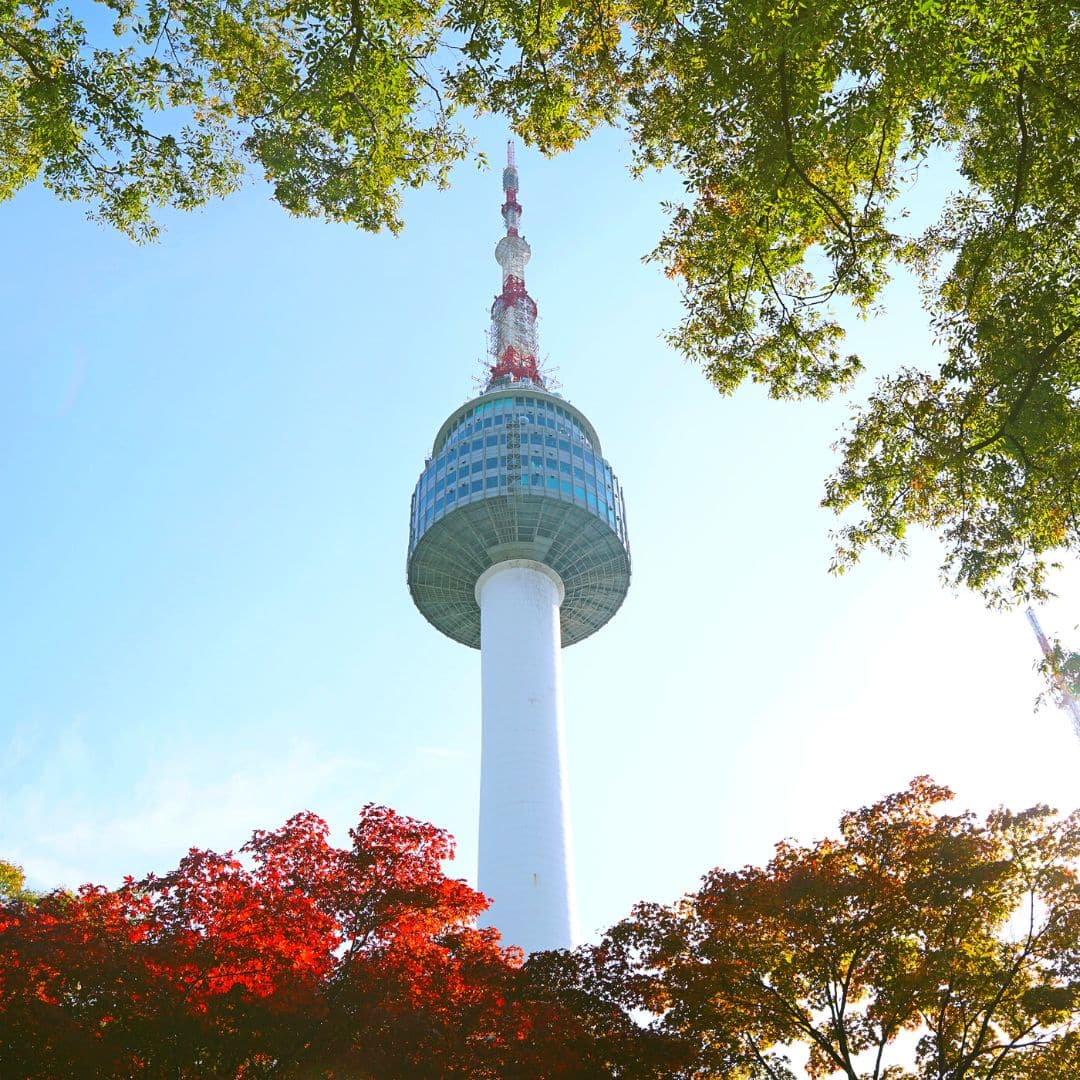
- Accommodation: $100 ~ $200 per night, per room (double)
You can book 4-star hotels in Seoul for very reasonable prices and enjoy both comfort and lower prices than you’d find at home. Korea has a wide range of comfortable mid-priced hotels.
- Food & Drink: $50+ per day, per person
With all-you-can-eat Korean restaurants that serve unlimited Korean BBQ and other dishes for under $20 or $30 per person, it’s easy to enjoy the best food Korea has to offer without breaking the bank.
- Transportation: up to $15 per day, per person
Use the subway and buses to get around the big cities and trains to travel further around Korea without breaking the bank. You can even splash out on a taxi and pay only a few dollars per person when traveling as a group for a few dollars extra.
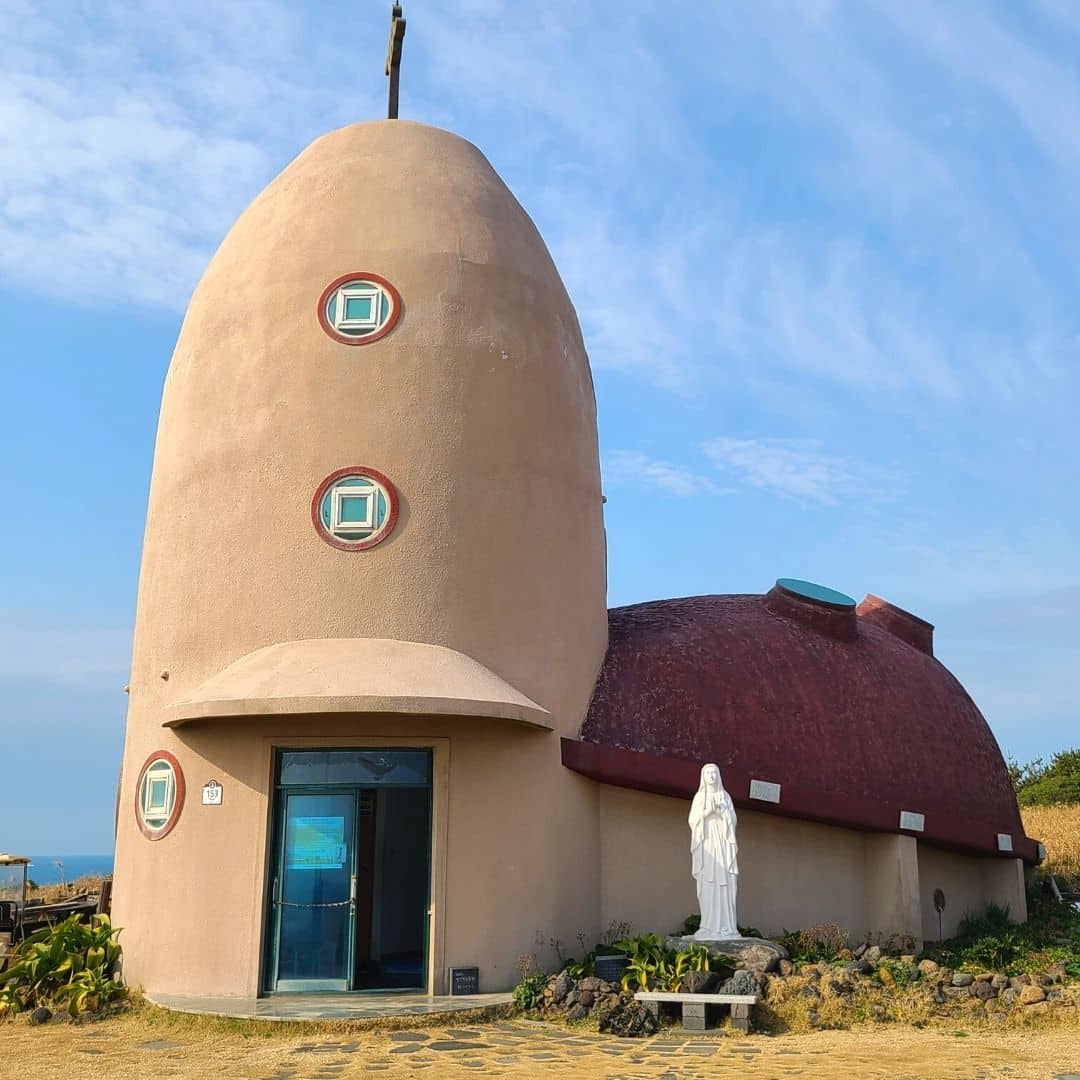
- Accommodation: up to $100 per night, per room (double)
Hostels and guesthouses can be found for under $50 per night and are perfect for somewhere to rest and recharge. If that’s all you need, save money here and spend it elsewhere.
- Food & Drink: $20 – $30 per day, per person
If you budget well and stick to street food, free hotel breakfasts, and convenience store foods, you can eat well and still have enough to splurge on good food for dinner.
- Transportation: up to $10 per day, per person
Walking and buses are cheap and convenient ways to travel around Korea’s biggest cities. Traveling from city to city is also cheap, with intercity buses costing less than $10 for 1-2 hour journeys.

Further Costs To Travel In South Korea
Besides these everyday costs to travel in South Korea, there are other costs that you’ll need to cover from time to time. These costs include internet & phone access, day trips, activities, souvenirs, travel insurance, and flights. These costs will be broken down into low and high-end costs that you can expect to pay in Korea.

Museums and galleries offer unique (and authentic) Korean souvenirs such as pottery, painting, tea & soju sets, and more. If you want something a bit more special, head to the underground markets near Gwangjang Market in Seoul and get your own handmade hanbok, which you can get posted back home to save luggage space.
- Small Souvenirs: $5+
- Korean Cosmetics: $5+
- Korean Artworks: $10+
- Korean Tea (box of): $10 to $20
- Korean Soju Set: $10 to $20
- Korean Handcrafts: $10+
- Tailored Hanbok: $200+
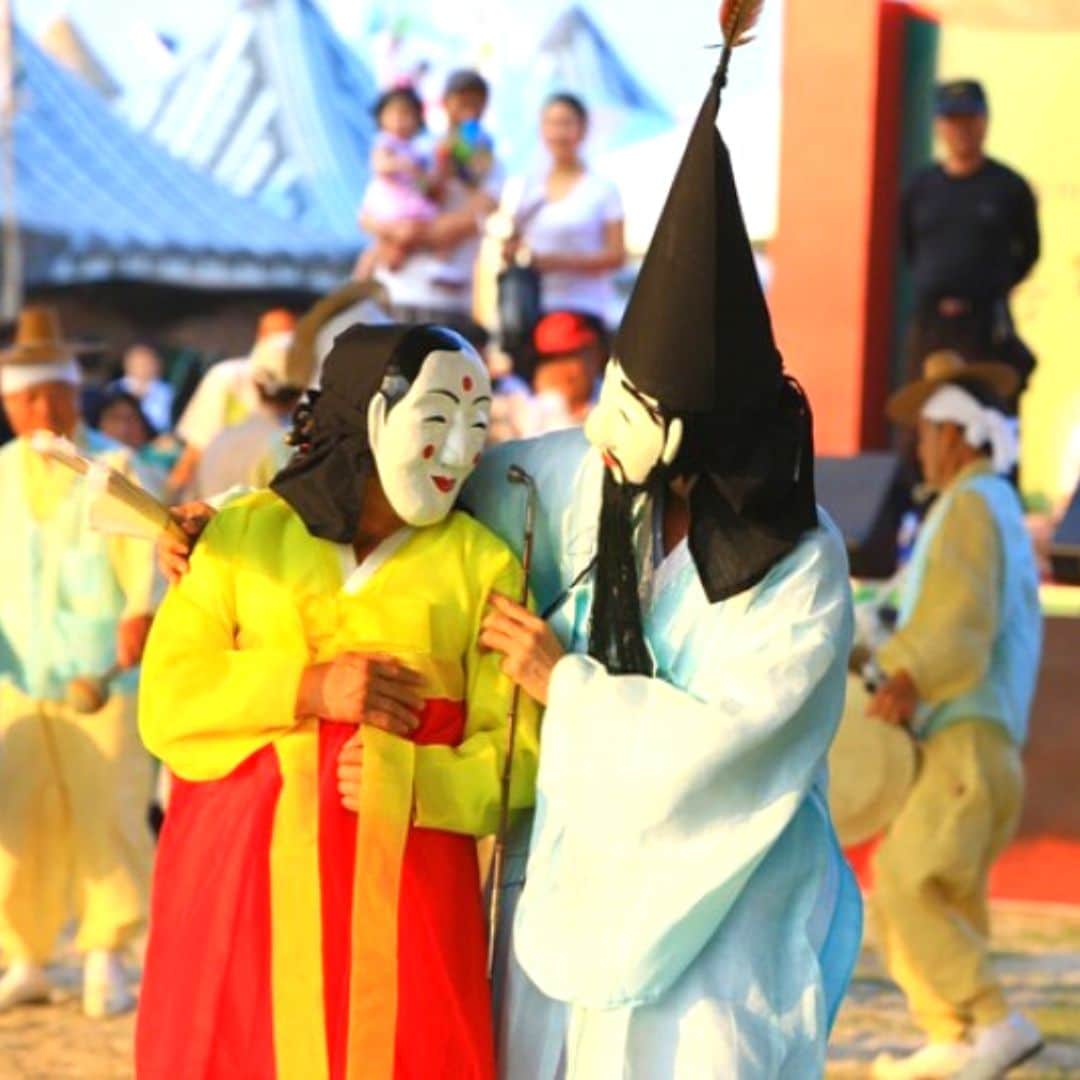
The day trip prices quoted below are the prices you can expect to pay with a reputable tour company like Klook or Trazy . Hiring a private guide will be a lot more expensive and might come to $200+ per day.
Please note: The prices quoted below are estimates and may change depending on the season or tour services.
- DMZ Tour – $50 to $120
- Nami Island Area – $40 to $70
- Everland Theme Park – $30 to $50
- Jeonju Hanok Village – $50 to $70
- Korean Folk Village – $50 to $60
- Seoraksan Mountain – $70 to $150
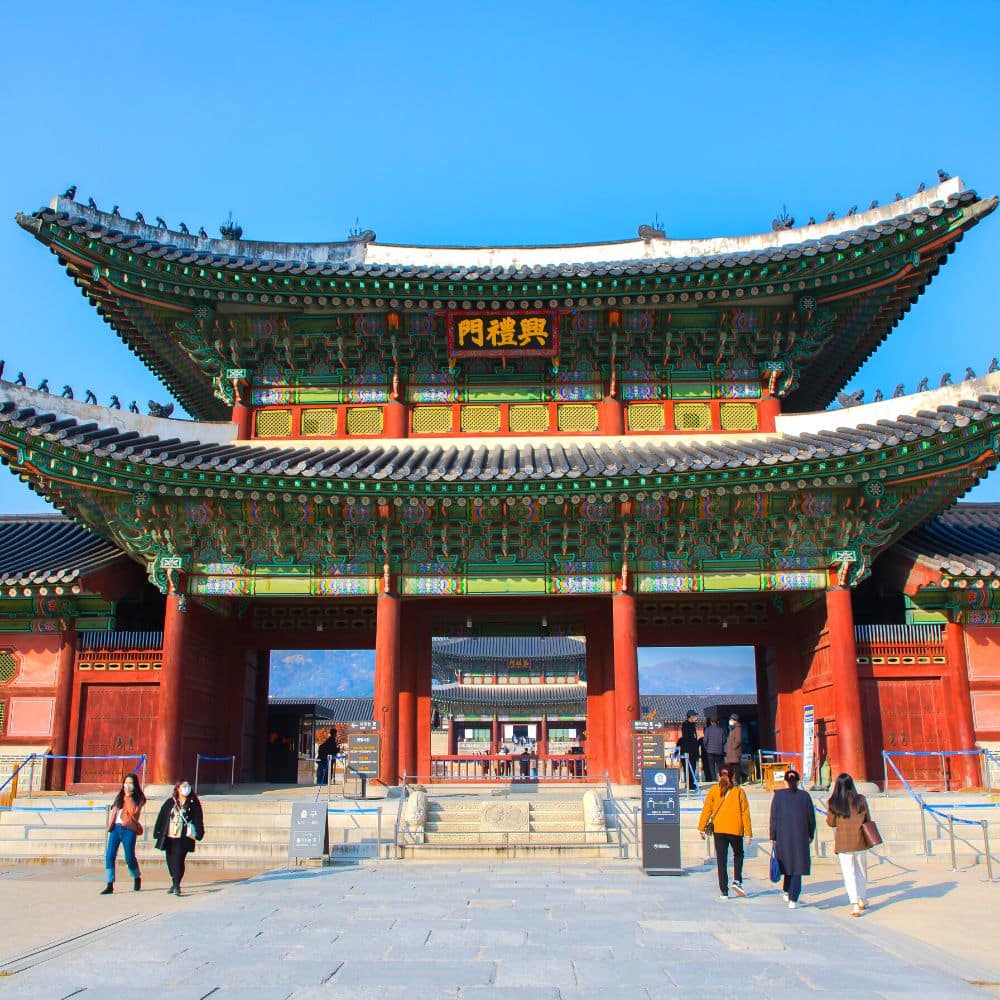
As mentioned earlier in this South Korea Travel Guide, buying a Discover Seoul Pass is a great way to save money on Seoul’s premium attractions.
- Royal Palaces – $3
- N Seoul Tower – $10
- Hanbok Rental – $10+
- Seoul City Tour Bus – $10
- Han River Cruise – $15 to $30
- Seoul Sky Observatory – $30 to $50
- Aquariums – $20 to $30
- Seoul Zoo & Seoul Grand Park $10
- Amusement Parks – $30 to $40
Flight costs depend on which airports you’re traveling from. A flight from Los Angeles to Incheon Airport (Korea’s main airport) costs around $1400 right now. Flight costs vary depending on the season and time of day.
Best of Korea recommends Skyscanner and Expedia for the best flight deals to Korea.

Why Travel To South Korea?
In recent years, travelers from around the world have been increasingly drawn to South Korea. The country is a must-see destination in Asia, with more than 17 million travelers in 2019. After reading this South Korea Travel Guide, you’ll understand what draws so many people to the Land of The Morning Calm, as Korea is also known.
There are myriad reasons why people visit Korea. Many come to experience life in a unique country, packed with historical and cultural sights that you won’t find elsewhere in the world. In the afternoon you can walk through a royal palace dressed in hanbok (traditional Korean clothes), sip green tea in a hanok (traditional Korean house), and pass Buddhist monks walking peacefully through an ancient temple.
Modern South Korean culture is conquering the world, with chart-topping acts that include BTS and Black Pink, Oscar-winning movies like Parasite, and phenomenally successful TV shows like Squid Game. This brings in legions of fans flocking to shooting locations and film sets to relive their favorite K-Culture moments. Some lucky travelers even get to catch sight of their favorite K-Stars walking around Gangnam, a hotspot for Korea’s most famous citizens.
Not only is Korea a beautiful country, it’s a country that will make you beautiful, with some of the world’s best fashion and beauty shops. Korea is famous for its K-Beauty products and is a beauty and fashion shoppers paradise. From the street fashions of Hongdae, to the luxurious fashion malls of Gangnam, and the wall-to-wall malls with discount clothes in Dongdaemun, you’re guaranteed to find something you can’t resist at a great price. If you prefer a cultural shopping experience, there are traditional markets all over Korea, where you can experience street food, buy novel gifts, and see how locals live and socialize.
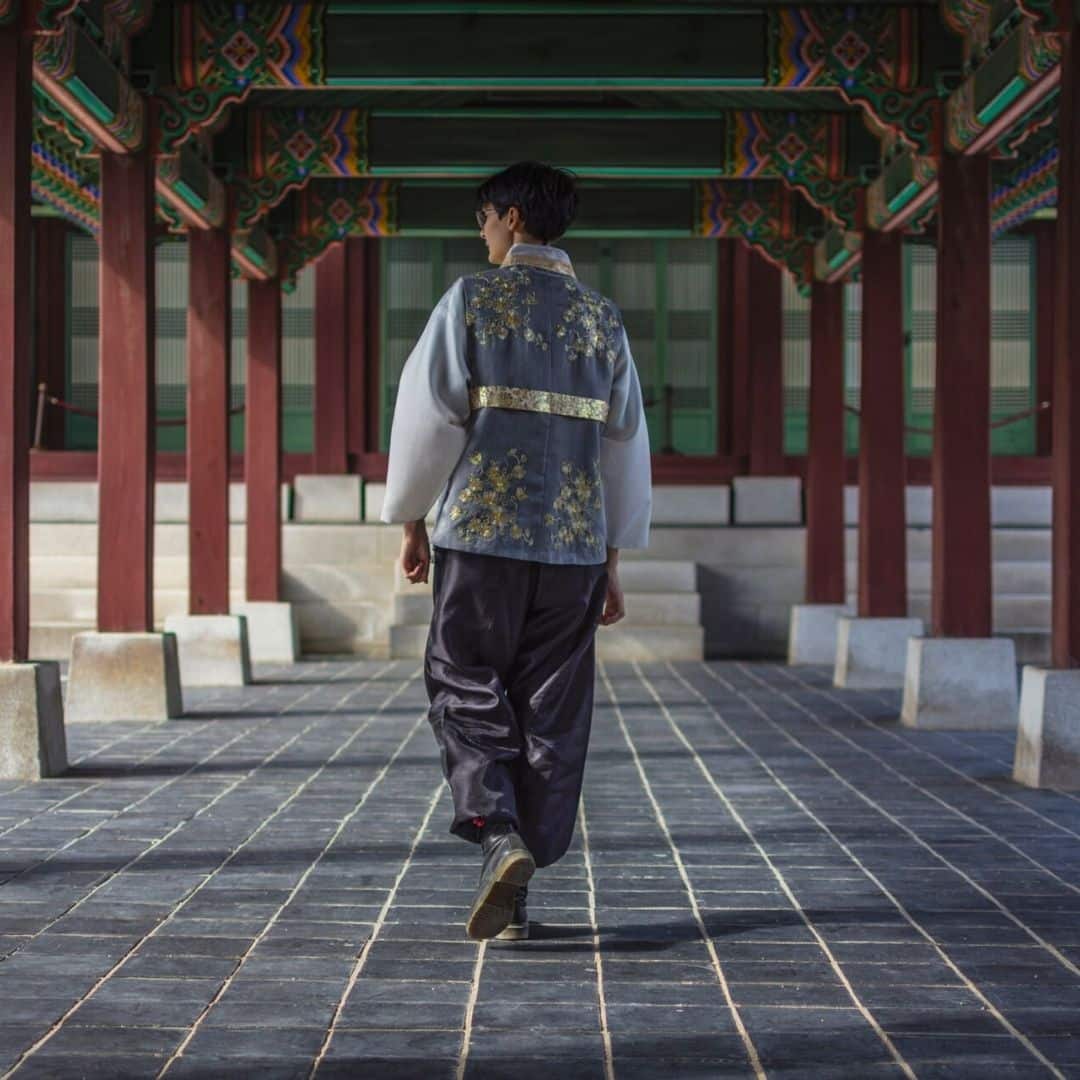
There’s so much more to South Korea than what you’ll find in the cities, however. South Korea, a country that’s 70% mountainous with coasts on three sides, offers so much to nature and adventure lovers. Hiking , South Korea’s national pastime, is a popular way to see more of the Korean countryside, looking down over rice fields, forested valleys, and pockets of urbanization. Skydiving, parasailing, scuba diving, water sports, cycling, rock climbing, white water rafting, and lots more are on offer and very reasonably priced. South Korea is a great place to enjoy the great outdoors.
The real jewel in South Korea’s natural crown, however, has to be Jeju Island – one of the New 7 Wonders of the Natural World. Explore lava caves, hike to the peak of the central dormant volcano (Hallasan Mountain), trek around the rugged coast, relax on a sandy beach in a modern cafe, and even try your hand at horse riding.
Whatever your reason to travel to South Korea, you’re sure to find more and more reasons to return again and again. Let this South Korea Travel Guide whet your appetite for your first trip, inspire you to plan a follow-up trip, and guide you to the best things to see and do in South Korea.
South Korea Travel Guide FAQs
Not sure about the South Korea travel restrictions and want to know more about visas, vaccinations, and what the rules are? This next section covers some of the most frequently asked questions about traveling to Korea now. If you have more questions that aren’t covered below, feel free to write to us on the Best of Korea Facebook page.
Do I need a visa to travel to South Korea?
US citizens and tourists from 111 other countries, including Canada and Mexico, don’t need a visa to travel to South Korea. The US government and South Korea have a visa-free travel arrangement and tourists can stay for up to 90 days.
What happens when I arrive in South Korea?
From May 2023 onwards, there are no forms to fill out as long as you have nothing to declare to customs. Travelers with nothing to declare can enjoy a hassle-free entry procedure by simply walking through the “Nothing to Declare” passage. Travelers who carry items that exceed the duty-free limit, foreign currency that exceed the value of US$10,000, or other items that require customs declaration must still fill out a declaration form and walk through the “Goods to Declare” passage.
Can I travel to Korea if I'm unvaccinated?
Yes, you can still travel to South Korea if you’re unvaccinated. South Korea no longer restricts travel based on vaccination status (as of October 2022).
LET'S GO TO KOREA
Best destinations in korea, where to stay in seoul, korean travel tips, things to see & do, travel itineraries for korea, korean season guide, cost to travel to korea, further costs to korea, why travel to korea now, south korea travel faqs, how to travel to korea.
Requirements To Travel To Korea
- For the best flight deals to South Korea, Best of Korea recommends Skyscanner and Expedia . You can find the cheapest prices and most convenient flights and buy the one that suits you best.
- For the best hotel prices in Seoul, Best of Korea recommends Klook 0r Agoda – they cover most hotels in Seoul and the rest of Korea and offer great prices without hidden fees.
- There are large differences in exchange rates so you will need to do some comparing before you exchange a large sum of money. You can exchange USD to KRW easily at banks or money exchange shops in all major tourist areas like central Seoul (Myeongdong and Namdaemun are good places but the Coex Center also offers money exchange. You can also negotiate the exchange rate with the vendor if you think it is too high.
- You can withdraw cash from bank ATMs. Alternatively, use a pre-paid travel card like the one offered by Wise , which allows ATM withdrawals and payments and works perfectly in Korea.
- Don’t forget to bring a travel adapter for your electronics and leave plenty of extra space in your suitcase for the many Korean souvenirs and goodies you’ll buy on your trip.
No, travelers from the USA don’t need a tourist visa to enter South Korea. You can visit for up to 90 days visa-free. However, you must apply for the K-ETA before traveling and upload your travel plans and hotel details.
Most COVID-19 rules in Korea have been dropped and now there are only 2 main rules to be aware of. First, face masks are mandatory when visiting medical facilities (hospitals). There is no longer a 7-day mandatory quarantine for people in South Korea. If you’re infected with COVID, the Korean government recommends a 5 day self-quarantine, but it’s not enforced. Travelers to Korea should follow the current restrictions or may be liable for fines or deportation.
Here are 6 of the best destinations in Korea that you absolutely must visit, as well as some of the sights you’ll want to check out while you’re there. We’ll be bringing you lots more detailed destination guides in the future, so be sure to visit again soon

This Full Day Tour of Seoul will show you some of the hottest spots in the city, while this Customized Private Tour of Seoul will allow you to choose where to go.

Winter is cold and dry and, ironically, a great time to visit Jeju Island. This semi-tropical island is warmer than the mainland, but still gets snow on the mighty Hallasan Mountain. You can sit on a sunny beach one day and then hike knee-deep in snow the next. Jeju is also famous for its citrus, with thousands of tangerine trees dropping their juicy fruits in early winter.

Korean Travel Tips
Korea is a unique country with a written language that looks nothing like English, interesting Korean Cultural And Etiquette Rules , and an always busy lifestyle. Travelers may be lost trying to do even the simplest things.
These essential Korean travel tips have been crafted by experienced travelers who love to save time and money. Only the best quality services and products are recommended here.
If you’re traveling to Korea, you’re almost certainly going to want to get access to the internet to help you navigate, translate Korean, or even book tickets to attractions. Korea has one of the world’s best mobile internet and the prices are very reasonable. 5G mobile internet services are available across the country and Korea was one of the first to get the super-fast service. You won’t have problems connecting with a sim card or WiFi router when you travel
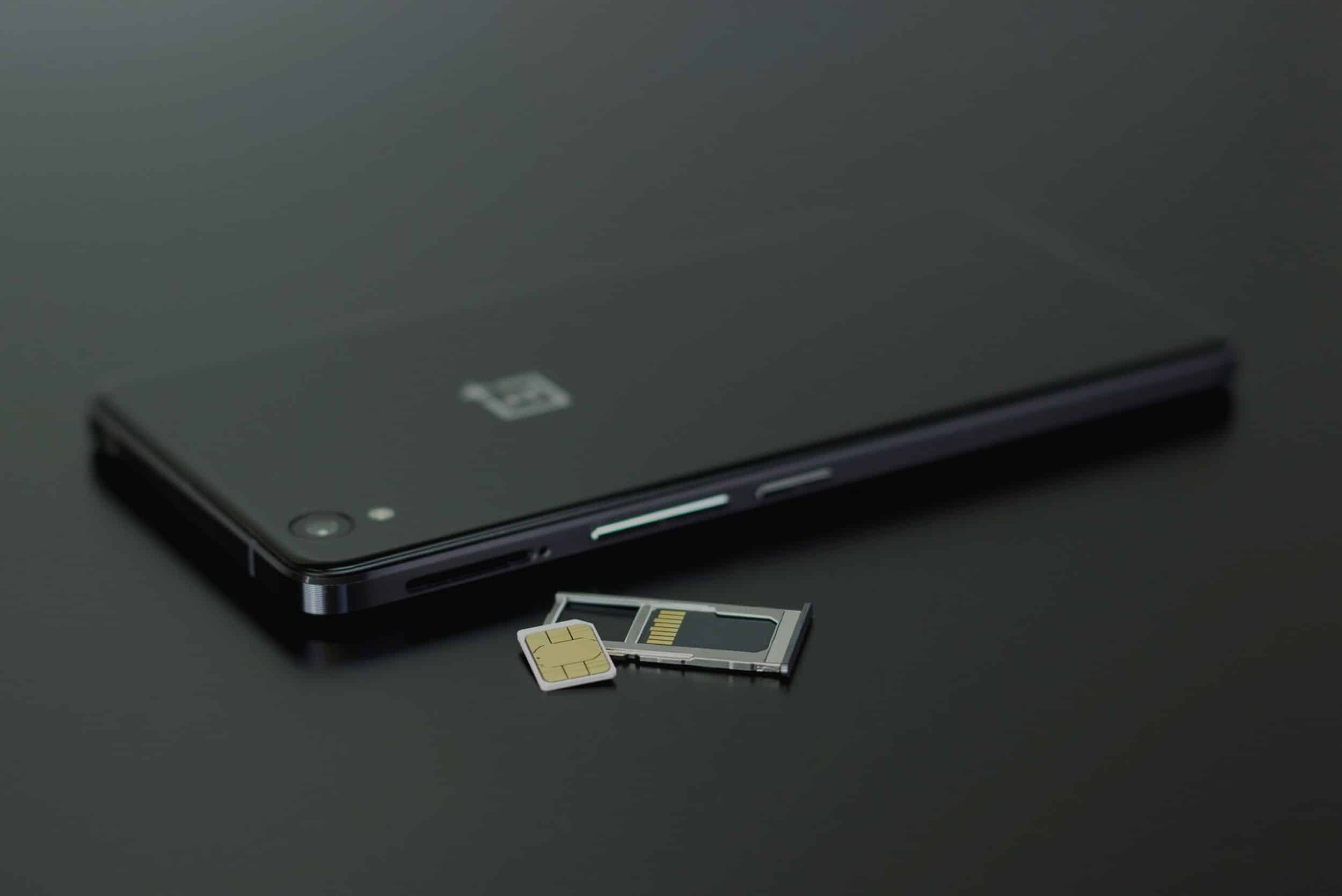
South Korea is a country packed with famous landmarks and sights, unique culture – modern & historical, family-fun activities, outdoor adventures, cozy cafe districts, and natural wonders. There’s more to do in Korea than you could imagine and it’s impossible to explore it all in one trip. Try to plan your itinerary by cities and locations. For example, plan your day in Seoul and stay by the district.
Here are some of the best things to see and do in South Korea, broken down into different themes so you can find things that interest you the most. The location of each of these attractions is included, too, so you can create a city-by-city itinerary, seeing the best South Korea has to offer.
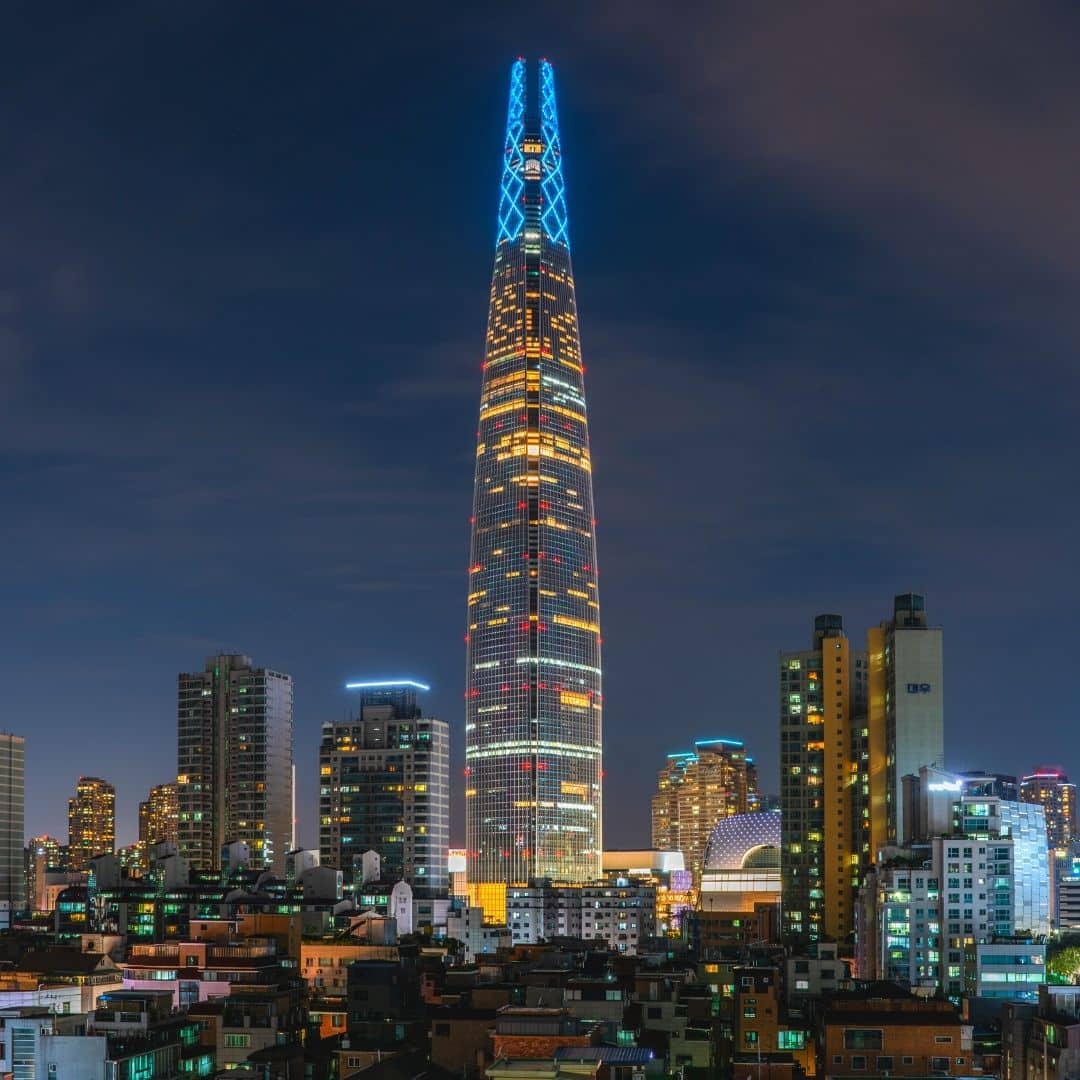
Any South Korea Travel Guide would be incomplete without thee top landmarks & famous areas in Korea. These unmissable Korean attractions offer some of the best sights in Korea, showing you Korean history, culture, design, and sense of humor.
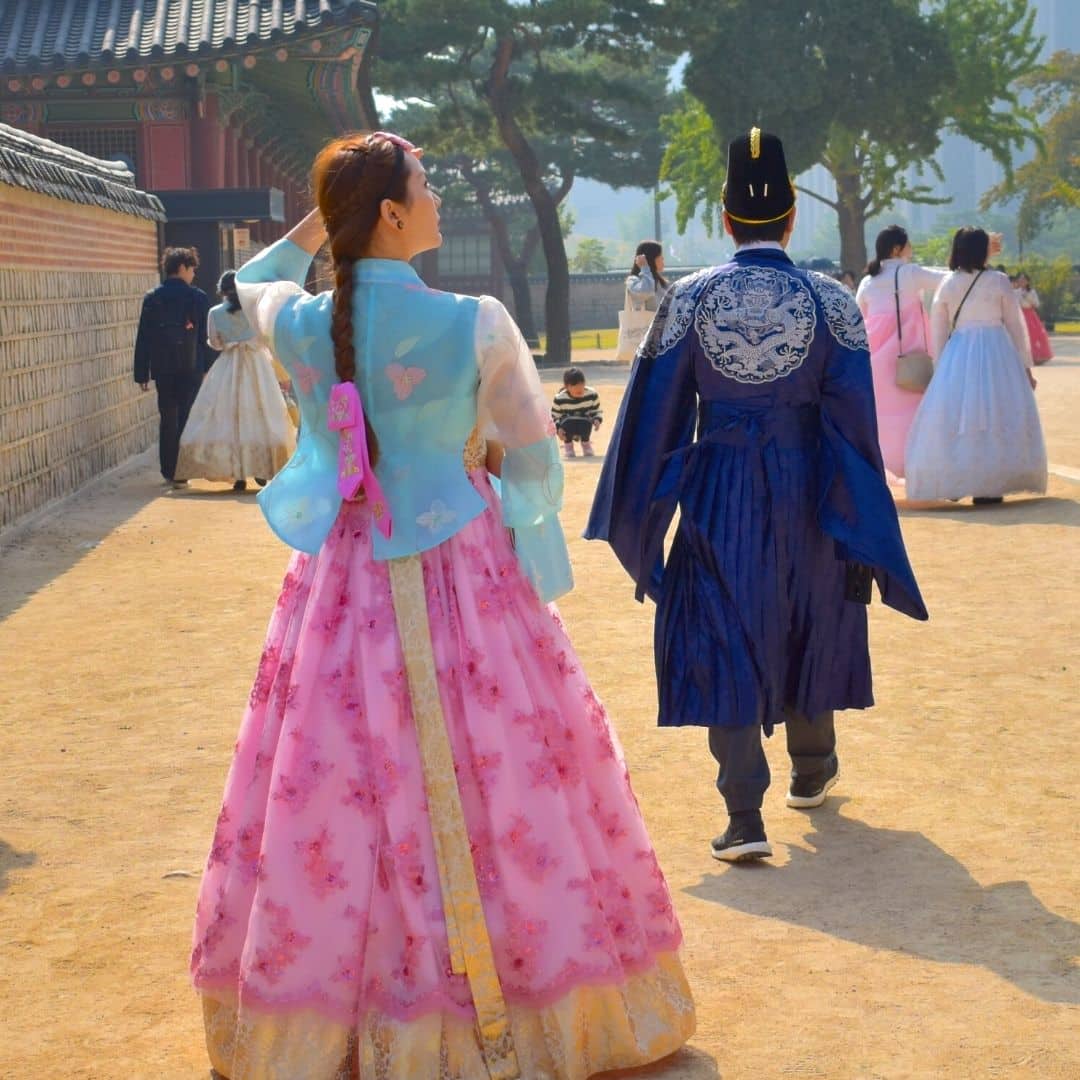
Learning about Korea’s past is not only enjoyable, it’ll also open your eyes to how modern Korean culture has evolved. Witness the majesty of grand palaces and the humble Buddhist temples and gain an insight into life in Korea with these fascination historical sights.

Are you a fan of Korean culture? Then check out these 10 modern K-Culture locations in Korea. Whether you’re ARMY or an arthouse cinema fan, you’ll love these sights. K-Drama fans, check out these K-Drama Filming Spots in Seoul .

If you’re traveling to Korea with your family, you don’t need to worry about the kids getting bored. There are plenty of family-fun attractions in Korea to keep them amused and to show them what Korea’s really like.

Culture lovers will find no shortage of places to learn about Korean, Asian, and world history & culture. Korea has a rich history and displays this through a range of museums. Learn about traditional life, Korean wars, the democracy struggles, and even kimchi .

Once a land of teahouses, Korea has now fully embraced coffee culture. Korea’s late-night culture makes cafes a great place to gather and chat. The rise of social media has also led to hundreds of insta-worthy cafes with photogenic decor, unusual coffee designs, and delicious desserts.

Many people travel to Korea just to shop, thanks to the low prices, haggling in the markets, and good quality items. From traditional markets to high-end designer goods, there’s somewhere to shop for everyone. Be sure to try authentic Korean street foods in the markets, too.

Korea is a country surrounded by sea on 3 sides and 70% mountainous, giving it a wealth of natural beauty. Besides Korean cherry blossoms , flowers, and fall foliage, there are sculpted gardens, shimmering ponds, riverside parks, and a volcano to see.

Morning : Explore Seoul’s historic royal palaces starting with Gyeongbokgung or Changdeokgung Palace in central Seoul. You get free entry if you’re wearing a Korean hanbok, so be sure to pick one up from the rental shops outside.
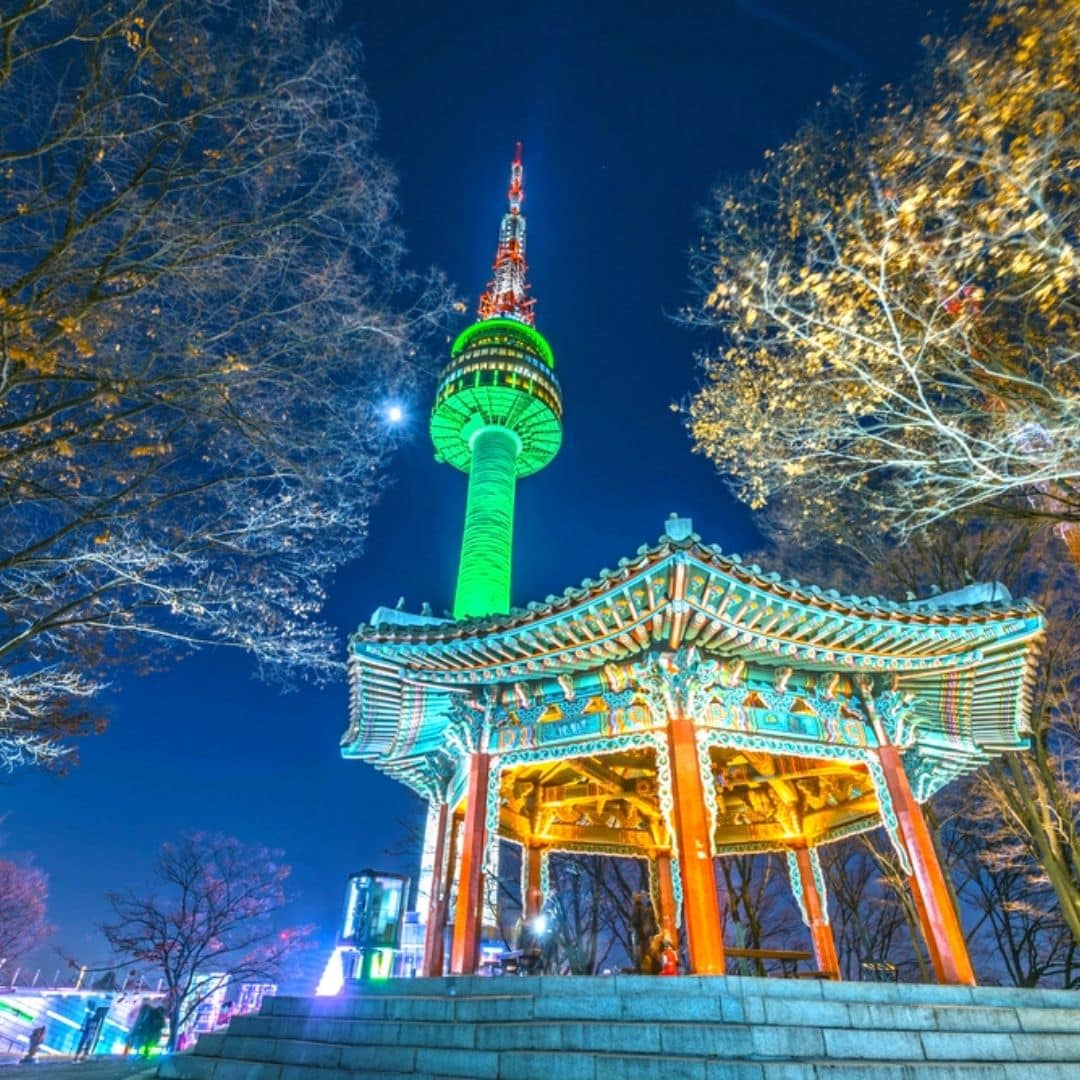
Morning : Learn about Korea’s history at the National Museum or War Memorial in Yeongsan. These fascinating museums have interactive exhibits and feature 1000’s of years of Korean history.

Morning : Take a day trip from Seoul to explore Gapyeong County. See the wonders of the Garden of Morning Calm and its idyllic nature. This is one of the most beautiful gardens in Korea.

Morning : Grab an early breakfast at Seoul Station and ride the high-speed KTX train directly to Seoul. It takes less than 4 hours and rides past rice fields, mountains, and the Korean countryside.

Morning : Take a day trip to the UNESCO World Heritage City of Gyeongju and roam the Gyeongju Historic Area. See Daereungwon Tomb Complex and Cheomseongdae Observatory.

Morning : Pack your bags and ride the KTX back to Seoul. Head to Hongdae for street food snacks or Michelin-starred delights in famous restaurants.
South Korea is a country that experiences four very distinct seasons, with temperatures ranging from 100 Fahrenheit in the summer to below 0 Fahrenheit in the winter. Each of South Korea’s seasons brings opportunities to see unique natural views and enjoy the different climates in Korea.

March to May

June To August

September to November

December to February
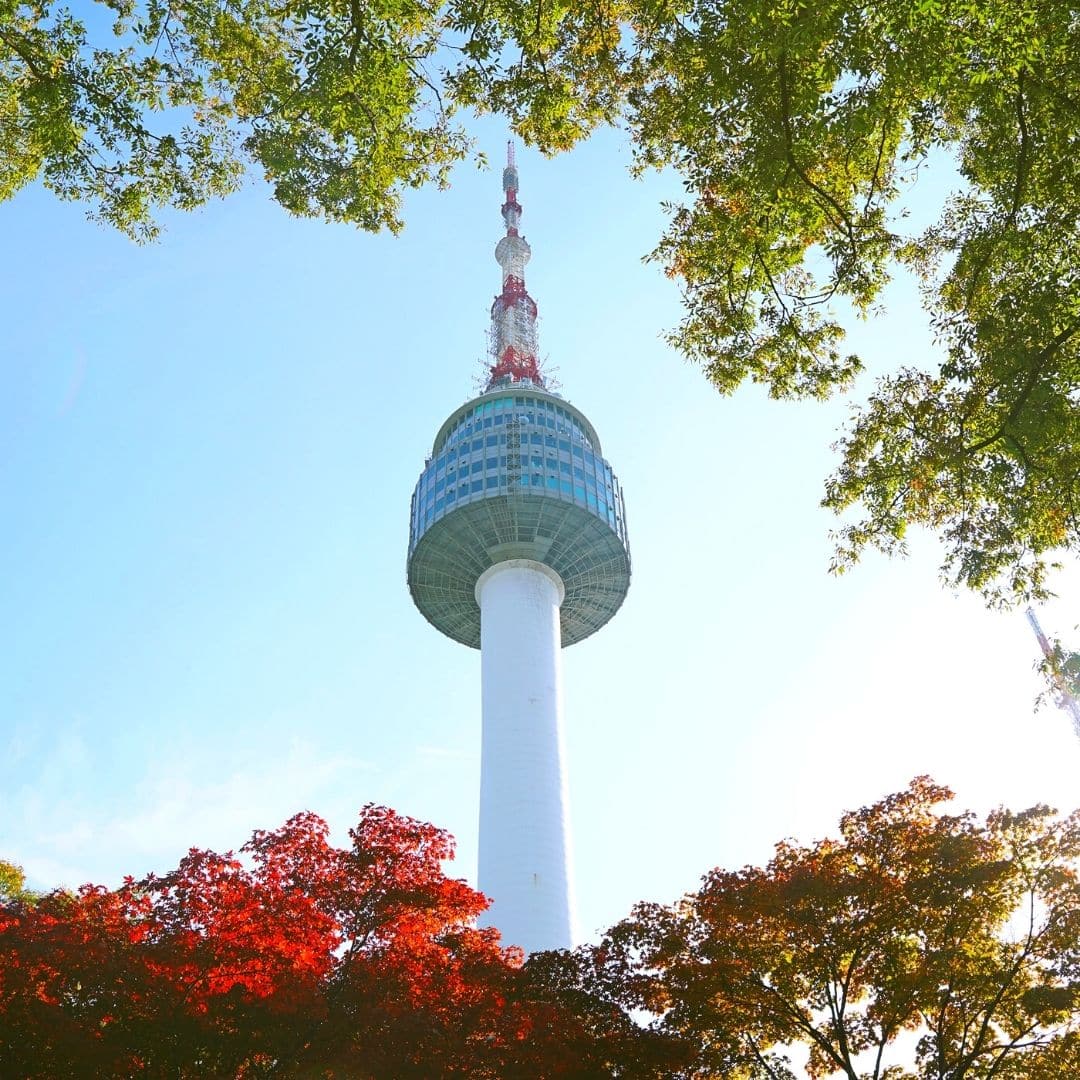
Korean Souvenir Costs
The best places to buy souvenirs in Korea are in the traditional markets and tourist areas. Insadong in Seoul has a lot of art and souvenir shops, as do the market streets around Bukchon Hanok Village. Hongdae offers lots of bargain snacks and souvenirs to take home.

Day Trip Costs From Seoul
A day trip from Seoul is a must to see a different side of Korea from what you’ll experience in the capital. Taking a day trip is a great chance to experience Korea’s countryside, nature, and hard-to-reach cultural attractions.

Korean Activity Costs
Seoul and other Korean cities have so much to offer to tourists. From historical palaces to exciting theme parks and attractions, it’s easy to have fun, explore, and discover more about Korea’s history.
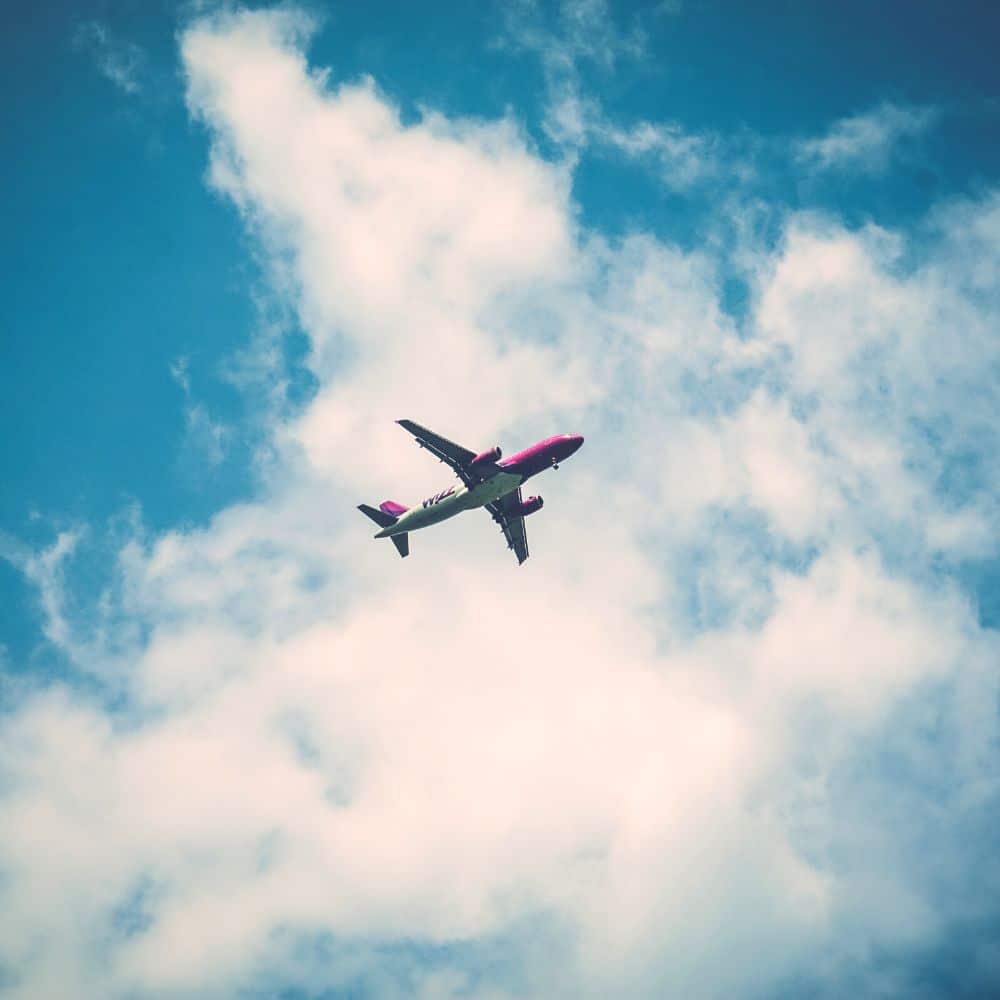
Flight Costs To Korea
Flight costs depend on which airports you’re traveling from. A flight from Los Angeles to Incheon Airport (Korea’s main airport) costs around $1370 right now. Flight costs vary depending on the season and time of day.
The cost to fly to Korea is more than twice the normal price right now. Fortunately, Korea ended the restrictions on the number of flights into the country from June 2022 and flight costs and availability should be improved in the near future.
There’s so much more to South Korea than what you’ll find in the cities, however. South Korea, a country that’s 70% mountainous with coasts on three sides, offers so much to nature and adventure lovers. Hiking, South Korea’s national pastime, is a popular way to see more of the Korean countryside, looking down over rice fields, forested valleys, and pockets of urbanization. Skydiving, parasailing, scuba diving, water sports, cycling, rock climbing, white water rafting, and lots more are on offer and very reasonably priced. South Korea is a great place to enjoy the great outdoors.
From September 2022 onwards it is no longer necessary to provide any vaccination status or take any PCR or RAT tests. A mandatory health check will be required, but this is only a simple form you can fill in on arrival.
What happens if I get a positive PCR result?
If you test positive for COVID-19 while in Korea, you will need to quarantine for 7 days at government facilities. Travelers who break the quarantine rules are subject to deportation or fines.
However, if a traveler (vaccinated or unvaccinated) tests positive for COVID-19 in Korea, they will have to self-quarantine until negative.
Welcome to Best of Korea!
Please Sign Up for Updates
We hate spam. You can unsubscribe anytime.

How To Say “Travel” In Korean
Last modified: May 31, 2024 | 7 min read | By Laura Toyryla
Today we will go over how to say “travel” in Korean . Raise your hand if you also love to travel! It wouldn’t be a surprise if many of you did, in fact, raise your hands just now; even if, in general, you may not be the biggest friend of travel, you’ve likely got some fun travel plans for South Korea cooking up.
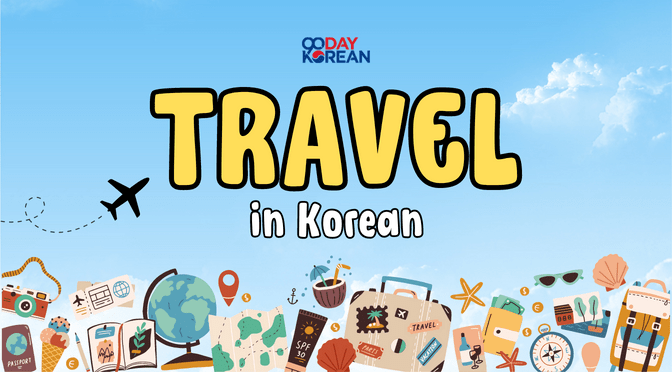
And since you’re already learning Korean, it’s only natural to then learn how to say travel in Korean – as well as all the vocabulary that goes along with it!
In this article, we’ll also teach you other related vocabulary, from transportation words to anything having to do with culture, for example. Once you have a hold of this vocabulary, you can have an exciting conversation with your Korean friends about your upcoming trips, be that to South Korea or elsewhere!
Read on for explanations, associations, and usage examples. Or just get the 80/20 below! If you want to learn more great Korean vocabulary with us , we’re happy to help!
- 1.1 “Travel” in Korean (Noun)
- 1.2 “Travel” in Korean (Verb)
- 2 Association for “Travel” in Korean
- 3.1 Vocabulary for types of travelers and travels in Korean
- 3.2 Vocabulary list for types of travels and travelers
- 3.3 Vocabulary for modes of transportation in Korean
- 3.4 Vocabulary list for transportation in Korean
- 3.5 Miscellaneous words related to travel
- 3.6 How to say “Have a nice trip” in Korean
- 4 A word of caution about Romanization
How to Say “Travel” in Korean
There are two ways to say “travel” in Korean, depending if you’ll use it as a noun or a verb . You’ll also find some sample sentences that can be of aid in learning how to use this vocabulary in Korean sentences.
“Travel” in Korean (Noun)
The word for how to say “travel” in Korean, as a noun, is 여행 (yeohaeng) .
일본에 벚꽃을 보러 가려면 여행하 기 위해 필요한 표와 호텔방 일찍 예약하세요. (ilbone beotkkocheul boreo garyeomyeon yeohaenghagi wihae pillyohan pyowa hotelbang iljjik yeyakaseyo.)
If you want to go see the cherry blossoms in Japan , you should book early everything you need for your trip.
여행 잘 다녀와요! (yeohaeng jal danyeowayo!)
Have a nice trip!
비행기에서 일등석을 타고 여행 을 다녀본 적 있어? (bihaenggieseo ildeungseogeul tago yeohaengeul danyeobon jeok isseo?)
Do you have experience traveling in the first class of an airplane?
다음에 언제 여행 떠나? (daeume eonje yeohaeng tteona?)
When do you next go travel?
여행 일정을 어떻게 짰어? (yeohaeng iljeongeul eotteoke jjasseo?)
How did you plan your trip?
난 지난주에 여행 에서 돌아왔어. (nan jinanjue yeohaengeseo dorawasseo.)
I came back from my trip last week.
여행 잘 다녀왔어? (yeohaeng jal danyeowasseo?)
How was your trip?
“Travel” in Korean (Verb)
“Travel” in Korean is typically used in its verb form, either as 여행하다 (yeohaenghada) , which translates simply to “to travel,” or as 여행 가다 (yeohaeng gada) , which has a meaning closer to “to go on a trip.”
You may also replace 하다 (hada) and 가다 (gada) with 다니다 (danida) and 돌아다니다 (doradanida).
Sample sentences:
어디로 여행 가요? (eodiro yeohaenggayo?)
Where are you traveling to?
여행 가는 것을 좋아해요? (yeohaeng ganeun geoseul joahaeyo?)
Do you like to travel?
대학교를 졸업하자마자 취직하기 전에 1년 동안 여행했 어. (daehakgyoreul joreopajamaja chwijikagi jeone ilnyeon dongan yeohaenghaesseo.)
As soon as I graduated from university, I traveled for one year before finding a job .
제 꿈은 세계 여행하 는 것이에요. (je kkumeun segyeyeohaenghaneun geosieyo.)
My dream is to travel around the world.
내일 여행 가니까 오늘은 일찍 잡시다. (naeil yeohaeng ganikka oneureun iljjik japsida.)
Since we’re traveling tomorrow, let’s sleep early today.
나는 국내 여행 갈 때마다 버스만 타요. (naneun gungnae yeohaeng gal ttaemada beoseuman tayo.)
I only travel by bus whenever I travel inside the country .
우리는 그 결혼식 위해 파리까지 여행 갔 어요. (urineun geu gyeolhonsik wihae parikkaji yeohaeng gasseoyo.)
We traveled all the way to Paris for that wedding.
Association for “Travel” in Korean
To remember how to say “travel” in Korean, we’ll create an English association for it. This can be any word, phrase, or image that helps you recall the Korean word and its meaning .
How to remember (association):
When I travel , I tell my friends, “ Yo , let’s hang “ . ( 여행 | yeohaeng )
*80/20 Pareto Principle – The 20% you should learn that will give you 80% of the results.
Essential vocabulary related to travel in Korean
Right away, let’s look at some vocabulary in relation to travel. For your convenience, we’ve divided them into separate categories.
Vocabulary for types of travelers and travels in Korean
Here we have a section for different types of trips you can take and a different type of traveler you can be. These can be incredibly handy when describing the type of travel you like to do or plan to do.
“Backpacker” in Korean
The word for “backpacker” in Korean is 백패커 (baekpaekeo). As you know, the word for “backpack” in Korean is 백팩 (baekpaek), so just like in English, the term for backpacker is directly derived from it. The word for hiker in Korean, on the other hand, is 등산객 (deungsangaek).
“Cruise” in Korean
The word for “cruise” in Korean is 크루즈 여행 (keurujeu yeohaeng). There are at least half a dozen different types of travelers that may go on a cruise. For example, for some, the below-mentioned luxury travel can mean a cruise around the Caribbean islands.
나는 크루즈를 타본 적이 없어요. (naneun keurujeureol tabon jeogi eopseoyo.)
I have never been on a cruise.
“Luxury travel” in Korean
The word for “luxury travel” in Korean is 호화 여행 (hohwa yeohaeng). There is no specific term for luxury traveler, but you can perhaps say it as 호화 여행객 (hohwa yeohaenggaek), as 여행객 means “traveler.”
“Tourist” in Korean
The word for “tourist” in Korean is 관광객 (gwangwanggaek). Alternatively, you may also opt to describe yourself as a traveler as opposed to tourist. As mentioned above, the word 여행객 means traveler. Another word for traveler in Korean is 여행자 (yeohaengja).
어떤 종류의 여행자예요? (eotteon jongnyuui yeohaengjayeyo?)
What kind of traveler are you?
Vocabulary list for types of travels and travelers
Vocabulary for modes of transportation in korean.
Previously, we have already covered extensively the vocabulary for car in Korean and train in Korean. In addition, we also have an article that’ll teach you all about using the bus in Korea ! Thus, in this section, we will shortly highlight some other types of transportation, although they may not be as commonly used in comparison.
“Ship” in Korean
The most common word for “ship” in Korean is 배 (bae). However, in some cases, different words may apply. For example, a mail steamer, which is a boat carrying post and mail, is called 우편선 (upyeonseon) in Korean. Meanwhile, a cruise ship, which is the type of ship you’d use during your travels, is called 유람선 (yuramseon). And the word for “ferry” in Korean is 연락선 (yeollakseon).
“Airport” in Korean
You can say “airport” in Korean as 공항 (gonghang). Here, you’ll be able to ride an airplane which is called 비행기 (bihaenggi) in Korean.
The word for “flight” in Korean is 비행 (bihaeng). The word for “domestic flight” is 국내선 (gungnaeseon), and for “international flight,” it is 국제선 (gukjeseon).
하와이에 정말 가고 싶은데 비행기 타는 게 무서워요. (hawaie jeongmal gago sipeunde bihaenggi taneun ge museowoyo.)
I want to go to Hawaii, but I’m scared to go on an airplane.
Vocabulary list for transportation in Korean
Miscellaneous words related to travel.
Here’s one more list of travel-related vocabulary that you may find useful. They may consider any area of travel.
“Passport” in Korean
The word for “passport” in Korean is 여권 (yeogwon). Never leave for the airport without it!
여권이 만료돼서 새로 만들어야 할 것 같아요. (yeogwoni mallyodwaeseo saero mandeureoya hal geot gatayo.)
Seems like my passport has expired, and I need to make a new one.
How to say “Have a nice trip” in Korean
If you have a friend or family that will be traveling soon, here’s how you can wish them a nice trip. Listen carefully to learn how to say this phrase correctly!

A word of caution about Romanization
While it is possible for you to study the words in this article simply by reading their Romanized versions, it will come in handy for you to be able to read Hangeul if you ever wish to come to Korea . Hangeul is the Korean alphabet, and not difficult to learn. In fact, you can learn it in just 90 minutes .
After you’ve familiarized yourself with Hangeul, life in Korea will suddenly seem so much easier, and the country won’t appear so foreign to you. So, if you’re serious about learning Korean, why not learn Hangeul today?
Here’s how you can learn Hangeul before you eat your next meal.
So, do you like to travel? What kind of traveler are you? Let us know below in the comments with the newly learned vocabulary! Next, let’s learn about the weather and seasons in Korean !
Related Posts

Korean Anki: A Great Tool for Learning Words
Last modified: Jul 12, 2024 | 6 min read | By 90 Day Korean

Stop Studying Korean for the TOPIK
Last modified: Sep 02, 2022 | 3 min read | By 90 Day Korean

Korean Onomatopoeia (의성어) – Animal sounds you will love
Last modified: Aug 22, 2024 | 3 min read | By 90 Day Korean
4 thoughts on “How To Say “Travel” In Korean”
What is the meaning of Yeohaengsa?
Hello! 여행사 means “travel agency.” ^^
How do you say ‘I was on tour’ since I’m a bit confused here. Also your website has been of so much help. 감사합니다! ????
Hi, It’s Me! You can say “저는 여행 중이었어요.” ^^
Leave a Comment Cancel Reply
Your email address will not be published. Required fields are marked *
Choose your skill level and start getting fast results with your Korean:


오사카 최고의 호텔 가이드: 일본의 활기찬 도시에서 최고의 숙소를 찾아보세요
현대와 일본 전통 문화가 조화를 이루는 도시 오사카에 오신 것을 환영합니다. 비즈니스, 레저, 문화 체험 등 어떤 목적으로 방문하든 적합한 숙소를 찾는 것이 여행의 성패를 좌우할 수 있습니다. 이 가이드를 통해 럭셔리 호텔부터 실속형 옵션까지 오사카의 완벽한 숙소를 찾아보세요.

오사카의 럭셔리 호텔
더 고급스러운 것을 원하신다면 오사카에는 특별한 숙박을 약속하는 수많은 럭셔리 호텔이 있습니다. 다음은 몇 가지 추천 항목입니다:
리츠칼튼 오사카
활기찬 우메다 지구의 중심부에 자리한 리츠칼튼 오사카는 세계적 수준의 편의시설, 고급 다이닝, 최고의 서비스로 잊을 수 없는 경험을 선사합니다. 이 호텔은 현대적인 고급스러움과 일본 전통의 미학이 완벽하게 조화를 이루고 있습니다.
인터컨티넨탈 호텔 오사카
우메다의 주요 지역에 위치한 인터컨티넨탈 호텔 오사카는 넓은 객실, 훌륭한 서비스, 숨막히는 도시 전망으로 유명합니다. 비즈니스 여행객과 레저 여행객 모두에게 완벽한 이 호텔은 다양한 프리미엄 편의 시설을 제공합니다.
세인트 레지스 오사카
세인트 레지스 오사카는 유명한 미도스지 애비뉴에 위치해 있습니다. 세련된 디자인과 탁월한 서비스로 유명한 이 호텔은 가장 안목 있는 여행객을 위한 고급스러운 숙박 시설을 제공합니다.

오사카의 저렴한 호텔
예산이 넉넉하지 않은 여행객은 편안함을 포기하지 않으면서도 합리적인 가격의 옵션을 많이 찾을 수 있습니다. 오사카에서 가장 저렴한 호텔을 소개합니다:
호텔 마이스테이 신사이바시
번화한 신사이바시 지역에 위치한 호텔 마이스테이는 합리적인 가격으로 편안한 숙박 시설을 제공합니다. 이 호텔은 편리한 위치와 친절한 서비스로 유명하여 예산에 민감한 여행객에게 좋은 선택입니다.
카오산 월드 난바
카오산 월드 난바는 배낭 여행객과 나홀로 여행객을 위해 난바 중심부에 위치한 저렴한 가격의 기숙사 및 개인 객실을 제공합니다. 호스텔은 활기찬 분위기, 공용 공간, 인기 명소로의 쉬운 접근성을 갖추고 있습니다.
APA 호텔 오사카 히고바시 에키마에
APA 호텔 오사카 히고바시 에키마에에서는 필요한 모든 기본 편의시설을 갖춘 가성비 좋은 숙박 시설을 제공합니다. 히고바시역 근처에 위치한 이 호텔은 합리적인 가격으로 편리함과 편안함을 약속합니다.
오사카는 모든 유형의 여행객을 위한 숙소를 제공합니다. 리츠칼튼과 인터컨티넨탈 호텔의 럭셔리한 숙박 시설부터 호텔 마이스테이 신사이바시, 카오산 월드 난바 같은 저렴한 숙박 시설까지, 도쿄의 환대 업계는 활기차고 다양합니다.
You may also like

코티지 홋카이도의 숨겨진 매력을 발견하세요: 일본의 매혹적인 북부 탈출을 위한 최고의 여행 가이드

라용 보타니컬 가든의 자연의 경이로움 탐험하기: 라용의 숨겨진 보석에 대한 종합 여행 가이드
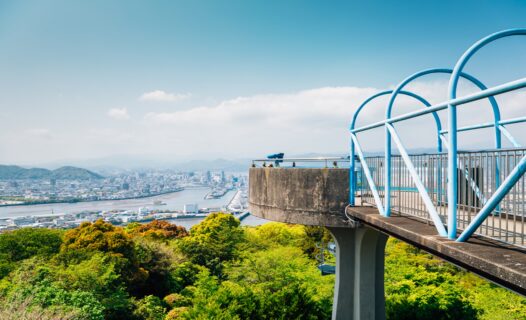
고치에서 오사카로 가는 버스를 타는 최고의 여행 가이드: 노선, 팁, 꼭 들러야 할 명소

푸켓을 공개합니다: 섬에서 꼭 가봐야 할 관광 명소와 숨겨진 보석 가이드

홋카이도에서 휴식을 취하세요: 잊을 수 없는 일본 휴양지를 위한 최고의 호텔 추천
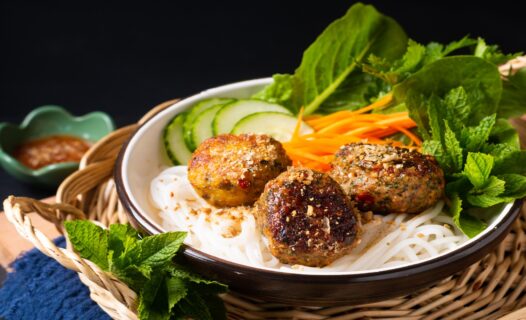
달랏을 음미하기: 달랏의 독특한 요리 특선과 즐거움에 대한 완벽한 가이드

부산에서 제주까지: 페리 탑승에 대해 알아야 할 모든 것

도쿄에서만 경험할 수 있는 독특한 체험: 숨겨진 보석 여행 가이드

보물 발견하기: 후아힌과 차암에서 기념품 쇼핑을 위한 최고의 가이드

뉴델리와 NCR의 불가사의를 공개합니다: 완벽한 3일 일정

선전 탐험하기: 잊을 수 없는 여행을 위한 최고의 명소와 숨겨진 보석

방콕 탐험하기: 더 스탠다드, 방콕에 대한 종합 가이드
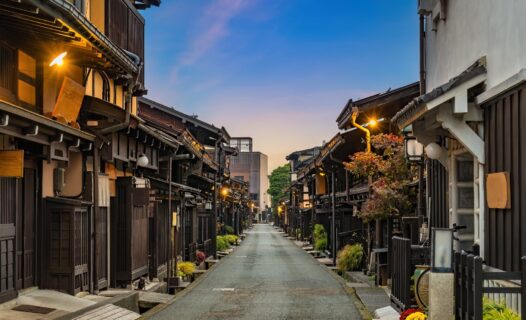
다카야마 탐험하기: 놓칠 수 없는 액티비티와 숨겨진 보석에 대한 종합 가이드

오사카 탐험: 주짓수 카이센 팬을 위한 유니버설 스튜디오 재팬 최고의 여행 가이드

필리핀의 마법을 공개합니다: 최고의 여행 가이드
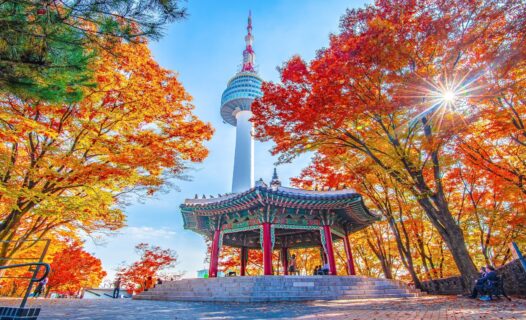
한국에서의 7일 일정: 최고의 국내 여행지 둘러보기

로마의 불가사의를 발견하세요: 꼭 방문해야 할 최고의 명소와 숨겨진 보석
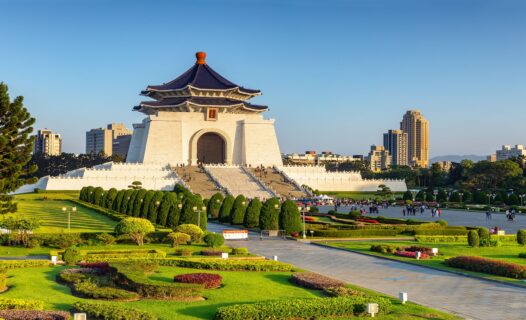
타이베이의 야간 불가사의: 해가 진 후 최고의 명소 탐험하기

말레이시아에서 꼭 사야 할 기념품: 여행자를 위한 진정한 기념품 가이드

조슈아 트리 살펴보기: 캘리포니아 사막 오아시스에서 모험과 평온을 만끽하는 궁극의 가이드
평온함을 발견하세요: 하코다테 유노카와 온천 종합 여행 가이드.

종합적인 여행 가이드를 통해 코티지 홋카이도의 매력을 발견해 보세요. 잊지 못할 여행을 위한 명소, 숙박 시설, 현지 음식, 여행 팁을 알아보세요.

라용의 숨겨진 보석, 보타니컬 가든 라용의 경이로움을 발견하세요. 이 아름다운 여행지를 방문하기 위한 최고의 명소, 액티비티 및 팁을 살펴보세요.

고치에서 오사카까지 가는 최적의 버스 경로와 시간표, 팁을 알아보세요. 종합 가이드로 여행 계획을 세우세요.

완벽한 여행 가이드를 통해 푸켓 최고의 관광 명소를 둘러보세요. 숨겨진 보석과 최고의 명소, 기억에 남는 여행을 위한 실용적인 팁을 알아보세요.

럭셔리한 숙박부터 실속형 옵션까지 엄선한 홋카이도 최고의 호텔 리스트를 살펴보세요. 모험, 휴식, 낭만 등 모든 여행객에게 완벽한 숙소입니다.

베트남 달랏의 독특한 미식의 즐거움을 발견해 보세요. 달랏의 전통 요리, 길거리 음식, 현지 시장, 최고의 레스토랑을 둘러보세요.

부산에서 제주까지 페리로 여행하는 일정, 팁, 꼭 가봐야 할 여행지 등 페리 여행에 대한 최고의 가이드를 살펴보세요.

자세한 여행 가이드를 통해 도쿄에서만 만날 수 있는 특별한 경험과 숨겨진 보석 같은 명소를 발견해보세요. 독특한 카페부터 유적지까지 일본 수도의 활기찬 문화에 흠뻑 빠져보세요.

후아힌과 차암에서 독특하고 전통적인 기념품을 쇼핑할 수 있는 최고의 장소를 찾아보세요. 현지 공예품부터 해변가 시장까지, 이 가이드는 모든 것을 다룹니다.

3일간의 포괄적인 일정을 통해 뉴델리와 NCR의 상징적인 랜드마크, 숨겨진 보석, 문화 명소, 미식의 즐거움을 발견하세요.

종합적인 여행 가이드를 통해 선전의 인기 명소와 숨겨진 보석을 발견해보세요. 문화 유적지부터 놀이공원까지, 선전에서 꼭 가봐야 할 최고의 명소를 찾아보세요.

럭셔리, 편안함, 편리함을 모두 갖춘 최고의 여행지, 방콕 마하나콘 더 스탠다드를 만나보세요. 명소와 식사 옵션 등 이 상징적인 호텔 숙박에 대해 알아야 할 모든 것을 상세히 안내해 드립니다.

일본 다카야마에서 최고의 가볼만한 곳을 알아보세요. 최고의 관광 명소, 문화 체험, 현지 요리 등을 소개하는 종합 가이드입니다.

오사카 우니바 여행 가이드와 함께 주짓수 카이센의 세계로 빠져보세요. 애니메이션 명소, 팬 명소, 관광 팁 등을 알아보세요!

필리핀에서 최고의 경험을 할 수 있는 최고의 여행 가이드를 만나보세요. 자세한 가이드와 함께 멋진 해변, 활기찬 도시, 풍부한 문화를 탐험해 보세요.

한국을 여행하는 최고의 7일 일정에 대해 알아보세요! 서울의 활기찬 문화부터 제주도의 자연 경관, 부산의 해안가 매력까지. 지금 여행을 계획하세요!

로마의 상징적인 랜드마크부터 숨겨진 명소까지 로마에서 즐길 수 있는 최고의 즐길 거리를 살펴보세요. 최고의 명소, 숨겨진 보물, 잊지 못할 추억을 선사할 여행 팁을 소개합니다.

타이베이의 활기찬 밤문화를 탐험하며 해가 진 후 최고의 명소를 소개하는 궁극의 가이드를 만나보세요. 북적이는 야시장부터 루프탑 바까지, 타이베이를 밤에 꼭 방문해야 하는 이유를 알아보세요.

말레이시아에서 꼭 가져가야 할 기념품에 대해 알아보세요. 여행 가이드에서 진품 기념품과 기념품을 찾을 수 있는 곳을 소개합니다.

조슈아 트리 국립공원을 방문하기 위한 최고의 액티비티, 명소, 여행 팁을 알아보세요. 하이킹 코스부터 별 관측 명소까지, 캘리포니아 사막의 오아시스에서 최고의 모험을 계획해 보세요.

하코다테 유노카와 온천의 고요한 아름다움에 빠져보세요. 이 가이드는 명소부터 온천 에티켓까지 모든 것을 다루고 있어 기억에 남는 방문이 될 것입니다.
Last Updated: September 12, 2024


IMAGES
VIDEO
COMMENTS
Understanding These Basic Korean Phrases. 1: Essential Korean Phrases. 2: Korean Phrases For Greeting People. 3: Korean Phrases For Dining Out. 4: Korean Phrases For Transportation. 5: Korean Phrases For Shopping. 6: Korean Phrases For Emergencies. 7: How To Say Korean Numbers. Learning Korean At Home.
Korean Travel Phrases. Pack your bags! We're hitting the road and going to put some of our Korean language skills to good use. Use these Korean travel phrases to help you speak with anyone you meet as you take trips throughout Korea. These travel survival phrases will help you have a fun and comfortable stay in South Korea.
Korean Language, Travel, Travel Tips. Getting around Korea these days is pretty easy - even if you know now Korean at all. There is a large amount of English signage, most menus have English captions, and many locals know at least basic English. It's entirely possible to visit Korea without knowing any Korean.
100+ Korean Travel Phrases. One often-overlooked aspect of preparing for travel is learning a bit of the local language. While English will get you quite far in South Korea (especially in the bigger cities), nothing can replace learning a little Korean to get around. It can make things easier for you, and the natives will appreciate the effort!
Korean people will definitely appreciate your attempt to communicate in their language. If you know some basic traveling phrases, it shows respect for Korean culture. So, whether you're planning to take a trip to South Korea or even if you're just curious about Korean culture , use our list of 101 basic Korean phrases to improve you Korean ...
Korean Phrases for Travel. Use these survival Korean phrases and questions to help you navigate around the cities in South Korea. ... The 이 (i) is a particle that is commonly used in the Korean language, but you can omit it if you'd like. It is optional and can make learning this phrase a bit simpler.
Get ready for your Korea trip with our Korean Language 101 guide! Learn essential phrases and impress locals. Start speaking like a pro today! ... In conclusion, mastering basic Korean phrases can greatly enhance one's travel experience in South Korea. From greetings and introductions to ordering food and navigating transportation, knowing ...
As the Hallyu effect has taken over the world, it's no surprise that South Korea is on the travel radar of many. ... For travellers in Korea unfamiliar with the language, using either the polite or formal form of communication is generally acceptable. Korean for travellers: List of essential Korean phrases. Image credit: Craig Rohn/Flickr.
80 Korean Travel words and Phrases to brush up on your language skills. February 5, 2021. Smriti. It has always been believed that language is the most influential way to pervade native's hearts with your respect and care towards their culture. Mother tongue instinctively softens one's perspectives and makes them believe that the other ...
Hit the ground running in South Korea with our Travel Phrasebook App, including basic vocabulary, essential phrases and 40+ helpful audio sentences. EN Contact ... Upgrade to the expanded version to add more than 550 Korean phrases and a new 17-minute language lesson. Haven't decided on a destination yet? We've got 25 other phrasebooks to keep ...
These 30 Korean phrases are a great place to start -- and they're essential if you want to speak Korean. ... Language: Korean. Reading time: 12 minutes Published: Sep 18, 2020 Updated: Sep 17, 2021 SHARE. 30 Korean Phrases for Beginners and Travelers. ... It's amazing what doors open when you learn a few essential travel phrases.
The Korean language is like a beautifully wrapped gift, complex yet fascinating. It comes with different speech levels - formal, polite casual, and casual. ... Korean Culture, Korean Language, South Korea, Travel Tips. You'll Also Love. A Guide to Pedra Bonita: A Trail in Rio for Everyone. Brazilian Culture: 18 Inside Tips for Visitors ...
This phrase means "Please take me to ~.". This travel phrase is the most effective and simple phrase to tell your taxi driver. Simply add the destination that you want to reach, such as " Insadong " (인사동; insadong) or " Dongdaemun " (동대문; dongdaemun) etc., followed by 으로 가주세요. (~euro gajuseyo.). That's it.
Mastering these easy conversational Korean phrases will undoubtedly take your travel experience to new heights. Plus, it will help you connect with locals on a deeper level. With these essential Korean words in your linguistic arsenal, you'll be well on your way to embracing and enjoying Korea's rich culture and warmth.
Use Annyeonghi gaseyo (안녕히 가세요) when saying goodbye to the person leaving. But if you are the one leaving, you should say Annyeonghi gyeseyo (안녕히 계세요) instead. 19. "Juseyo" (주세요) = "Please". Use this Korean word when you ask for a favor or say please. 20. "Jwesonghamnida" (죄송합니다) = "Sorry".
These 6 different sections are as follows: Table of Contents. 1: Basic Korean Words & Phrases. 2: Greetings and Introduction. 3: Korean Words when Dining. 4: Korean words for Navigating around. 5: Korean Phrases to Help You when shopping In Korea's Markets. 6: Emergencies - Essential Korean Phrases When In Need.
Before you flex your passport and head off on an epic vacation, here are eight phrases to help you once you land! 감사합니다. Romanization: gam-sa-ham-ni-da. Translation: Thank you. If you're traveling to another country, thank people like your mother is watching. Respect is frequently shown through language in Korean, so it's best to ...
Go right. oreunjjoge gaseyo. 오른쪽에 가세요. Go straight. jjuk gaseyo. 쭉 가세요. Moving around by Taxi is also common as fares are low, easy to find and drivers are usually friendly. Learning a few taxi-related Korean conversational phrases will make your trip smoother. English.
Korean phrases are very easy to learn. The Korean language is surprisingly easy to learn, but for those looking for a quick guide to Korean phrases to know, SEOULSPACE has just the infographic for you.These ten phrases are pretty much all you need to know if you are traveling to Korea for a short period of time.It will only take about 1-2 hours to fully memorize these Korean phrases.
Korean Seasons Guide. The best time to visit South Korea is during the warm spring or fall seasons. The weather is mild and clear, there's a range of festivals and seasonal activities to enjoy, and you can travel to Korea comfortably. The best months to visit are April, May, September, and October.
Learn languages by playing a game. It's 100% free, fun, and scientifically proven to work. With our free mobile app and web, everyone can Duolingo. Learn Korean with bite-size lessons based on science. Get started Login. Learn Korean in just 5 minutes a day. For free. Get started I ALREADY HAVE AN ACCOUNT. The world's most popular way to learn ...
1 How to Say "Travel" in Korean. 1.1 "Travel" in Korean (Noun) 1.2 "Travel" in Korean (Verb) 2 Association for "Travel" in Korean; 3 Essential vocabulary related to travel in Korean. 3.1 Vocabulary for types of travelers and travels in Korean; 3.2 Vocabulary list for types of travels and travelers; 3.3 Vocabulary for modes of ...
Do you think that the content guide will be helpful for people interested in Korea? #0 Hello, Korea! - essential apps to travel Korea, and guide for using them. - What to do if your flight is delayed in Incheon Airport. #1 Transportation. - Greeting with taxi drivers (안녕하세요, 감사합니다), and convenient ways to call a taxi. - Bus ...
오사카 최고의 호텔에 대한 자세한 추천과 함께 최고의 가이드를 살펴보세요. 럭셔리, 실속형, 가족 친화적, 독특한 숙박시설 등 일본의 활기찬 도시에서 최고의 숙소를 찾아보세요.